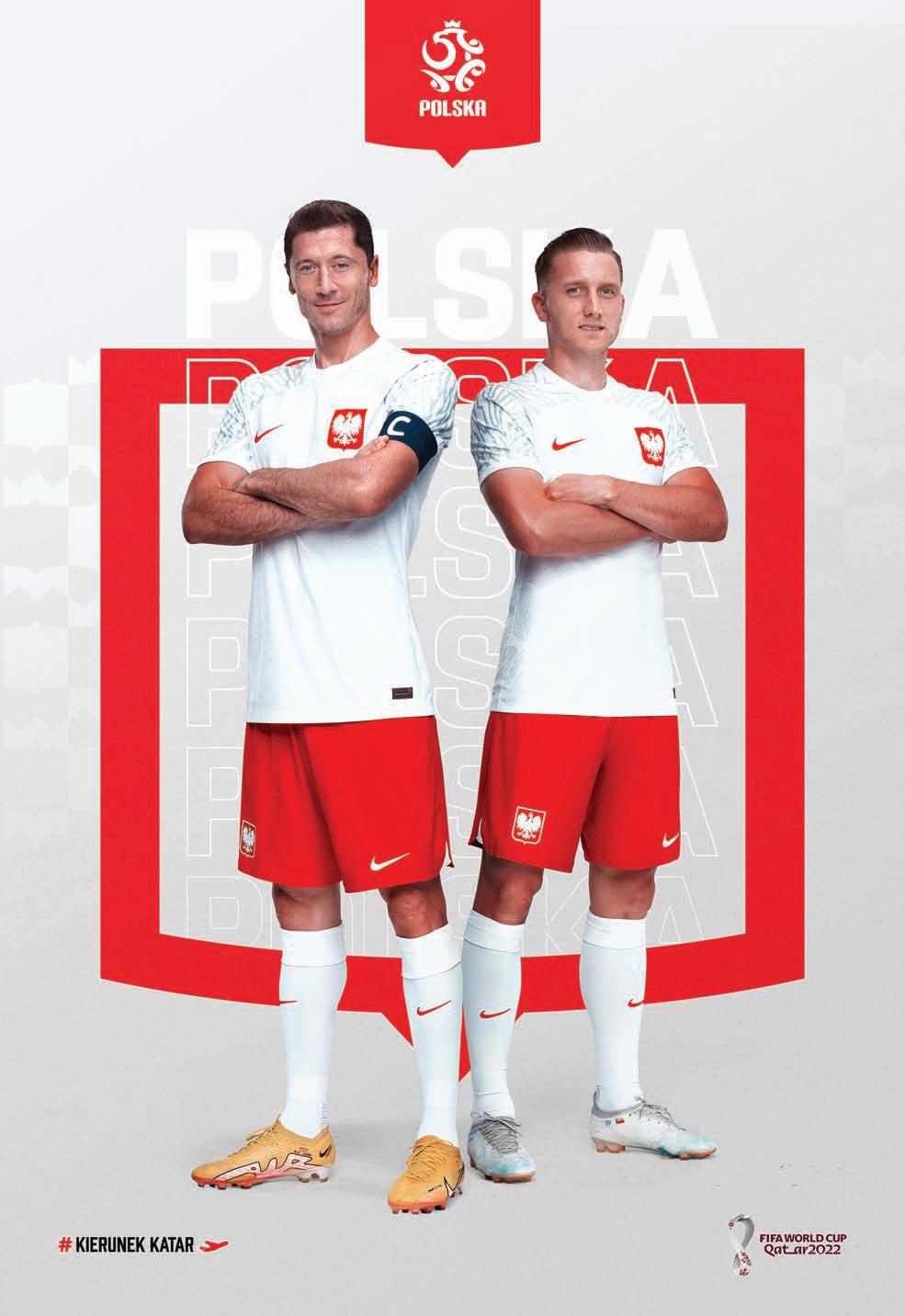
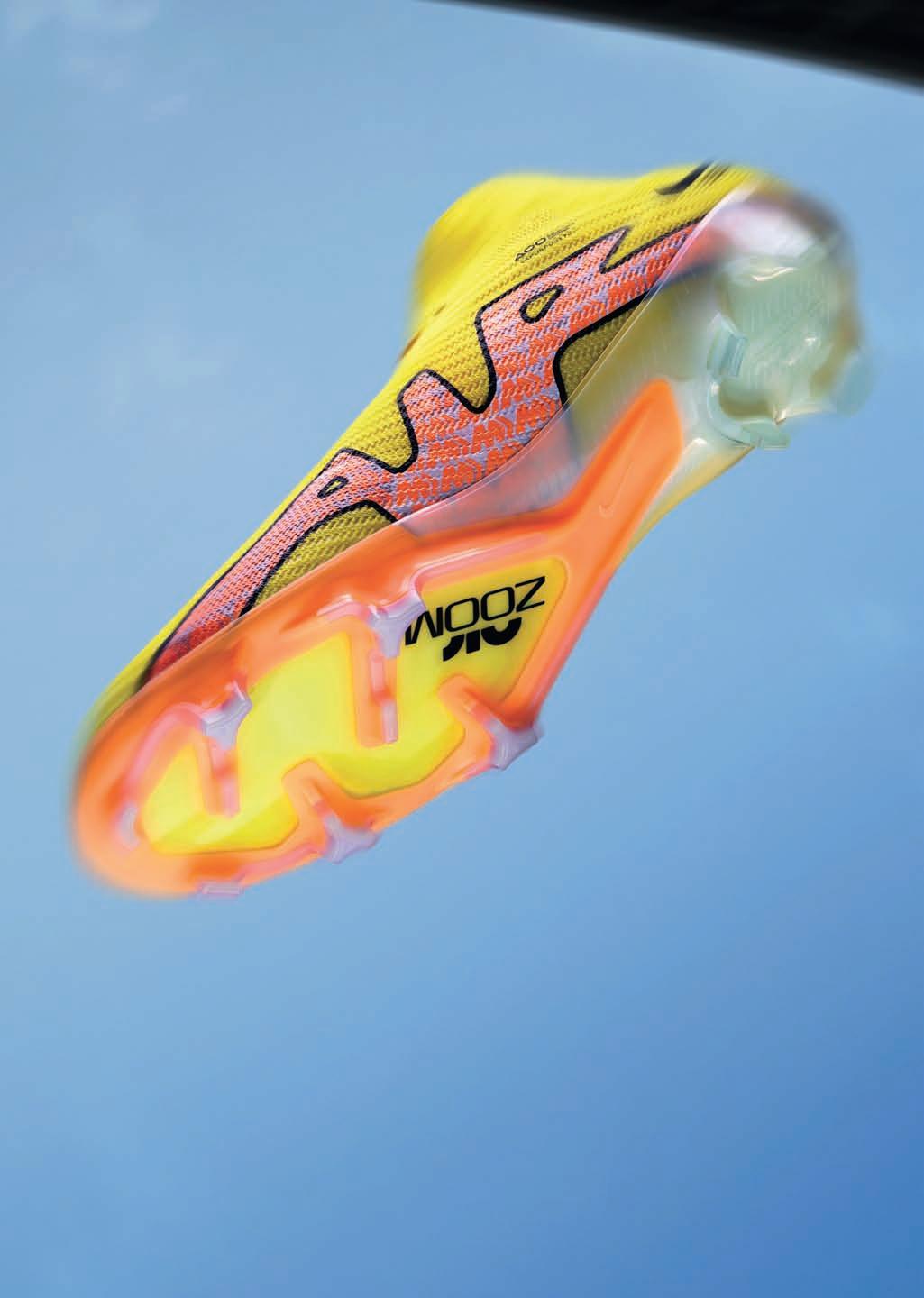













































We will soon be celebrating a great football event – the final tournament of the 2022 World Cup. At this point, we can already be sure of one thing: the World Cup in Qatar will be special and will make history. This is be cause the tournament will be played at an atypical time of year, in November and December. It was not preceded by any preparations; the players came to the training camp straight from this year’s last matches they played in their clubs. I am certain that head co ach Czesław Michniewicz, together with his staff, has prepared an optimal play plan for the World Cup. During the play-off against Sweden at the Silesia Stadium in Chorzów, the head coach has already proven himself to be an excellent tactician. He then managed to keep the national team in the highest tier of the Nations Le ague, which opened a chance for us to be drawn from the first pot in the UEFA Euro 2024 qualifying tourna ment, allowing us to avoid the most dangerous rivals on our road to the final tournament in Germany. Now, we are focused only on the World Cup.
Polish Football Association
Bitwy Warszawskiej 1920 r. 7 Warszawa 02-366
T: +48 732 122 222 F: +48 (22) 55 12 240 E-mail: pzpn@pzpn.pl www.pzpn.pl; www.laczynaspilka.pl
In the 21st century, we played in the World Cup three times, but we were unable to advance to the knoc kout stage even once. It’s time to change this! We have a good squad; several of our players are in top form and play for world-famous clubs, such as FC Barcelona or Juventus FC. We have reasons to be lieve that we can achieve a solid result, which me ans making it past the group stage. Within our gro up, we will be facing Mexico, Saudi Arabia and Argen tina. It is a very interesting mix. We remain humble, but fear no one. We will be playing in Qatar with no complexes; we are ready for battle. This is the World Cup – every match will be very important for us. We will need to give every game our all.
I hope that this very atypical World Cup period will give us plenty of reasons to feel joy and pride in the performance of the Polish national team. Let us support the White and Reds in their fight for vic tory! United by football!
Cezary Kulesza
President of the Polish Football Association
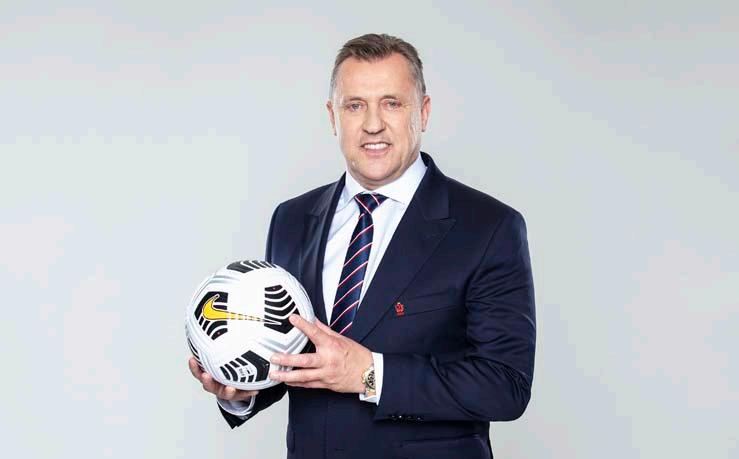
Editorial office: Paweł Drażba, Emil Kopański, Jacek Janczewski, Andrzej Klemba, Piotr Wiśniewski, Tadeusz Danisz, Rafał Cepko, Szymon Tomasik, Rafał Byrski, Krzysztof Jaśniok, Piotr Kuczkowski, Adrian Woźniak, Jaromir Kruk. Cover design: Kamil Namysło. Graphic design studio: Piotr Przychodzeń, Iwona Polok, Michał Kołodziej. Photographs: Archiwum PZPN, Łukasz Grochala, Cyfrasport, Paula Duda, 400mm.pl, East News, PAP. Translations: GROY Translations.
Printing house: Copy General.
FIFA WORLD CUP I QATAR 2022 3
@Laczy nas pilka
Dear Fans!
POLISH NATIONAL TEAM
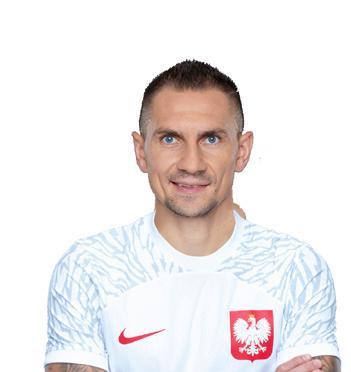
Kamil Grabara 08.01.1999 FC Kopenhaga 1/0 Goalkeeper
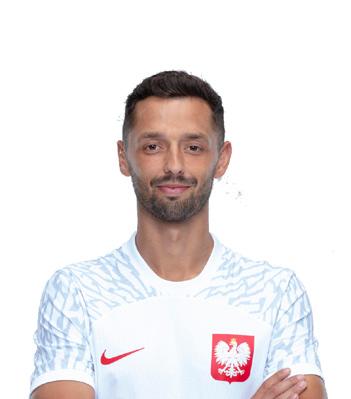
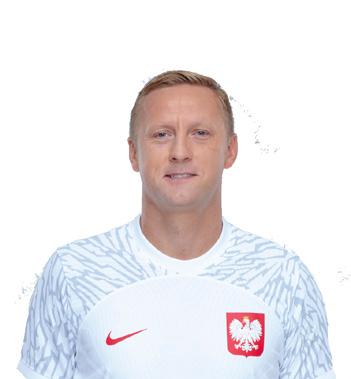
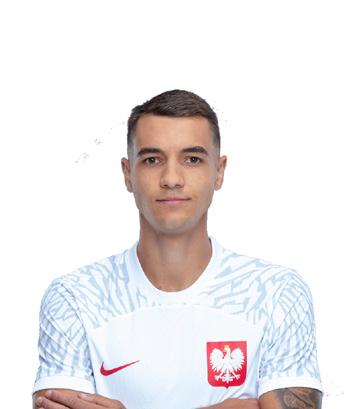
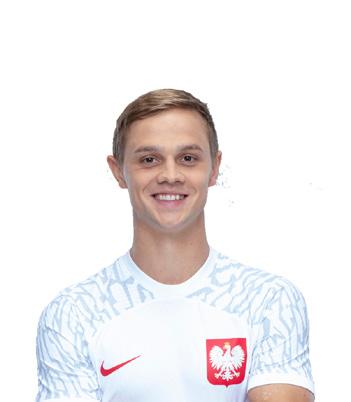
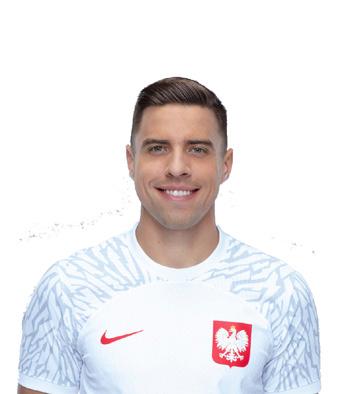
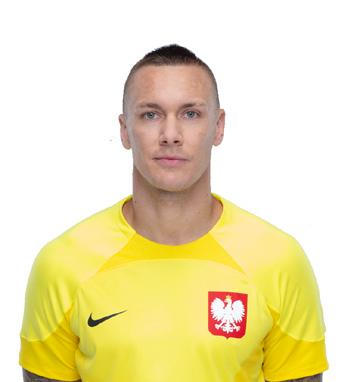
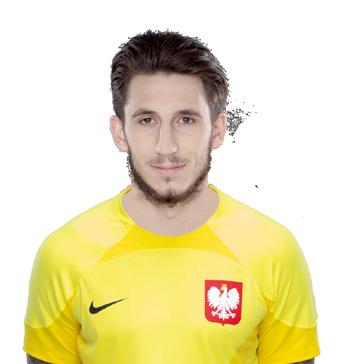
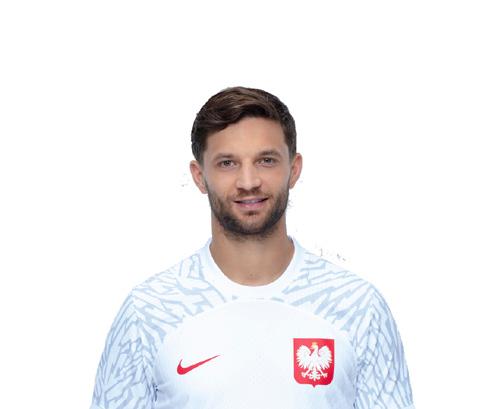
Łukasz Skorupski 05.05.1991 Bologna FC 7/0 Goalkeeper
Wojciech Szczęsny 18.04.1990 Juventus FC 66/0 Goalkeeper
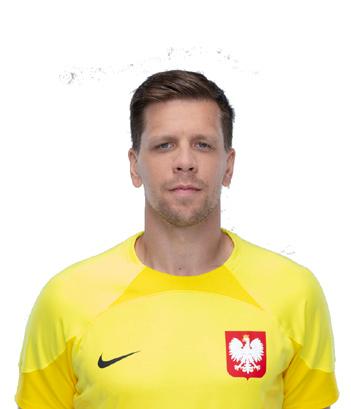
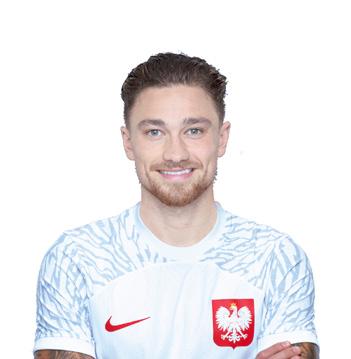
Jan Bednarek 12.04.1996
Aston Villa FC 44/1 Defender
Bartosz Bereszyński 12.07.1992 UC Sampdoria 45/0 Defender

Artur Jędrzejczyk 04.11.1987
Legia Warszawa 40/3 Defender
Matty Cash 07.08.1997
Aston Villa FC 7/1
Kamil Glik 03.02.1988 Benevento Calcio 98/6
Robert Gumny 04.06.1998 FC Augsburg 4/0 Defender
Jakub Kiwior 15.02.2000
Spezia Calcio 4/0 Defender
Mateusz Wieteska 11.02.1997
Clermont Foot 63 1/0 Defender
Nicola Zalewski 23.01.2002 AS Roma 7/0 Defender
Łączy nas piłka
4
#
Krystian Bielik 04.01.1998 Birmingham City 5/0
Przemysław Frankowski 12.04.1995 RC Lens 25/1 Midfielder
Kamil Grosicki 08.06.1988 Pogoń Szczecin 86/17 Midfielder
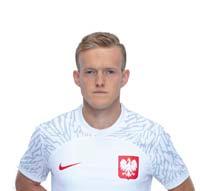
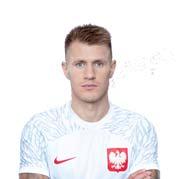
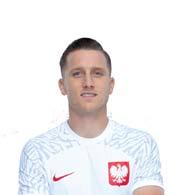
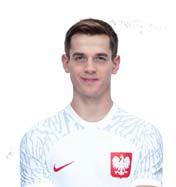
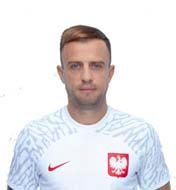
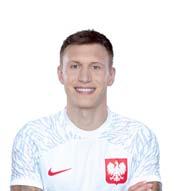
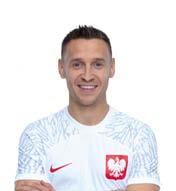
Jakub Kamiński 05.06.2002 VfL Wolfsburg 3/1
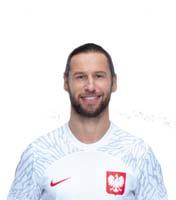
Grzegorz Krychowiak 29.01.1990 Al-Shabab 93/5 Midfielder
Piotr Zieliński 20.05.1994 SSC Napoli 74/9
Michał Skóraś 15.02.2000
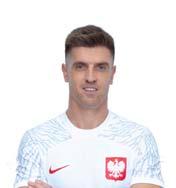
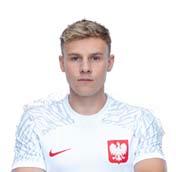
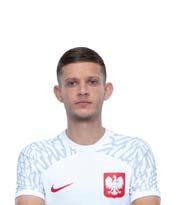
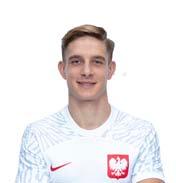
Lech Poznań 1/0 Midfielder
Damian Szymański 16.06.1995 AEK FC 8/1 Midfielder
Sebastian Szymański 10.05.1999 Feyenoord Rotterdam 17/1 Midfielder
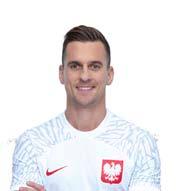
Krzysztof Piątek 01.07.1995
US Salernitana 1919 24/10 Forward
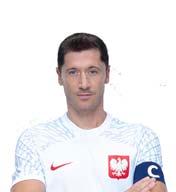
@Laczy nas pilka
Szymon Żurkowski 25.09.1997 ACF Fiorentina 6/0
Robert Lewandowski 21.08.1988 FC Barcelona 134/76 Forward
Arkadiusz Milik 28.02.1994 Juventus FC 63/16 Forward
Karol Świderski 23.01.1997 Charlotte FC 17/8 Forward
FIFA WORLD CUP I QATAR 2022 5
CZESŁAW MICHNIEWICZ COACH OF POLAND
He was born on 12 February 1970 in Brzozówka, located in Belarus. He started his football career at Ossa Biskupiec Po morski, from where he moved on to Bałtyk Gdynia in 1985. The next stop on his goalkeeper’s career path was Polonia Gdańsk; later, he reached the Ekstraklasa level with Amica Wronki. With this club, he won two Polish Cups (1999, 2000) and one Super Cup (1999). He ended his football career after the 2000/2001 season.
At the time of hanging up his boots, he was already working as a coach, leading the reserves of the Wronki club. He also took care of goalkeeper training in Amica’s first team and was briefly an assistant coach in Polonia Olimpia Elbląg in 2003. The position of the coach of Lech Poznań was Cze sław Michniewicz’s first independent job in Ekstraklasa. He achieved his first success with the club, winning the Polish Cup in 2004, along with the national Super Cup. He worked at „Kolejorz” until 2006. In October 2006, he became the coach of Zagłębie Lubin. Already his first season ended with winning the Polish championship. In the following years, he led Arka Gdynia, Widzew Łódź, Jagiellonia Białystok, Polonia Warszawa, Podbeskidzie Bielsko-Biała, Pogoń Szczecin and Bruk-Bet Termalica Nieciecza.
On 7 July 2017, he began his career in the national team. With the under-21 team, he advanced to the final tournament of the European Championships, beating Portugal in the playoffs. In the group stage, the youth national team led by Cze sław Michniewicz won six points, beating Belgium and Ita ly and losing to Spain.
On 21 September 2020, he took up a job at Legia Warszawa. He won the national championship with the club (2021) and advanced to the group stage of the Europa League. He worked at the club from the capital city of Poland until October 2021.
On 31 January 2022, he was announced the head coach of Poland’s senior national team, which he led into the 2022 World Cup in Qatar and ensured that it would remain in the top division of the Nations League.

Łączy nas piłka
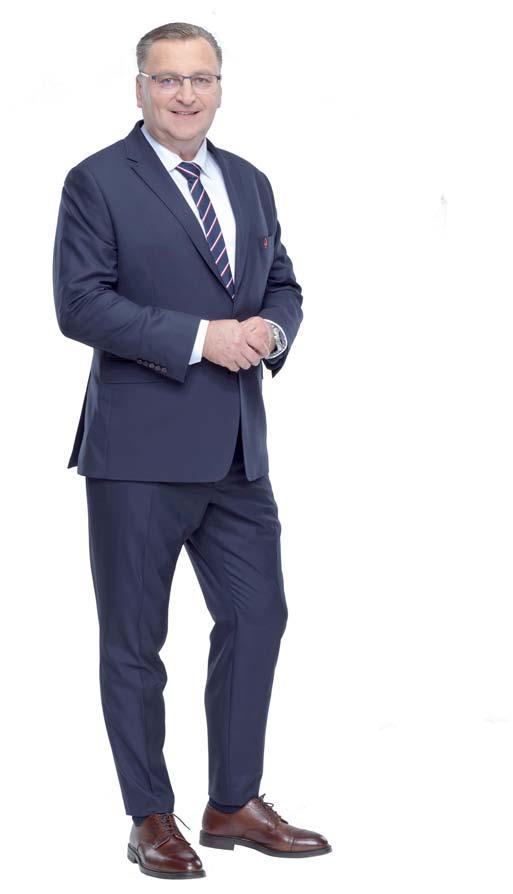
6
#
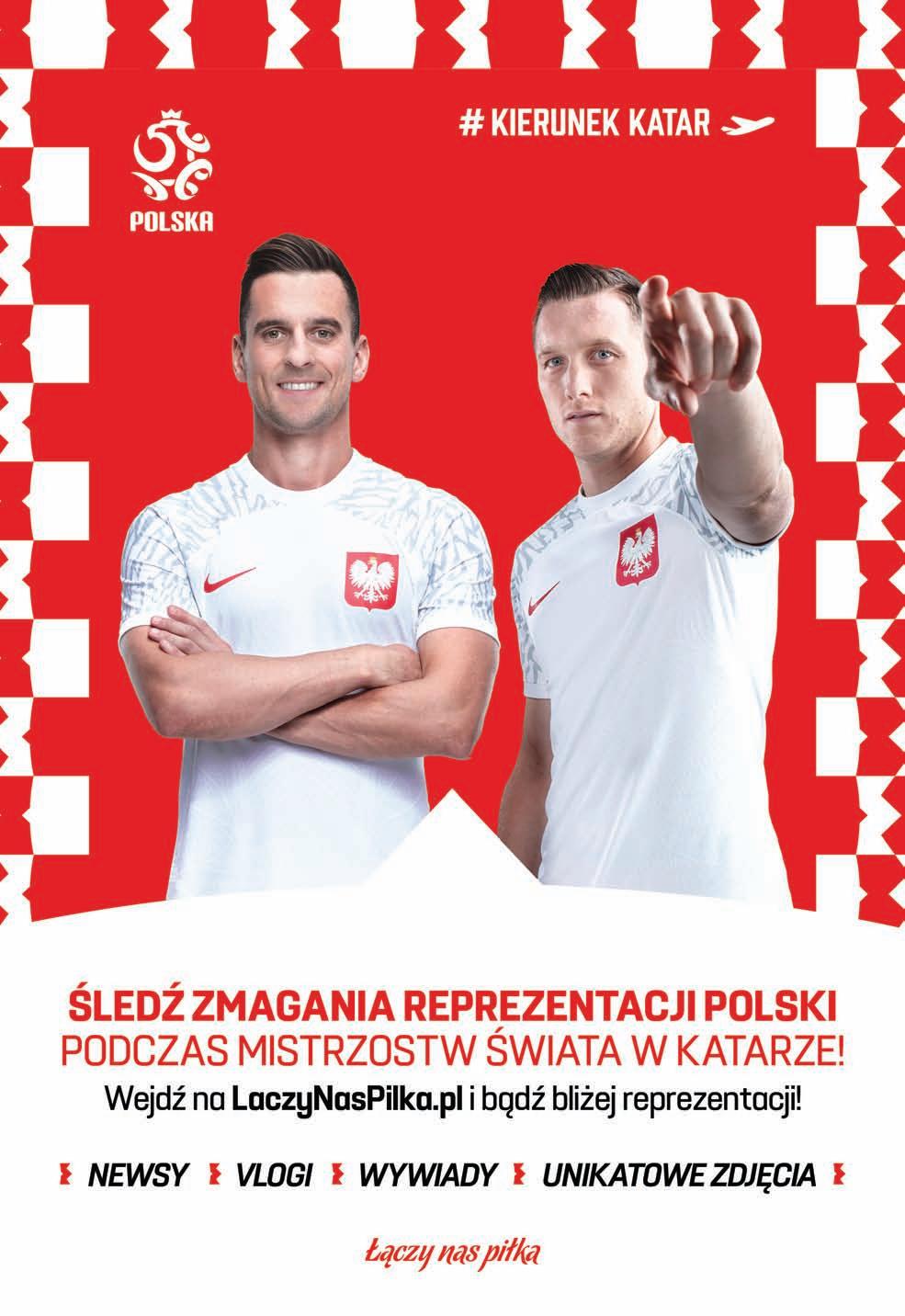
STAFF OF THE POLISH NATIONAL TEAM
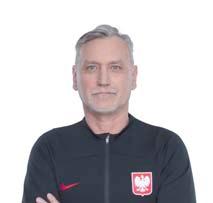
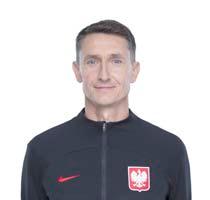
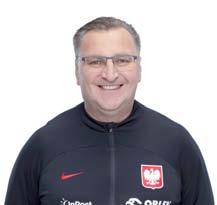
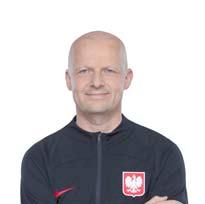
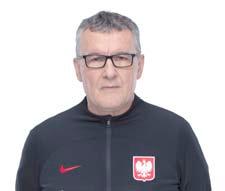
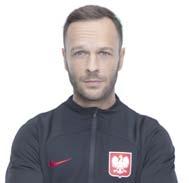
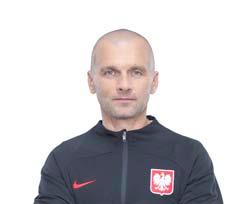
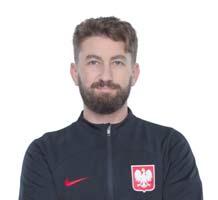
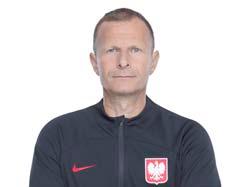
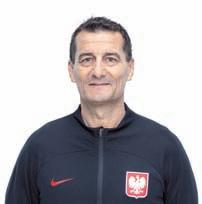
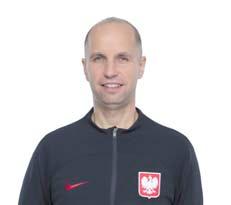
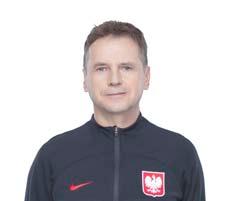
# Łączy nas piłka
8
Czesław Michniewicz Head Coach
Kamil Potrykus Assistant Coach
Alessio De Petrillo Assistant Coach
Mirosław Kalita Assistant Coach
Hubert Małowiejski Assistant Coach
Rafał Lasocki Assistant Coach
Andrzej Dawidziuk Goalkeeping Coach
Tomasz Muchiński Goalkeeping Coach
Karol Bortnik Fitness Coach
Grzegorz Witt Fitness Coach
Robert Musiałek Video Analyst
Jakub Rejmoniak Technical filming
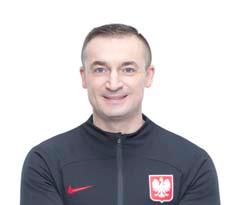
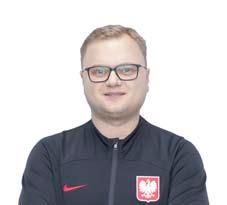
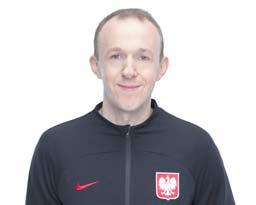
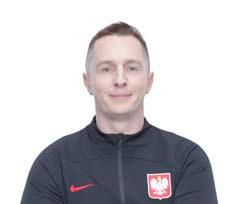
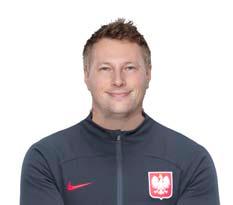
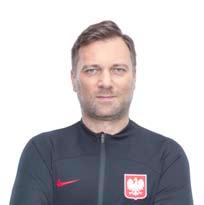
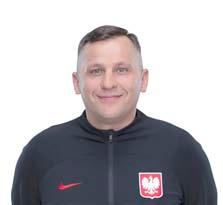
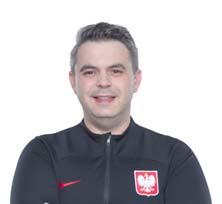
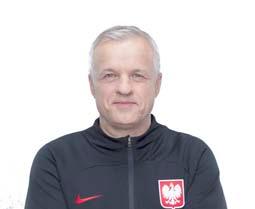
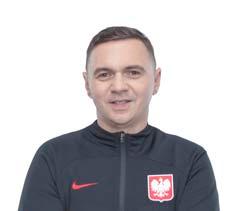
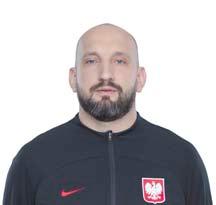
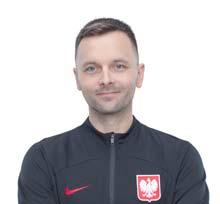
FIFA WORLD CUP I QATAR 2022 9
@Laczy nas pilka
Jacek Jaroszewski Team Doctor
Paweł Bamber Physiotherapist
Marcin Bator Physiotherapist
Adam Kurek Physiotherapist
Wojciech Herman Masseur Jakub Kwiatkowski Team Sports Manager, ress Officer
Łukasz Gawrjołek Logistics Team Manager
Paweł Kosedowski Technical Manager
Paweł Sidorowicz Assistant Technical Manager
Tomasz Leśniak Chef
Radosław Marcińczyk Deputy Chef
Wojciech Zep Nutritionist
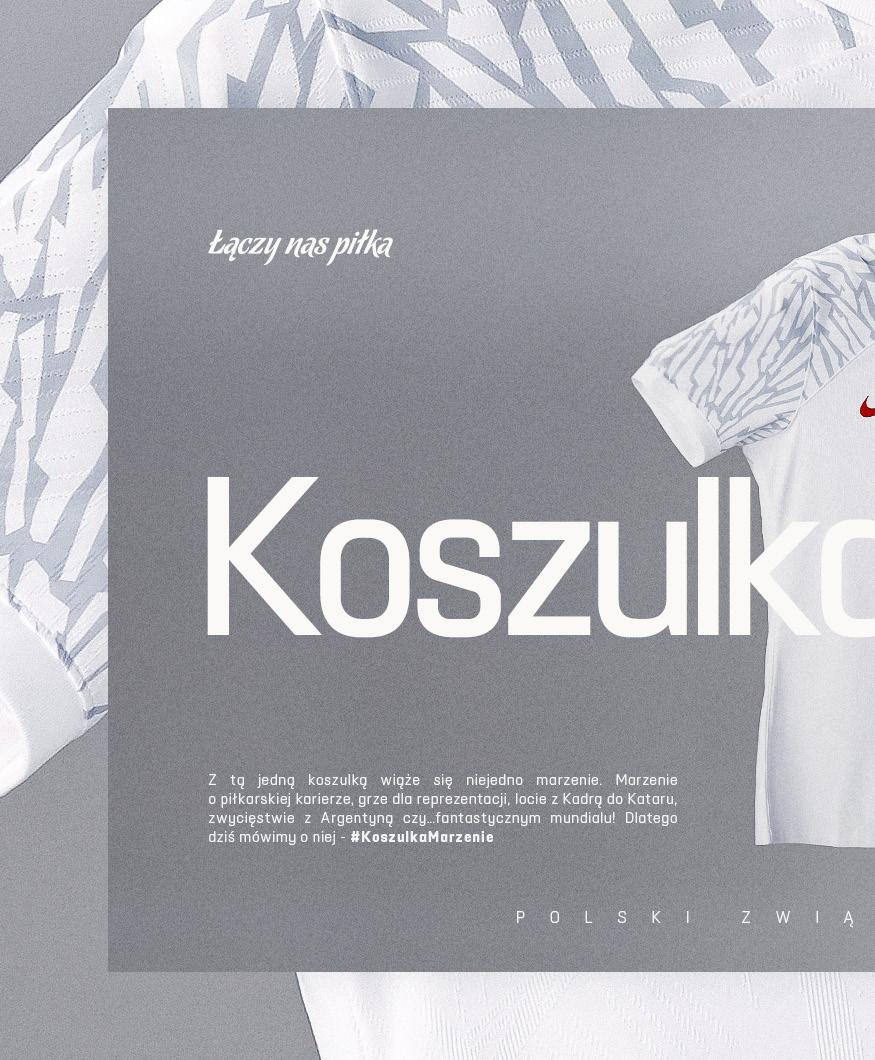
Łączy nas piłka 10 # ONE T-SHIRT – MANY DREAMS. POLAND’S NATIONAL TEAM FOR THE WORLD CUP IN
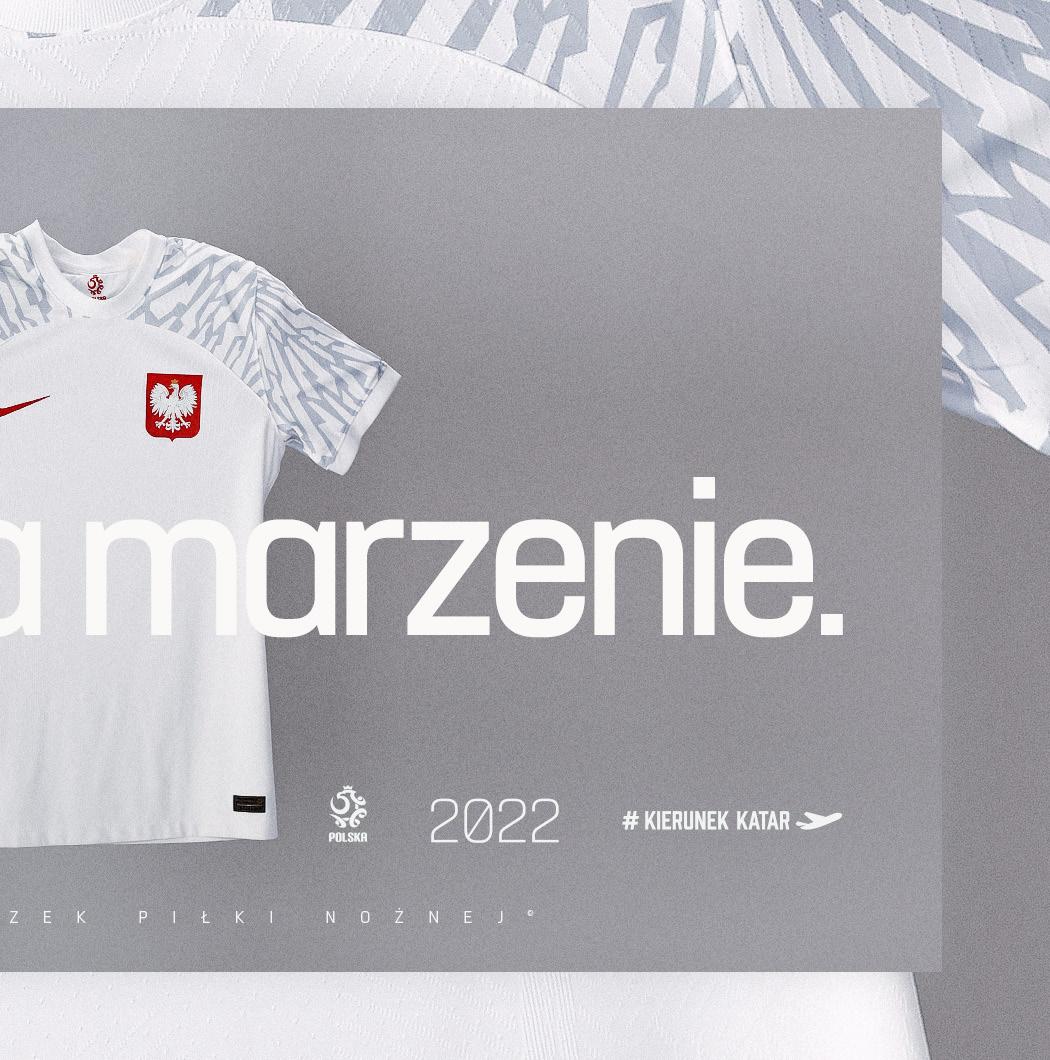
FIFA WORLD CUP I QATAR 2022 11
OUTFIT IN QATAR #DREAMT-SHIRT
@Laczy nas pilka
DREAMS. TEAM
The Polish Football Association has unveiled the new T-shirt of the Polish national team, in which the White-and-Reds will perform at the upcoming World Cup in Qatar. The #DreamT-shirt is another element of the campaign to promote the national team’s performance at the World Cup. Czesław Michniewicz’s team have already played in their new T-shirts in Nations League matches against the Netherlands and Wales. The T-shirts were produced by Nike, the official supplier of the Polish national team’s sports equipment.
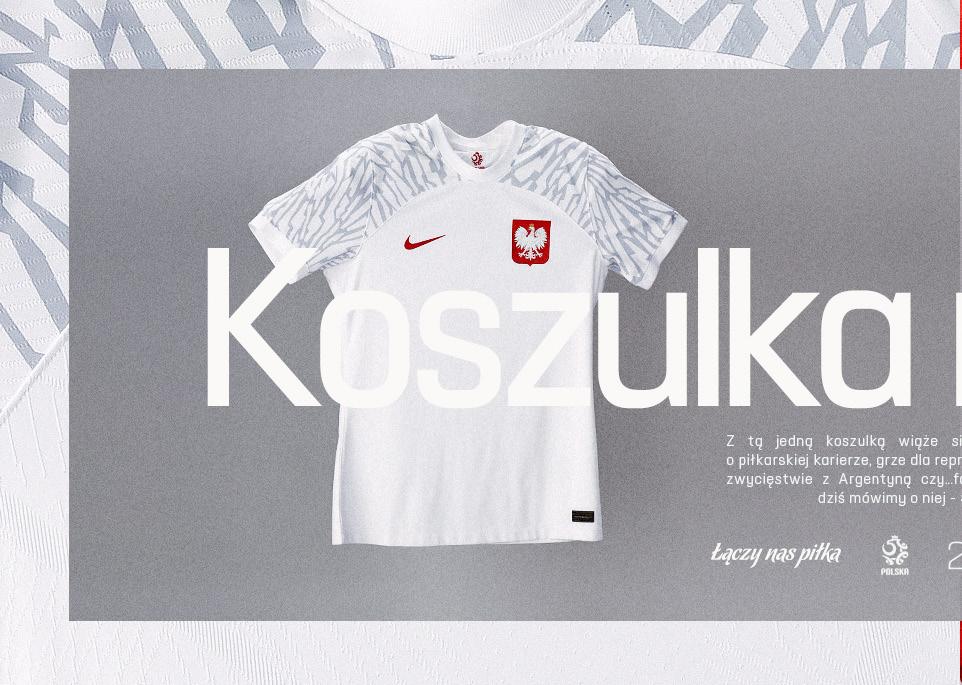
There are many dreams asso ciated with this single T-shirt. Dreams of a football career, playing for the national team, flying with the team to Qatar, winning against Argentina or... a fantastic World Cup. That is
why we now refer to it as the #DreamT-shirt. The Polish national team T-shirt is one of the symbols that unite the whole country. It sho uld express the dreams of every single fan. Already on the day of the official presenta tion of the new T-shirt, it became known as „historic” due to the landmark event of the
12 #
Łączy nas piłka
World Cup being played for the first time in hi story in November/December. I would like the new T-shirt to remain in the fans’ memory long after the World Cup so that it also has a collec tor’s value. This would mean that our team wo uld be successful in Qatar. And this is my priva te dream related to this beautiful T-shirt”, says Cezary Kulesza, President of the Polish Foot ball Association.
The new T-shirts combine white and red as well as grey on the sleeves, which symbolises the white eagle’s nest. The shirts, kept in classic to nes, correspond to the latest trends, aiming to meet the high expectations of every fan of the Polish national team, regardless of gender, ori gin, profession, age or place of residence. One T-shirt expresses the millions of dreams as sociated with our national team’s performan ce at the World Cup.
Every fan of the White-and-Reds can buy new national team outfits in the Official Fan Shop of
the Polish National Team, both online at Sklep.La czyNasPilka.pl and in regular shops. The T-shirts were prepared in three models differing in the le vel of sophistication and technology used: TOP, STADIUM and VAPOR. There are also women’s outfits on offer, in home and away versions. “The presentation of the national team T-shirt is our strategic point in the entire #HeadedForQuatar campaign, which we launched in March, imme diately after winning the play-off match against Sweden at the Silesian Stadium. That match was watched by more than 6 million fans. I am sure that even more will be watching during the World Cup, as the White-and-Red national foot ball team is the most loved team in Poland. We want the new T-shirt design to appeal to eve ry generation of fans. Hence the promotional campaign to emphasise its function not only in terms of football but also in terms of lifesty le”, says Łukasz Wachowski, Secretary Gene ral of the Polish Football Association.
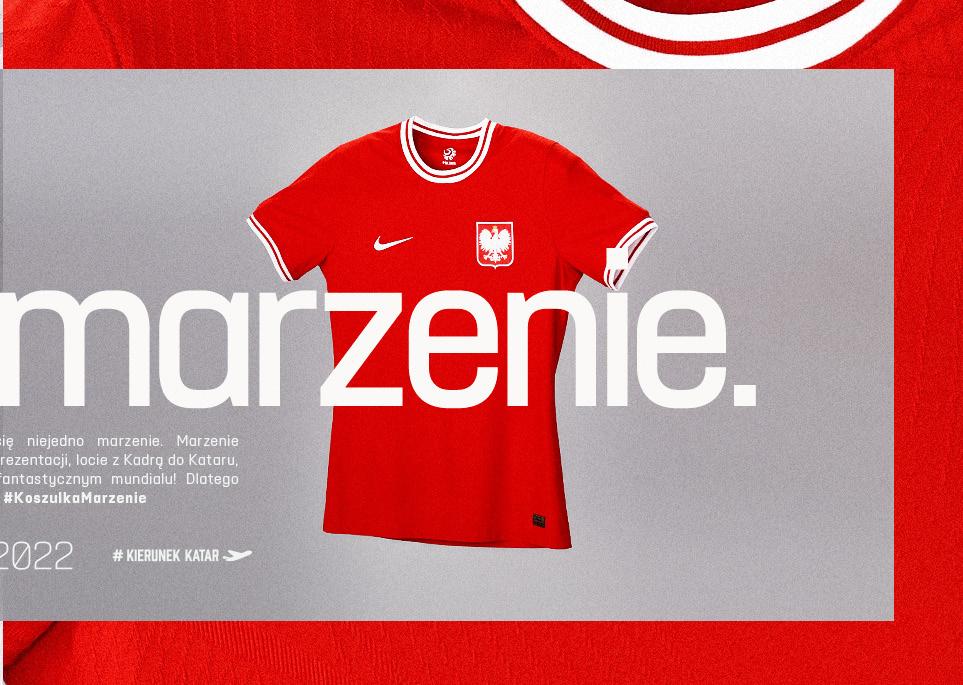
FIFA WORLD CUP I QATAR 2022 13
@Laczy nas pilka
„I CAN VOUCH FOR THIS SQUAD”
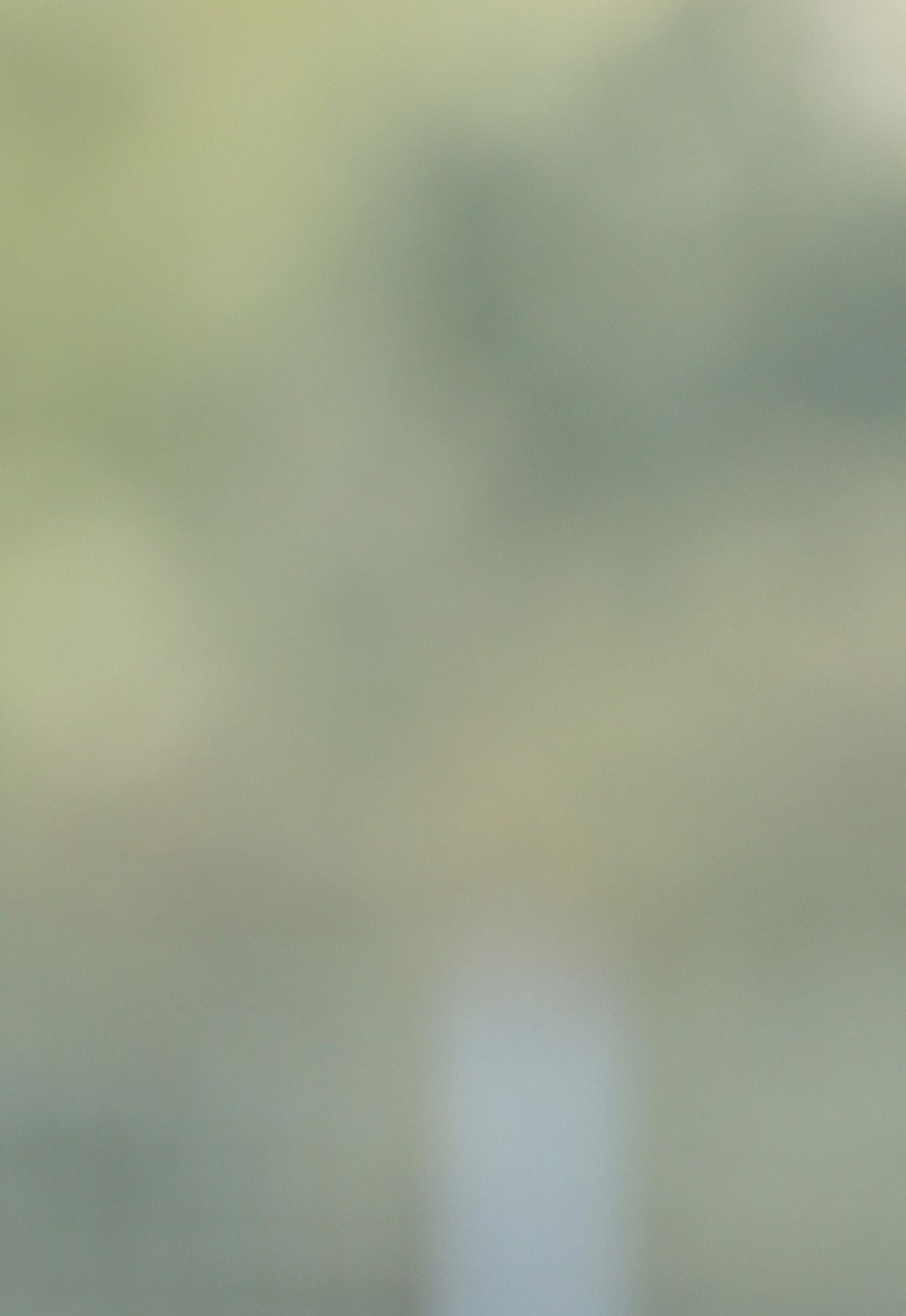
#
CZESŁAW MICHNIEWICZ:
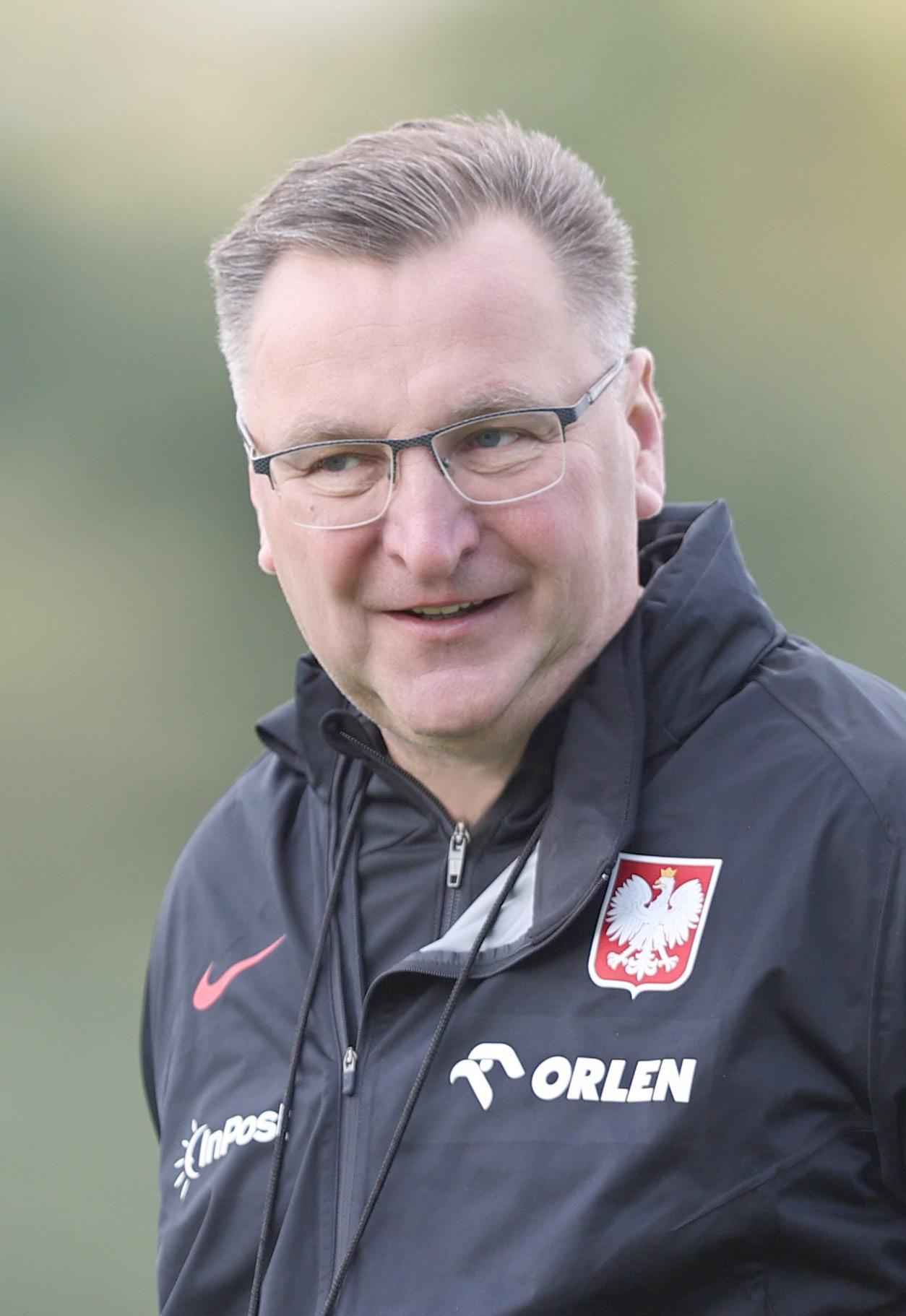
MISTRZOSTWA ŚWIATA 2022
@Laczy nas pilka
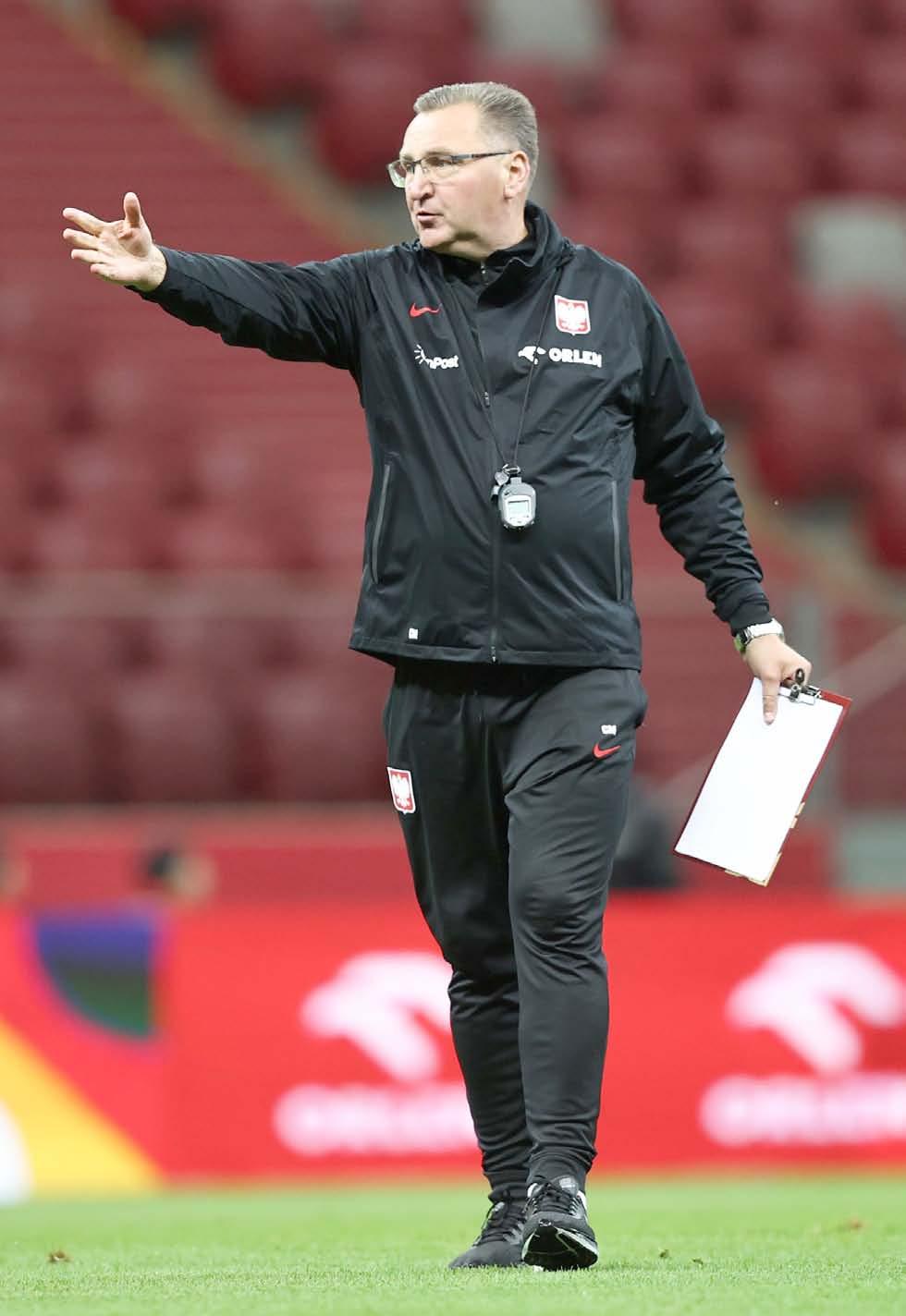
#
„This
made”, assured Czesław Michniewicz, head coach of the Polish national team, during announcement of the squad for the World Cup in Qatar. The head coach decided to take 26 players to the tournament: three goalkeepers, nine defenders, ten midfielders and four strikers.
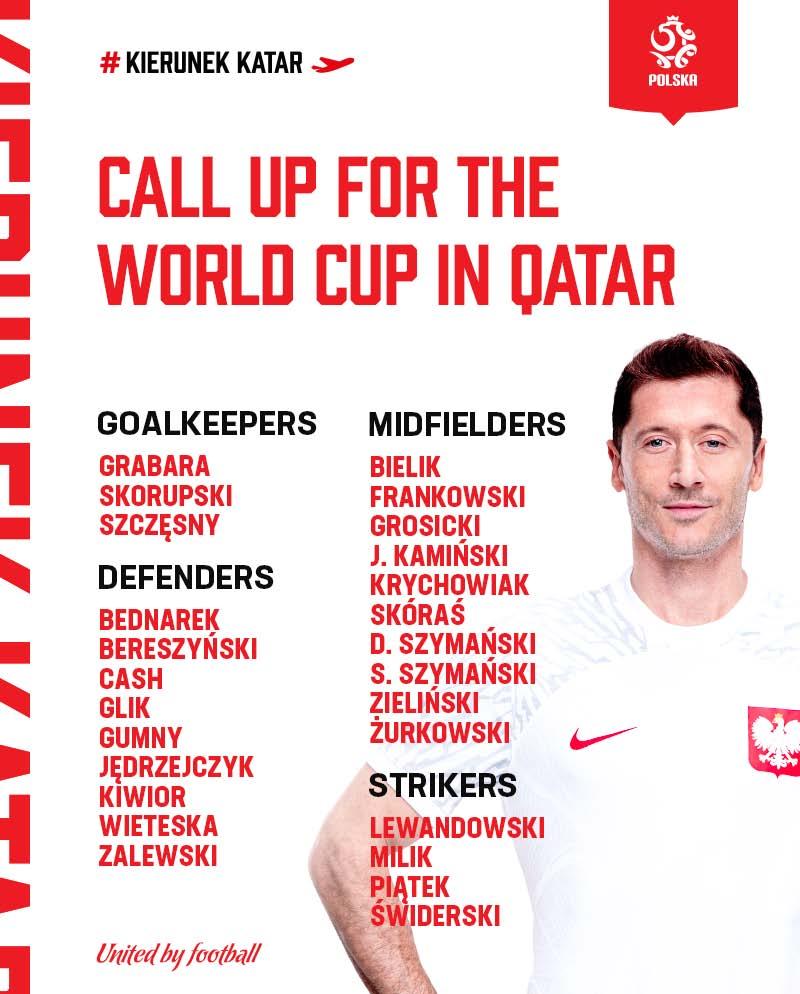
FIFA WORLD CUP I QATAR 2022 17
is the best choice I could have
Before announcing the names of those who made the main squad for the World Cup, coach Michnie wicz stated that „this is a very im portant moment for me and for the players. And a difficult one, as I had to select 26 players out of 47 in the extended squad, which means that 21 play ers will be disappointed. Unfortunately, there is no way I can make this moment any less bitter for them. We have watched over 400 live matches in various setups and on different continents to ensure that the selection process was as com plete as possible. I can vouch that this is the best choice I could have made. I respect the fact that the players who have not been selected may di sagree, but I will be calling them and discussing this issue with them”, assured the head coach. The head coach stressed that the decision con cerning each player was difficult. „I had to think hard with respect to every player. Of the 21 play ers, there were some who played an important role in the national team, but also some who were only making their first steps. It was diffi cult to decide whether to take four goalkeepers or an additional midfielder. „We have decided that the midfield, to which Krystian Bielik and Grze gorz Krychowiak aspire, needs one more player. The specific nature of the game is that two pe nalty cards eliminate a player. Our goal is to play at least four matches, and we had a shortage at this position. For this reason, I went to see several players and Damian Szymański was in the best form”, assured the head coach.Journalists also asked, among others, about Kamil Grosicki and Artur Jędrzejczyk. „Nominations are decided pri marily by pure football skills, but personality, de termining who suits the group, also plays a role. Even if there are no players in the squad who wo uld be there just to improve the atmosphere. In addition to a good player, I also need a good per son. And all players meet that criterion”, assured Michniewicz. „Grosicki? Kamil has been playing very regularly since July; he probably spent the most minutes on the field out of all Pogoń play ers. He can give an impetus to the team in criti cal moments and this will be very useful”, claims the head coach.
Łączy nas piłka
18 #
„Artur has personality, charisma and experience. I worked with him before and he has never failed me. I already wanted to take him to the match against Sweden, but he was recovering from an injury. He is universal, because he can play at any position as a stopper, regardless of whether the formation has three or four defenders. In addition, he can also play on the side of the defence”, added Michniewicz. The head coach of the Polish national team de cided to take four strikers to the World Cup. „I al
ready informed Dawid Kownacki that he is the fi fth on Wednesday. We explained everything to each other in a good atmosphere. As a former coach of the U-21 national team, I owe him a lot and respect his abilities. He will yet be back in the national team, and these four fit each other the best, both when playing with one striker and with two. I saw no need to take Kownacki, as we are quite blessed when it comes to the wings”, sta tes Michniewicz.
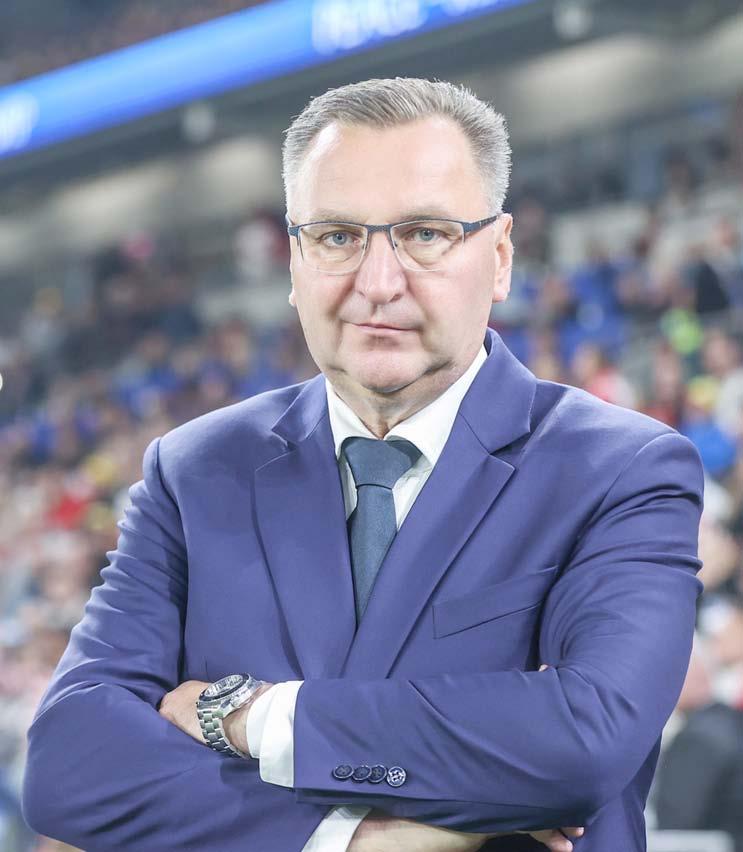
FIFA WORLD CUP I QATAR 2022 19
@Laczy nas pilka
# Łączy nas piłka 20
LEWANDOWSKI: TIME TO DISPEL
DOUBTS
ROBERT
ALL
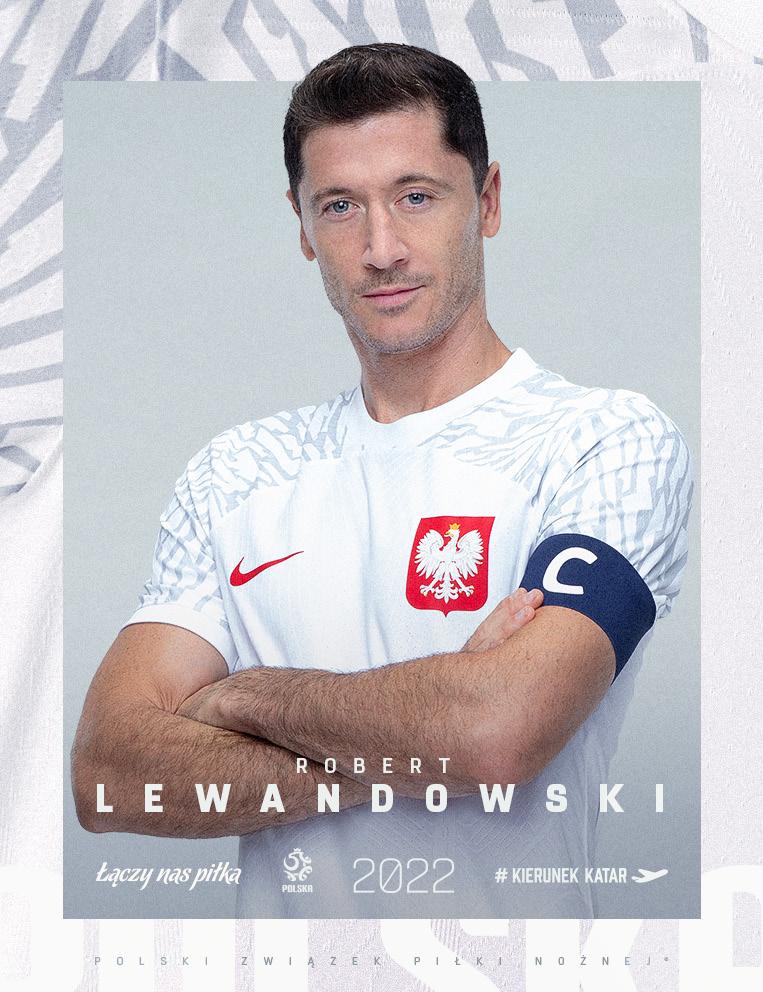
FIFA WORLD CUP I QATAR 2022 21
In club football, Robert Lewandowski has achieved virtually everything. He can boast victories in the Champions League and the Club World Cup as well as more than ten top scorer titles in various tournaments. In Qatar, however, he has something more to prove: the ability to lead the national team to a successful performance in the World Cup, something he has so far been unable to do.
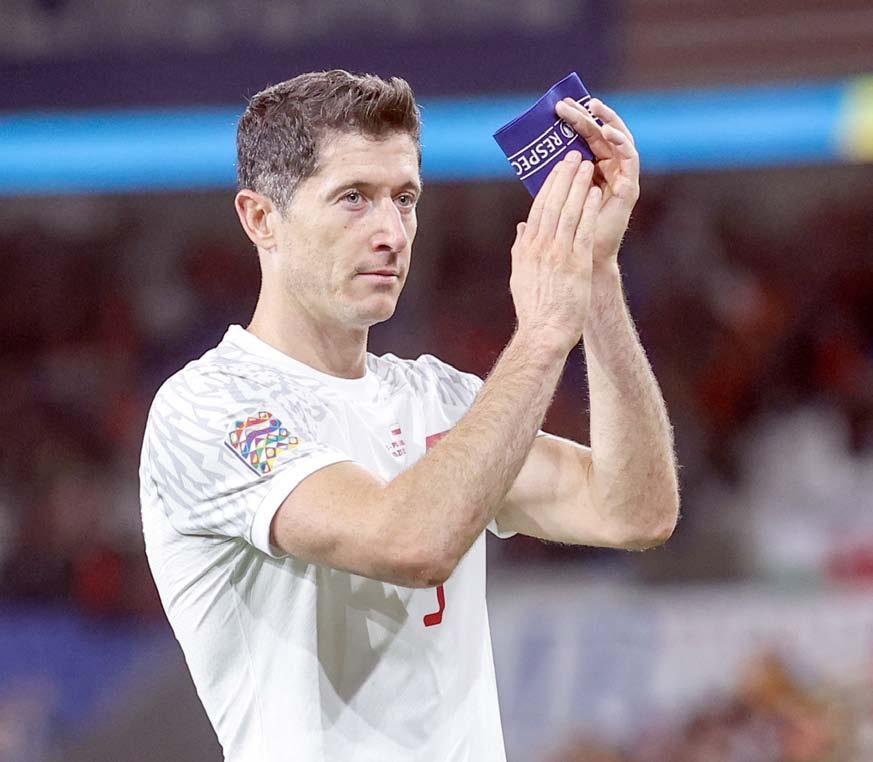
# Łączy
22
nas piłka
There basically is no pass into the penalty area that Robert couldn’t handle.
A real nightmare for the defenders
One would be hard-pressed to find a moment in Ro bert Lewandowski’s care er when his development slowed down. Ever since his transfer from Znicz Prusz ków to Lech Poznań, the ca reer of the captain of the Polish national team has been a constant rising tide. After his trans fer to Borussia Dortmund, he immediately be come one of the best strikers in the Bunde sliga. With his team at the time, he won two German championships, one domestic Cup and one Super Cup, made the Champions League finals and became the league’s top scorer. After being transferred to Bayern Munich, he confirmed his class over the fol lowing years, becoming one of the absolute top players in the world. His assets and deve lopment are noticed by Bjarne Goldbæk, a Da nish player with 28 appearances in the Da nish national team, who formerly played for such clubs as FC Schalke 04 and Chelsea FC and shared the locker room with such players as brothers Brian and Michael Laudrup. „Ever since his first appearance in the Bundesliga, Robert has been developing each and every year”, says Goldbæk in an interview for the United by Football website. „He has definitely become a more useful player in the context of how the entire team plays. He is no longer just an executor, but also helps to play the ball. He is excellent in protecting the ball, he tries to set up the team”, lists Goldbæk.
Paweł Kryszałowicz agrees with Goldbæk. The former player for the Polish national team, who scored a goal for the White and Reds during the 2002 World Cup, notes that it is hard to name any aspect of Lewandow ski that wouldn’t be at the highest level. „As a ‘nine”, he really is an absolutely complete striker. He can not only finish moves, when the ball is seeking him, but is also capable of combination play. He is incredibly strong and very fast. When it comes to Robert, it is im possible to say what he is the best in, as he has perfected nearly every aspect”, says the 33-time player for the Polish national team.
Robert Lewandowski certainly impresses the entire football community with his at titude not only on the pitch, but also off the pitch. His self-awareness and willingness to work on each and every element which can be beneficial on the turf are on a very high level. That Lewandowski has not suffered any injuries over so many years of playing at the top level is certainly no accident. „Ro bert is constantly working hard, because he is aware that maintaining form is not limi ted to just training with his team in the club. Individual work is also very important. One must not forget about appropriate regene ration and nutrition. Robert is great at this and that is why he has virtually no problems with injuries. Even if he is out, it’s just for one, sometimes two matches. This is often cau sed by fatigue, as he is heavily utilised both in his club and in the national team; the pro cess of deciding the squad starts with him”, notes Kryszałowicz.
Despite playing in so many matches, the cap tain of the Polish national team does not lo wer his sights. Whenever the opportunity presents itself, he mercilessly exploits his opponents’ weaknesses and directs the ball into the goal, regardless of whether he we ars the uniform of Barcelona or of the na tional team. Although he has multiple top scorer titles under his belt and continues to break new records, he still seems insatiable. It’s not just about seeking new challenges, which is the reason he left Bayern Munich, but also about self-development. He keeps adding new weapons into his arsenal of skills, which makes him even more dangerous. „Le wandowski has incredible sense of space and amazing speed. It doesn’t make much diffe rence to him which leg he uses to shoot; he has great quality in both. Every second of his play is marked by high determination, which is what distinguishes the best players”, says Bjarne Goldbæk.
All this, put together, makes Lewandowski strike fear into the hearts of defensive lines throughout the world. Regardless of whe ther he faces the Gibraltar national team or
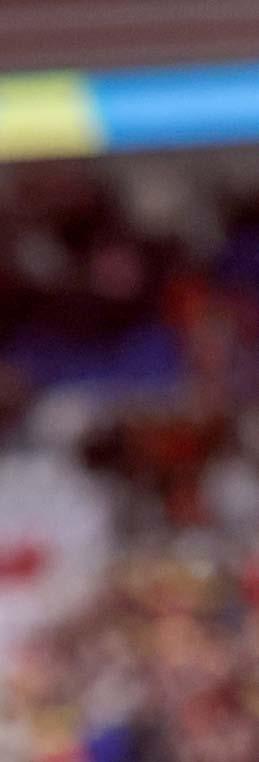 @Laczy nas pilka
@Laczy nas pilka
FIFA WORLD CUP I QATAR 2022 23
Real Madrid, he causes massive problems for defenders. „In one-on-one situations, the de fending player has basically no chance aga inst Lewandowski”, claims Stefan Majewski, former defender for the national team and World Cup medallist. „The speed and dyna mic play of ‘Lewy’ mean that he can only be opposed by an equally fast defender. And tho se are few and far between. Robert can read the game and knows exactly where to posi tion himself; he has the ability to predict whe re the ball will fall. This is what distinguishes the best strikers in the world. He also works for the entire team. Even when he does not receive a pass himself, he keeps the defen ders’ attention, making things easier for his teammates. This is visible in Barcelona even more than it was in Bayern”, he adds. „Robert has developed the ability to lose de fenders with incredible ease. He moves wi thin the penalty area like a fox and is capa ble of losing defenders in a fraction of a se cond. Add to that the incredible instinct for finishing moves and smooth play using his both legs and his head and we have a real phenomenon. There basically is no pass into the penalty area that Robert couldn’t handle.
A real nightmare for the defenders”, stresses Marcin Żewłakow, 25-time player for the Po lish national team.
The new records that Lewandowski keeps breaking and the trophies he keeps winning spark a debate among many fans whether the current captain of the Polish national team is already the best player in the history of Polish football. The proponents of this thesis empha sise Lewandowski’s incredible achievements in club football, while its opponents point out that he has had no comparable success with the national team. „It is very hard to compa re different periods in football. Football used to be played in a different way, we also had fantastic players, such as Kazimierz Deyna or Zbigniew Boniek. Assessment is an individu al matter. Others might disagree, but I believe that Lewandowski is the best Polish footbal ler in history”, says Paweł Kryszałowicz. „I do not compare players from different times, be cause that’s impossible. It’s a bit like literatu
re: every era has its most outstanding repre sentatives. Robert in football is the national bard of his times”, colourfully describes Mar cin Żewłakow.
And indeed, for Robert Lewandowski, the only achievement left is a good result accomplished with the Polish national team at the World Cup. He made his debut in the national team
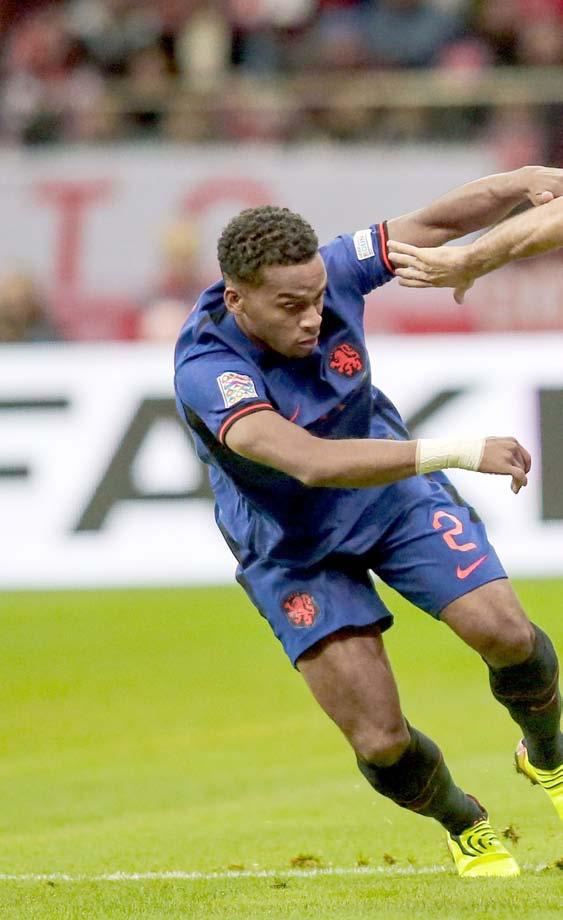
# Łączy
24
nas piłka
Regardless of whether he faces the Gibraltar national team or Real Madrid, he causes massive problems for defenders.
@Laczy nas pilka
in 2008, but the White and Reds did not make the 2010 and 2014 World Cups in South Afri ca and Brazil. „Lewy’s” first opportunity to play in the World Cup came only in 2018, ten years after his debut. However, Polish fans have no fond memories of the World Cup in Russia, as the team, then managed by Adam Nawał ka, failed to advance beyond the group sta
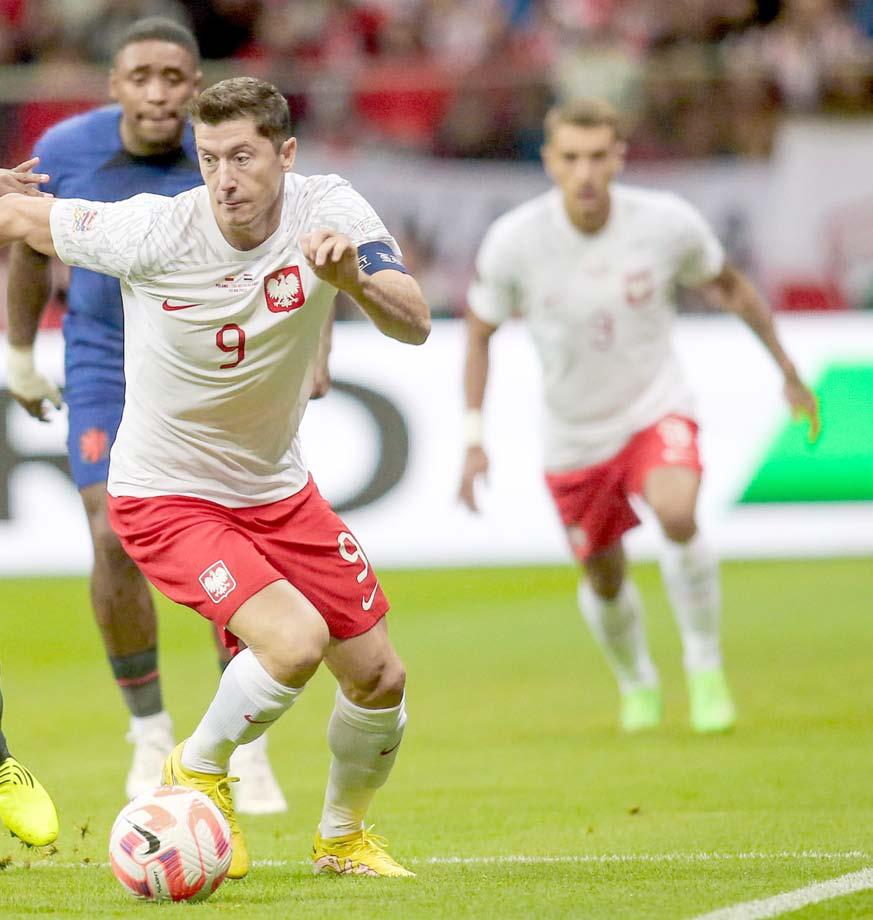
ge. This time is supposed to be different. The eyes of the entire world will be focused espe cially on the duel between Lewandowski and Lionel Messi, but the captain of the Polish na tional team has much to prove in every sub sequent match. We hope that in Qatar he will lead the White and Reds to a great success.
Emil Kopański
FIFA WORLD CUP I QATAR 2022 25
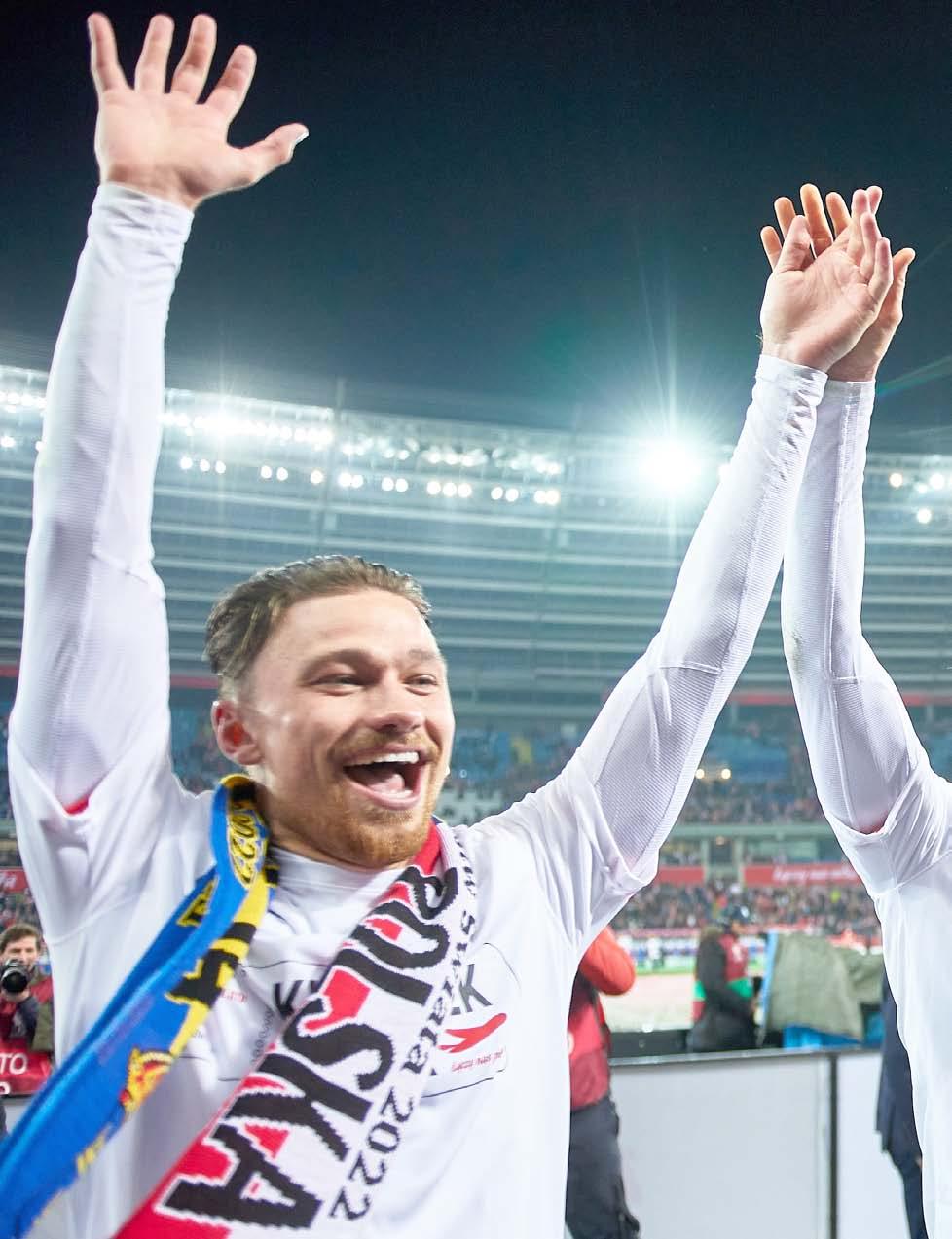
26 # Łączy nas piłka
A TIME OF EMOTION AND CHARACTER TESTS
The final whistle of the referee. Czesław Michniewicz squats down on the substitutes’ bench, as if to escape for a moment from the crazy joy around him. „My whole life flashed before my eyes. From childhood, through adolescence, all the ups and downs”, said the head coach after the play-off against Sweden. Many fans probably remember this image. And it captures our journey to the World Cup in Qatar – full of emotion, thrill, where we had to show not only skill but also character.
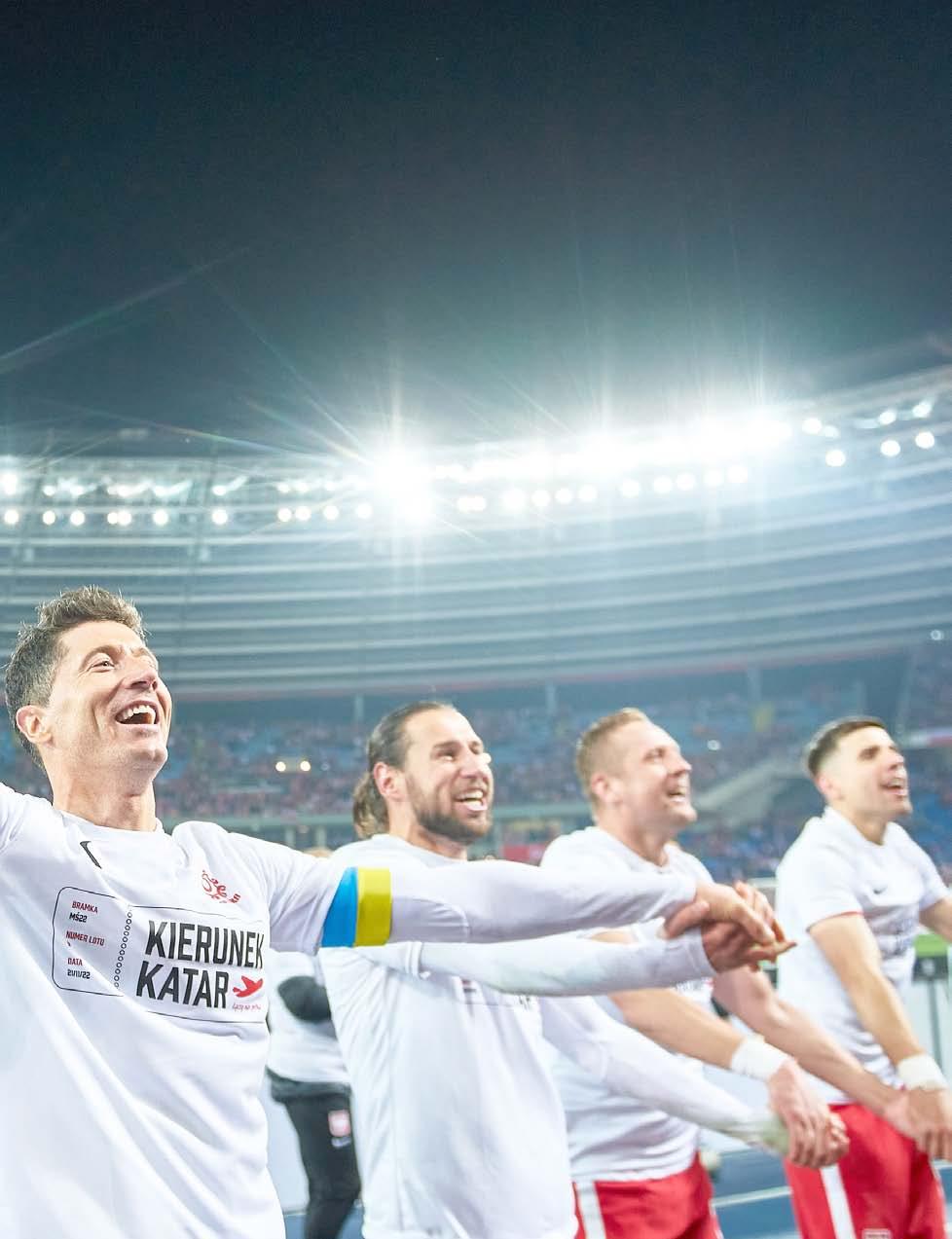
FIFA WORLD CUP I QATAR 2022 27
@Laczy nas pilka
hen Kamil Glik si gnalled in the third minute of the play-off aga inst Sweden that he would need a substitution, it seemed that the road to the World Cup in a match against a rival we last won against in 1991 would unexpectedly get even longer. Glik eventually played until the very end. „I play ed with an injury from the first minute. I felt the pain immediately on first contact. I tore a muscle quite badly. It was difficult for me to kick or pass the ball, to accelerate. I tried to grit my teeth and help as much as I could. It seems I was 50 per cent in the game”, said the defender. „I didn’t care about anything beyond this match. Nothing mattered, what will happen tomorrow, the day after tomor row, next year. It was our match of the deca de. I have fulfilled another one of my dreams”, said one of the heroes of our national team. „The team showed character”, Grzegorz Kry chowiak echoed him.
The team showed character from the first mi nutes of the qualifiers, and they struggled aga inst tremendous odds. Mateusz Klich proba
Wbly knows best how coronavirus could make life miserable at the beginning of the quali fiers. Positive, negative, then positive again. A mood swing, just like the one experienced by fans during the first match againt Hun gary. „We certainly feel a little disappointed. We were losing 0-2, it was really bad. We led to a draw, it seemed like we would score ano ther goal and yet we lost. However, we mana ged to draw. A crazy match”, recounted Kamil Jóźwiak, who was one of the heroes of our na tional team. He scored a goal and made the key pass for the second goal. Klich missed the first qualifying matches. In Budapest, Kamil Glik was also absent from the first line-up, although he appeared on the pitch in the second half. For the defender from Ja strzębie-Zdrój, it was the 80th match for the Polish national team. The 33-year-old thus jo ined the Outstanding National Team Players Member Club. It was also unclear for a long time whether our strikers, Robert Lewandow ski, Arkadiusz Milik and Krzysztof Piątek, wo uld play in the most important match of the spring qualifying round, an away match aga inst England. The issue was that players could be subjected to mandatory quarantine on the ir return from the UK. Everything was cleared
There was a standing ovation, both teams made two rows to form a lane, there was loud chanting of „Fabian’ and there were also tears in many eyes.
Łączy nas piłka
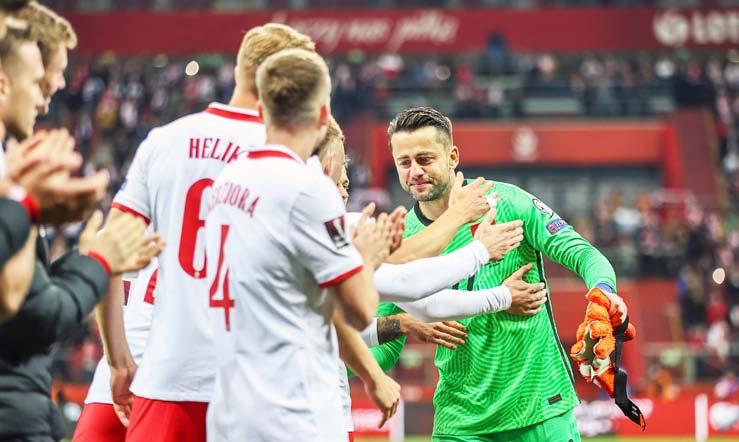
#
28
up in the end, but Lewandowski did not fly to the British Isles with his colleagues anyway. In the match against Andorra, „Lewy” suffered an injury and the offensive duo, Krzysztof Pią tek and Karol Świderski, played in the match at Wembley from the first minute. The latter had made his debut for the national team a few days earlier in a match against Andorra and immediately celebrated with a goal. „A goal in my debut match can be gratifying and it’s what I’ve really been working for all along sin ce I was a kid. I’m glad that the moment has come for me to get a chance in the national
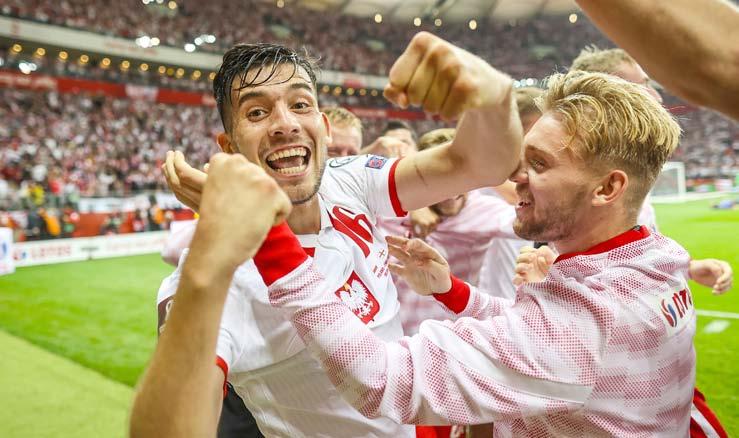
team. That goal will stay with me for the rest of my life”, said Świderski joyfully. There were more successful debuts in the match against Andorra, by the way. „Ever since we were chil dren, we would dream of playing at the highest level, especially in the national team. I have ful filled one of my dreams. Until a year ago, I could only watch the national team on TV, but now I work with the national team on the pitch”, ad ded Kacper Kozłowski, who contributed to the third goal and became the second youngest debutant in the national team. Only Włodzi mierz Lubański was younger.
There were plenty of offensive actions at Wembley but the only goal for the national team was scored by Jakub Moder. „Scoring a goal at Wembley is an amazing feeling but I was mostly disappointed with the result.
MODER:
FIFA WORLD CUP I QATAR 2022 29
@Laczy nas pilka
SCORING A GOAL AT WEMBLEY IS AN AMAZING FEELING
“
There were plenty of offensive actions at We mbley but the only goal for the national team was scored by Jakub Moder. „Scoring a goal at Wembley is an amazing feeling but I was mo stly disappointed with the result. My goal did n’t change anything”, Moder admitted. A gen tle consolation for the midfielder playing in the Isles on a daily basis could only be the fact that he beat Nick Pope, who has not lost a goal in national colours so far. The Burnley goalke eper played his seventh match for the senior England national team and has not let the ball into the net in his first six matches. In the autumn, we witnessed further debuts in the national team. One of the goals in the Sep tember match against Albania was scored by Adam Buksa. The then New England Revolu tion striker was just getting started, as he sco red a classic hat-trick in the next match, aga inst San Marino. „I scored my first hat-trick in the national team and the first in my senior ca reer, I am very happy about that. I prepared for the national team training camp very meticu lously. Still, I didn’t expect to score four goals in two matches”, said the modest striker, who at that point was one of five players (in the Eu ropean zone) to score a hat-trick in the quali fiers for the 2022 World Cup. This elite group included Tomas Soucek, Erling Haaland and Memphis Depay, among others.
The autumn qualifying matches had their heroes but surely the one most unexpected, the most surprising was Damian Szymań ski. The AEK Athens player entered the pitch in the match against England at the Natio nal Stadium in the 68th minute and enjoy ed a goal in added time after Robert Lewan dowski’s cross, thus securing us a draw. „An incredible feeling. I am happy. I’m glad we ma naged to score a goal in the final minutes”, said the player who was initially not suppo sed to be at the training camp at all. It was only as a result of injuries suffered by other players that he found his place in the natio nal team. „Dreams do come true. I have wor ked hard for this at the club, having previo usly struggled with injuries. To play against England and score a goal is a dream come true”, said the goalscorer, who found it hard to hide his emotion.
The White-and-Red’s goalscoring display in the second leg against San Marino receded into the background in the face of what hap pened after nearly an hour of play. It was then that Łukasz Fabiański bid a final farewell to the White-and-Red jersey. There was a stan ding ovation, both teams made two rows to form a lane, there was loud chanting of „Fa bian” and there were also tears in many eyes. „I feel accomplished. I can check off a debut,
To play against England and score a goal is a dream come true”, said Damian Szymański, who found it hard to hide his emotion.
Łączy nas piłka
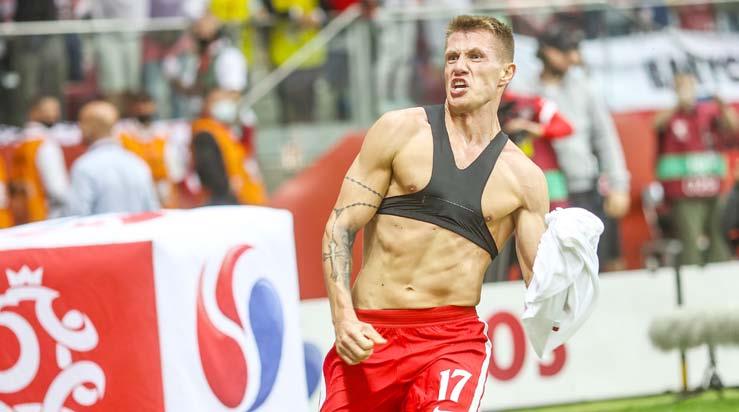
#
30
being number one, playing at the World Cup, the Euros, experiencing something cool. I went down in the history of Polish football. Fifteen years can look impressive”, said Fabiański, who was substituted by Radosław Majec ki in the second half.
In the last phase of the group stage, the match against Albania was crucial. The White-an d-Reds were not bothered by bottles flying from the stands and Świderski once aga in showed his sniper’s precision. A win in this match brought us significantly closer to the play-offs. „This is the most important victo ry in the qualifiers. We controlled the match. I will admit that I have played in very few sta diums where it was as loud as it was in Tirana. But fans in Albania could not accept the defe at. The bottles were full of water. It was dan gerous”, admitted Piotr Zieliński. The last phase of the qualifiers was marked by another very fruitful debut. Matty Cash wore the White-and-Red jersey for the first time in
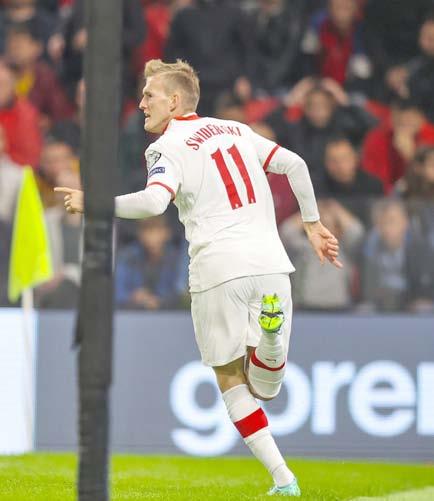
ŚWIDERSKI: A GOAL IN MY DEBUT MATCH CAN BE GRATIFYING
the match against Andorra. „It’s a dream come true and a special moment for me”, said the clearly moved 24-year-old, who could be do ubly pleased after the match. He appeared on the pitch in the second half and Poland secu red a place in the play-offs thanks to the win. In the match against Hungary, Cash appeared in the starting line-up and sang the Polish an them along with his colleagues. „I hope this jo
urney will continue. The national team training camp was fantastic. I enjoyed every moment. I love being here and I love playing for Poland. I hope I will be able to play many more times”, he said in the autumn. At the time, he proba bly didn’t expect that a few months later he would be able to celebrate one of the biggest successes of his career to date.
Tadeusz Danisz
In the match against Andorra, „Lewy” suffered an injury and the offensive duo, Krzysztof Piątek and Karol Świderski.
FIFA WORLD CUP I QATAR 2022 31
@Laczy nas pilka
“
„ZIELU”, LEAD THE WAY!
He is in excellent form and at the best age for a football player. He has experience from major events and enjoys great trust of head coach Czesław Michniewicz. The World Cup in Qatar could be Piotr Zieliński’s tournament.

32
Łączy nas piłka
#
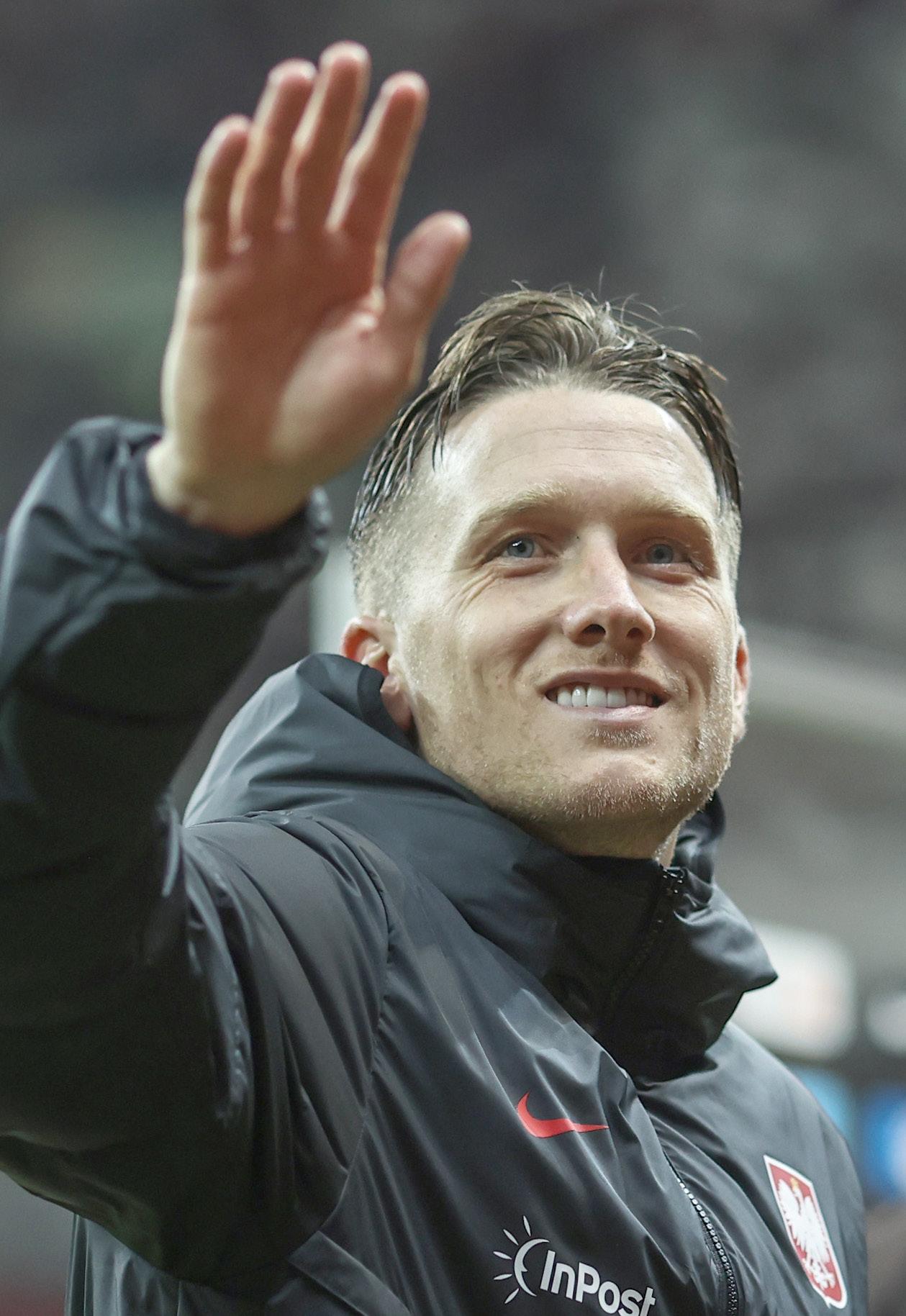
FIFA WORLD CUP I QATAR 2022 33
@Laczy nas pilka
The 28-year-old is a man who is rather reserved and not lo oking for cheap publicity, but he has been causing contro versy among Polish national team fans for years. Exclu sively for pitch-related re asons, though. Many people claim that, although he has played more than 70 matches for the national team, his very good matches can be counted on the fingers of one hand of a circular saw operator. Howe ver, there are also equally widespread opinions that he is an artist who defies all clichés and gives the team what an average consumer of football shows simply cannot see. There is no doubt that the Napoli player is an incredibly talented footballer, technically excellent, cle ver, kicking the ball with both feet with equal ease and quality. Different from everyone else. In these opinions, Zieliński somewhat falls vic tim to his own talent and skill. More is expected or demanded of him. Just as in school, it is re ceived differently when a pupil barely passing from class to class gets a C for a test and when a top student winning contests gets a C. The midfielder was and is judged more on his po tential than on what he actually showed in any given match. „If Zieliński wakes up one day and a switch flips in his head, we will have a player who will be the envy of everyone in the world”, these words, uttered by Jerzy Brzęczek after the 0-0 draw in the European Championship qualifying match against Austria in September 2019, have already entered the canon of Polish football journalism. The then head coach waited for an explosion of talent in one of his most im portant players. Today, „ Zielu” is a completely different player than he was three years ago. A better one, ready to carry the burden of re sponsibility for the performance of the Polish national team. „I don’t like judging my colleagu es. However, I have to say how much Piotr Zie liński has matured in the past months”, Robert Lewandowski recently told the „Piłka Nożna” Weekly. „You can see his hunger for more go als and assists. He has finally unlocked his po tential. He has made great progress. You can feel it when you play with him. I have noticed
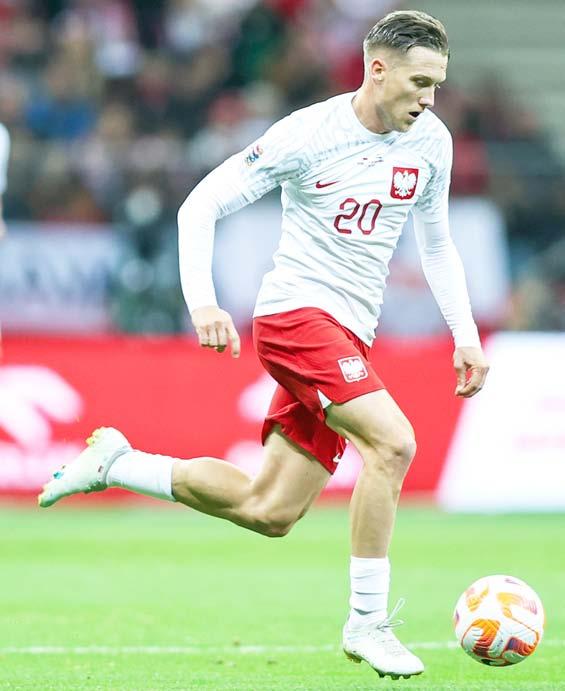
an important thing: the more Piotrek opens up to others off the pitch, the easier it is for him to play with others later on. He used to be rese rved privately and he was missing something during matches. This has now changed. We all understand his passes better. It helps me a lot that I have got to know Piotrek better, I can pre dict his passes or his movements on the pitch”, added the captain of the White-and-Reds. Zieliński made his national team debut in June 2013 against Liechtenstein. Head coach Walde mar Fornalik was bold in introducing the 19-year -old to the team. His successor, Adam Nawał ka, initially had little confidence in Zieliński, and the midfielder himself, warming the bench at Udinese, provided no arguments to change this state of affairs. He only played once in the Euro 2016 qualifiers - 24 minutes against Gibraltar
Since the start of the season, he has also been playing brilliantly for Napoli, who show impressive form in both the Champions League and Serie A.
#
34
Łączy nas piłka
in September 2015. He was already an Empoli player at the time. Nevertheless, the head co ach took the 22-year-old to France. Zieliński played 45 minutes there in the third match of the group stage against Ukraine, as a right mid fielder or even winger. Nawałka’s most com mon tactic was the 1-4-4-2 formation and the players who were to play in midfield - the pla ce where Zieliński feels most comfortable and is most effective – were Grzegorz Krychowiak and Krzysztof Mączyński.
After that tournament, the White-and-Red’s best tournament in the 21st century, the mid fielder moved to SSC Napoli and made his Champions League debut. A fundamental change also took place in the national team.
Piotr Zieliński became its foundation. In the 10 matches of the 2018 World Cup qualifiers, he was off the pitch for only 19 minutes and scored six assists in the competition. The World Cup itself, however, is another story....
„Fans have the right to expect the Italian vi ce-champion’s player to take responsibility for the game, create actions and be active. Me anwhile, the 24-year-old Zieliński hid behind his rivals, floated about aimlessly around the pitch, and when he did have the ball, he usu ally passed it helplessly to his closest partner, usually backwards. Many hoped that he wo uld take over the baton as the leader in Russia from his senior colleagues. Meanwhile, „Zielu” showed that he is completely not ready for it”, assessed Zieliński’s performance (he played in all three matches) sport.tvp.pl.
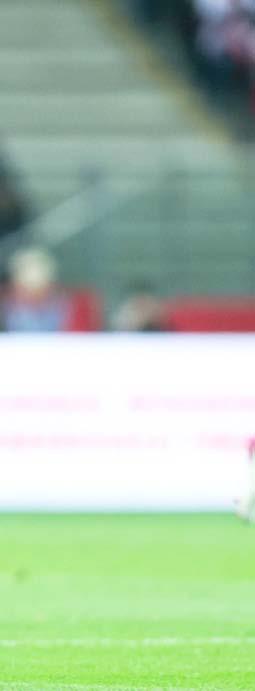
Subsequent years in the national team were unsatisfactory again. As far as the „artistic experience’ familiar from figure skating is con cerned, everything was fine. It was numbers
that were missing. 2019 – 10 matches, one as sist, 2020 – five matches, one assist, 2021 – 10 matches, a goal and three assists, including one at the European Championship finals. The general opinion was that he did better at the Euros than at the World Cup in Russia, but Poland once again failed to advance from the group stage.
Just before the tournament, there was an event that many believe had a huge impact on the renaissance of form that Piotr Zieliń ski has been experiencing in recent months.
At the end of May 2021, the player became a father. The new role and the responsibility it entails in private life is often reflected on the pitch too. „Zielu” matured as a person, but he also matured as a player.
He has already scored two goals for the Po lish national team in 2022, including one in the play-offs to qualify for the World Cup finals against Sweden in Chorzów. Making the most of a one-on-one situation with Robin Olsen, he proved that he doesn’t crack under pressure at moments of crucial tests. Since the start of the season, he has also been playing brilliantly for Napoli, who show impressive form in both the Champions League and Serie A. Zieliński has also gained more on-pitch freedom after Dries Mertens left and he complements Sta nislav Lobotka perfectly. In the past, the way he played lacked sparkle. Today, it is a pleasu re to watch the Pole working in the defence. Also his body language or even the nonchalan tly worn socks show that he feels strong, that he has become the leader of the Napoli team. This is the Zieliński the Polish national team needs in Qatar.
FIFA WORLD CUP I QATAR 2022 35
@Laczy nas pilka
Szymon Tomasik
He used to be reserved privately and he was missing something during matches. This has now changed. We all understand his passes better.
“
GOALS, IMPULSE AND PATH OF KAROL ŚWIDERSKI
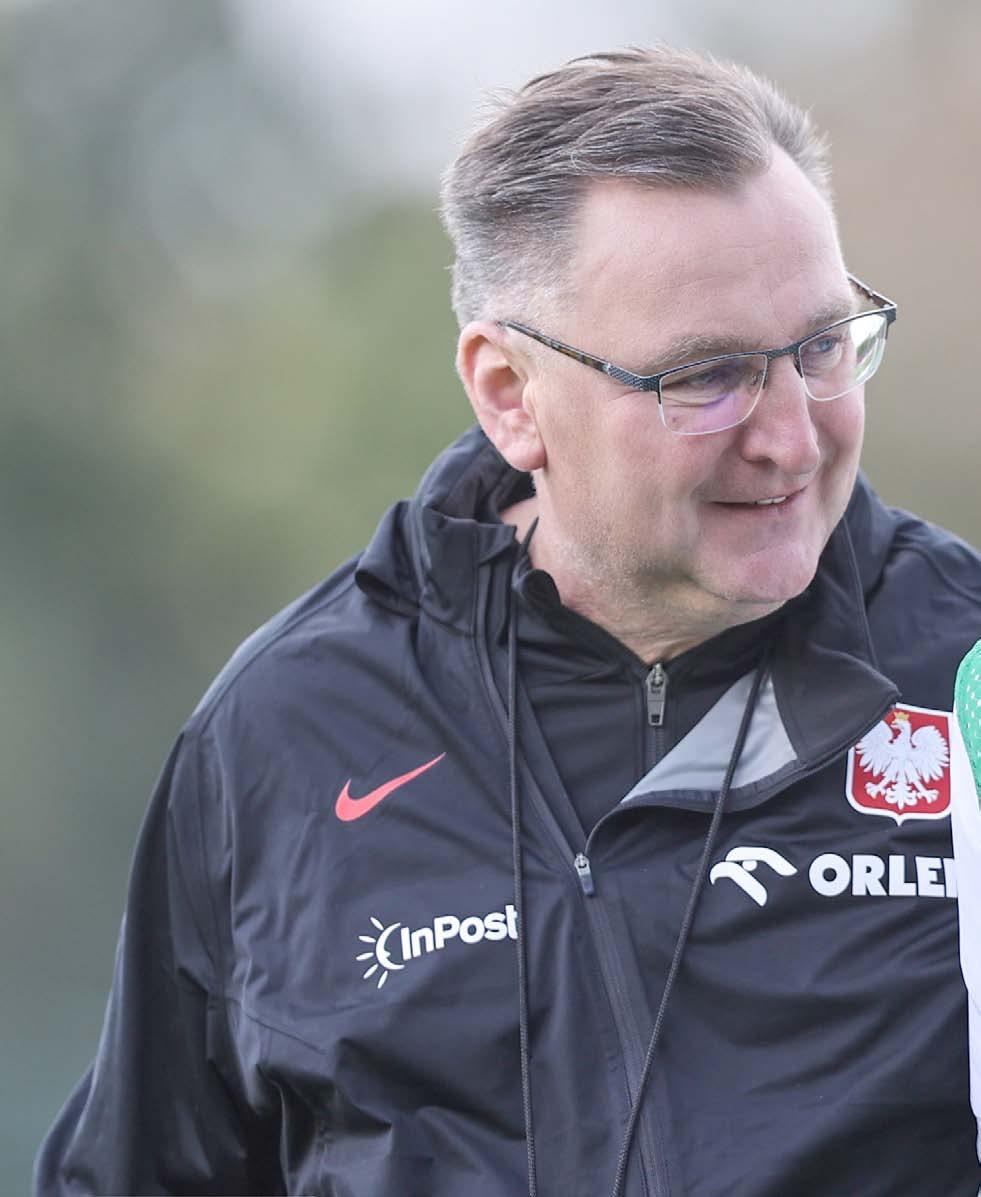
36 # Łączy nas piłka
He has not scored a goal in any of Europe’s top five leagues, he is not even the leading scorer of the competition in which he plays, and he has not been the hero of record-breaking transfers. However, Karol Świderski shows that there is no single right path to the first squad of the Polish national team.
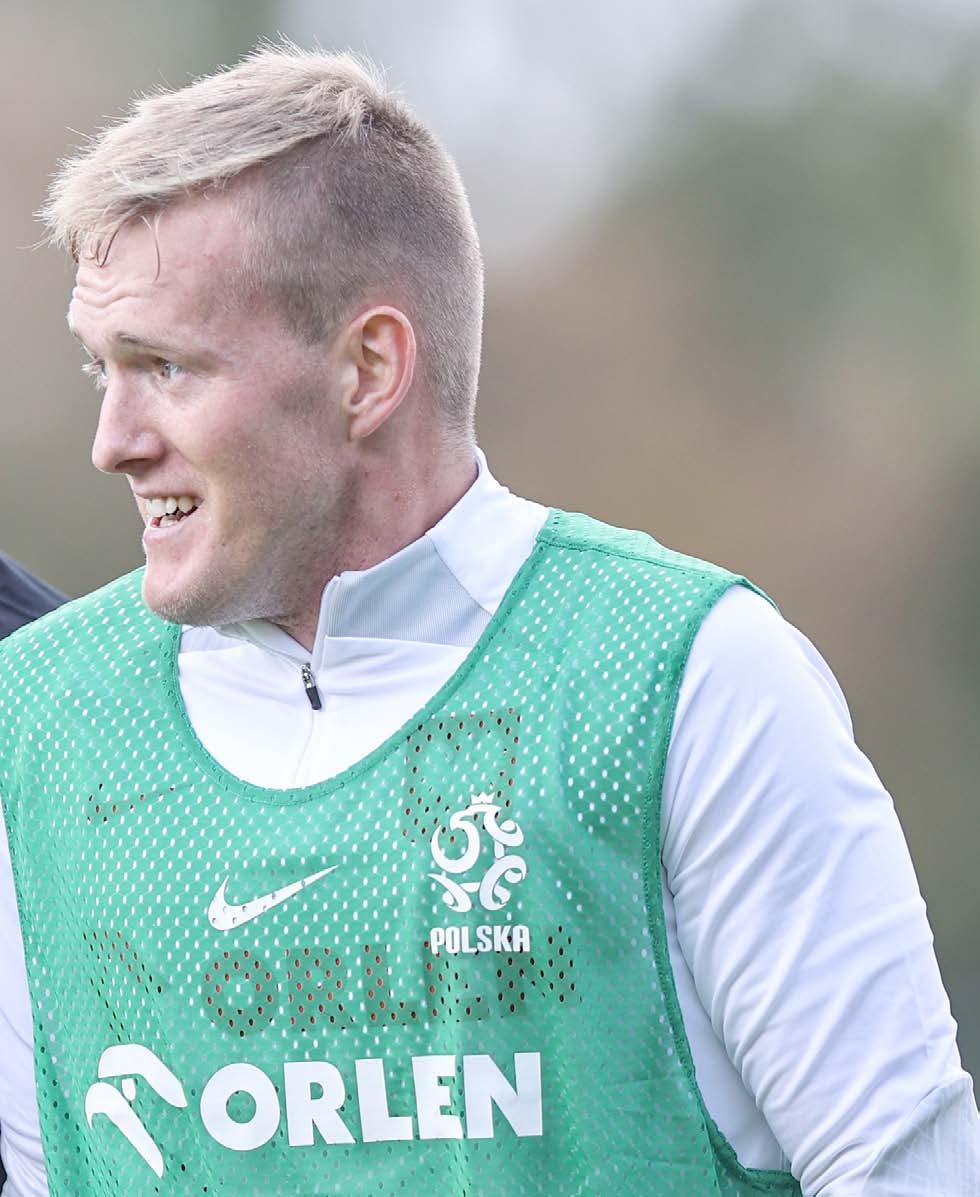 @Laczy nas pilka
@Laczy nas pilka
FIFA WORLD CUP I QATAR 2022 37
Robert Lewandowski sco red his eighth goal for the national team in his 29th appearance, Arkadiusz Milik scored a little so oner, in his 19th, while Krzysztof Piątek sco red it in his 16th. And only he is more ef fective than Karol Świderski in this respect, as for the Charlotte FC striker, the winning goal against Wales came in his sevente enth match for the national team. And it’s hard not to ask: when did it all go so quic kly and so well for the 25-year-old play er from Rawicz?
Świderski almost guarantees a goal in eve ry game, his average of minutes needed to score for the national team only marginal ly exceeds ninety. What is more impressi ve, however, is that he has been a substi tute on as many as nine occasions in se venteen matches so far. And initially that is how he was perceived: a player who will give a boost from the substitutes’ bench. Also by the fact that in the Ekstraklasa in three seasons in a row (from 2015 to 2018) he was in the top ten of players most often let in from the bench. In the latter (2017/18),
he entered as a substitute as many as 21 times, although his average of shots on tar get per 90 minutes was the second best in the entire Polish league.
He made his debut playing against An dorra and scored a goal, just before Euro 2020 he came on at the very end aga inst Iceland and scored again, in the cru cial World Cup qualifying clash against Al bania in Tirana he was also the hero, using a pass from Mateusz Klich. Finally, Świder ski, after barely twelve minutes on the turf of the Wrocław stadium, guaranteed the White-and-Reds a win against Wales in the Nations League.
His national team career to date can be boiled down to this: Świderski appears in the least expected moments of the na tional team’s matches. Just look at the last four games in which he scored go als – against Albania, Hungary and twice against Wales – when he took his only op portunities. What is even more impressi ve, however, is that the average score of goals expected (i.e. quality of chances) is very high with Świderski in the national team. It stands at 0.67, which means that with an average of less than three shots
He made his debut playing against Andorra and scored a goal, just before Euro 2020 he came on at the very end against Iceland and scored again, in the crucial World Cup qualifying clash against Albania in Tirana he was also the hero, using a pass from Mateusz Klich
Łączy nas piłka
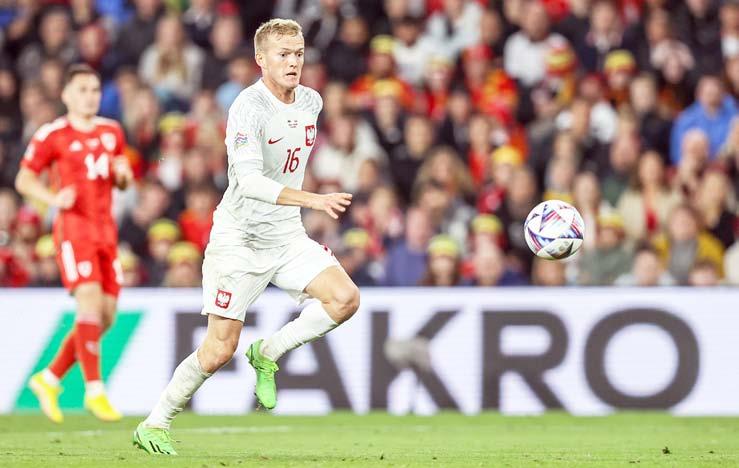
#
38
per 90 minutes, he is able to come up with very cle ar-cut opportunities. This is a very important trait in a striker’s game, but Świderski is not a classic „nine” like Lewandowski, Mi lik or Piątek. Each of his three senior teammates, both at club and on the national team, has performed alo ne in the attack. However, the Charlotte footballer is much more versatile. Analytics platform WyScout points to five different roles filled by Świderski du ring the Major League Soccer regular season. In the national team, he was also introduced from the start as one of two or even three strikers being on the pitch at the same time. Initially, Świderski benefited from the very offensi ve approach imposed on the team by Paulo Sousa. Already in his debut as the had coach against Hun gary in Budapest, the Portuguese was able to throw Lewandowski, Milik and Piątek onto the pitch at the same time. This is also why he needed more „nines” in his squad, so he sought diversity in the profiles of the strikers he called up. When asked about the call
file of play or skills is an increasingly rare occurren ce. By introducing a different type of striker – such as Świderski for Buksa in Tirana – another problem is caused for rival defenders. With Sousa, he made his debut and scored his first go als. In fact, Świderski emphasised that he owed a lot to the Portuguese. However, Czesław Michniewicz also believed in the striker’s abilities when he called him up to the youth national team. He appeared for him in eleven matches, came on the pitch in the play-offs against Portugal, and also played in the last Euro Un der-21 clash against Spain (0:5). He wasn’t a leading figure, he didn’t even score any goals in this age ca tegory, but... he kept getting called up. It was much the same in the senior national team, with the Cardiff match proving to be the culmination. After the national team’s weaker match against Belgium, he was given a chance in Wales and simply made the most of it. After the game, Czesław Michniewicz em phasised that „Świderek” was an important part of his national team. „He had some health problems, chan
ŚWIDERSKI ALMOST GUARANTEES
A GOAL IN EVERY GAME
-ups of Adam Buksa and Świderski, Sousa firstly po inted out the differences. „Karol is more mobile, has a good technique and can be even better at finishing actions. Adam is very strong, does a great job in the penalty area, not only when it comes to heading. He also has a sensational left foot”, he explained. This difference in the profiles was important because non-standard solutions may be needed in matches. Swapping players „one-to-one” in terms of their pro
ged the league, now he plays regularly. Today is good, very good, you could see a lot of freshness in his ac tions. But if his team doesn’t get into the play-offs, we will have a big problem with him. And I feel very sorry about that”, he stipulated. His performance in Cardiff showed his full potential. Al though he only completed eleven passes, as many as nine were accurate and three-quarters of his actions were scored as successful. He won as many as thirteen
FIFA WORLD CUP I QATAR 2022 39
@Laczy nas pilka
of his nineteen tackles, but where he tackled them was also important: he scored seven on each side, had as many in his own half (losing only one of them), and picked up three second balls on top of that. His partnership with Le wandowski was not direct – the captain’s as sist was only one of three passes exchanged between them – but Świderski’s movement, taking on tackles and rivals was an important aspect that allowed the leading striker to con tribute more to the game. Besides, Lewandowski in the national team used to emphasise after matches that were more difficult for him, that he makes so much movement, he focuses the rivals’ attention on him in such a way that his teammates can benefit from it. Now it is the same with Świderski, who with his mobility opens up spaces especially where it is crucial for the team: between the opponent’s defence and midfield line. This is exactly what happened with the goal scored against Wales: by ma king a run behind the defence, he gave Ja kub Kiwior the opportunity to slot the ball inside to Lewandowski, who with a fanta stic pass opened up a chance for Świder ski. The whole action, as well as the coope ration of these two strikers, was exempla ry in this situation. Świderski arrived at the September training camp after a match against Chicago Fire in which he scored two goals. A week earlier against New York City, he scored an assist. He finished the season as Charlotte FC’s top scorer and second best assistant. His dispo sition meant that already in the summer, ba rely six months after his transfer to the Uni ted States, there were rumours of a return to the European leagues. „That’ s the world of football. Karol is our captain, we absolu tely love him, he is enjoying life in Charlotte and playing in the MLS. That’s why he’s unto uchable for now. There is not even a discus sion about the transfer”, said Zoran Krneta, the club’s sporting director, at the beginning of October. Such a position could be wanted by many other strikers – as well as the chan ce to play in the World Cup.
 Michał Zachodny, Viaplay
Michał Zachodny, Viaplay
# 40
Łączy nas piłka
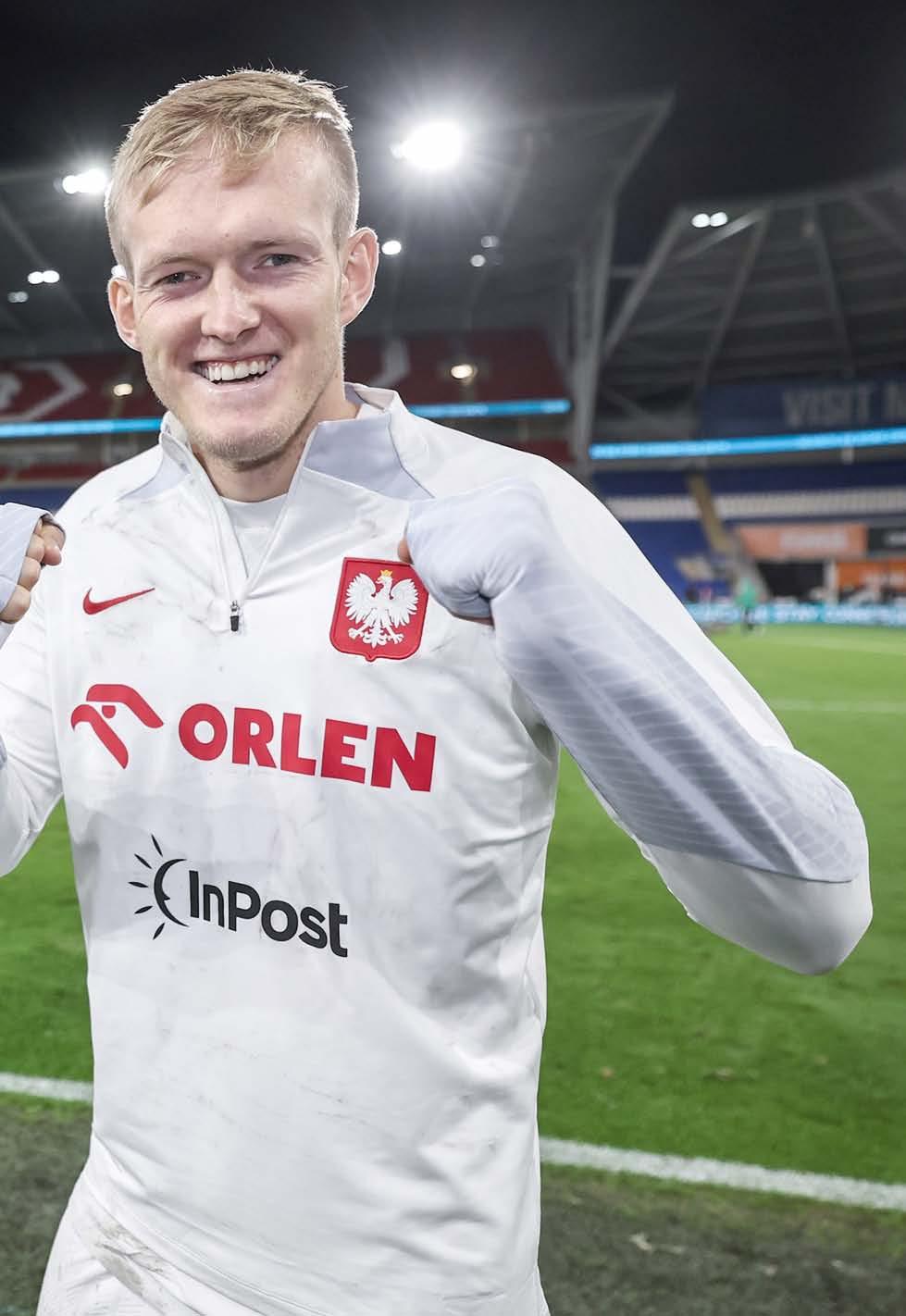
41

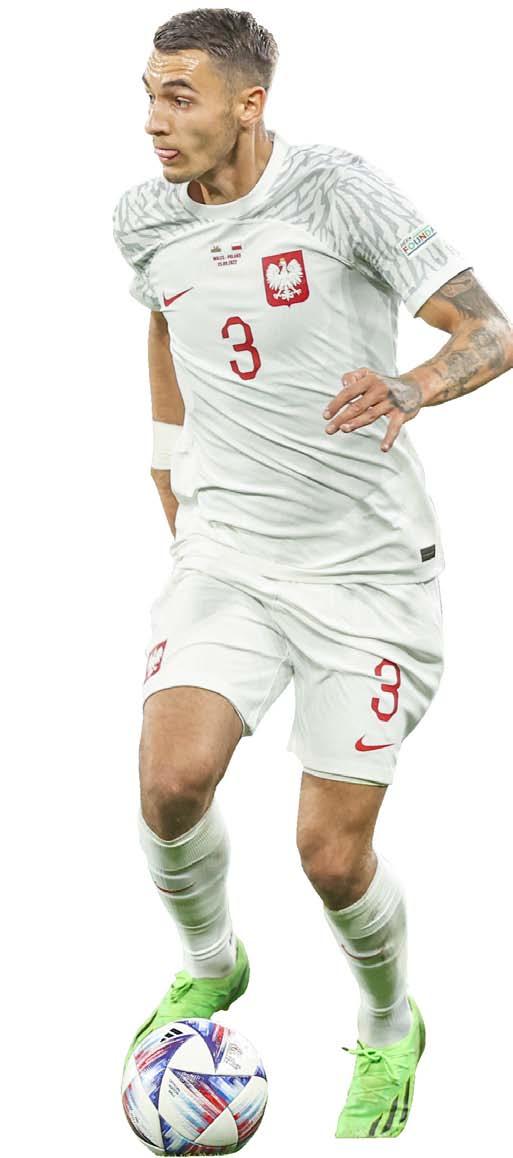
„WHAT A PLAYER HE IS!”
IS JAKUB KIWIOR COMING INTO THE SPOTLIGHT?
Jakub Kiwior is one of the fastest growing players in the Polish national team. In the last days of August 2021, he was still a player at MŠK Žilina, only to become a candidate to play at Italy’s strongest clubs a year later and force his way into the Polish national team’s starting line-up.
Jakub Kiwior’s story began in Tychy. The 4-year-old coincidentally took his first steps at a local club called Chrzciciel (Eng. Baptist). He later progressed through the ranks in lo cal football, wearing the colours of Grom, APN GKS and finally anchoring in the GKS Tychy academy. In the first years, it did not seem as if Kiwior were to become a defender. He played on the offence and returned from many tournaments with the top scorer title. „It was a great time, a lot of competitions won. Kuba won a lot of prizes, also for the youngest player in the tournaments, as he mainly play ed against colleagues born even in 1997, who were up to three years older than him”, recalls Krzysztof Berger, Kiwior’s first coach.
As time passed, „Kiwi” was moving lower and lower on the pitch until he found himself in the defensive midfield. And this proved to be a great idea. In 2016, he was inclu ded in the GKS Tychy first team but he never made his debut. That is because he was spotted by Anderlecht scouts and moved to the club from the Belgian capital. „He is an extremely promising player with a high level of skills necessary for a defender in modern football. He bril liantly plays with his left foot and shows great composu re and maturity, despite his young age”, said Michel Thi ry, who recommended Kiwior to Anderlecht.
At the time, the player from Tychy was already in the ju nior national team. In 2016, he played for the U-16 natio nal team and kept rising through the ranks. In Brussels, he added the Belgian youth championship to his account and also played in the Youth Champions League. After playing in the reserve team, he did not get his chance in the first team after all. He decided to change his surro undings and chose a rather unusual destination for a Po lish football player - Slovakia. He checked in at Železiar ne Podbrezová, where he finally entered the world of se nior football. He made his debut in the Slovakian league on 16 February 2019. „In my opinion, it wasn’t bad. It was a good match, the most important thing is that my team won. I don’t know how it all looked from the side but I feel
that I could have done even better, that I could have ap proached a few situations differently”, he said after the opening match against FC Nitra. „For me, playing with the seniors was new, although there was no surprise. A lot of physical play, tall players and thus high balls, fast rivals, but I expected all that. After all, I wanted to get into se nior football. This was the main reason for the change of club. I knew that I would have had a hard time getting into the first team at Anderlecht, and it was high time for me. I also didn’t want to transfer to possibly just tra in with the team. I needed a chance to play. An opportu nity arose in Slovakia and I took it”, he added. By the end of the 2018/2019 season, Kiwior had played a total of 14 matches in the colours of Železiarne. He dre amt of being called up to Poland’s U-20 national team which was preparing for the World Cup, played, inciden tally, on Polish stadiums. „I’ve already found my way into senior football, maybe that will give me an extra edge, if I play, of course. So far, however, I have not received any si gnals. I am very calm about all this. It’s all up to the coach, I just want to do my job to the best of my ability”, he said in February 2019. In the end, Jacek Magiera, who was in charge of the Under-20 national team, did not decide to use Kiwior’s services, but the young defender’s excellent attitude at the club earned him a transfer to MŠK Žilina. In his premiere season at Žilina, Kiwior balanced betwe en the first and second teams. However, he consisten tly built his position in the team, and after the U-21 Eu ropean Championships and a shift in age groups, he also became an extremely important element in the youth team led by Czesław Michniewicz. His partners in the defensive midfield changed several times but Kiwior re mained irreplaceable, even after the next coach, Maciej Stolarczyk, took over the team. In autumn 2021, he fo und a new place of employment. His attitude was reco gnised by Spezia Calcio’s activists and they brought in the promising defender. The Italian club paid more than two million euros for the Pole. The leap from the Slova kian league to Serie A seemed very big and Kiwior’s first months at Spezia seemed to confirm this. „Kiwi” has not
FIFA WORLD CUP I QATAR 2022 43
@Laczy nas pilka
made his debut in the new colours until De cember. However, once he made it into the starting eleven, he did not give up his place in the line-up until the end of the competi tions. He finished the 2021/2022 season with more than twenty matches to his cre dit, which could be considered a great result. In June, „Kiwi” received an amazing reward for his attitude. The young defender’s growth was appreciated by Czesław Michniewicz, who was well aware of the potential of the player from Tychy. The head coach of the national team called up the Spezia defender for the Nations League matches. Although it seemed that Kiwior would only come to the training camp to learn, the opposite happe ned. On 11 June 2022, he made debut in the
Therefore, it is no surprise that activists from much bigger clubs than Spezia Cal cio have started looking at Kiwior. The me dia began to speculate about AC Milan’s interest. Soon, other teams joined the list. Villarreal CF, Juventus Turin, AS Roma, In ter Milan or even... FC Barcelona. Even Ro bert Lewandowski strongly complimen ted the younger colleague. „Kiwior? That’s a player! It might not be that obvious stra ight away during training, but when I saw him in the warm-up before the match aga inst the Netherlands... The crosses, the way he moves, the positioning of the foot, eve rything. He played an amazing match aga inst the Netherlands, he has huge poten tial”, said „Lewy”.
LEWANDOWSKI: KIWIOR? THAT’S A PLAYER!
Polish senior national team in a match aga inst the Netherlands. He also played in the match against Belgium three days later. He performed so well in both of these matches that he was already sure to play at the Sep tember training camp. He played in the mat ches against the Netherlands and Wales for full 90 minutes, impressing with his on-pitch performance especially in the latter. He pre sented himself not like a player who is only playing for the senior team for the fourth time but like a routine player.
Thus, Jakub Kiwior came into the spotlight. Even considering what clubs he is be ing linked with, one thing is for sure. There is no risk that the player from Tychy will let it go to his head. He does not seek interest, he does not seek media attention. Off the pitch he seems like an introvert, a quiet, calm guy. On the turf, however, he is turning into a man who wants to play first fiddle in the defensi ve line and knows how to do that. And that’s what matters the most, after all.
Emil Kopański
The young defender’s growth was appreciated by Czesław Michniewicz, who was well aware of the potential of the player from Tychy. The head coach of the national team called up the Spezia defender for the Nations League matches.
Łączy nas piłka
#
44
“
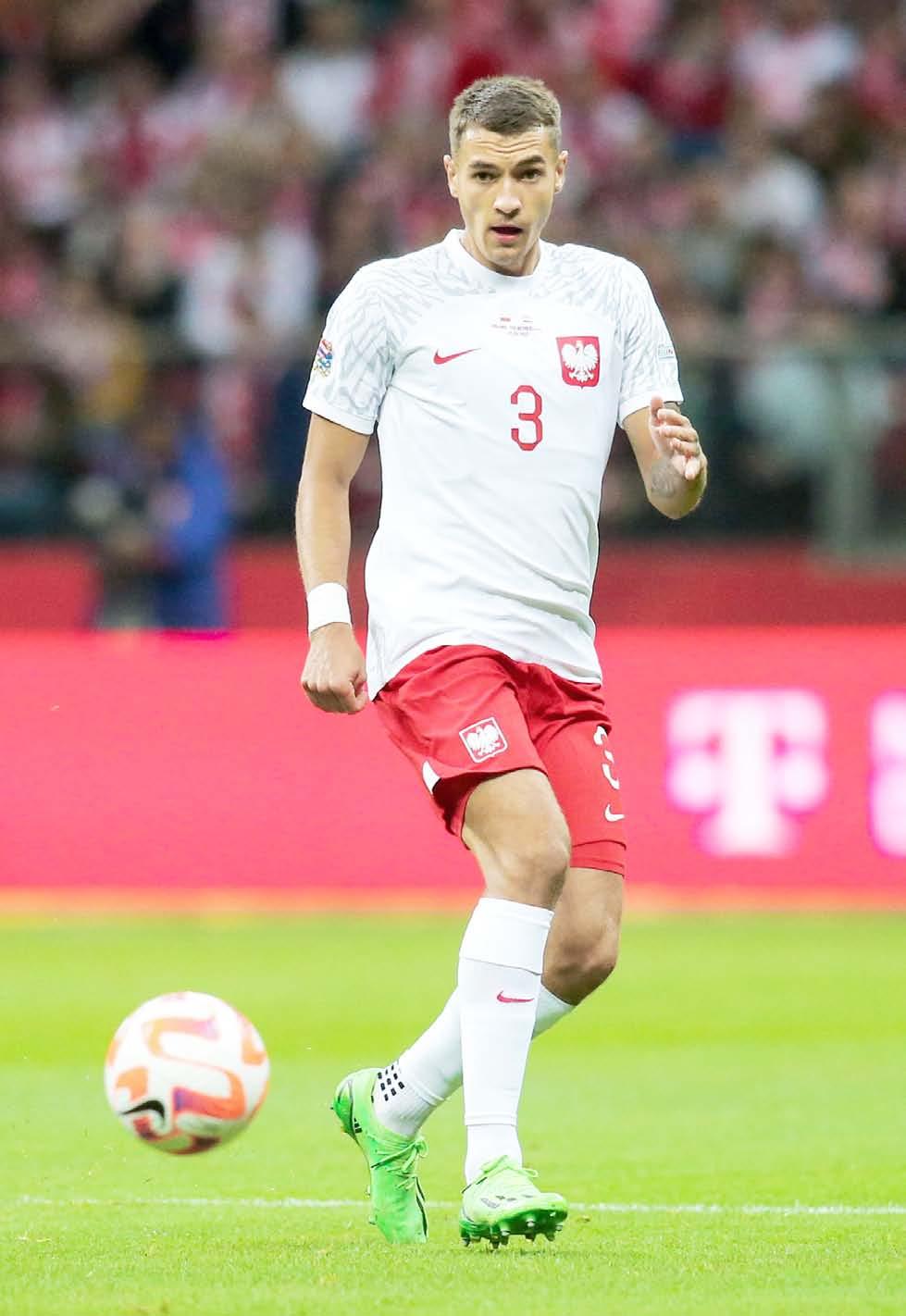
FIFA WORLD CUP I QATAR 2022 45
@Laczy nas pilka
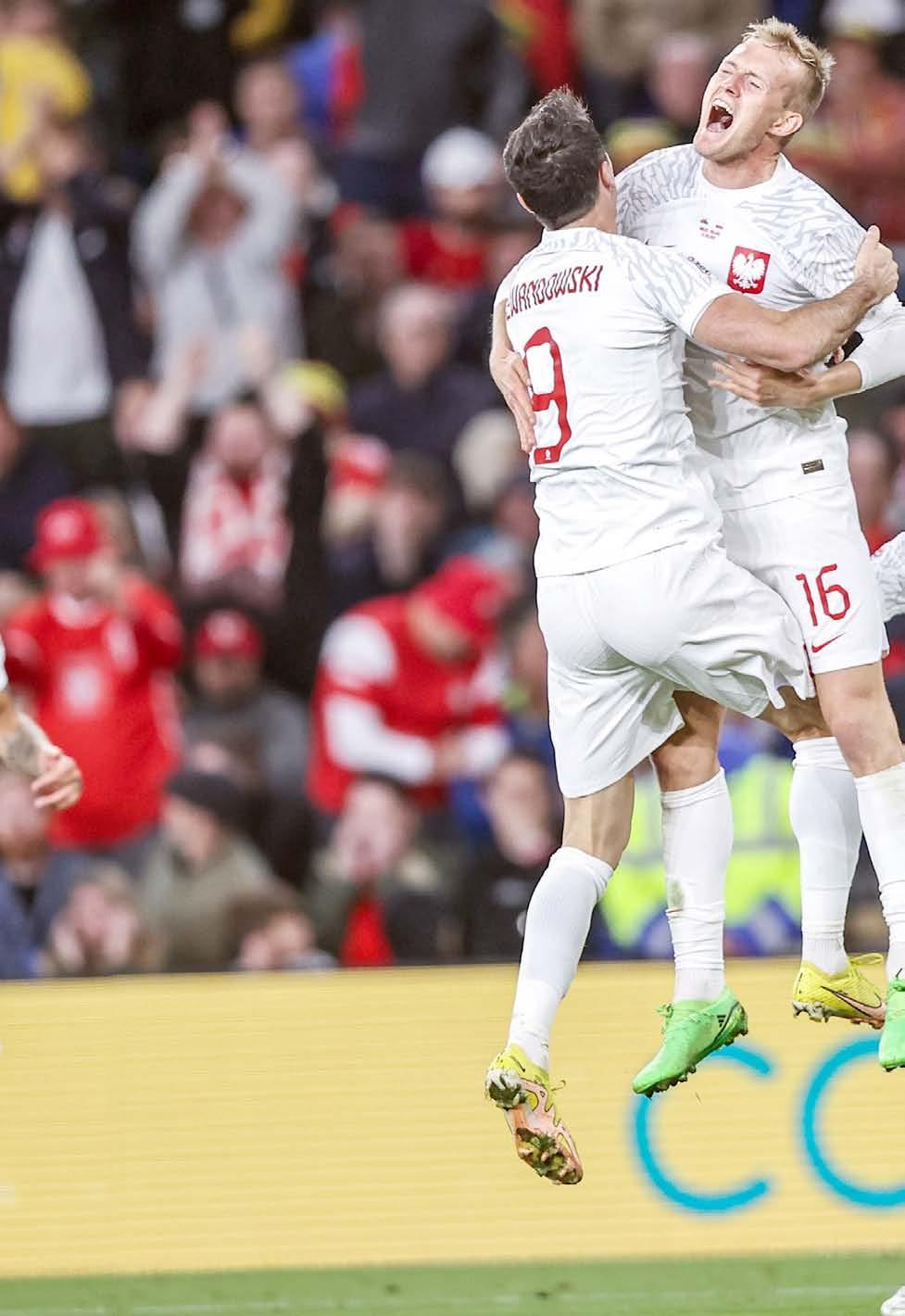
46
THE POWER OF CONNECTIONS, THE „INNER CIRCLE” AND THE FUTURE ON THE LEFT WING
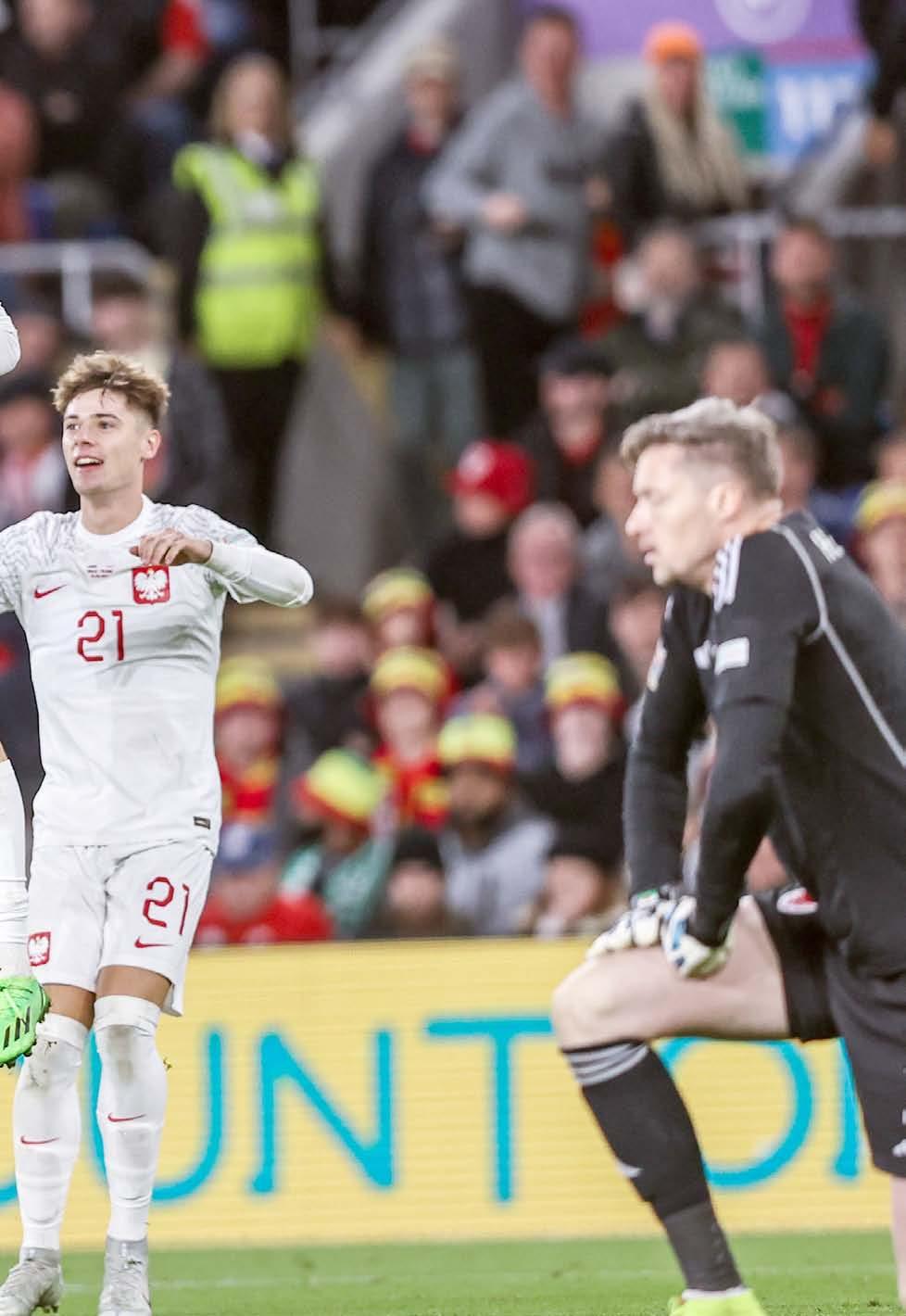
FIFA WORLD CUP I QATAR 2022 47
@Laczy nas pilka
The more strong on-pitch connections, the better and more dangerous the team is. The importance of duos or trios of central defenders, the cooperation of midfielders or strikers is most often pointed out. The Polish national team at the World Cup can surprise rivals with even less schematic solutions.
The last time the White-and-Reds advanced from the knockout sta ges of a major tournament – at the European Championships in France – the strengths of the team led by Adam Nawałka were the duos. In the middle of defence, Kamil Glik and Michał Pazdan worked out an excellent collabo ration, Grzegorz Krychowiak and Krzysztof Mą czyński perfectly played in front of them, and in the attack, Robert Lewandowski and Arka diusz Milik threatened the opponents. The concept itself is not new. Four years earlier, when the Euro was hosted by Poland and Ukra ine, it was Franciszek Smuda who wanted the strength of the co-hosts’ national team to be made up of three players playing for the same club: Łukasz Piszczek, Jakub Błaszczykow ski and Robert Lewandowski. Although the latter two scored a goal each in the matches against Greece and Russia, the team proved too predictable in doing so, fa iling to offer enough solu tions to get out of the group.
It was only in 2016 in France that „Kuba” and „Piszczu” were able to relate to their best moments with Borussia Dortmund, as they were one of several strong on-pitch connections. In fact, the success story of Polish football is based on such collaborations. It started with Kazimierz Górski, who, having been able to ob serve championship tournaments before he even got to the World Cup while leading the na tional team, came to the conclusion that rely ing on club duos and trios could yield great re sults. The head coach of the 1974 third team in the world even had a specific name for such connections, he spoke of the „inner circle”. Le sław Ćmikiewicz, Robert Gadocha and, of cour se, Kazimierz Deyna knew each other very well from Legia Warszawa, Henryk Kasperczak and Grzegorz Lato from Stal Mielec. As many as five players from Wisła Kraków and four from Gór nik Zabrze were in the 22-man squad. This is something Czesław Michniewicz will not repeat, even if he wanted to. However, for
48
#
Łączy nas piłka
him too, knowing the players is a very impor tant aspect. When he called up a wide-ranging 47-strong squad for the World Cup in Qatar, he said that one important criterion was to see which players he had already had the oppor tunity to guide. In such cases, not only did he already have a relationship built up with the representative, but he also knew everything about him from a tactical capacity point of view and was aware of the strengths as well as the weaknesses. The players themselves were also aware of the expectations of this particular coach, his methods and his plans. However, in the history of football at interna tional level, there are fewer and fewer exam ples of teams that can be built on connec tions developed within clubs. The opening up of the transfer market and the flow of players has had the effect of blurring the distinctive styles of play for specific nations. Even the exceptions – although ending in great trium phs – confirm the rule. Spain in 2010 were made up mostly of Barcelona and Real Madrid players, basing their style on the first of these clubs and ended up with a world champion ship. Four years later, Joachim Loew followed a similar path, with seven players from Bay ern Munich and four from Borussia Dortmund in his squad, although there were some who
had already played for these clubs. Although we are talking about players from clubs that compete on a day-to-day basis in their dome stic backyards, the had coaches were able to bring them together with a shared ambition that only underlined their footballing quality. Most head coaches inevitably have to rely on what they can work out in just a few training camps a year. Czesław Michniewicz has had only three training camps since taking over the national team until the World Cup: befo re the play-off with Sweden, four Nations Le ague matches at the end of the season and the completion of these competitions in Sep tember. Although he introduced new players, he also held on to those who had spent years stabilising the „backbone” of the team – from the goalkeeper, through the middle of defen ce and midfield, to the striker. However, what must not be underestimated is what has been forged elsewhere by players who – even wi thout playing with each other at the club – im mediately felt that working together on the pitch they felt natural, at ease and could give something extra.
Such is the case with the left wing. Due to the fact that Błaszczykowski and Piszczek played on the right wing for years, the natio nal team’s play was often tilted towards them.
Such is the case with the left wing. Due to the fact that Błaszczykowski and Piszczek played on the right wing for years, the national team’s play was often tilted towards them.
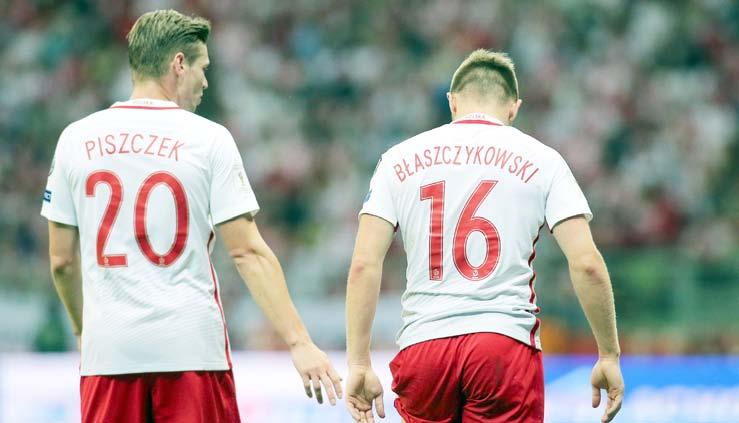
FIFA WORLD CUP I QATAR 2022 49
@Laczy nas pilka
They made more contacts with the ball, that’s where most of the action was directed, while the left wing – such as in 2016 – was the one with more burst, mainly thanks to Kamil Gro sicki. Not necessarily giving less, but used in a different way. That may now be changing. It is enough to look at the goals scored by the Polish national team in this year’s UEFA Na tions League. All three of the goals against Wales were the result of actions carried out on the left wing, even the one by Matty Cash against the Netherlands in Rotterdam was the attack built on the opposite wing for this defender, accelerated by Nicola Zalewski with his pass. The goal scored in Brussels against Belgium was a throw-in on the left and the en trance of Piotr Zieliński into the centre of the pitch. In fact, only the second goal scored for the Netherlands was the result of direct play through the central „corridor”, starting with a long kick by Łukasz Skorupski. However, the highlight of what is created in that zone – regardless of the setting – should be the goal scored against Wales in Cardiff. Zie liński coming down to the defence to get the ball, Jakub Kiwior joining the action bravely, Za lewski giving width to the pitch, two more stri kers showing up to play there and then – per fectly exchanging positions and the ball for Ka rol Świderski to finish the action. A chart of the average positions of Poland’s representatives showed that it is Kiwior, Zalewski and Zieliński who are playing close together, with Robert Le wandowski also looking to play around them. Zieliński and Zalewski exchanged twenty pas ses in this match. It was the third most frequ ent combination in the Polish national team, and one with the perfect proportion: the mid fielder and the wing-back played the ball to each other ten times each. Both also had the highest number of dribbling attempts, plays into the attacking zone and into the opponen t’s penalty area. On top of that, Kiwior, whose pass propelled the goal-scoring action, and who had the highest number of passes made for ward out of the defenders. Even from the sta tistics, we can see more of an offensive-min ded side of the national team, and so it is no
surprise that Lewandowski wants to operate closer and closer to this group of players. He has made almost as much activity in this side sector as he has in midfield, where the striker should usually be. The difference in Zieliński’s game is even more decisive: 41 actions closer to the left, only 11 – from the right. All of the Po les’ successful dribbling in the Welsh half took place where the wing-back – Zalewski – sho uld mainly run, but the interchangeability of po sitions resulting from this cooperation meant that Lewandowski and Zieliński also swung effectively there.
It is still far too early to refer to this very smo oth cooperation of several players to historical duos or trios, but at the same time it is worth looking to the future. Piotr Zieliński has ente red the best age for a footballer and is the le ader of Napoli’s offensive. Jakub Kiwior play ed the most regularly of the defenders in the autumn and at the highest level.The 22-year -old is already attracting attention from bet ter clubs than Spezia. Two years younger Ni cola Zalewski has already won a European tro phy, is learning from one of the best coaches in history and is still developing his talent. It’s a potential that the Polish national team co uld benefit from for years to come.
Michał Zachodny, Viaplay
The strengths of the team led by Adam Nawałka were the duos. In the middle of defence, Kamil Glik and Michał Pazdan worked out an excellent collaboration.
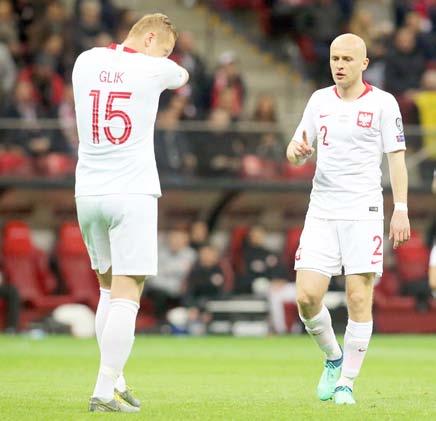
#
Łączy nas piłka 50
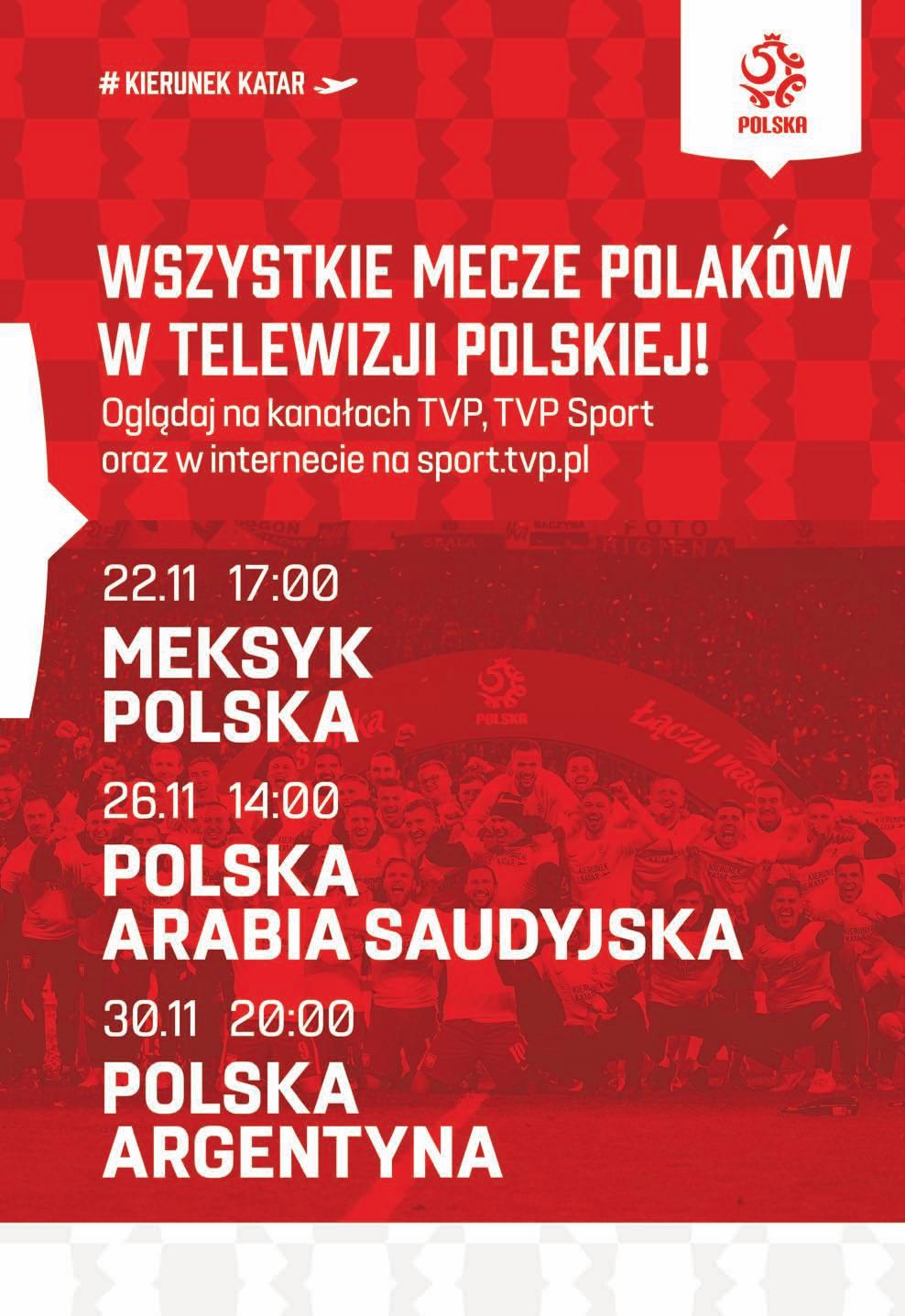
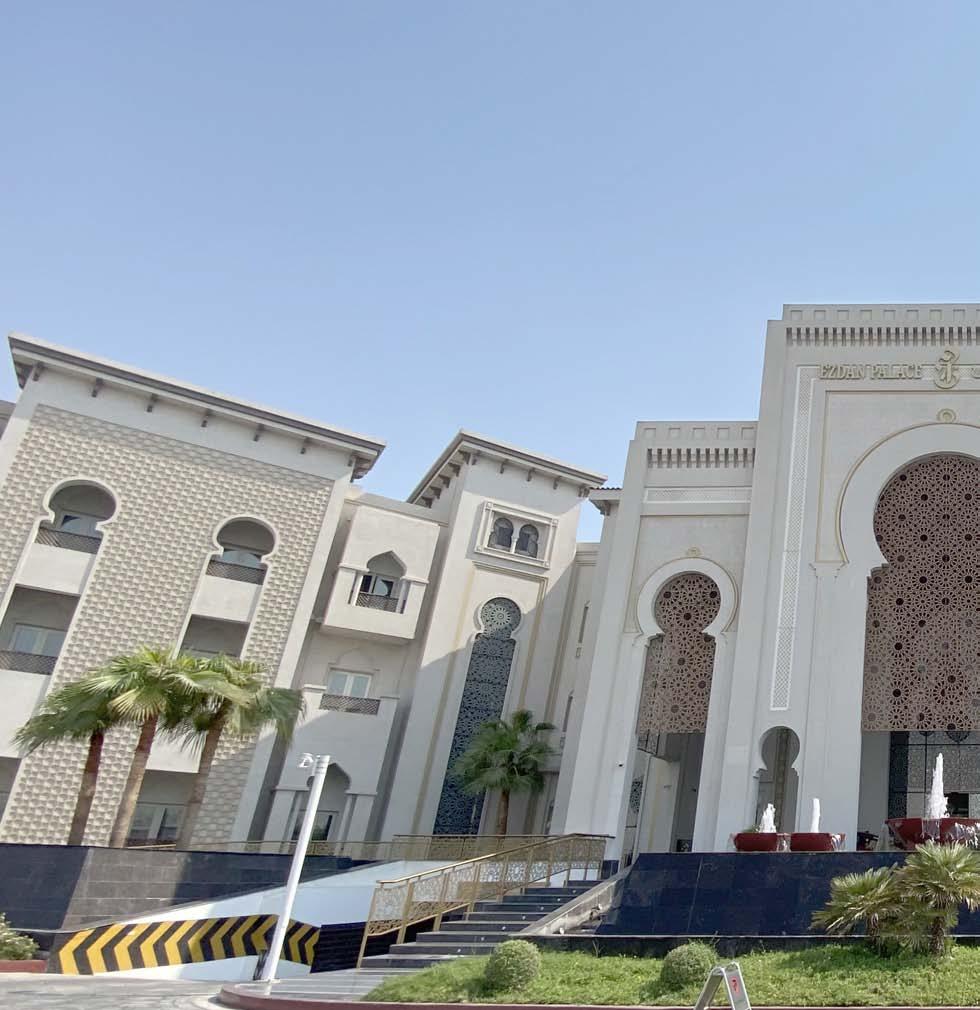
52
#
OUR FACILITIES. IT IS HERE THAT THE POLES WILL PREPARE FOR THEIR MATCHES AT THE WORLD CUP
At the previous World Cup, the Polish national team travelled thousands of kilometres, checking into several hotels between matches, which required a great deal of effort to keep logistics at the highest level. It will be very different at the World Cup in Qatar. The hotel and our training facilities are located very close to each other and our commutes to matches will take around a dozen and a few dozen minutes. Where exactly will the Poles be stationed during the World Cup?
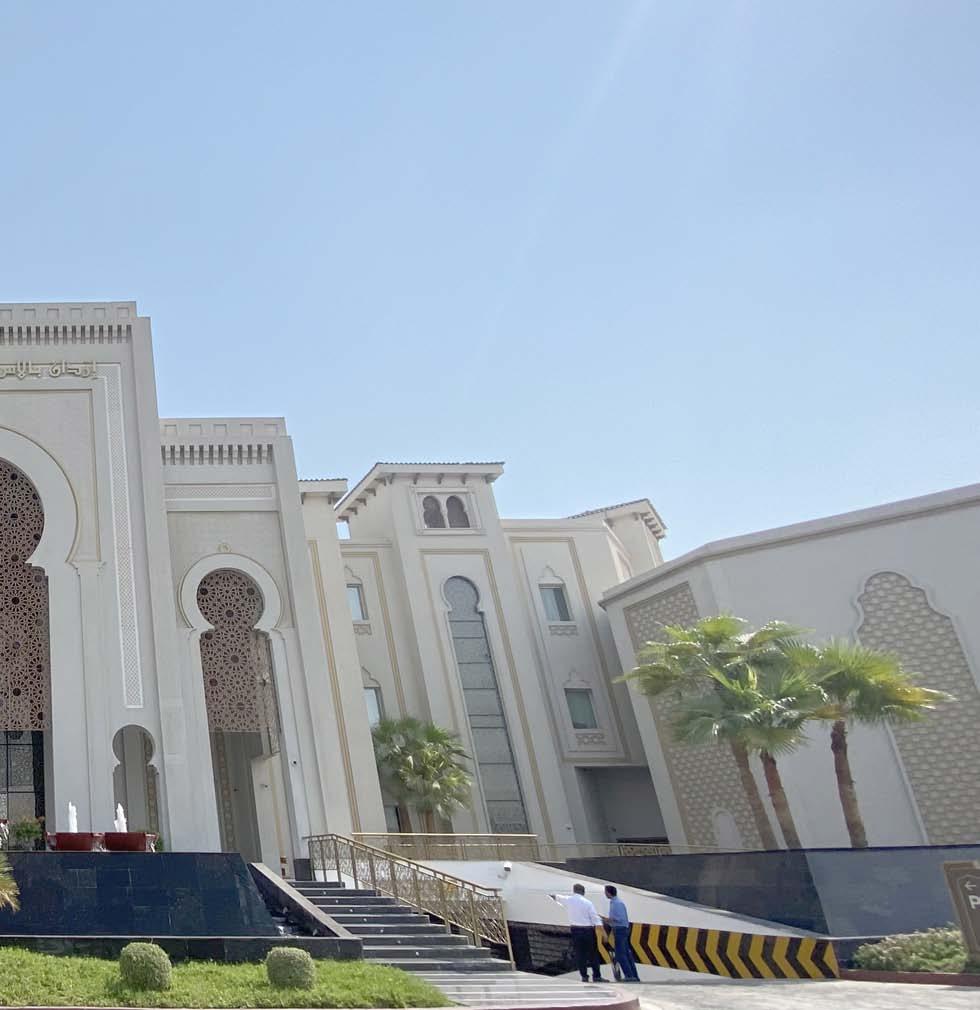
FIFA WORLD CUP I QATAR 2022 53
@Laczy nas pilka
Ezdan Palace – this is the ve nue that the Polish national team will be staying at thro ughout their stay in Qatar. One of the world’s most pre stigious and luxurious hotels officially opened in May 2018, located between the old and new districts of Doha, close to Qatar’s largest shopping centres. The hotel has an amazing ar chitectural design and is equipped with 195 richly furnished rooms and suites. „We deliberately chose this place right after the World Cup group draw in ear ly April. We looked at several hotels that FIFA offered us and decided that this one would be the best for us. We didn’t want to stay in the tower blocks in the city centre because some of the teams will be stationed there. Besides, there will be no free space where the players can relax. We wanted more of a smaller facility where we could feel comforta ble. It is crucial that the hotel will be vir tually at our disposal. It was booked for the Polish national team and the people who will work with the team during the World Cup”, said national team coach Czesław Michniewicz.
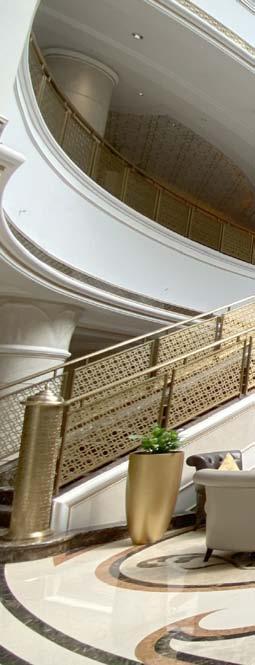
The functioning of the team at the hi ghest level during the World Cup was a priority for the White-and-Reds’ co ach and the Polish team should have everything they need at Ezdan Palace. „We have a briefing room that meets our requirements, rooms for activation on match days. We will also use the gym, which is essential for proper pre paration. We want to play in the tour nament for as long as possible, so eve ry aspect is very important to us. The rooms are in perfect condition, eve rything is exquisitely finished. I know that we are in good hands. The direc tors and staff made everything we wanted available to us. I think we will have nothing to complain about. During an earlier visit, we were accompanied by Tomasz Leśniak, our chef who looks after us. He has already been to many events and knows very well how to or ganise everything”, said the Polish na tional team coach.
Compared to previous World Cup to urnaments, the one in Qatar will be completely different in terms of offi cial training sessions or press confe rences. There will be no opportunity to
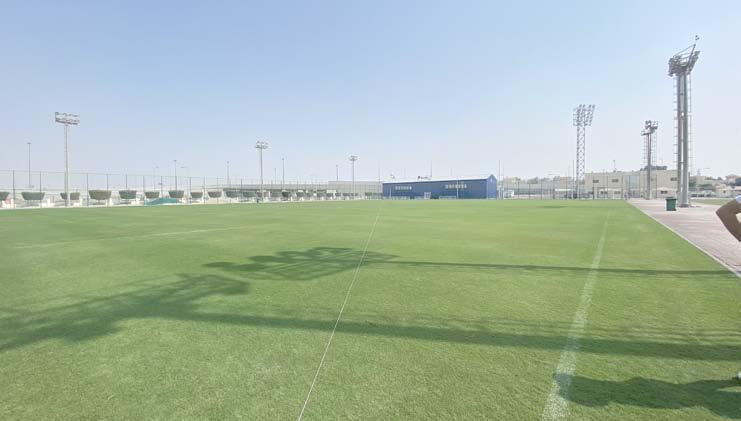
# Łączy
54
nas piłka
train on the World Cup pitches and all Polish national team activities will take place at the training facility. However, the conditions at the World Cup in Qa tar will, from a logistical point of view, be very beneficial for all participants. It is crucial that the teams will avoid arduous commutes and will not have to travel huge distances between the hotel and the training facility. Upon ar rival in Qatar and check-in, the players will travel by buses. Another advantage is the distance be tween Ezdan Palace and the training facility of the Polish national team. It will only take ten minutes for the Polish players to get to training by bus. The fa cility is equipped with two training pit
ches and an air-conditioned gym. It was already reported during the April visit what our staff would need. „I am ple ased that everything is well organised here. It is great that we had the oppor tunity to see our centre beforehand and it already looked very good. Then the heat in Qatar reached fifty degre es and the turf didn’t grow as it should have, but there are specialised profes sionals taking care of it and I think it will be as we planned. It was worth coming here and checking everything out. We wanted to verify our progress so that we would not have any problems and avoid disappointment”, concluded Cze slaw Michniewicz.
Jacek Janczewski
„It is crucial that the hotel will be virtually at our disposal. It was booked for the Polish national team and the people who will work with the team during the World Cup”, said national team coach Czesław Michniewicz.
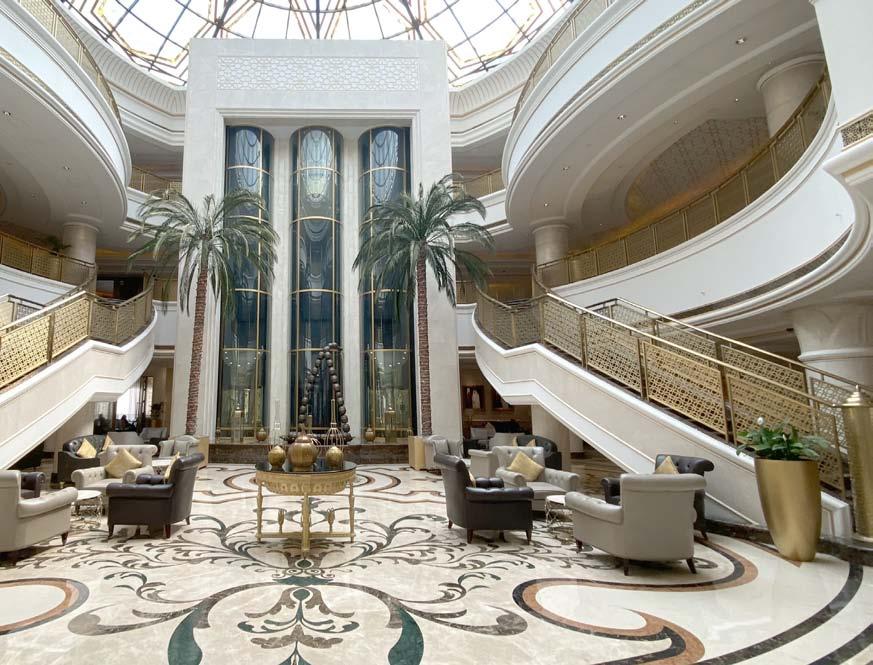
FIFA WORLD CUP I QATAR 2022 55
@Laczy nas pilka
One thousand kilometres from the Polish national team’s base in Sochi to Volgograd. Over one and a half thousand to Moscow and two thousand to Kazan. During the previous World Cup in Russia, the White-and-Reds were condemned to pre-match plane journeys lasting many hours. However, this is in the past, because – as we have become accustomed to – things will be different in Qatar.
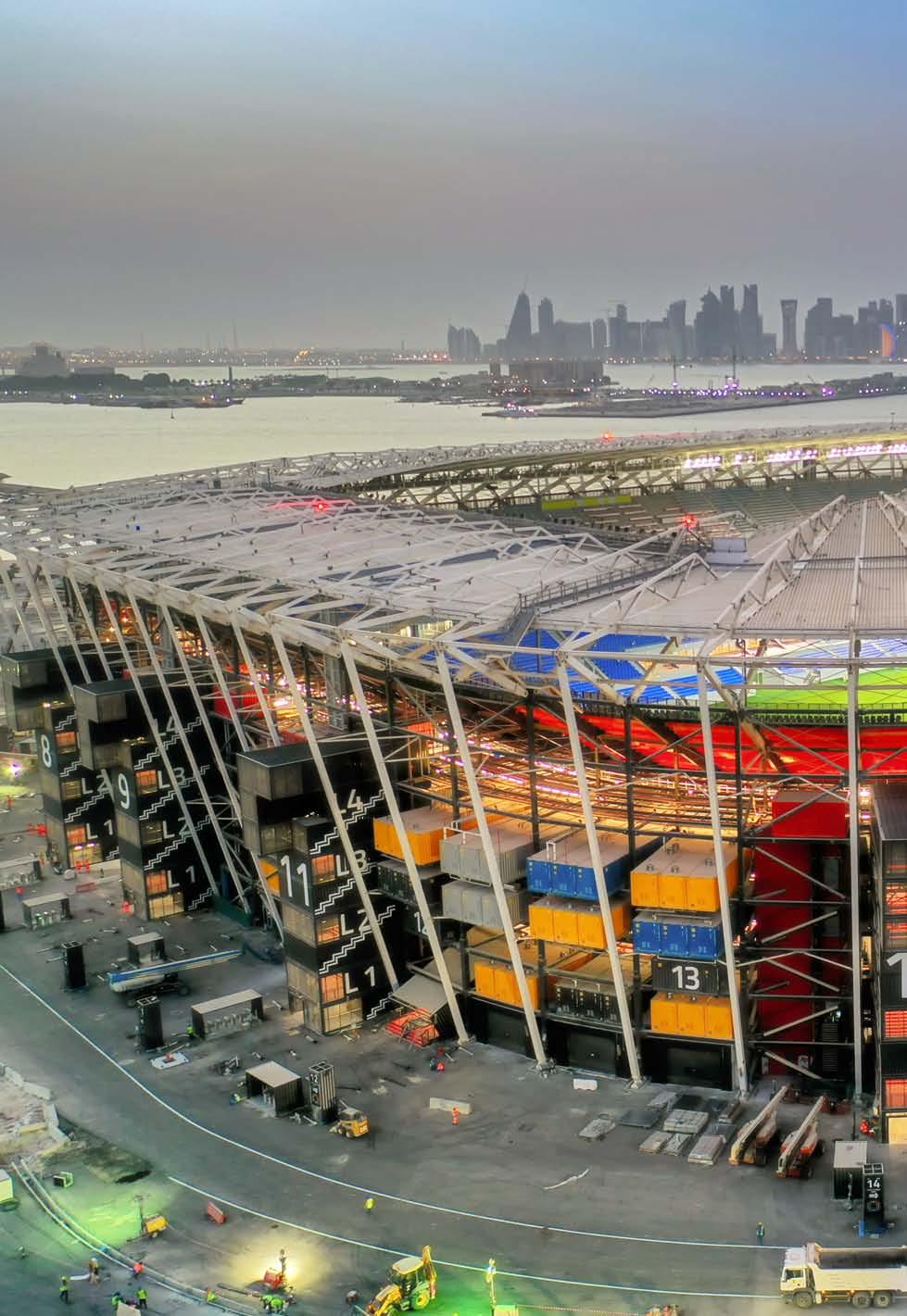
Łączy nas piłka
56 #
STADIUMS WITHIN EASY REACH
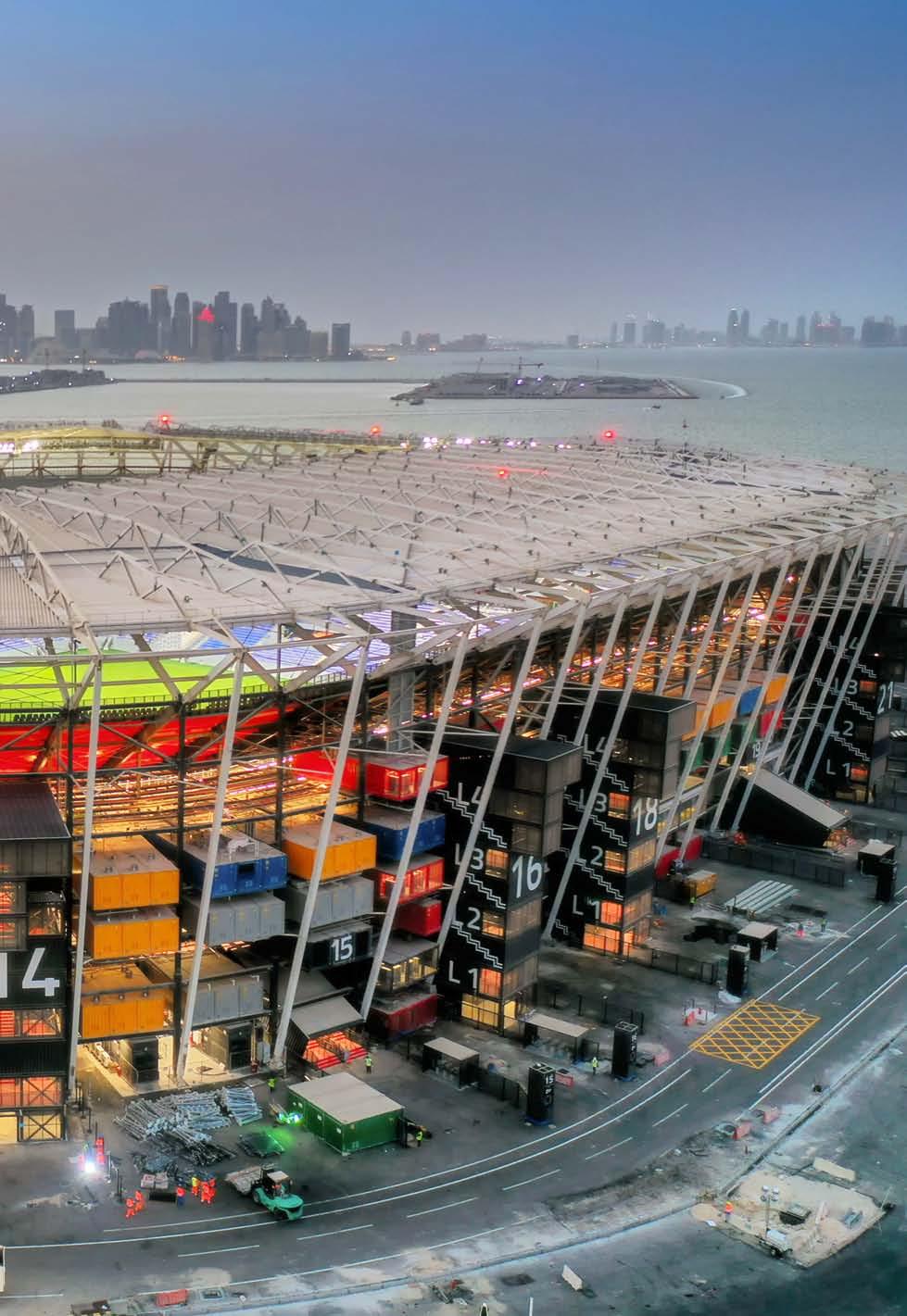
Hardly surprising, given that the organiser this time is a coun try with an area almost one and a half thousand times smaller than before! Therefore, every thing will be literally at your fin gertips. It is time to take a look at the venues that will host the team led by Cze sław Michniewicz during the group stage. Of co urse, we believe that our players’ journey around the Arabian Peninsula will gain new stages in the following weeks of the tournament. For now – wi thout jinxing it – we will deal with those that are certainly ahead of us.
A glance at the base
The Ezdan Palace Hotel in Doha – this will be the key venue for the Polish team during the Novem
ber-December World Championships. The White-an d-Reds will reside in the facility promoted as one of the most luxurious not only in Qatar itself, but also in the entire world. What is crucial for our team, ho wever, is the fact that our footballers should not lack anything on site. The location is also important. The hotel will be only eight kilometres from the training base of Czesław Michniewicz’s team. The players will have a seventeen- and seven-kilometre „trip” to the stadiums where they will play their group mat ches, respectively. The difference compared to the previous World Cup is therefore very noticeable. Le t’s hope that this will also result in favourable mat ches against Mexico, Saudi Arabia and Argentina.
Just like on a ship
This time, unlike at the three previous World Cups in the 21st century, the Polish players will visit not
POLISH NATIONAL TEAM MATCHES A
T THE STADIUM 974
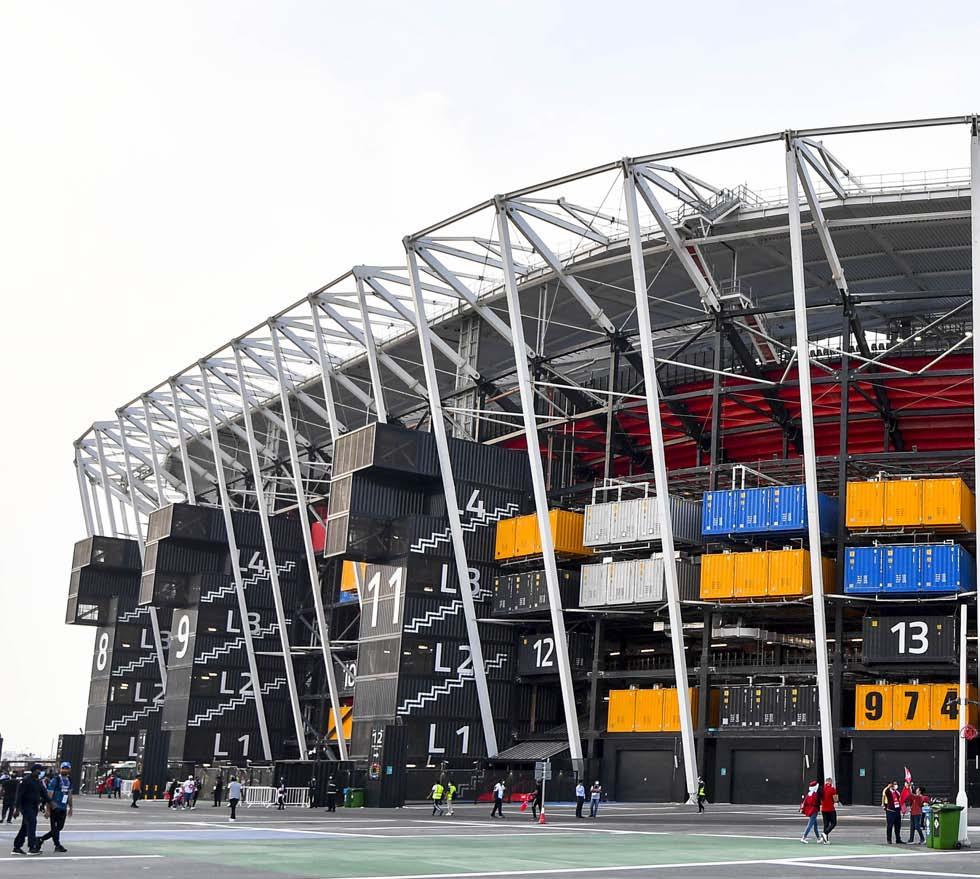
22 November 2022, 5:00 pm Mexico – Poland
30 November 2022, 8:00 pm Poland – Argentina
58
#
Łączy nas piłka
three, but two stadiums in the group stage. They will appear twice at Stadium 974 in Doha, where they will first face the Aztecs in their first World Cup appearance, and eight days later they will fi ght for a favourable result against the popular Albi celestes. The venue, built in the eastern part of the Qatari capital, right next to the airport, is unique for several reasons. First and foremost, this 40,000-se ater has been prepared exclusively for the tourna ment and will be completely dismantled shortly after its completion! This is the first such case in the history of the World Cup. The actual construc tion started in 2018, so that after 36 months or so, the structure would be ready to welcome footbal lers and fans. The working name was Ras Abu Aboud Stadium, but it was eventually changed to Stadium 974, Referring to the unprecedented construction, which was made of modular elements that inclu
ded exactly 974 coloured shipping containers, mo stly used on ships. The number is also the interna tional dialling code for Qatar, so there is plenty of symbolism here. The designers and builders of the stadium insist that it is the most economical and ecological of the World Cup structures, as elements of it have been used both before and will be in use after the tournament. According to the event or ganisers, it will be possible to create several smal ler sports venues from its fragments in the future. The stadium is not air-conditioned, but has been designed to provide natural ventilation and air cir culation. The Stadium 974’s unique location is also worth mentioning – right on the Persian Gulf, with a stunning panoramic view of the city above the venue itself. Including the White-and-Reds’ mat ches, the venue will host six group stage matches and one round of 16 match.
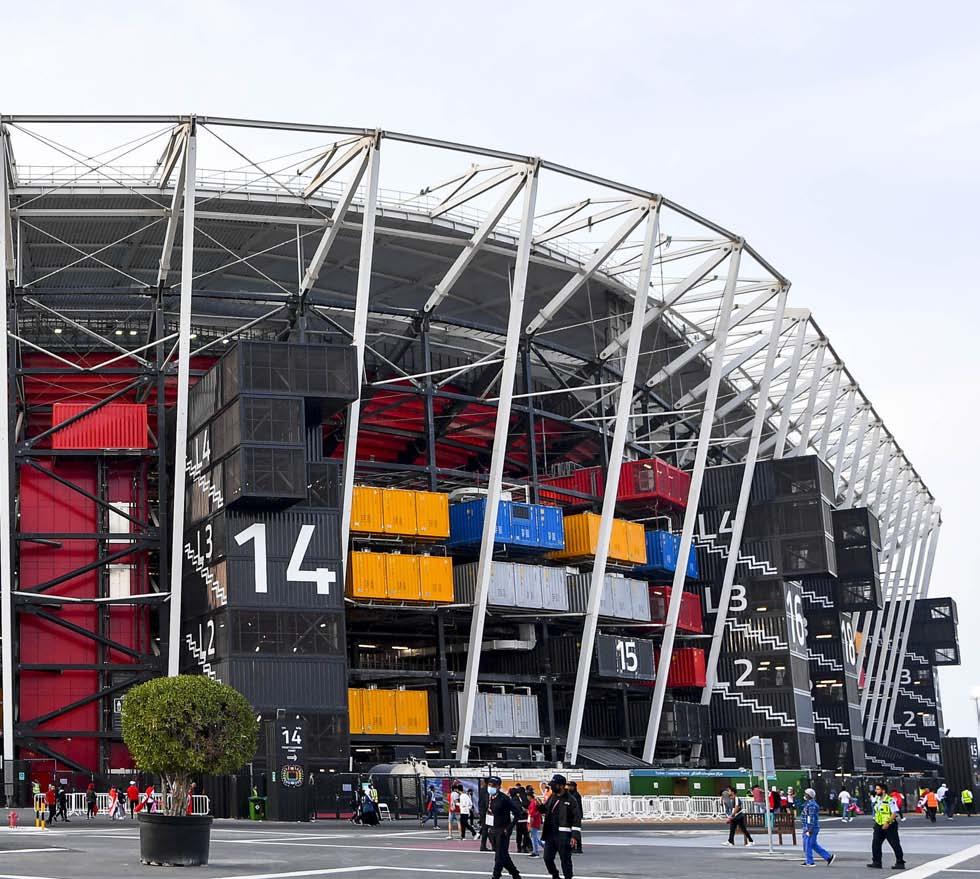
FIFA WORLD CUP I QATAR 2022 59
POLISH NATIONAL TEAM MATCH AT THE EDUCATION CITY STADIUM
26 November 2022, 2:00 pm Poland – Saudi Arabia
Among the students
The atmosphere of knowledge and education will, in turn, hover over the stadium where the Polish national team will play their second group match, against Saudi Arabia. The Education City Stadium, as its name suggests, has been built on a huge uni versity campus, where eight international univer sities have their headquarters. And although it is formally located in Ar-Rajjan, it is only about 15 ki lometres from the centre of Doha. The opening of the stadium in June 2020 had an unprecedented
format, as the virtual event honoured the healthca re workers fighting on the front line against the CO VID-19 pandemic. The venue itself is slightly larger than Stadium 974, but will also be able to accom modate 40 000 spectators during the World Cup. Once the world’s best teams have finished compe ting, however, the upper part of the stands will be dismantled, reducing the existing seating capacity by more than 30 per cent. The facade of Education City Stadium is finished with triangular elements forming diamond-like shapes, which are special
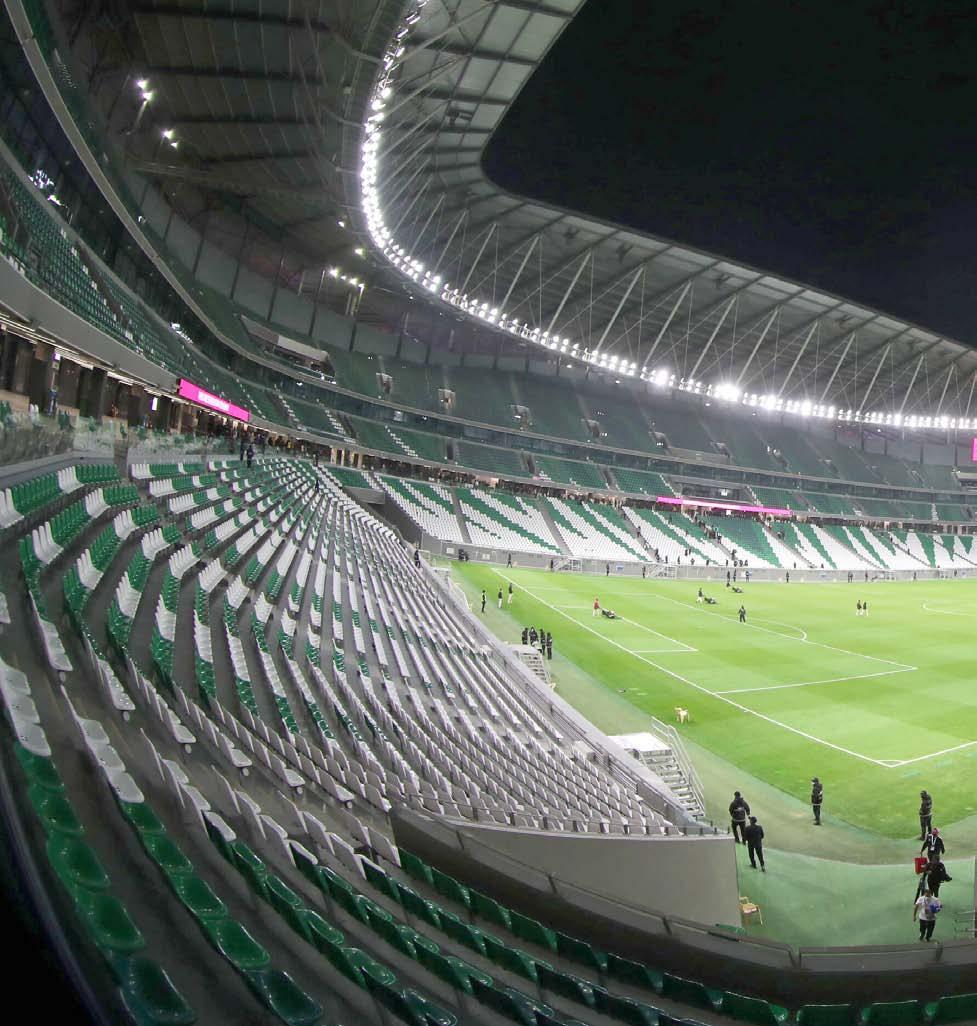
60 # Łączy nas piłka
ly illuminated after dark and change colour during the day depending on the angle of the sun. Due to the enclosed structure, the venue has been equip ped with state-of-the-art ventilation systems to enhance both the comfort of the competition and the viewing of the football spectacle. As head co ach Czesław Michniewicz himself pointed out du ring his personal inspection in Qatar, this could be a bit of a problem for substitutes and staff sitting on the benches, who may simply be too cold. Such fe ars, moreover, were confirmed by Polish internatio
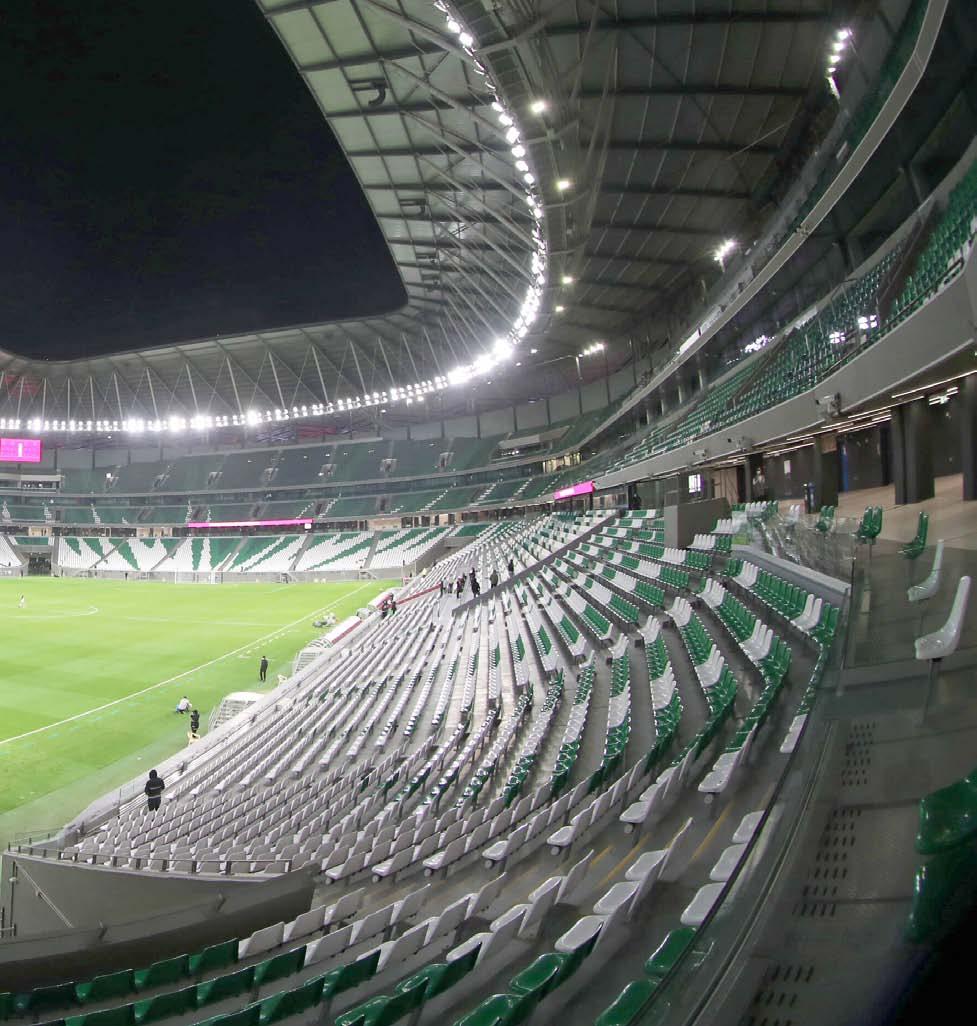
nal referee Szymon Marciniak, who has already had the opportunity to officiate at this arena. Six group stage matches, one round of 16 clash and one quar ter-final are scheduled at Education City Stadium. It is interesting to note that at both venues our players (not only due to the presence of fans from Poland) will be able to feel almost at home. This is because the seats at Stadium 974 and Education City Stadium have been manufactured under licen ce by the Polish company from Krosno.
Piotr Kuczkowski
@Laczy nas pilka
POLISH WORLD CUPS IN NUMBERS AND FUN FACTS
The event in Qatar is the ninth World Cup finals in which the Polish national team will take part. Let’s look at the previous eight performances from the perspective of numbers and related trivia.
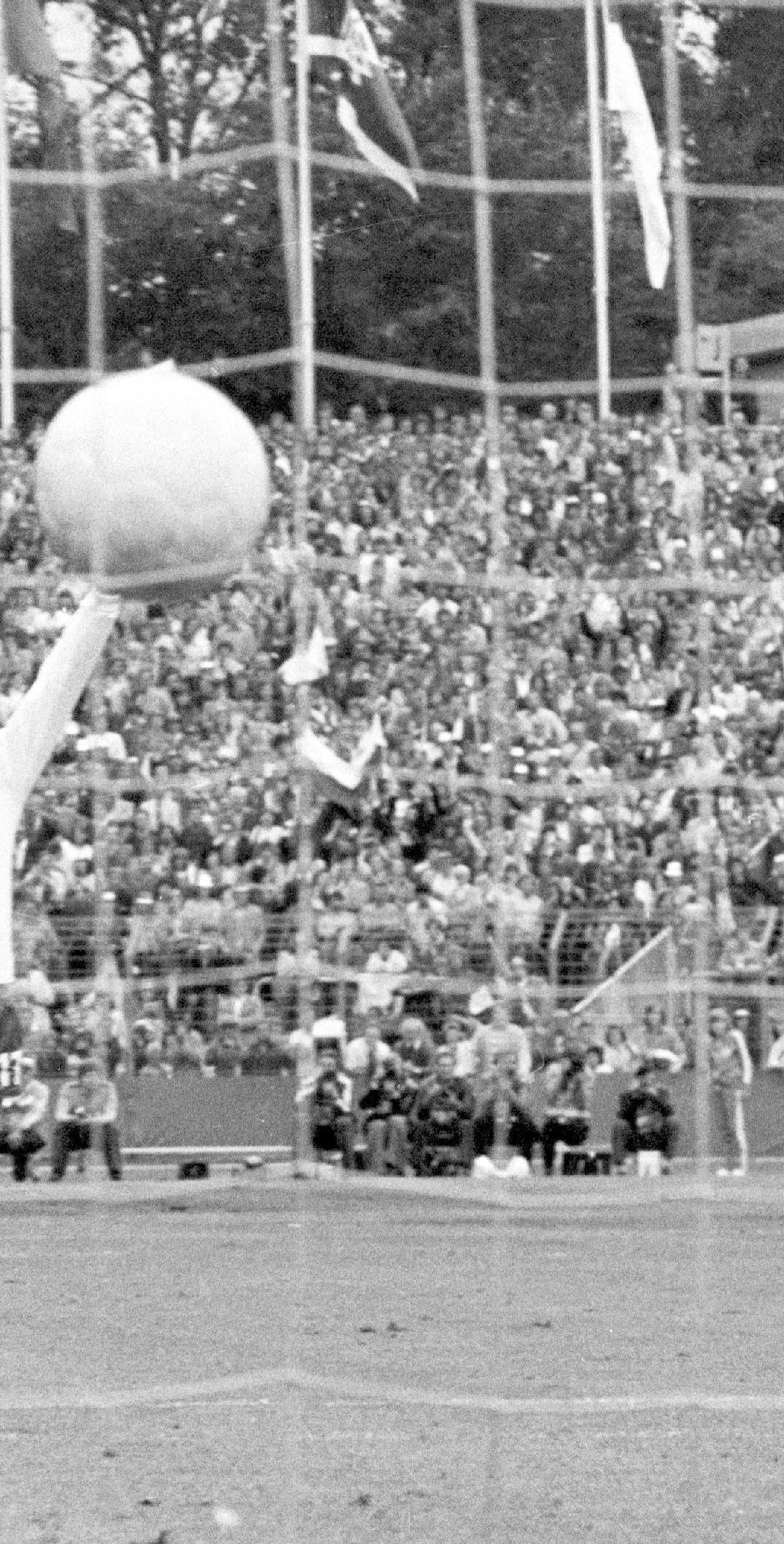
62
# Łączy nas piłka
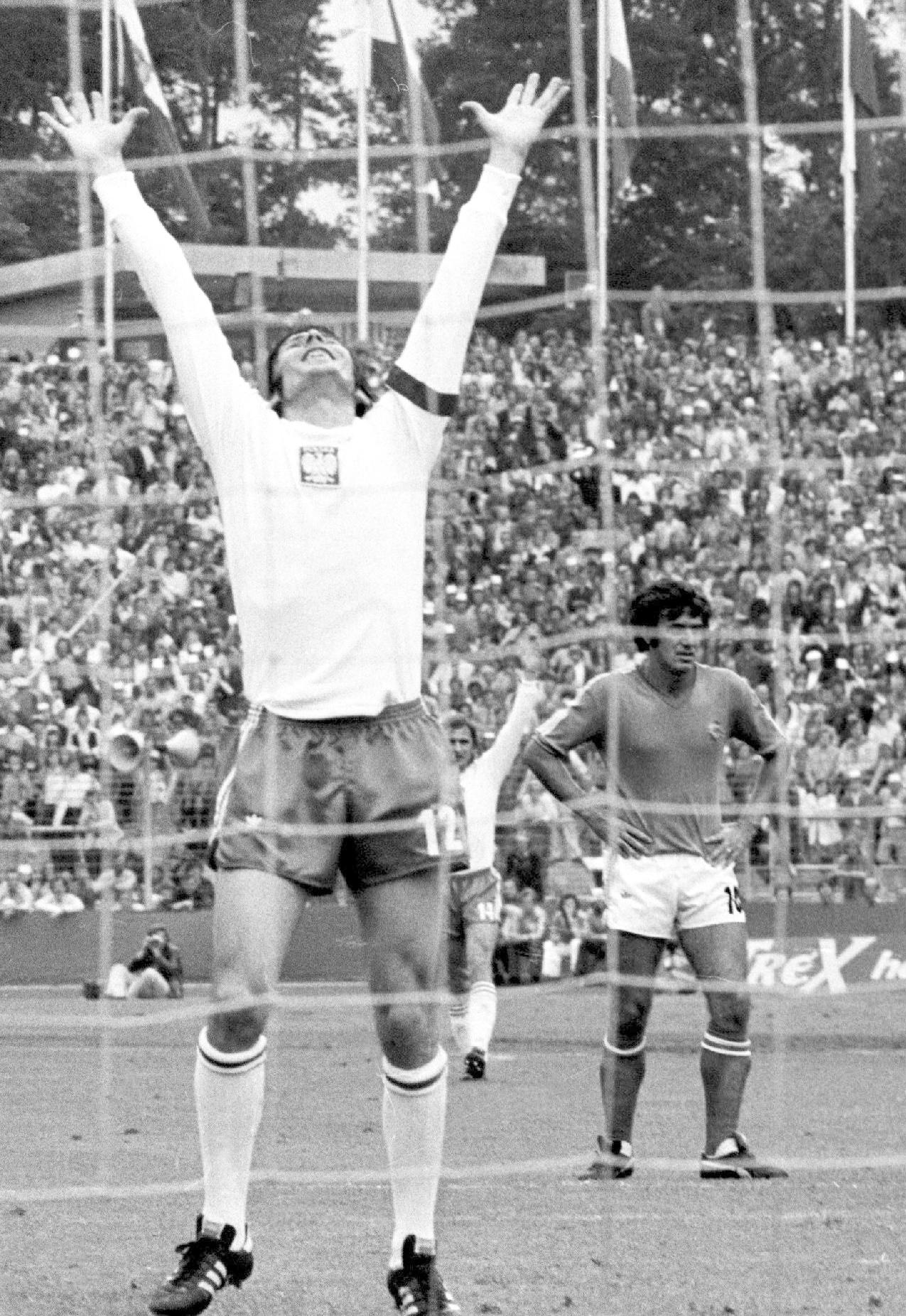
In sport, trophies are the most important thing, and Poland has returned from the World Cup finals with trophis twi ce – in 1974 from the West Germany and in 1982 from Spain. The White-and-Reds then took third place and won silver medals. For a sporting event, this is an unusual re ward for such a success. In 1974, ho wever, FIFA introduced a peculiar me dal award policy. The world champions got gold, the runners-up gold-plated silver, the third team silver and the fo urth team bronze medals.
In eight tournaments, the White-an d-Reds played a total of 34 matches. They won 16, drew five and lost 13. All five draws were matches ending in 0-0. There were three times when we drew our first World Cup match without a goal (in 1978 against West Germany, in 1982 against Italy and in 1986 against Morocco). Of the eight opening matches, we won only one –3-2 against Argentina in 1974. None of Poland’s matches at the World Cup ended in a penalty shoot-out and only one match was concluded in extra time. It was the White-and-Reds de but in the World Cup finals – on 5 June 1938, and it ended with a 5-6 defeat to Brazil (it was 4-4 after 90 minu tes). The Poles’ goal difference was 46 goals scored and 45 goals lost. Władysław Żmuda took part in as many as 21 of Poland’s 34 matches at the World Cup. He holds the record among our players for both the num ber of matches played and the num ber of World Cup finals he has appe ared in. He was the only Pole to play at four World Cups: in 1974 (seven mat ches), 1978 (six matches), 1982 (se ven matches) and 1986 (one match). For 12 years, Żmuda held not only the Polish but also the world record for the number of matches played in World
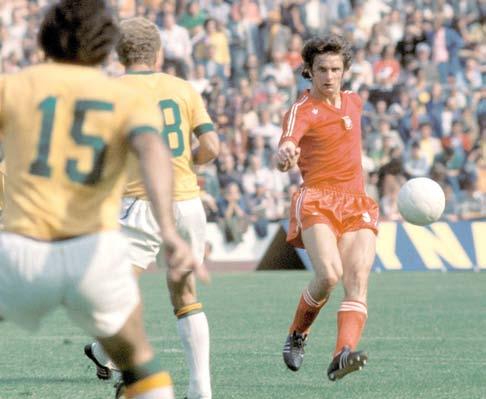
Cup finals. In 1998, he was overtaken by Lothar Matthäus from Germany (25 matches). A total of 117 Polish players played in the World Cup finals. Of the 46 goals scored by the Whi te-and-Reds at the World Cup, ten were scored by Grzegorz Lato. He is the only Pole to become a top scorer at the World Cup finals - in 1974, he scored seven goals. He scored two more goals in 1978 and one in 1982. Andrzej Szarmach is second on the list of most successful Poles in World Cup finals, with seven goals scored. He is also the last one on the list of Polish scorers who managed to beat
in 2006). One goal each was scored by Fryderyk Scherfke (1938), Jerzy Gorgoń (1974), Andrzej Buncol (1982), Włodzimierz Ciołek (1982), Janusz Kupcewicz (1982), Stefan Majewski (1982), Emmanuel Olisadebe (2002), Paweł Kryszałowicz (2002), Marcin Żewłakow (2002), Grzegorz Krycho wiak (2018) and Jan Bednarek (2018). The most goals in a single match were scored by Wilimowski – four. The most fruitful in terms of the Whi te-and-Reds’ goals was the 1974 World Cup. The Polish team scored 16 goals in it. Our worst performan ce in this respect was in 1986, when
their rivals’ goalkeepers in three World Cups. Szarmach scored five goals in 1974, one in 1978 and one in 1982. Six goals in World Cup finals were scored by Zbigniew Boniek (two in 1978, four in 1982), four each by Kazimierz Dey na (three in 1974, one in 1978) and Er nest Wilimowski (all in the match aga inst Brazil in 1938), and two each by Włodzimierz Smolarek (one in 1982, one in 1986) and Bartosz Bosacki (both in the match against Costa Rica
we (or, more precisely, Włodzimierz Smolarek) only managed to beat the rivals’ goalkeeper once. Moreover, in 1986 (and in 2002), Poland lost se ven goals in the World Cup finals, its worst result. The fewest goals, na mely four, were lost in 2006. Howe ver, this was not enough to advance from the group stage.
In eight World Cup finals, the Polish national team faced 24 opponents. We most often played against Bra
Łączy nas piłka
#
64
zil, i.e. four times (one win, three los ses). We played three matches each against West Germany/Germany and Italy. Of our group rivals in Qatar, we have already faced Argentina (a victory in 1974 and a defeat in 1978) and Mexico (a victory in 1978). Saudi Arabia will therefore be Poland’s 25th World Cup opponent. In terms of the location of the rivals on the world map, nine rivals were from Europe, five from South America, four each from Africa as well as Central and North Ameri ca, and two from Asia. In eight World Cup finals, Poland was led by seven coaches. Only Antoni Piechniczek got to do it twice (in 1982 and 1986). The other head coaches who had the privilege to do that were: Józef Kałuża (1938), Kazimierz Górski (1974), Jacek Gmoch (1978), Jerzy En gel (2002), Paweł Janas (2006) and Adam Nawałka (2018).
The White-and-Reds achieved their highest victory in a World Cup final in 1974, when they beat Haiti 7-0. The hi ghest defeat for the White-and-Reds was 0-4 – in 1986 against Brazil and in 2002 against Portugal. The Polish team lost five goals in the match aga inst Brazil in 1938 but they only lost by one goal.
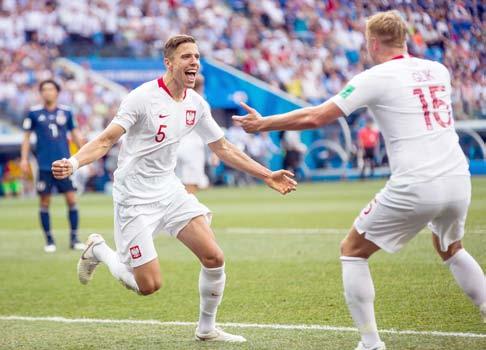
Twice in the World Cup finals, Poland faced the defending champion and did not lose either of these matches – in 1974 it won against Brazil 1-0 and in 1978 it drew 0-0 with West Germa ny. The White-and-Reds played four times against the host country and each time they came off the pitch defeated: in 1974 against West Ger many (0-1), in 1978 against Argentina (0-2), in 2002 against South Korea (0-2) and in 2006 against Germany (0-1). They also competed four times against the team that became the world champion at the same event.
Here, the matches against West Ger many in 1974 and Argentina in 1978 must be recalled once again. Then, there were two matches against Ita ly in 1982 (0-0 and 0-2). So far, the world champion title has been won by the national teams of eight countries. Two of them have ne ver played against Poland in the World Cup finals – these are Spain and Uru guay. The other six are Italy, Brazil, En gland, Germany, Argentina and France. The first time red cards were availa ble to referees at a World Cup was in 1970 in Mexico. Only one Polish play er has ever been dismissed at the World Cup – it was Radosław Sobo lewski, who got sent off the pitch in the match against Germany in 2006. „I was captain of the Polish national team in a World Cup finals match” there are eight players who can say that about themselves. These are: Władysław Szczepaniak (1938), Ka zimierz Deyna (1974, 1978), Włady sław Żmuda (1982), Zbigniew Boniek (1986), Tomasz Wałdoch (two games in 2002), Jacek Zieliński (one game in 2002), Jacek Bąk (2006) and Robert Lewandowski (2018).
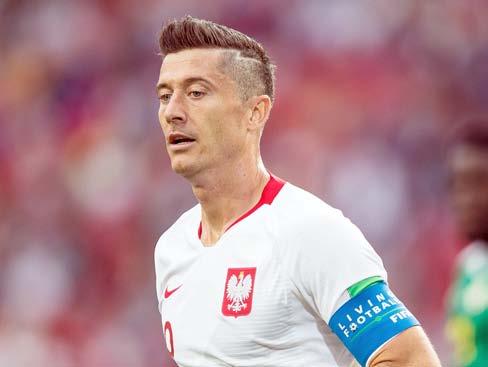 Szymon Tomasik
Szymon Tomasik
FIFA WORLD CUP I QATAR 2022 65
@Laczy nas pilka
ROSTER OF HEAD COACHES – THE MAGNIFICENT SEVEN
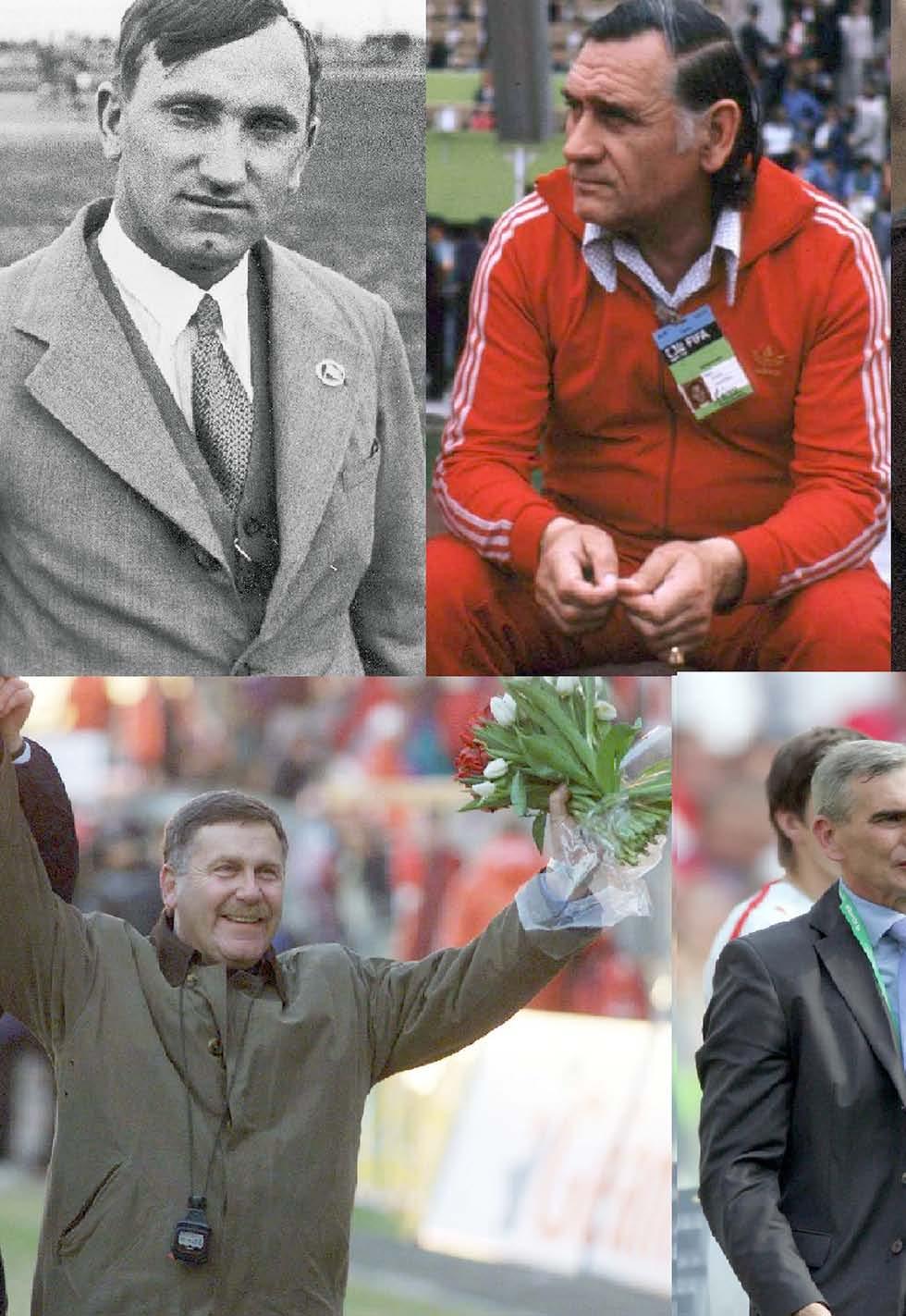
66 # Łączy nas piłka
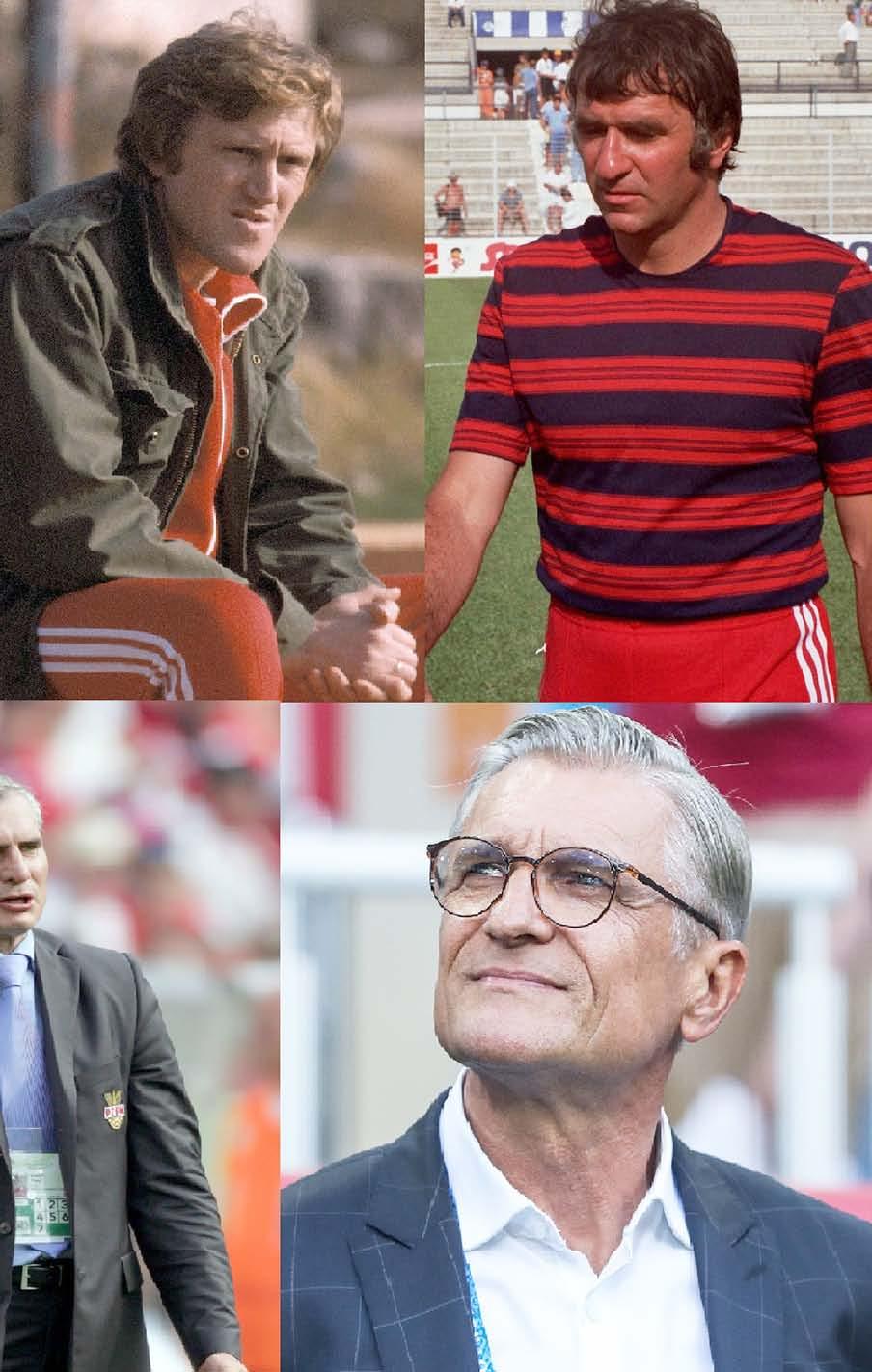
FIFA WORLD CUP I QATAR 2022 67
@Laczy nas pilka
The World Cup in Qatar will be the ninth World Cup in which the Polish national team will take part. Promotion would not have been possible, however, if there had not been outstanding coaches at the helm of the national team. Some have achieved great success with the national team, others much less so. Czesław Michniewicz will be the eighth head coach to lead the White-and-Reds at the World Cup. There is still time to assess the performance of the Poles. For now, it is worth remembering the magnificent seven, thanks to whom we could experience the matches of the White-and-Reds at the most important football event.
1938 – it all started with Kałuża Entrusting Józef Kałuża with the role of association cap tain (the term used years ago to describe a head coach) in 1932 turned out to be a hit. The fresh-faced coach, who had just ended his football career, led the national team to its first successes: 4th place at the Berlin Olympics (1936) and, 2 years later, promotion to the World Cup in France. Premiership participation was due to Kałuża’s excellent selections. In the qualifiers, his team dealt with favoured Yugoslavia (4:0 and 0:1). Poland only played one match in the final tournament, but what a match it was! The White-and-Reds put up a tremendous fight against star-studded Brazil, to whom they lost 5:6 only after extra time. Kałuża led the national team until August 1939, the last time four days before the outbreak of World War II. At that time, the White-and-Reds defeated the runner s-up, Hungary 4:2. Józef Kałuża died on 11 October 1944.
1974 – the Era of the „Coach of the Millennium”. The 1970s were a golden period for the national team, but these successes would not have been possible without Kazimierz Górski. The Lviv-born coach took over the na tional team in December 1970 and, as if by magic, resto red its glory. The result was two Olympic medals – gold in Munich (1972) and silver in Montreal (1976). In betwe en these tournaments, the World Championships were held in FRG. Poland returned to the World Cup after 36 years. And it was a dream return. „Górski’s Eagles” ad
vanced to the German tournament after, among other things, memorable battles with England – 2:0 at the Si lesian Stadium in Chorzów and the victorious 1:1 draw at Wembley. And through the German World Cup, the Whi te-and-Reds went like a storm. They were only halted by the hosts. In the „match on the water” in Frankfurt, they lost (0:1) to the later world champions. Górski and his team then won against Brazil (1:0). The Poles beca me the third team in the world, and the excellent coach fully deserved the title of the „Coach of the Millennium”. Mr Kazimierz died on 23 May 2006.
1978 – the time of Jacek Gmoch Jacek Gmoch became the next World Cup head coach. When he took over the helm of the national team after Górski in August 1976, he was considered the saviour of Polish football. The atmosphere around the national team was terrible. The silver medal at the Montreal Olympics was considered a failure, which today seems like a misun derstanding. Gmoch returned to Poland after a two-year stay in the USA, where he left after the 1974 World Cup (he worked alongside Górski as head of the information bank). „Szczęka” had little time to prepare the team for the World Cup qualifiers. However, he showed that he was not afraid to take risks. He implemented many of his original ideas, starting with the preparation for the matches, the composition of the squad and the vision of the game. The White-and-Reds finished the successful
#
Łączy nas piłka
68
qualifiers with five wins and a draw. They went to the World Cup in Argentina in good spirits, but did not im press there. They managed to win three matches and draw one, but suffered defeats that put them out of the championships – against Argentina (0:2) and Brazil (1:3). After the World Cup, Gmoch led the national team in two more matches, but in September 1978 he en ded his work with the national team.
1982, 1986 – Antoni Piechniczek’s double Further successes are linked to Antoni Piechniczek. He is the only head coach to have led the Poles in two World Cups. The best performance was at the first one. On the way to the Spanish tournament, Piechniczek’s team won twice, including against a strong GDR team (1:0, 3:2). At the World Cup, the Poles reached the se mi-finals, where the Italians were better (0:2). Piech niczek mobilised the team for the match against Fran ce. With the win (3:2), Poland once again became the third team of the world.
Four years later, a much-rejuvenated national team went to the World Cup in Mexico. Piechniczek, however, failed to repeat the previous success. The White-and -Reds did make it out of the group, but in the round of 16 they lost to Brazil (0:4) and crashed out of the to urnament. „As I pass the baton to his successor, I wish him to lead the national team to the finals twice, with a better style and a better performance,” – said the head coach, who resigned after the World Cup. Piech niczek’s „curse” lasted as long as 16 years.
2002 – the Man in the Coat
The journey of the next head coach who brought the White-and-Reds to the world stage began on 1 Janu ary 2000. On that day, the most important coaching job in Polish football was entrusted to Jerzy Engel. It was not an obvious choice. The media favourites were Franciszek Smuda and Henryk Kasperczak, but it was the Polonia Warszawa sports director who picked up the appointment.
The beginnings were not easy. In friendlies, the national team did not win even once. But the best thing happe ned in the World Cup qualifiers. The Poles surprised al ready at the start, when they beat Ukraine (3:1) in Kyiv. The clashes against Norway in Oslo (3:2), Wales in Car diff (2:1) or Norway in Chorzów (3:0), after which Po land secured their long-awaited promotion, were also memorable for fans. Many people, including the coach,
@Laczy nas pilka
sought their luck in the famous brown coat worn by the head coach for subsequent matches. But the tournament in Asia went completely wrong for Engel and his picks. Defeat in the first two group mat ches, against South Korea (0:2) and Portugal (0:4), led to their loss at the World Cup. The match of honour against the United States (3:1) was Engel’s last game as the head coach.
2006 – „Janosik”
Paweł Janas was selected as the head coach on 20 De cember 2002. „Janosik” failed to qualify for Euro 2004 (he saved the qualifiers after a false start), but that was not his main goal. In the qualifiers for the German World Cup, the Poles won seven matches and suffered two defeats against England. We were going to the final to urnament with high hopes, but coach Janas messed up even before the championship. He kept the list of play ers secret until the very end, and when the moment came to announce the team, he completely surprised the public and the players themselves. He did not take to Germany several players who had contributed to the promotion – Tomasz Frankowski, Jerzy Dudek, Tomasz Kłos or Tomasz Rząsa. The „Janosik” idea turned out to be misguided. The shattered team lost to Ecuador and Germany, won only the match of honour (against Costa Rica) and ended the World Cup after the group stage. After the World Cup, Janas was dismissed.
2018 – Nawałka at the finish
The last head coach to lead the Poles at the World Cup was Adam Nawałka. The World Cup proved to be both the finish of his work with the national team, having ta ken over as helmsman in October 2013. After finishing in the quarter-finals of Euro 2016, an equally successful start to the World Cup was hoped for. Nawałka’s team suffered only one defeat in the qualifiers and qualified for the tournament from 1st place. Unfortunately, the Russian World Cup proved unsuccessful. Instead of spectacular and quick actions, we watched a slow and static game. Defeats against Senegal (1:2) and Colom bia (0:3), as well as a miserable win against Japan (1:0), were Nawałka’s farewell matches as the head coach. And whose footsteps will Czesław Michniewicz follow at the Qatar World Cup? Górski and Piechniczek, or ra ther Engel, Janas and Nawałka? We will know the an swer to these questions soon!
Adrian Woźniak
CUP
QATAR 2022 69
FIFA WORLD
I
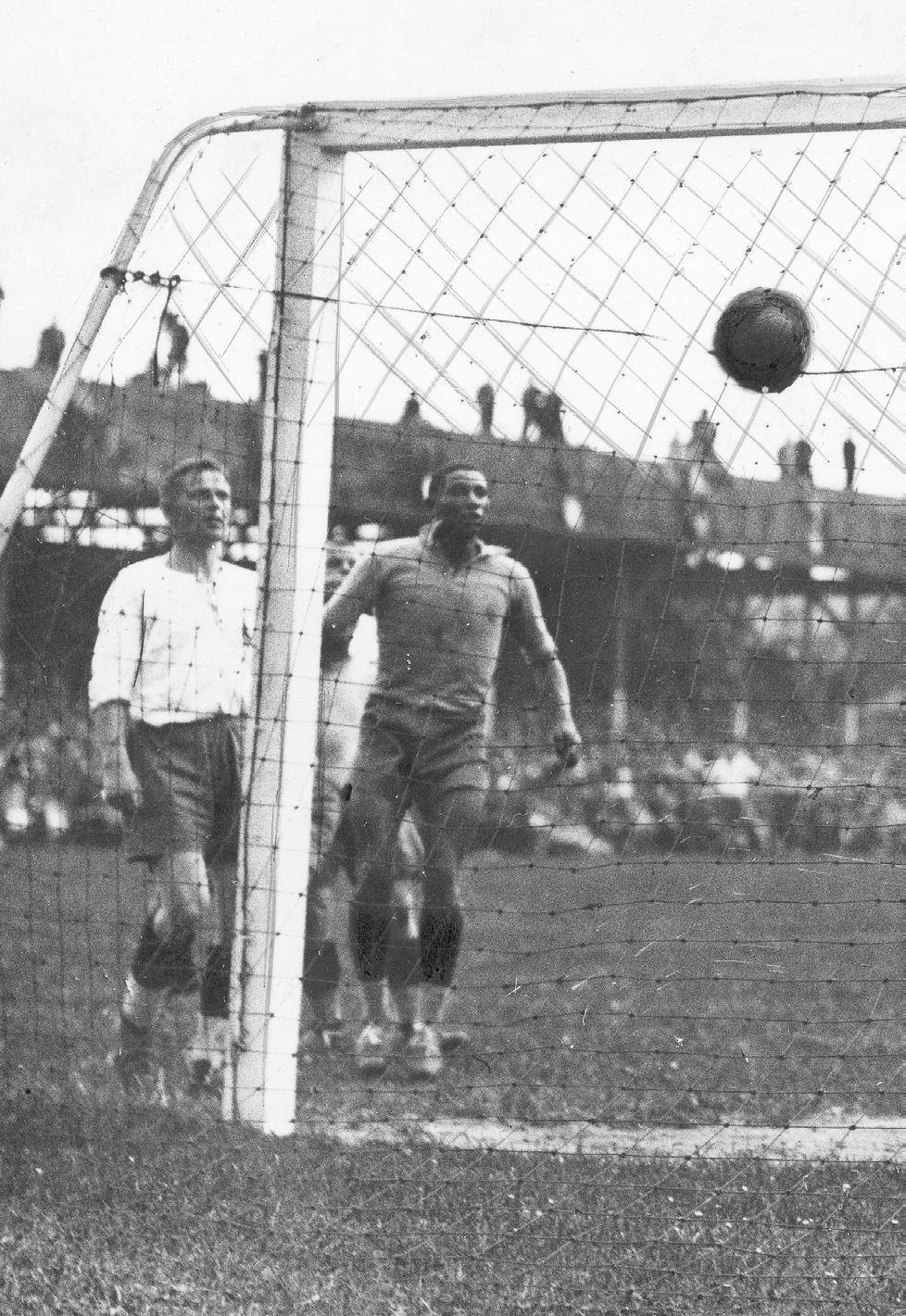
70 FROM STRASBOURG TO VOLGOGRAD. LET’S EXPERIENCE IT ONE MORE TIME! # Łączy nas piłka
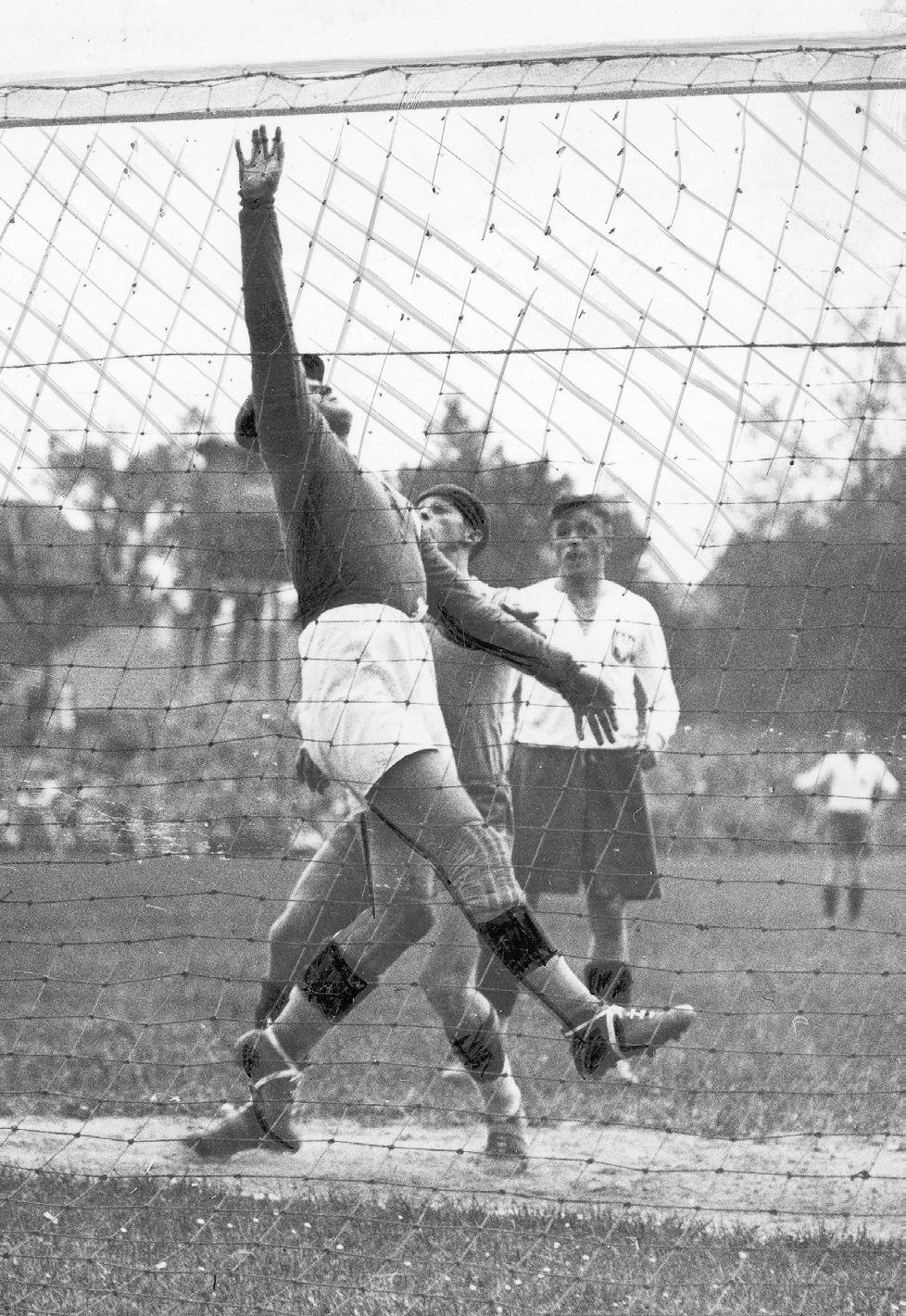
FIFA WORLD CUP I QATAR 2022 71
@Laczy nas pilka
In total, there were thirty-four matches against twenty-four opponents.
Some brought us great glory and medals, like the victory against Brazil (1-0) in 1974 or against the French (3-2) eight years later, while others gave us cause for embarrassment, e.g. the defeat against Portugal (0-4) in 2002.
Poland’s matches at the World Cup. So let’s get into a time machine and recall the ones that are the most memorable for Polish fans.
1938
Poland vs. Brazil 5:6 after extra time
For years, grandparents have told their grand children about this match, and the grandchil dren have passed it on to their grandchildren, although few have seen it with their own eyes. This is because the White-and-Reds’ debut at the World Cup took place in the pre-televi sion era and the film camera recorded barely a few minutes of the match. It’s a shame be cause it was a first-class show. Józef Kału ża’s team, which was foredoomed to failure, put up a fight and got awfully close to elimi nating the formidable South American team (they were competing in a single-elimination system at the time). The match ended in a 4:4 draw in regular time. The „Canarinhos” needed an extra 30 minutes to beat us. „If anyone tells me the Poles can’t play football, I’ll spit in their face”, Brazilian midfielder Martim Silveira said afterwards. A remarkable feat was achieved by Ernest Wilimowski, who became the first player to score four goals in a single match at a World Cup.
1974 West Germany – Poland 1:0
The White-and-Reds waited as long as 36 years for another World Cup appearance, but it was worth it as they returned from the tour nament with their first ever medal. They won it after winning the third-place match, getting their revenge on the Brazilians for the defeat in Strasbourg. We have many fond memories of
that championship as Kazimierz Górski’s team beat Argentina (3-2), Italy (2-1), Sweden (1-0) and Yugoslavia (2-1) in magnificent style, al though – paradoxically – the match that bro ught us the only defeat of the tournament is still the one that is talked about most. Play ed in Frankfurt am Main, the famous „Water Battle of Frankfurt” turned out to be a parody of football. Every now and then, the ball would fall into a puddle, the players would get stuck in the mud or slip on the grass – and a place in the finals was at stake! In these conditions, the Poles, whose main asset was fast coun ter-attacks, had no chance. The final blow was struck by Gerd Müller.
Played in Frankfurt am Main, the famous “Water Battle of Frankfurt” turned out to be a parody of football.
Łączy nas piłka
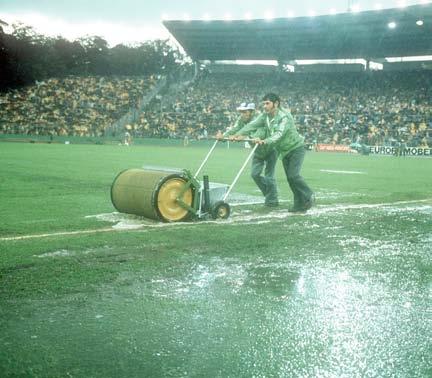
72 #
1978
Argentina – Poland 2:0
Four years later, the White-and-Reds flew to the World Cup as one of the main favouri tes to win the title but they returned defe ated. The head coach at the time was Jacek Gmoch – a great analyst but an engineer by profession, and engineers, as we all know, like to tinker. Our team started each group stage match in a different line-up, players changed positions (midfielder Henryk Kasperczak, for example, found out that he would now play in the centre of defence), no one could be sure what would happen and when. This chaos in fected the team in the opening match of the second phase of the tournament against the World Cup host. We could have won but the trembling Kazimierz Deyna missed a penal ty kick (the referee awarded it to us when Ar gentine striker Mario Kempes pushed the ball out of an empty goal with his hand) and then Grzegorz Lato and Andrzej Szarmach wasted great goal-scoring opportunities. Tough luck!
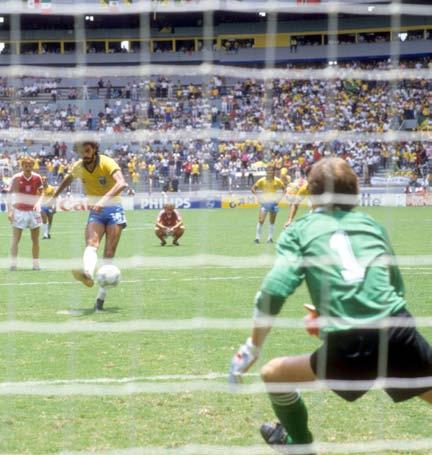
1982
Poland – Peru 5:1
„Eeny, meeny, miny, moe; which way will Piech niczek go? That’s what we don’t know”, sang Bohdan Łazuka. The thing is that after two and a half matches of the group stage at the Spanish World Cup, our head coach had no idea what to do next either. We were held to a go alless draw by Italy, then the same happened in the match against Cameroon – and the co untry was already bracing itself for the natio nal team’s premature return from the cham pionship. After the first half of the match aga inst Peru, the White-and-Reds were still under the zero-zero curse. And suddenly a mirac le happened. In merely 22 minutes, our team scored five goals in a row! Włodzimierz Smo larek started the series, his namesake Ciołek finished, and in between, Lato, Andrzej Buncol and Zbigniew Boniek also sent the ball into the back of the net. The latter, after scoring a goal, began shaking his fist at one of the journalists who had criticised him heavily earlier.
@Laczy nas pilka
1986
Poland – Brazil 0:4
You may say: Poland played so many beauti ful matches at the World Cup and you are tal king about defeat again. Yes, but the cham pionship in Mexico was peculiar in that the White-and-Reds won only once there (aga inst Portugal) and scored only one goal. Para doxically, they received most praise not after that match but after the one against the „Ca narinhos’ in the round of 16, which ended their participation in the tournament. It was one of those matches where the result was worse than the game. We were truly unlucky. When the players in red jerseys shot, the ball hit the crossbar or the post and did not want to fall into the back of the net, even after Boniek’s impressive overhead kick. Meanwhile, our op ponents were awarded two penalty kicks by the referee – both in rather controversial cir cumstances. Coach Piechniczek resigned, wishing his successor to at least repeat his success: winning a medal and advancing to the World Cup finals twice. We waited as long as 16 years for another appearance in the tournament.
It was one of those matches where the result was worse than the game. We were truly unlucky.
FIFA WORLD CUP I QATAR 2022 73
South Korea – Poland 2:0
Jerzy Engel’s national team began their ap pearance at the first ever World Cup play ed in Asia with this match. Our rival was the co-hosts of the tournament, so many people in Poland feared that not only the stands would be against us but also the referees. In the end, we managed to harm ourselves, even before the first whistle. The idea to entrust the a cappella performan ce of the national anthem to Edyta Górniak proved disastrous. „Dabrowski’s Mazurka” was meant to sound original. Instead, it was performed so bizarrely that it completely discouraged the players rather than war ming them up. The fast and agile Koreans scored two goals and we were unable to recover from it. And then there was the do-or-die match against Portugal (0-4) and the match for honour against the Ameri cans (3-1). Thus was born our new secular football tradition.
2006 Germany – Poland 1:0
That’s right. Do-or-die match. We played such a match again four years later and we had a particularly difficult rival – our we stern neighbours, playing at home, whom we had never managed to beat before. We star ted the tournament with a defeat against Ecuador (0-2), so another loss meant the dream of advancing from the group stage was over. Nobody believed that Paweł Janas’ team stood any chance, and yet... More mi nutes passed and the favoured hosts were unable to score, which was mostly due to Artur Boruc’s phenomenal saves. The dra ma began a quarter of an hour before the end of the match when Radosław Sobo lewski saw his second yellow and, conse quently, red card. The Germans pressed even harder and finally, in extra time, they did it – Oliver Neuville sent the ball into the back of the net. All was lost. In the match for honour, we defeated Costa Rica (2-1).
2018
Poland – Japan 1:0
And again a pause, which this time lasted twelve years. Neither Leo Beenhakker nor Waldemar Fornalik managed to get the Whi te-and-Reds to major football events. This feat was only achieved by Adam Nawałka, who rode the wave of success at Euro 2016, where his team reached the quarter-finals. Things did not go as well at the World Cup in Russia. It started with a disaster against Se negal (1-2), followed by a defeat against the Colombians (0-3), and it was basically time to pack up. If it wasn’t for the fact that there was still a match left against Japan. We would probably like to forget how it went down but it is impossible. The sight of two teams kicking the ball across the pitch or backwards at the end of the match, playing to keep the score (a 0-1 defeat allowed our rivals to advance from the group stage), was extremely upset ting. We won, but it left an unpleasant taste in our mouths. Let’s hope our Eagles’ performan ce in Qatar erases this unpleasant memory.
Krzysztof Jaśniok
Things did not go as well at the World Cup in Russia. It started with a disaster against Senegal (1-2), followed by a defeat against the Colombians (0-3), and it was basically time to pack up.
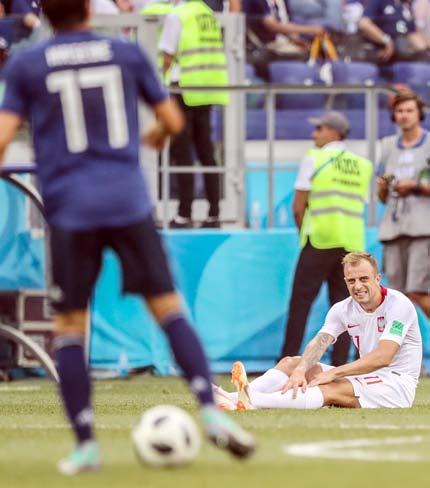
# Łączy
nas piłka 74 2002
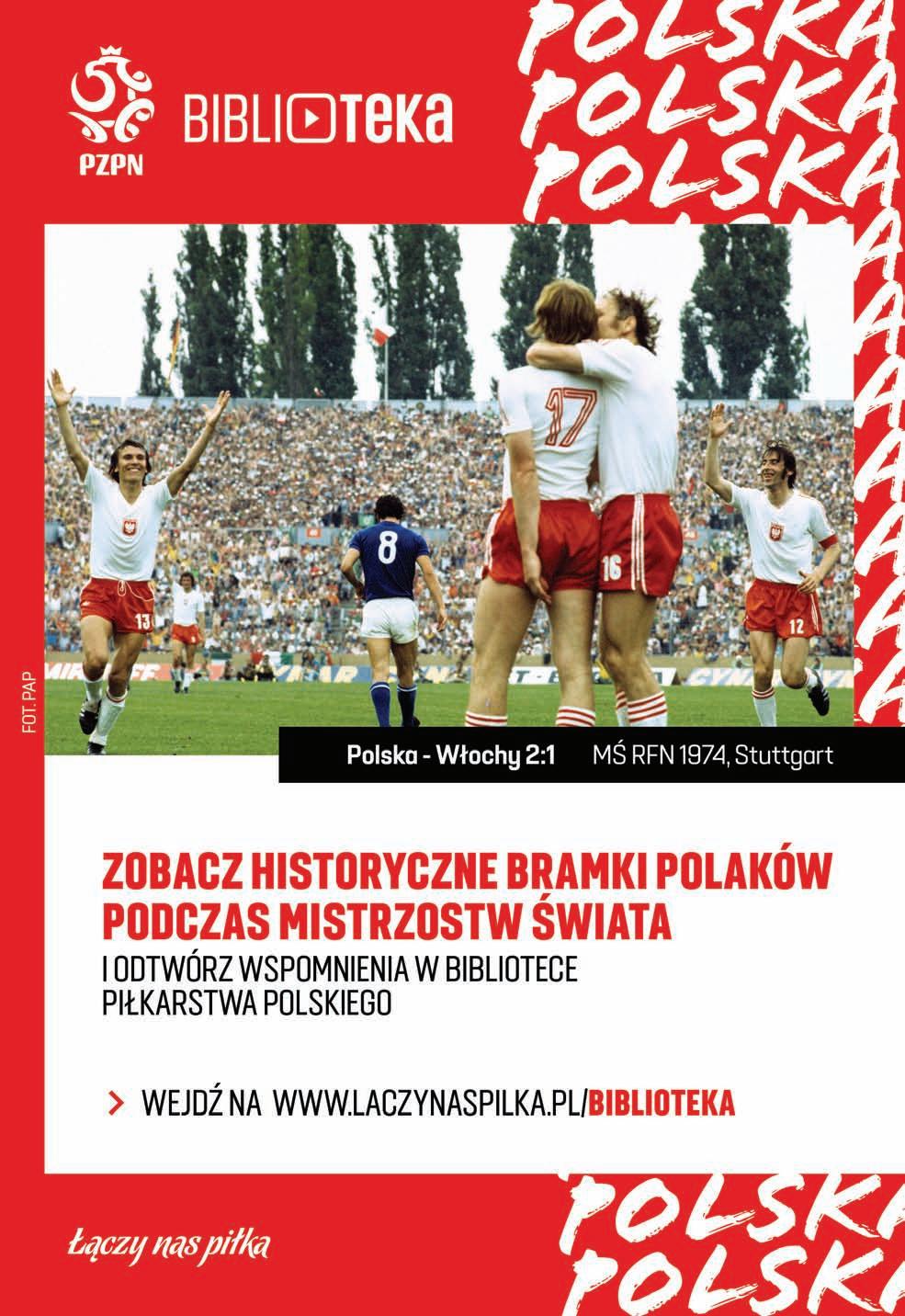
„KAKA” AND OTHERS, OR THE WHITE AND RED DREAM TEAM
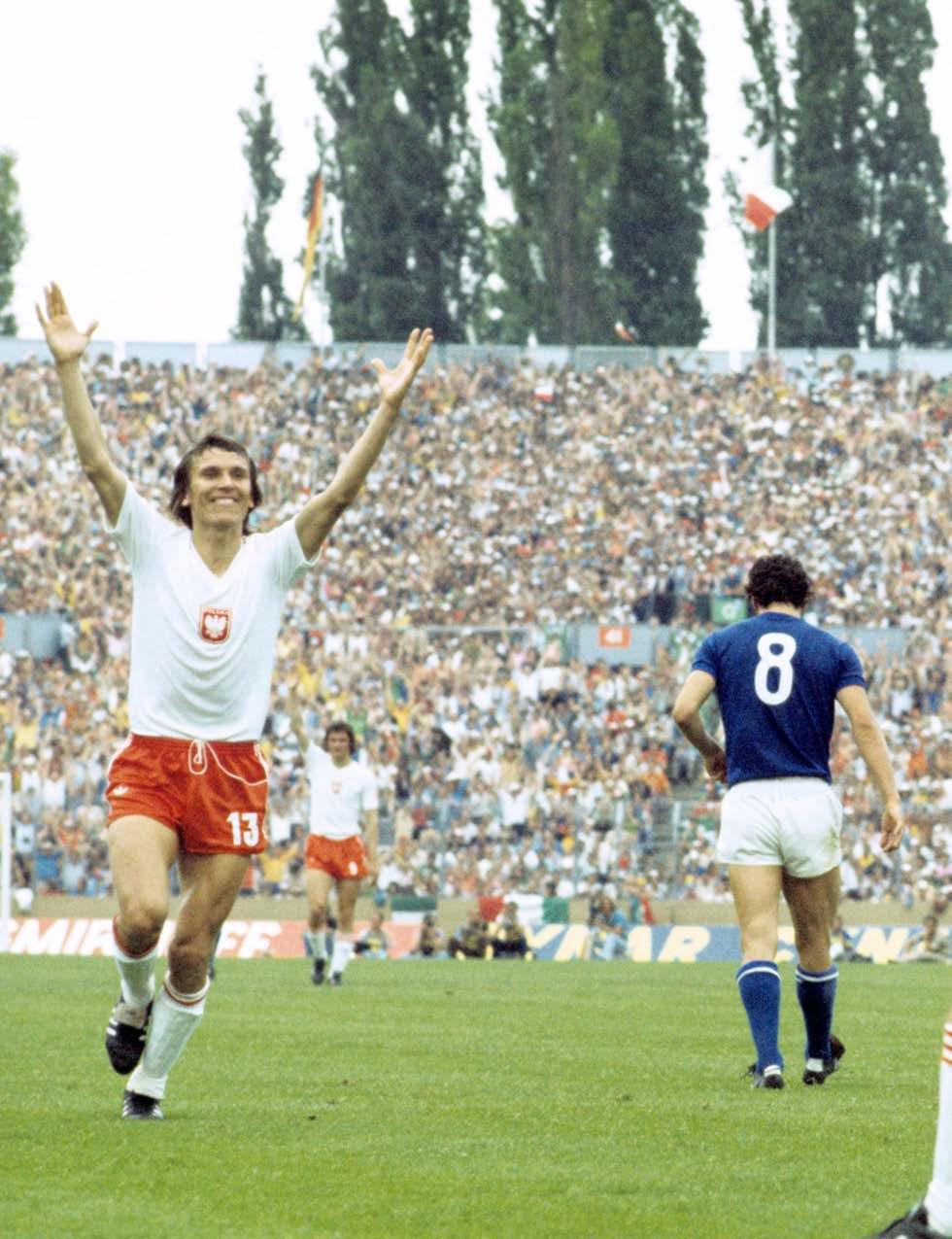
76 # Łączy nas piłka
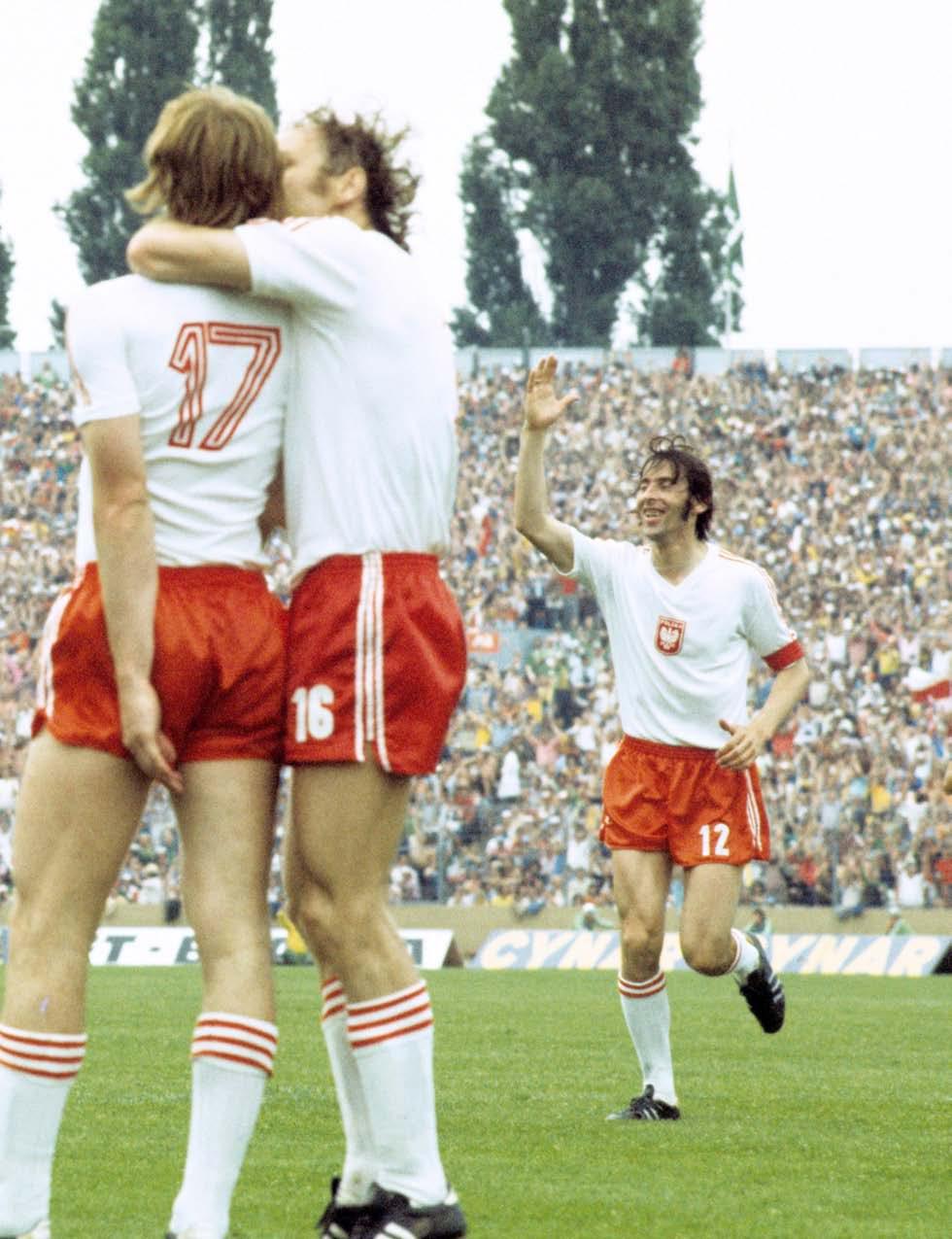
FIFA WORLD CUP I QATAR 2022 77
@Laczy nas pilka
There have been exactly 117. That is the number of players who have participated in the eight appearances of the white and reds in the World Cup. And potentially each and every one of them had a marshal’s baton in their backpack, though not all were able to pull it out. But we still selected a World Cup top eleven of all time from this elite group. Be warned that our selection is subjective.
But then, how can it not be? In putting together our dream team, we were guided more by maths than by heart. For us, the „ticket of admission” into this dream team was the most important thing in sport – results. No wonder then that the virtual nominations were awar ded to those who came back from the World Cup with medals. But enough explanations. Let this dream team finally play a match!
Jan Tomaszewski (11 matches at the 1974 and 1978 World Cups, 990 minutes, 8 conceded goals)
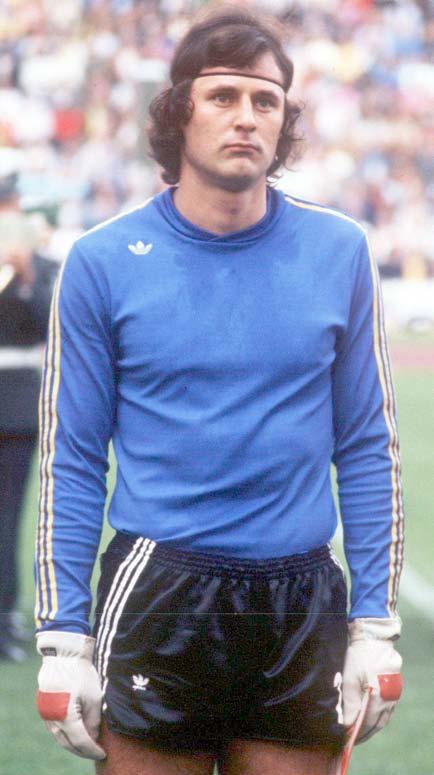
„Tomek” or „Młynarz”? The choice of goalke eper was limited to those two names. Toma szewski and Młynarczyk both played in two World Cups, and both brought back a medal from one. Whom, then, should we pick? We decided to go with the „man who stopped England”, though perhaps both should play 45 minutes each? There was one not insi gnificant argument for „Tomek” – two penal ty kicks defended at the 1974 World Cup. To maszewski put up an „invisible wall of our de sires” (to quote a famous commentator) so effectively that the Swede Tapper and Ger man Hoeness became completely dumbfo unded. And thus the Pole became the first goalkeeper in the history of the World Cup to defend two penalty kicks. This feat was only repeated 28 years later by Brad Friedel from the United States.
Łączy nas piłka
#
78
Antoni Szymanowski
(13 matches at the 1974 and 1978 World Cups, 1170 minutes, 1 assist)
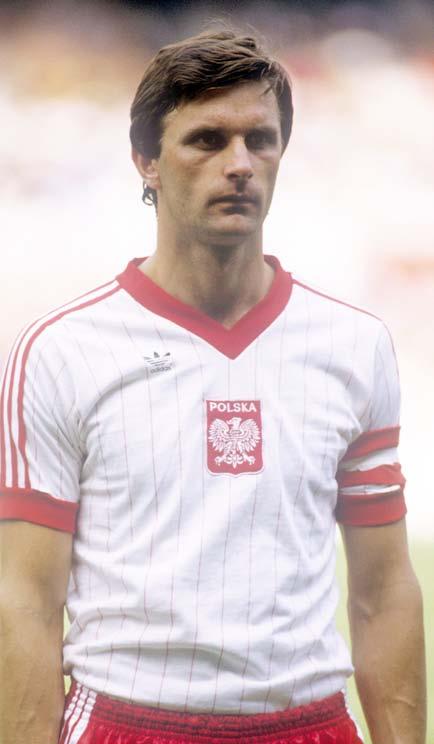
Right-back was the domain of the greatest music lover among Górski’s „Eagles”. He passionately collected records, as he lo ved good music, and the fans loved him. This was especially true of fans of Wisła Kraków, where today he has the status of a club legend. But Szymanowski was first and foremost a fast, dynamic and offen sive defender. His raids on the right side of the pitch (even when he could success fully play on the left side of the defence) wreaked havoc among his opponents. He was equally successful in defending the access to his own goal. He played at two World Cups (1974, 1978), and brought back a medal from the first. It is unfortunate that Antoni Piechniczek „shot off” Szymanowski at the last stage of preparations to Espa na’82. This meant that the chance for ano ther trophy escaped irretrievably.
Jerzy Gorgoń
(12 matches at the 1974 and 1978 World Cups, 1080 minutes, 1 goal)
He could have been the face of any sel f-respecting insurance company. This is because Gorgoń meant confidence and trust at the centre-back position. Impres sive physical build supported by shots as if from a cannon. This can’t be gained through practice; one has to be born like that. Tho se who have not seen the goals he scored against Haiti (1974 World Cup) or East Ger many (1972 Olympics) have seen nothing. And they should catch up as soon as they can. After all, the Online Polish Football Li brary of the Polish Football Association is „open” 24 hours a day.
Władysław Żmuda
(21 matches at the 1974, 1978, 1982 and 1986 World Cups, 1806 minutes)
If there is anyone, apart from Prime Mi nister Tadeusz Mazowiecki, who co uld be described as possessing a „quiet
@Laczy nas pilka
strength”, it would certainly be Żmuda. His composure and cold-bloodedness were in valuable assets for a centre-back. Phleg matic to a fault, he was able to „outwait” any striker in the world. Bypassing Żmu da or engaging in a shoulder-to-shoulder duel with him was a challenge for any har dened footballer. Still, few „skirmishers” were able to match Mr Władek. No won der then that Żmuda was a sure pick for one head coach after another. That is why he holds the record in terms of number of matches played at the World Cup among Polish players.
Bypassing Żmuda or engaging in a shoulder-to-shoulder duel with him was a challenge for any hardened footballer.
FIFA WORLD CUP I QATAR 2022 79
Stefan Majewski
(11 matches at the 1982 and 1986 World Cups, 990 minutes, 1 goal)
Whom to pick as a left-back? The sadly late Adam Musiał still has loyal fans. But we deci ded to go with the equally brave and not less strong-willed Stefan Majewski. His nomination is supported by the goal he scored against Fran ce at the 1982 World Cup. And that was during a 3rd place match. Such a goal makes a per manent entry in the player’s CV and continues to impress. Majewski also impressed with his physical form, toughness and tenacity. Such players are loved; such players are cherished.
Waldemar Matysik
(10 matches at the 1982 and 1986 World Cups, 720 minutes)
This Walduś was not „Shoddy” at all [Transla tor’s note: this is a reference to a Polish sitcom, where one of the characters is called „Walde mar Kiepski”; „Walduś” is a diminutive of „Wal demar”, while „Kiepski” literally means „Shod dy”]. Quite the opposite. He impressed with in credible diligence, persistence and modesty, qu alities for which people from Silesia are known. He was simply a model defensive midfielder. In the world of cinematography he would be called an outstanding supporting actor. But a suppor ting actor can also win an Oscar. Matysik’s Oscar was the medal won at the 1982 World Cup. It is unfortunate that this incredible effort he put into running under the Spanish sun had an adverse effect on his health. His victory against a serio us illness was the most important victory of all.
Zbigniew Boniek
(16 matches at the 1978, 1982 and 1986 World Cups, 1281 minutes, 6 goals, 3 assists)
At school, he was loved by some teachers, and absolutely hated by others. He had to contend with such „mixed opinions” with respect to him self until the end of his football career, although he was not bothered by it at all. On the contrary, he knew what he wanted out of life and consi stently pursued it. These character traits led to his appearance at three World Cups. From the one in Spain he came back with a medal and
recognition as one of the best players of the tournament. The three goals he scored aga inst Belgium during the match at Camp Nou in Barcelona remain the greatest achieve ment of the Polish player at World Cup venues.
Kazimierz Deyna
(13 matches at the 1974 and 1978 World Cups, 1161 minutes, 4 goals)
And thus we reached the king. The king of mid field. He was one of those players who were more appreciated abroad than in Poland. Fo reigners marvelled at his technique, his ove rview of the field, his amazing shots. Our fans often complained that „Kaka” deliberately slo wed down the play by towing the ball. But Dey na knew what he was doing. He had amazing sense for events on the pitch, which mere mor tals often missed. After the 1974 World Cup, he was chosen as one of the top eleven play ers of the tournament, and then placed third in the prestigious „France Football” popularity contest. Four years later, his tango in Argenti na did not go as smoothly. He failed to take ad vantage of a penalty kick during a match aga inst the hosts, and ended his career in the na tional team after a loss against Brazil. But the memory of the great player remains. Because legends never die.
After the 1974 World Cup, he was chosen as one of the top eleven players of the tournament, and then placed third in the prestigious „France Football” popularity contest.
Łączy nas piłka
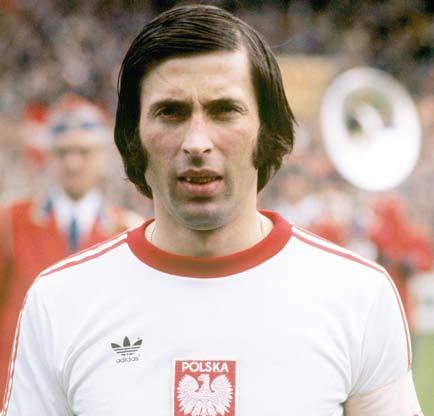
#
80
Grzegorz Lato
(20 matches at the 1974, 1978 and 1982 World Cups, 1800 minutes, 10 goals, 7 assists)
Now is the time for the other king. Not only the top scorer of the 1974 World Cup, but the king of Polish World Cup appearances in gene ral. His performances in the championship to urnaments are incredible. He leads the „most goals scored” and „most assists performed” rankings with a huge margin. From the fastas-the-wind, competitive and dynamic striker that the world got to know in West Germany (1974) he gradually transformed into the cautio us and experienced player at the tournament in Spain. Only one thing remained unchanged: he constantly worked his fingers to the bone across the entire pitch. And this hard work was rewarded with two 3rd place medals. Hats off!
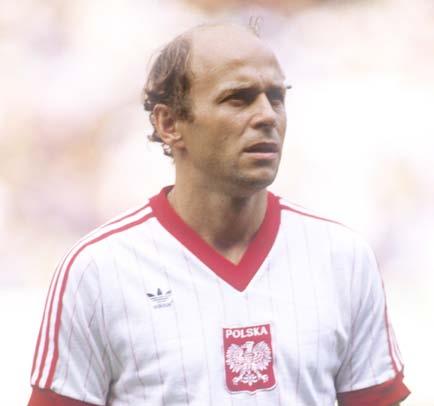
Andrzej Szarmach
(13 matches at the 1974, 1978 and 1982 World Cups, 1006 minutes, 7 goals, 2 assists)
Rumour has it that he was supposed to beco me a dancer, but preferred to „dance” with his opponents on the pitch. He especially enjoyed pushing past defenders, and in head-to-head duels at that. The Italians can say something about that, as the goal he scored against Dino Zoff at the 1974 World Cup remains a classic of the genre. He became famous for celebra ting in a quite atypical fashion after one goal... and not celebrating at all after another. Both of these goals he score at the World Cup. This first of these he scored against Peru (1978), and Szarmach’s atypical „celebration” made histo ry. The second he scored against France during a 3rd place match (1982). This goal he accep ted calmly, knowing that it and the match as a whole were his farewell to the national team and the World Cup.
Włodzimierz Smolarek
(10 matches at the 1982 and 1986 World Cups, 857 minutes, 2 goals)
„No one was able to dance with the Soviets like him,” the fans continue to sigh to this day.
@Laczy nas pilka
Indeed, Smolarek’s „dance” during the match against the USSR at the World Cup in Spain is another „must-see” for any fan. The goalless draw awarded the Poles with advancement to the semi-finals; Smolarek „stole” precious se conds by keeping the ball in the corner of the pitch, while the time, as it tends to, moved for ward. But Widzew’s striker is, above all, a model of tenacity, aggressiveness and bravery. And a master of important goals, including those scored at the World Cup against Peru (1982) and Portugal (1986). It is unfortunate that Mr Włodek is no longer with us. But he deserves a worthy place in our top eleven of all time.
And with this team we can go and conquer the world. Shame that only on paper. And now, to conclude, some statistics. The gentlemen from our top eleven played a total of 150 World Cup matches, scoring 31 goals (out of a total of 46 goals scored by Poland at the World Cup). Of 148 members of the Polish national team selected to appear at the World Cup, 31 did not play for even a single second. And here’s a riddle for the long winter evenings: only one of those players went to two World Cups. Who was it? The an swer: goalkeeper Jacek Kazimierski, who was the stand-in for Młynarczyk in 1982 and 1986.
Rafał Byrski
His performances in the championship tournaments are incredible. He leads the „most goals scored” and „most assists performed” rankings with a huge margin.
FIFA WORLD CUP I QATAR 2022 81
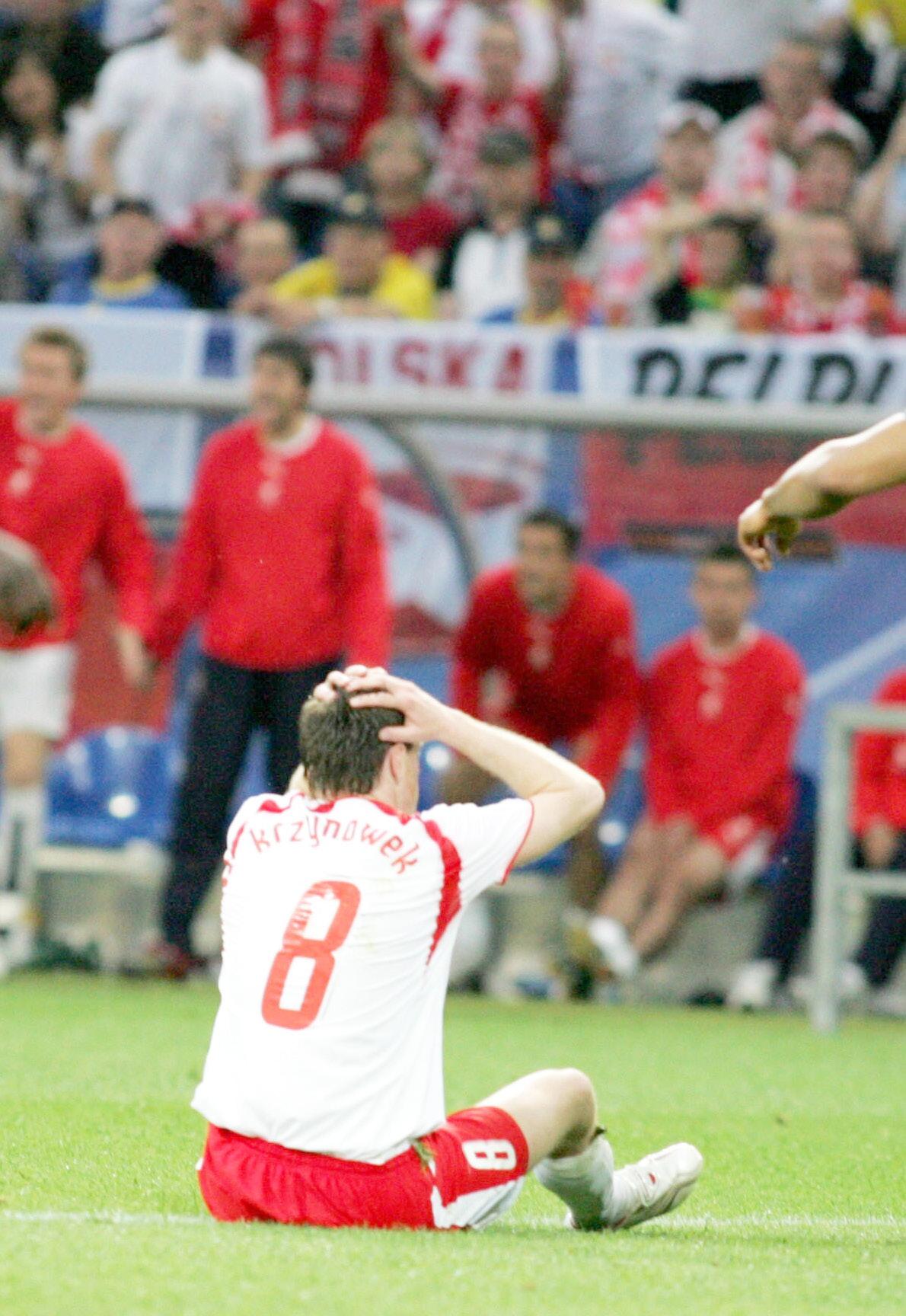
82
Łączy nas piłka
REPEAT STUTTGART!
It will be an exceptionally exciting afternoon. We can already say with a high degree of probability that on Tuesday 22 November 2022, many millions of Poles will receive permission from their employers to finish work a little earlier than usual.

83
ŚWIATA 2022
MISTRZOSTWA
ho knows, perhaps the most impa tient ones will de cide to take „time off on demand” and will already be glancing nervously at their watches from the morning onwards, looking ahead to 5pm. That is when Poland’s national football team will take to the pitch in faraway Qatar to begin their ninth appearan ce at the World Cup. And although it is difficult
Wto identify a favourite in the clash with Mexi co, it is certain that no one in Poland will lose faith in the final success for 90 minutes. Hi story, however, does not speak in our favour. In eight previous World Cup opening matches, the White-and-Reds have only won... once. At the memorable 1974 FIFA World Cup held in West Germany, Kazimierz Górski’s Eagles, after a fierce battle, overcame Argentina 3:2 in Stuttgart, starting their journey towards a place on the podium. Before and after, ho wever, things were no longer so rosy.
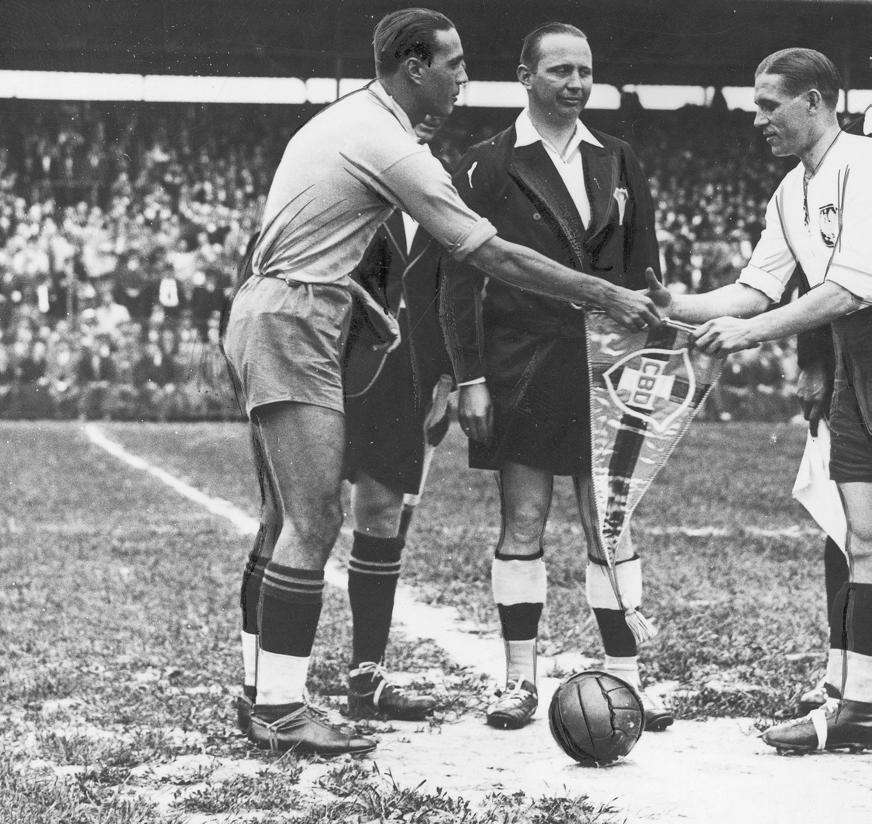
# Łączy nas piłka 84
Opening match in Strasbourg
In the World Cup opening match for the Po lish national team at the tournament in Fran ce, the opening match was both a match for everything and a match for honour. Of cour se we have to take this story with a pinch of salt. This is because the competition formula at the time only provided for a knock-out sta ge. The 16 participants were divided into pa irs, and in the 1/8 finals, fate paired the Whi te-and-Reds with Brazil. In Strasbourg, the team led by head coach Józef Kałuża per
severed for 90 minutes of basic time and half an hour of extra time to chase the „fle eing’ Canarinhos, who were already leading 1:0, 3:1, 4:3 and 6:4 before ultimately winning 6:5. The White-and-Reds bade farewell to the tournament but earned the respect of the ir rivals and the appreciation of their fans. „If anyone tells me the Poles can’t play football, I’ll spit in their face,” Brazilian midfielder Mar tim Silveira said afterwards. The national hero of Poland was Ernest Wilimowski, who sent the ball into the rivals’ net four times. No Po lish player has repeated such a feat at a World Cup to date. It was in France that the South American team, after beating Sweden 4:2 in the 3rd place match, won a World Champion ship medal for the first time in history. The Po lish national team, on the other hand, had to wait a long 36 years for another appearan ce at the World Cup!
This one time
However, when Poland finally made it, it cau sed a real sensation at the final tournament. Already in the battle for tickets to West Ger many, the team led by Kazimierz Górski cau sed a sensation by eliminating the 1966 cham pions, England. In the group stage, fate paired our players with the runners-up Italy, the Ar gentinians and the Haitians, who were predic ted to be eliminated in the group stage. First up were the „Albicelestes’, against whom the Poles fought a battle full of emotions and twi sts. In Stuttgart, in front of more than 31,000 spectators, we won 3:2 after two goals by the later tournament top scorer Grzegorz Lato and a goal by Andrzej Szarmach. This success has clearly fuelled our team, which has embarked on an incredible winning stre ak. The Poles later left in the dust not only the outsiders from the Caribbean, but also the great „Azzurri’, to subsequently also deal with Sweden and Yugoslavia. Only the hosts found a way to beat the White-and-Reds in the famous „match on the water’. Our play ers did not play in the final, but eventually re turned to the country with medals, after win ning 1:0 in the 3rd place match against the de fending champions, the Brazilians.
„If anyone tells me the Poles can’t play football, I’ll spit in their face,” Brazilian midfielder Martim Silveira said afterwards.
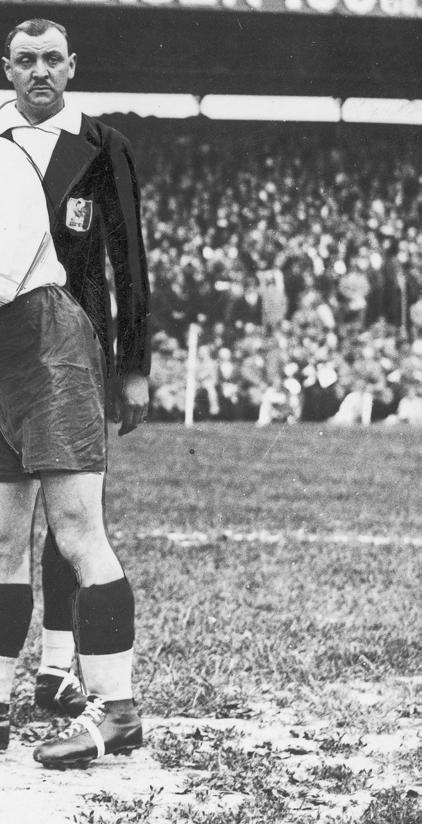
FIFA WORLD CUP I QATAR 2022 85
@Laczy nas pilka
A goalless series
After the success in West Germany, the Polish national team has grown into one of the favourites for the next World Cup - in Argentina. And although the White-and -Reds ultimately failed to repeat their pre vious medal achievement across the Atlan tic Ocean (they were ranked 5th-8th), they started the South American tournament with a real highlight. For the only time in history, the White-and-Reds took part in the opening match of the entire World Cup, where they faced the defending champions. Despite the huge expectations of fans all over the world, the meeting with West Ger many in Buenos Aires turned out to be qu
ite a disappointment, which was best evi denced by the goalless draw. Moreover, for our team, this was just the start of a cer tain series. This is because our inaugural matches at successive World Cups en ded with 0:0 results. This was the case at the 1982 tournament in Spain (which ulti mately finished on the bottom step of the podium), when Antoni Piechniczek’s team shared the points with Italy, and four years later in Monterrey, Mexico, where, unsurpri singly, our players fell short against Moroc co. At that time, certainly no one imagined that the Poles would have to wait a long 16 years for another attempt to score in the opening match.
For the only time in history, the White-and-Reds took part in the opening match of the entire World Cup, where they faced the defending champions.
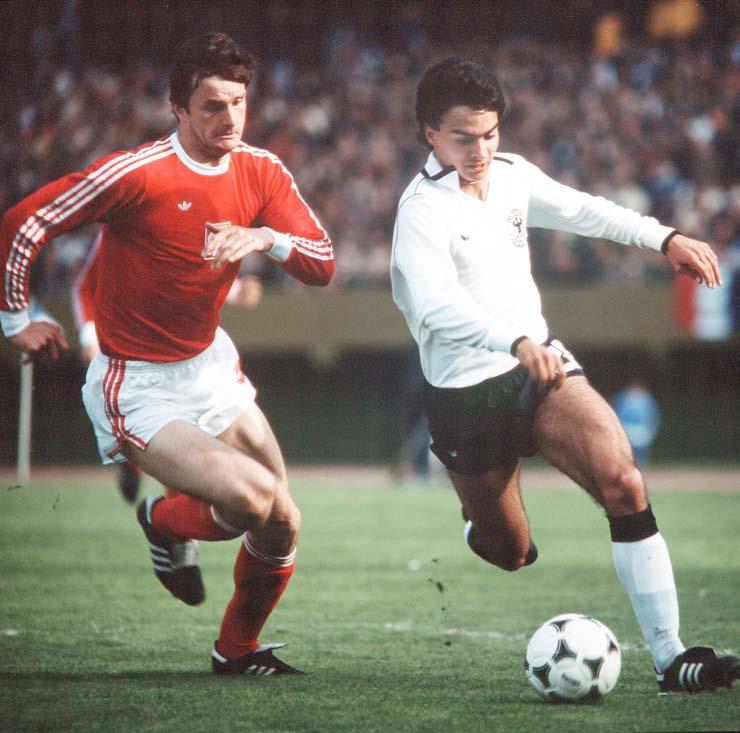
# Łączy nas piłka 86
In sporting terms, we experienced a repeat performance four years later in Germany, where Paweł Janas’ team succumbed to Ecuador, also 0:2.
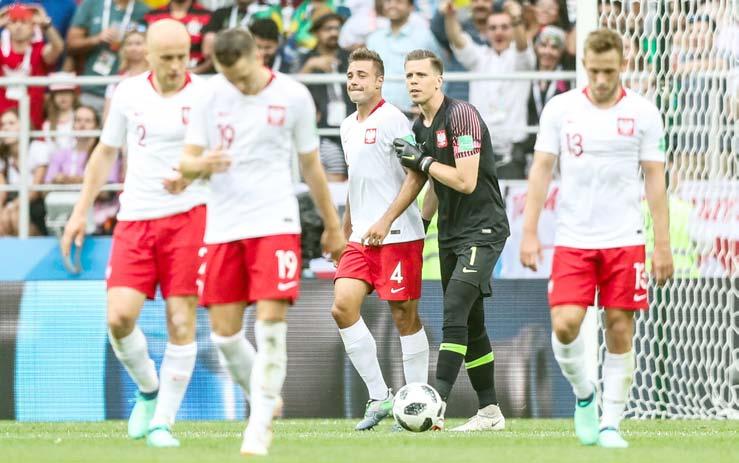
An unlucky 21st century
If anyone complained about our team’s three opening games without goals, the series of defeats in the new millennium must have been received with all the more bitterness. Not only did we have to wait until 2002 for another Polish promotion to the final tournament, but in faraway Asia, against all expectations, the hosts (who won 2:0) poured a bucket of cold water on the fired-up Polish heads in So uth Korea’s Busan. The original performan ce of the Mazurek Dąbrowskiego by Edy ta Górniak was more memorable for the fans at the time than the play of Jerzy En gel’s team, which ended its participation in the tournament at the group stage. In
sporting terms, we experienced a repeat performance four years later in Germa ny, where Paweł Janas’ team succumbed to Ecuador, also 0:2. After missing out on the World Cups in South Africa and Brazil, Adam Nawałka’s team was humbled by the Senegalese in Moscow four years ago. The 1:2 defeat, however, was the result of more catastrophic defensive errors than a decisive advantage on the part of the ri vals. Ahead of the upcoming match aga inst Mexico, one has to believe that eve ry series must have an end at some point and perhaps it is at Stadium 974 in Doha that the White-and-Reds will begin the victorious one. We would not mind at all!
Piotr Kuczkowski
FIFA WORLD CUP I QATAR 2022 87
@Laczy nas pilka
IN THE 8
MATCHES
THE WORLD CUP: 1 victory – 3
– 4 defeats, goals: 9-14
RECORD OF THE POLISH TEAM
INAUGURAL
AT
draws
WORLD CUP BALANCE POINTS IN FAVOUR OF POLAND
The Polish national team will play against Argentina for the third time at the World Cup, and against Mexico for the second time. The White-and-Reds have wonderful memories of the 1974 World Cup, but it was worse four years later. They will play against Saudi Arabia for points for the first time.

88 # Łączy nas piłka
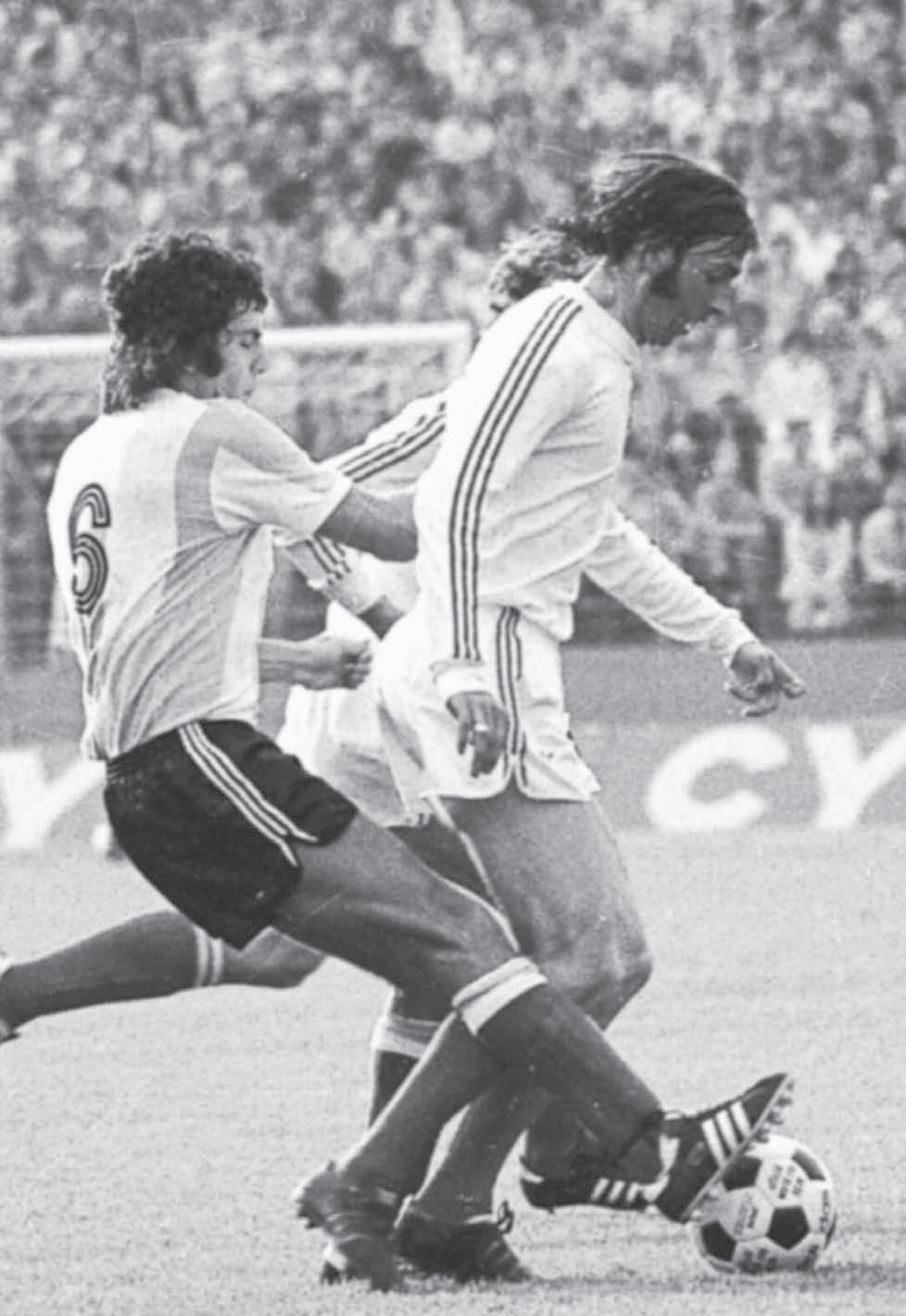
FIFA WORLD CUP I QATAR 2022 89
@Laczy nas pilka
The World Cup in FRG was very successful for the Polish natio nal team. Two years earlier, at the Munich Olympics, the Po les led by Kazimierz Górski had won the gold medal, but at the World Cup they were no longer the favouri tes. Meanwhile, they surprised everyone and
managed third place. To achieve this, they had to deal with Argentina, among others. And it was with this team that they played their first World Cup match after the war. They started strongly, as they led 2:0 after eight minutes thanks to goals by Grzegorz Lato and Andrzej Szarmach. Then the rivals scored a goal, but Lato replied in a flash. „We
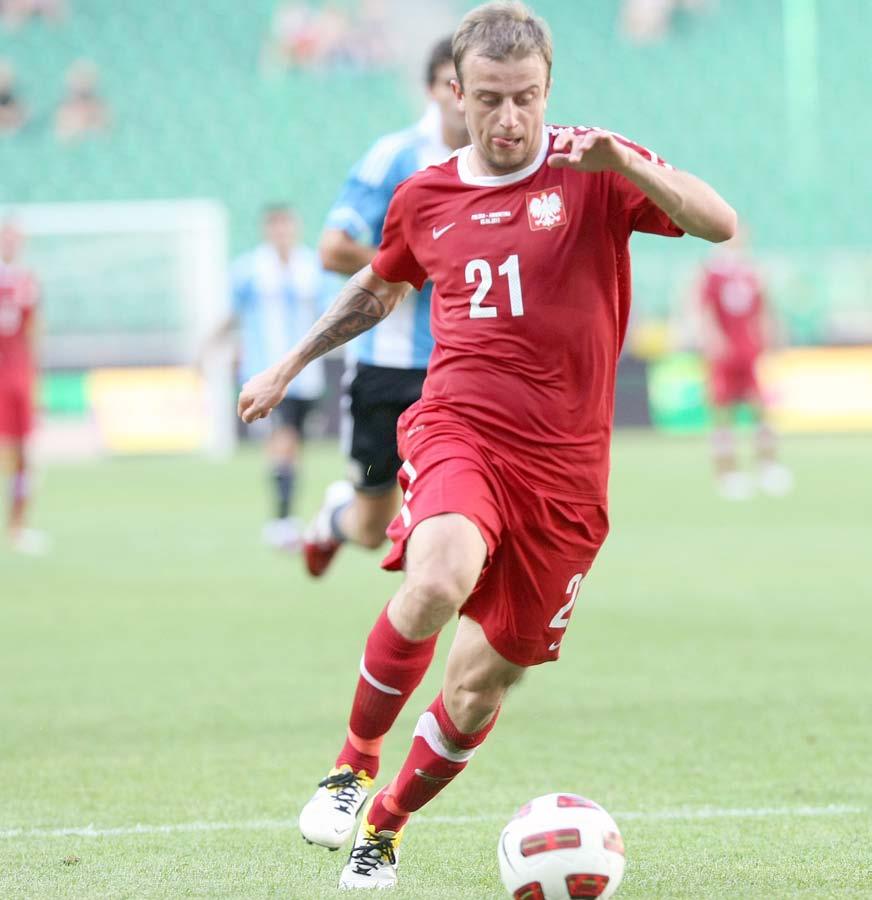
#
90
Łączy nas piłka
2011,
were not the favourites at all. Before the match against Argentina we were condem ned to defeat. And this was a key match. In the sparring matches before the World Cup we looked very weak. There were many vo ices asking why we were even going there. We will get hammered by Argentina, ham mered by Italy. Maybe we can handle Ha
iti”, recalls Zdzisław Kapka, a World Cup par ticipant in Germany. „The match against Ar gentina gave us a boost. We scored two go als very quickly after really big mistakes by the rivals’ goalkeeper and midfielders. Altho ugh they then scored the catch-up goal, we controlled the match. Especially as we re sponded to them quickly when the Argenti ne goalkeeper threw the ball under Grzesiek Lato’s legs”, he recalls.
Four years later, Poland went to the World Cup in Argentina as one of the favourites. And in the first group stage, it confirmed the se aspirations - it drew with eternal rival and then world champions Germany, beat Tuni sia and finally faced Mexico. The draw gave the team promotion, but the White-and-Reds confirmed that they were the best in the gro up. Jacek Gmoch included Zbigniew Boniek in the first line-up for the first time at this World Cup and he was not disappointed. After two goals by the Widzew player and one by Kazi mierz Deyna, the Poles won 3:1. „I would not like to distinguish any player. The most important thing is that we won and entered the second round. Now I would prefer to face Italy, and Ar gentina only in the final”, said Jacek Gmoch after the match. „For each match our team prepares differently, taking into account the strengths and capabilities of the players. The line-up is dictated by tactics. With Mexico we needed a player who could shoot from further away, so Boniek was picked. In this match, we executed the tactical plan 100 per cent. The team played economically and effectively”, he emphasised.
Coach Gmoch’s wishes were not fulfilled and in the second group stage the Poles faced, among others, Argentina. In the match, Kazi mierz Deyna missed a penalty shot and the hosts won 2:0 after goals by Mario Kempes. The Argentinians ended the World Cup with gold medals. The Poles beat Peru, but lost to Brazil and took places 5-8. „When the refe ree placed the ball at the eleven-metre mark in front of Deyna’s penalty shot, I closed my eyes. I was afraid we wouldn’t take that chan ce. It’s hard to imagine the enormous tension
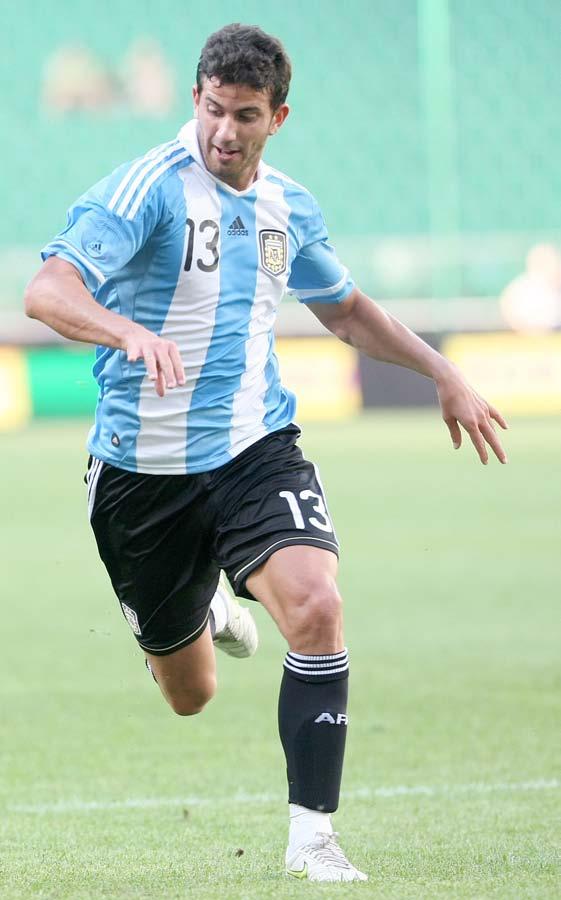
FIFA WORLD CUP I QATAR 2022 91
@Laczy nas pilka
In
they beat Argentina 2:1 after goals by Adrian Mierzejewski and Paweł Brożek.
of a game taking place in the constant scre aming of the audience of 40,000. I think Dey na couldn’t hold his nerve, but we fought to the end”, Adam Nawałka said after the match. „Previously, when we won, we were critici sed for the style. Now, after the defeat, we collect congratulations for playing well. We failed to take a great chance”, added Anto ni Szymanowski.
The balance of matches is in favour of Ar gentina. Of their 11 matches, the Poles won three, drew two but lost six (with goals of 12-18). A valuable victory was in 1981, when Antoni Piechniczek’s national team, prepa ring for the World Cup in Spain, won against the then world champions in Buenos Aires 2:1 (goals by Andrzej Buncol and Zbigniew Boniek). Also the last friendly between the se teams was won by the Poles. In 2011, they beat Argentina 2:1 after goals by Adrian Mie rzejewski and Paweł Brożek.
The balance of matches against the Mexi can national team is even, with three ga mes won, three lost and two drawn (with goals of 9-13). The aforementioned victory at the World Cup in Argentina 44 years ago was, however, their last. They had previously beaten their rivals in 1973 during the North American tour. In Los Angeles, they won 1:0 after a goal by Jerzy Gorgoń. In the rematch played three days later in Monterrey, they beat the Mexicans 2:1 (goals by Gorgon and Robert Gadocha).
Poland faced Mexico three times in the 21st century. Brożek should have the best memo ries of it - in his debut for the national team he scored a goal against this very team. In 2005 in Chicago, the match ended in a 1-1 draw. The same result was achieved six years later and again it was Brożek who scored. The last match against Mexico, in 2017 at the stadium in Gdansk, ended in a 0-1 defe at for the Poles.
Of our three group rivals in Qatar, the Polish national team has never faced Saudi Arabia in the World Cup. The White-and-Reds have only played against this rival three times in a friendly. In fact, each time they played with
the same line-up, a so-called national line-up, meaning that mainly players from the Polish league played. They won all their matches by one goal. In April 1994 in Cannes, they won 1-0 after Tomasz Wieszczycki’s goal. Eight months later in Riyadh, they beat the hosts 2-1 (goals by Henryk Bałuszynski and Tomasz Rząsa). In 2006, coach Paweł Janas’ team faced Ara bia three months before the World Cup. They
The last match against Mexico, in 2017 at the stadium in Gdansk, ended in a 0-1 defeat for the Poles.
Łączy nas piłka
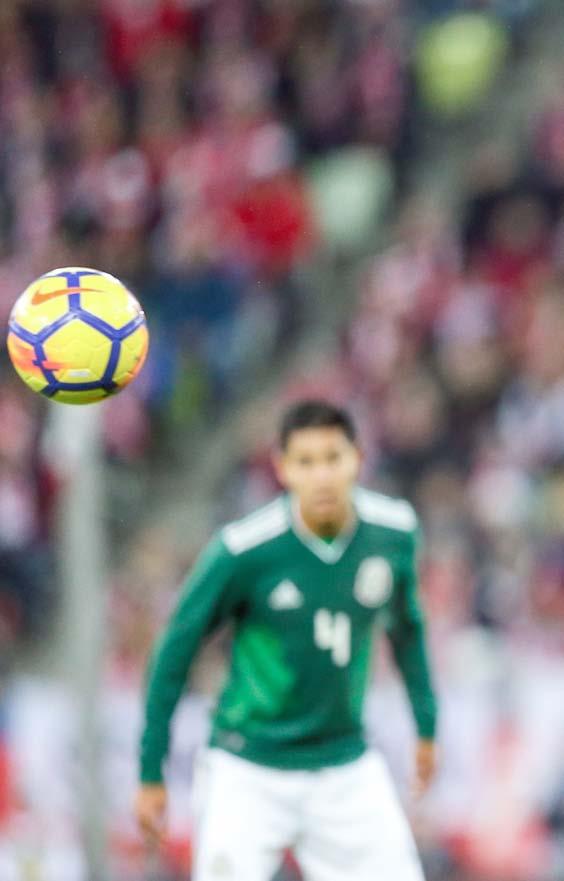
#
92
won 2-1 after goals scored by debutant Łu kasz Sosin. The media suggested that these goals could cause the head coach to take to the Cyprus Apollon Limassol player. However, it turned out that it was two other debutants who then began beautiful and long careers on the national team. It was the first time that Łukasz Fabiański and Jakub Błaszczykow ski played for the Polish national team. The
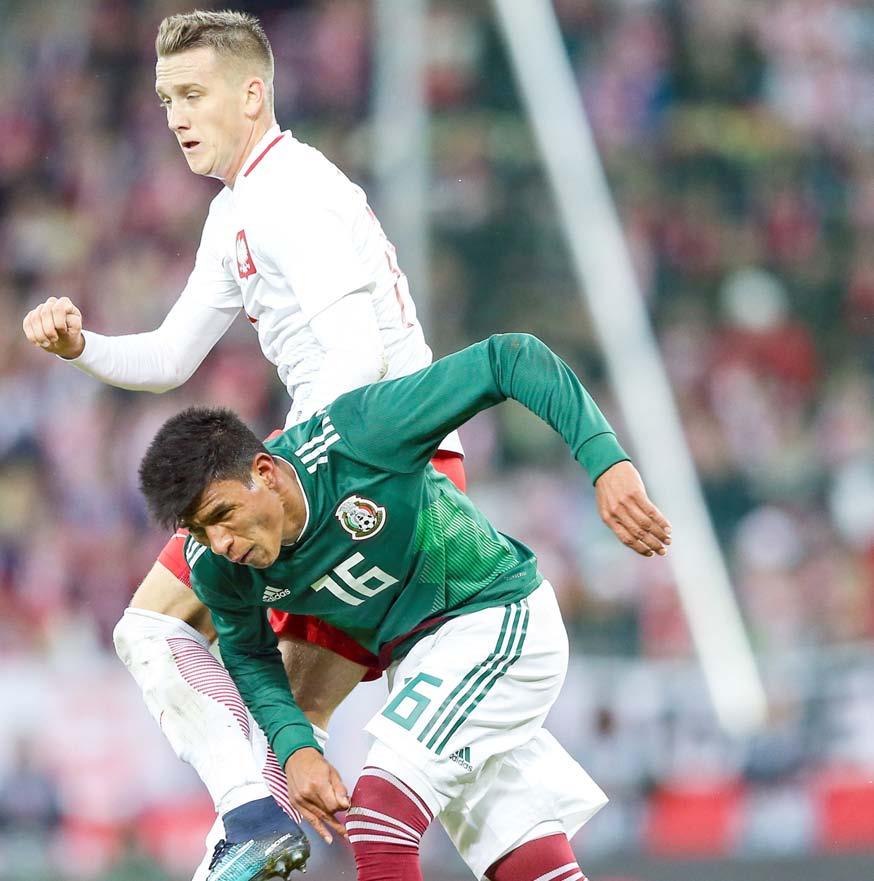
goalkeeper was even included in the squad for the aforementioned World Cup. Fabiański went to five tournaments (European Cham pionships and World Cup) and played 57 mat ches for the national team. Błaszczykowski played 108 matches and was captain of the national team - he played in the World Cup and twice at the European Championships. Andrzej
Klemba
FIFA WORLD CUP I QATAR 2022 93
@Laczy nas pilka
HIRVING LOZANO
THE MEXICAN MESSI
He was supposed to be called Irving, but a cle rical error made him Hirving. At the age of eleven, he left the family home to train at a leading football academy in Mexico. Mar cel Brands, who worked with Lozano at PSV Eindhoven, noted common traits with Leo Messi in the player’s style of play. Piotr Zielinski’s club col league embodies the qualities of many Mexicans – agility, speed, great technique and dynamism.
Thanks to these qualities, some people saw many simila rities in him with the star player of the Argentine national team. – When you look at his style of play, like it or not, you see Messi in front of you. His centre of gravity is low to the ground, he has extraordinary ball control, on top of that he has outstanding agility, almost explosive”, explained Brand, a former director of football at PSV. The club from the Ne therlands was the first stop for the later Mexican represen tative in Europe. He moved there from Pachuca, in which he debuted in the senior team at the age of 18. He was ready for it because, in order to pursue his passion for football, he decided to move, having only just reached the age of a te enager. He left his birthplace and travelled 90 km north. He therefore underwent an accelerated course of adulthood, as playing in the CF Pachuca youth teams involved living in a dormitory. So, as he climbed the ranks in the juniors, he was aware that sooner or later, if this development went well, he would live to compete in the seniors.
Creative initiative
In his three years of appearances as a senior for the club that nurtured and shaped him, he became known as a spectacular player who was difficult to guard. On the pitch, he confirmed that he found himself in football not
by accident. Individual successes only seemed to con firm this. On the pitch, he confirmed that he found him self in football not by accident. Individual successes only seemed to confirm this. In the 2016/17 season, he was crowned the top scorer in the CONCACAF Champions League. Two seasons ago, he was the most successful player at the FIFA U-20 World Cup. He confirmed his ta lent in the qualifying tournament for the Olympic Games in Rio de Janeiro. Admittedly, he only scored one goal in them, but that was enough to get Lozano into the best „eleven”. The young Mexican was later named MVP of the tournament. Furthermore, in his first game in the Pa chuca senior team, he scored a match-winning goal just minutes after entering the pitch.
„Lozano, who plays most of the time on the left wing in a 1-4-2-3-1 set-up, is right-footed and possesses all the attributes of an „inverted” winger. He has a strong right foot and is very dangerous when shooting after running with the ball from the left. He is equally adept at creating opportunities and scoring goals with his left foot. He has the capacity to make a great cross-field pass from a stan ding position, although he prefers to run to the middle. He also shows unusually, for a 20-year-old, developed creative initiative on the pitch”, writes Thomas Harrison about him.
TOP 100
In Europe, the player, who in Mexico is said to be the „pe arl” of local football, shone from the start. He scored 17 goals and recorded 11 assists in his first season in PSV at the league level. He repeated this achievement the follo wing season. His impressive numbers in Eindhoven have put him on the radar of Europe’s biggest clubs. Barcelona was interested in Lozano. – There was a lot more pressure on him in his first year as these were his beginnings in Eu rope. Now I can see how relaxed he is, he knows he is ca pable of scoring 20 goals every season”, said Brands, who brought Lozano to Europe. Lozano did not end up in the Catalan capital, instead he took a course to the south of Italy – to SSC Napoli. In Na poli, he may not boast such impressive numbers, although he is capable of easily achieving a dozen points in the Ca nadian standings. He has already played at the World Cup and other major tournaments. „The Guardian included the Mexican in its list of the world’s 100 best footballers. After all, not everyone scores the goal that gives their national team a win in the group stage of the World Cup against Germany, something that happened at previous World Cup. Piotr Wiśniewski
Łączy nas piłka
#
94
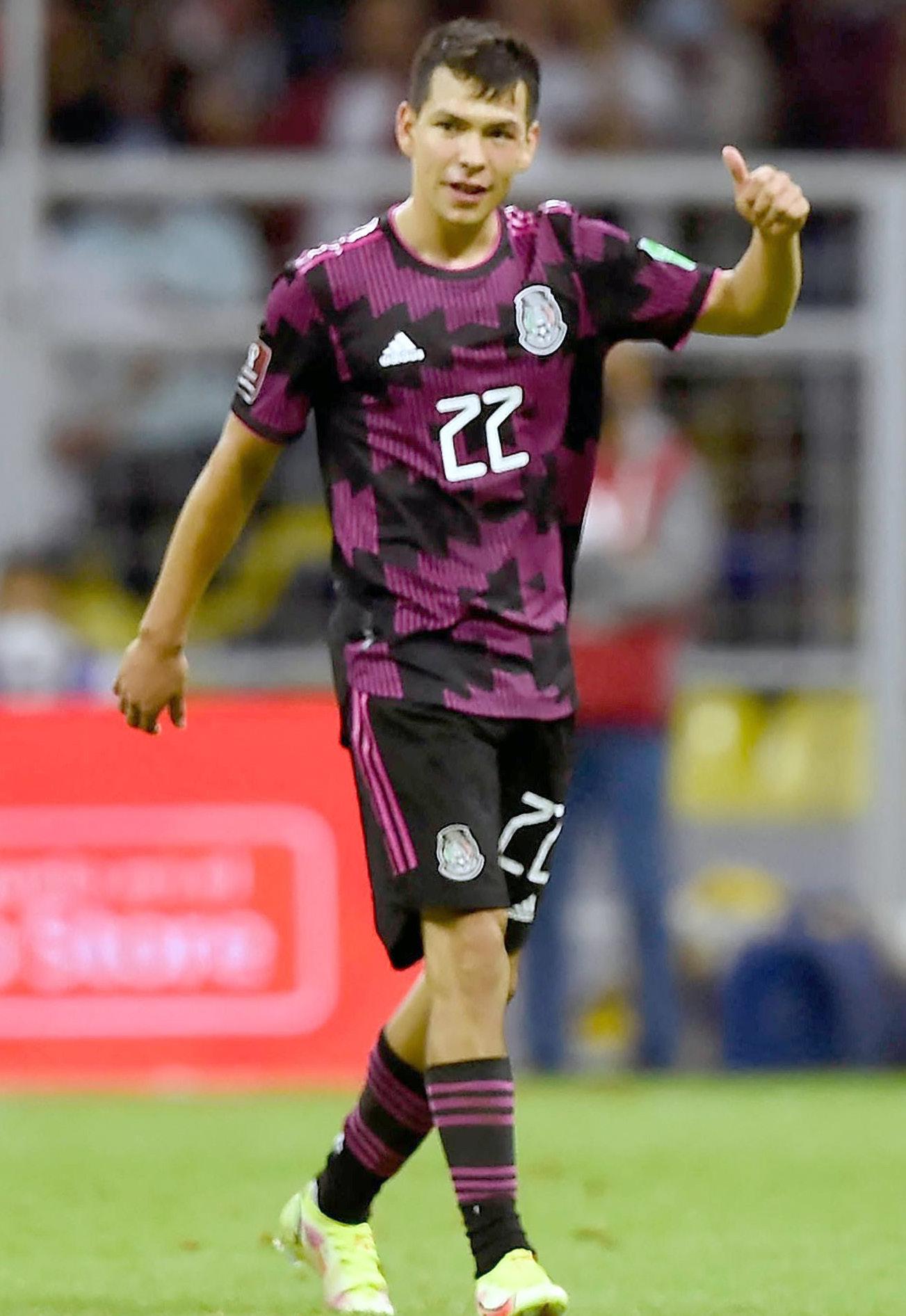
FIFA WORLD CUP I QATAR 2022 95
@Laczy nas pilka
GERARDO MARTINO
FUN THROUGH FOOTBALL
Unlike many high-profile figures in the co aching world, Gerardo Martino can boast a better-than-decent track record from when he played football professionally.
He was once the star of CA’s Newell’s Old Boys, a club with which he won the Argentine championship. In the prime of his career, he made only one appearance in his national team. Later, he himself led the Albiceleste team. He has been Mexi co’s head coach for the past three years, where his ap proach to football is proving excellent.
Martino defines football as fun. He is a proponent of „tiki taka”. – My suggestion is to be in possession of the ball, to attack. Sending multiple players into the opponent’s half, taking risks so that defenders look back and the re are 40 metres between them and the goalkeeper. To make sure they do not reject the game, and in situ ations where they need to go deeper, that they do so. So that the ball does not move senselessly”, he said in an interview. In another interview, he explained that a fo otball player comes first. „Coaches have the opportuni ty to be better or worse depending on the players they have to manage. A coach can never be above the one he directs. Coaches have been given too much impor tance recently”, he pointed out. Not surprisingly, with this approach to the game, he quickly gained a follo wing at home. The teams he leads play a very specta cular style of football.
Theory backed up by tactics
Because of his approach to the ball, his offensi ve mindset, he was given a chance at FC Barcelo
na almost ten years ago. He later told in interviews that it did not turn out well for him. With the „Pride of Catalonia”, he only managed to win the Spanish Super Cup. He said afterwards that the word that best describes his time on the Barcelona bench is „failure”. – Not only did we not win anything, we did not even present our style. A win in the Primera Division would change nothing. I did not enjoy co aching and there was no point in prolonging the si tuation”, he said.
After Barcelona, he led the Argentina national team, with whom he lost twice in the Copa America fi nal, Atlanta United and Mexico. Before Barcelona, he coached several clubs in Paraguay, then the country’s national team and his beloved Newell’s Old Boys. His success in the Paraguayan league opened the door for him to the „Guarani” national team, with whom he reached the quarter-finals of the 2010 World Cup and the final of the 2011 Copa America. In 2007, he was named South American coach of the year.
Faithful to Bielsa
Working in Paraguay was a stepping stone for the experienced coach to gain popularity. The whole fo otball world has heard of Martino’s name, hence the interest from FC Barcelona, among others. After all, he adheres to principles close to the Catalan football. He likes total football, which means that the whole team both attacks and defends. In this philosophy, the best defence is the attack. He often says that he compre hends football the way Marcelo Bielsa does. They had the opportunity to work together when Bielsa was a coach and Martino was a player at CA Newell’s. It was already then that the future head coach of Para guay, Argentina or Mexico began to understand that football is all about show. That a beautiful game is the best way to win the hearts of Argentines. – A mutual agreement is necessary for success. „El Loco” spoke and we embraced and accepted everything. Thanks to him we became better football players”, Martino wrote in his „El Tata” biography. Family remains Martino’s greatest value. It is his oasis of peace. The Argentine head coach’s strength is his ability to balance out the proportions that have enabled him to be successful in both club and na tional team football.
Piotr Wiśniewski
Łączy nas piłka
#
96
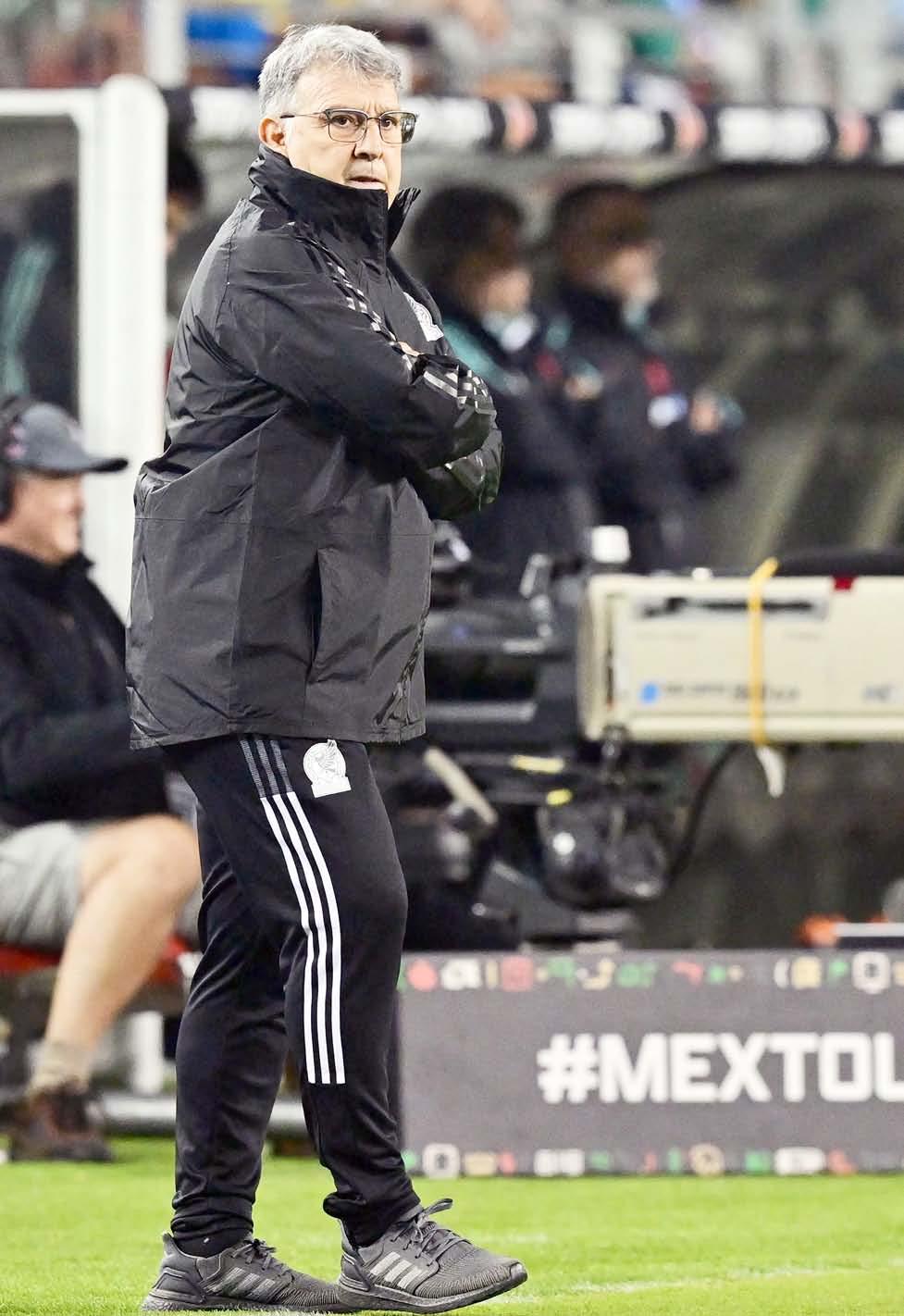
FIFA WORLD CUP I QATAR 2022 97
SALEM AL-DAWSARI
THE COMFORT ZONE OF „OWN BACKYARD”
Few Saudi football players are fortu nate enough not only to go to Europe but to perform in one of the world’s strongest leagues. Salem Al-Daw sari has admittedly only played in one Villarreal CF game, against Real Madrid. He is regarded as a star in his own country and has a considerable collection of succes ses. With Al-Hilal SFC, he has won everything there is to win in Saudi Arabia, but his suc cesses extend much further afield – across the continent.
In addition to triumphing five times in the Sau di league, winning the national cup three ti mes, one National Super Cup and winning the Crown Prince Cup twice, Al-Dawsari celebra ted success in the Asian Champions League twice. The latter triumphs took place in the 2018/19 and 2020/21 seasons. The 31-year -old is among a handful of players to have played in four AFC Champions League finals. In 2021, he was voted MVP of the competi tions. „I am thrilled about this award but I am always looking forward to the next one. A lot of people said I deserved to be named Asia’s best football player but that is not the case at all. This is an important award, but it is not the end of my road. This is not my ultimate goal. It motivates me to win even more tro phies and individual awards”, he said.
A challenge has been issued
The compilation of the International Fe deration of Football History & Statistics, which included Al-Dawsari in the „line-up” of the best team of the decade (2011-20), says a lot about his role in Asian football. He means a lot in club football in Asia. He has also had a lot to say in the national team. He started with a goal in his debut against Australia. He scored a goal, for example, in a friendly against Greece, while in a match against Italy, he scored an assist. His goal sealed Saudi Arabia’s victory in the second round of the group stage at the Asian Zone World Cup qualifiers against Australia. In the national team, he is one of the key play ers as well as a top dribbler. He stands out for his dynamism on the pitch. „Salem has plenty of experience playing at the highest level in Asia. Both he and our captain Sal man Al-Faraj are two of the team’s best players. I challenge them to show their form from the club in the national team. Such players will have to help the national team perform at its best”, said Saudi Ara bia’s head coach Herve Renard.
Anywhere as long as it is in the front These words send a clear message to AlDawsari – Saudi Arabia is counting on him at the World Cup. The country had also counted on him before the previous World Cup. He was then sent by the Saudi fede ration to Spain to learn how European fo otball works. He returned not only with use ful insights but also with a unique memory. On 19 May 2018, while a Villarreal CF play er, he entered the pitch in the 57th minu te of a LaLiga match against Real Madrid. His team at the time tied with „The Whites”. „For us Middle Easterners, being in Spain is a dream. And now I can make those dreams come true. It’s a great league, I feel proud to be here. I am most comfortable playing on the wings but I also like playing in the middle. I try to create a threat in the offen ce from every position”, said Al-Dawsari.
Piotr Wiśniewski
On 19 May 2018, while a Villarreal CF player, he entered the pitch in the 57th minute of a LaLiga match against Real Madrid.
Łączy nas piłka
#
98
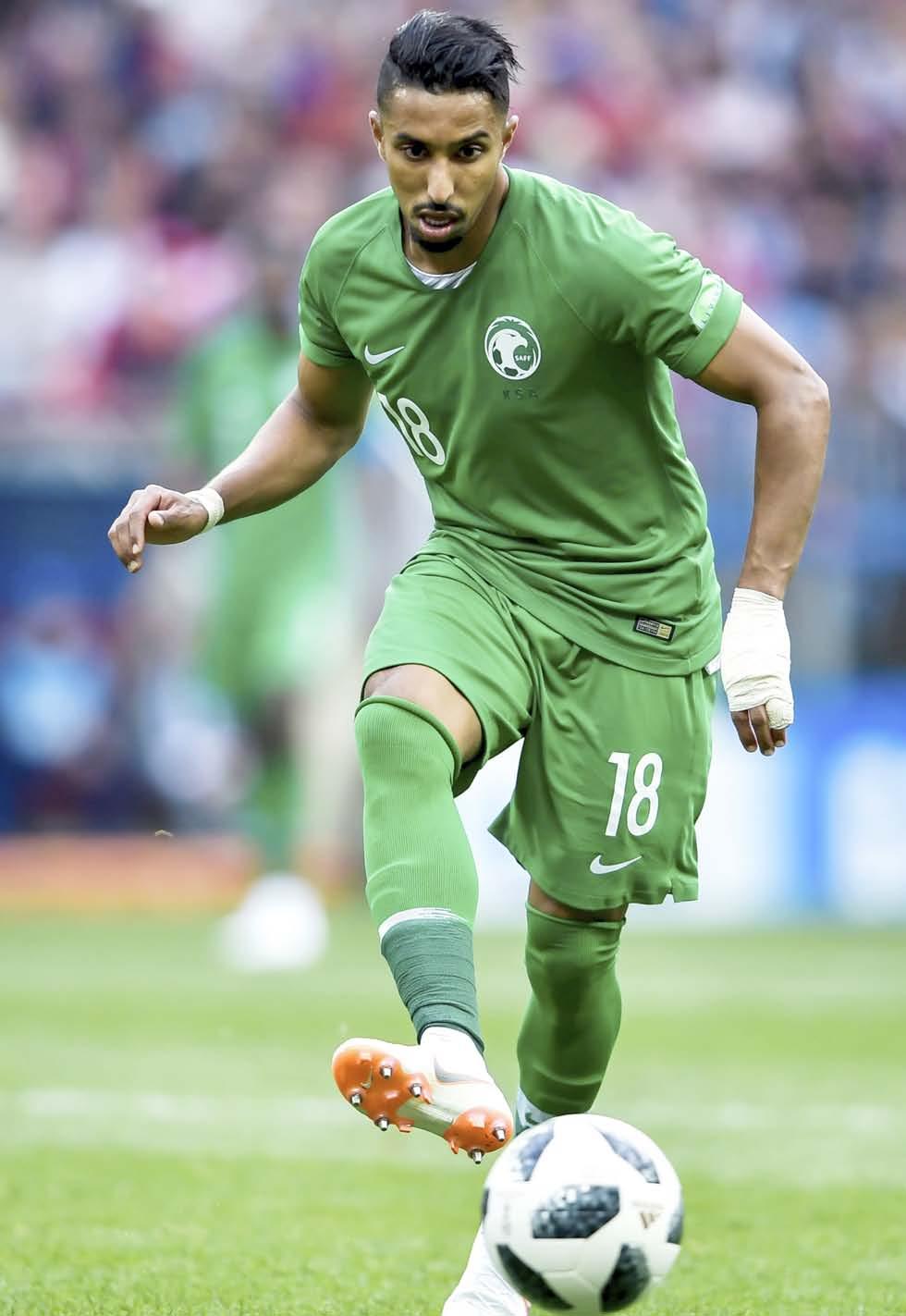
FIFA WORLD CUP I QATAR 2022 99
@Laczy nas pilka
HERVE RENARD CITIZEN OF THE WORLD
His coaching career path includes work in Europe, Africa and Asia. He coached Ligue 1 clubs but he also gained work experience in China. He was born in France, he leads the Saudi Arabian national team and has a lot in common with Poland. Herve Renard has come to know many cultures, customs, but above all he is highly respected in the „Black Continent”, where he has had his greatest successes. It is through his work with Zambia and Côte d’I voire that he has earned widespread respect in Africa. In 2012, Zambia won the Africa Cup of Nations with him on the bench; three years later, he repeated the success with Côte d’Ivo ire. However, the list of African countries he has had the opportunity to coach does not end the re. It also includes Angola and Morocco. He lead Zambia twice. In 2018, he led Morocco into the World Cup. He is writing the next World Cup chapter with the Saudis, whose performan ce he is responsible for from 2019. He has alre ady made Saudi Arabia’s football history as he is the country’s longest-serving national team head coach since the 1980s. No wonder he has been holding such a prestigious post for so long. After all, since he has been working with the na tional team there, he has averaged close to two points per match.
Africa has given him a lot
In the first group stage of the qualifiers for the Asian Zone World Cup, Saudi Arabia won 20 po ints in eight matches. In the second group sta
ge, the Saudis were ahead of Japan by a point and as many as eight points ahead of Australia. They are a team that plays very offensive foot ball. And the fact that this is characteristic of Re nard’s team was confirmed during the last World Cup. Although they only won one point, Morocco left a very good impression, especially after the 2-2 draw with Spain. They even got close to eli minating the Spaniards from the World Cup. „It has not crossed my mind even for a second that one day I would be working in Africa. Fate led me there. Thanks to Claude Le Roy, I started my ca reer as an assistant in Ghana. The 2008 Africa Cup of Nations was my first, later I participated in six more. That’s quite a record. I consider win ning these competitions twice a success. You have to experience something like this to believe it’s not a dream. The Zambians and Ivorians hel ped me experience the kind of emotions I will ne ver forget”, said Renard, whose coaching career does not just revolve around the national team.
Swiss passion
He coached FC Sochaux in 2013-14, then LOSC Lille, and before that USM Algiers, SC Draguin gan, the club where he ended his football care er, Shanghai COSCO Sanlin, Cambridge United, and AS Cherbourg. He did not have such a colo urful career as a player. He played for three teams – AS Cannes, Stade de Vallauris, SC Draguignan. So it was only being a coach that opened up the world to him. It provi ded him multiple opportunities. As he himself ad mits, when he played football professionally, the kind of emotions he experiences as a coach were somewhere in the realm of dreams. And today he is a respected coach on two continents – Afri ca and Asia. And a person whose family history is intertwined with Poland. After all, the grand parents on his mother’s side are from Poland. Mr and Mrs Cybulski lived in Poznań. That is why he is looking forward to the match against the Whi te-and-Reds with such excitement. „I dedicate this draw to my mother. I think she is very hap py”, confessed the coach, a watch enthusiast. He even has a contract with Hublot, a manufac turer of exclusive watches from Switzerland.
Piotr Wiśniewski
I consider winning these competitions twice a success. You have to experience something like this to believe it’s not a dream. The Zambians and Ivorians helped me experience the kind of emotions I will never forget
Łączy nas piłka
#
100
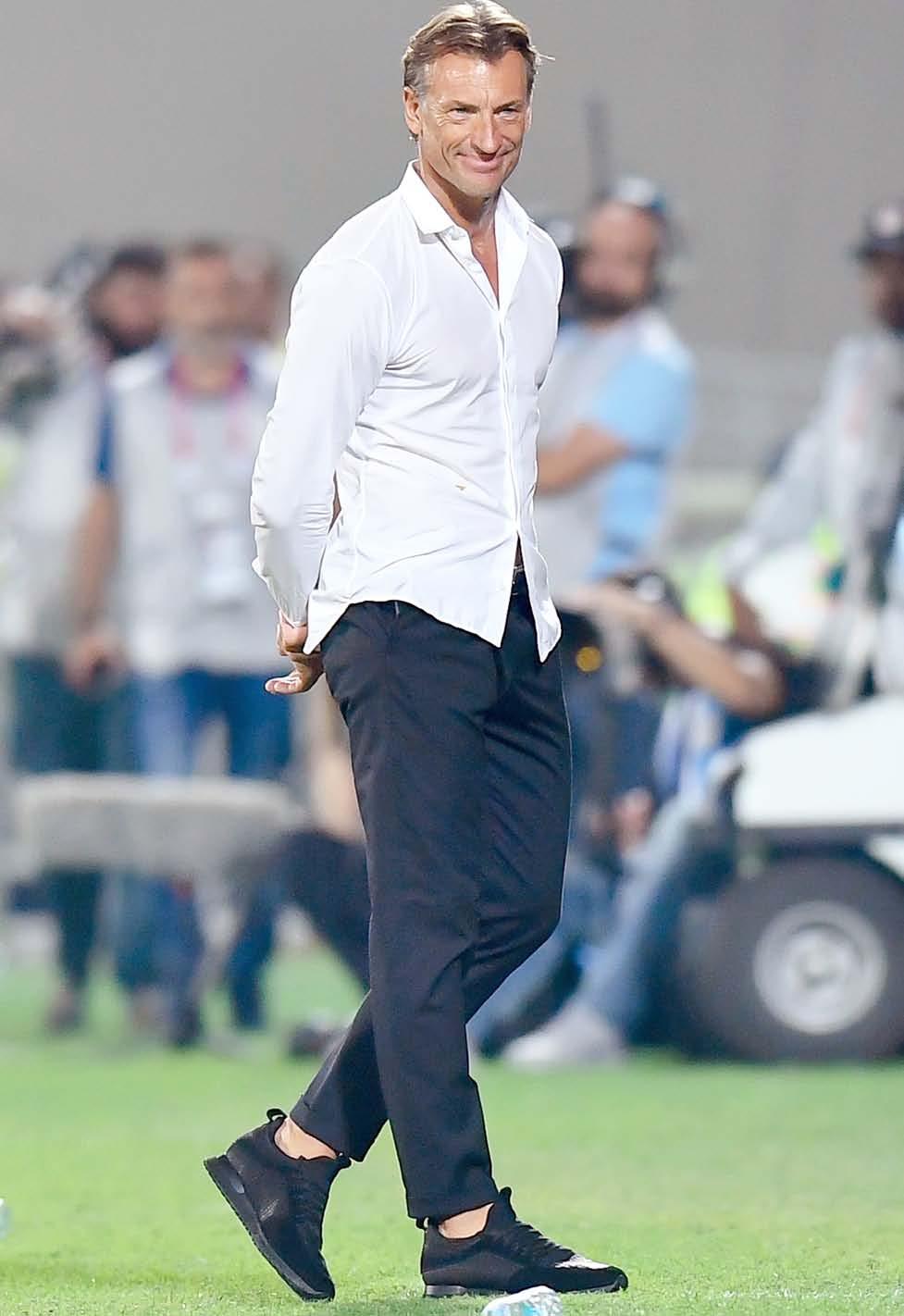
101 FIFA WORLD CUP I QATAR 2022
LIONEL SCALONI
SCALONI MEANS SUCCESS?
He was supposed to be only a temporary coach. For a mo ment. This moment has alre ady lasted four years and will last even longer, because Lio nel Scaloni has just renewed his contract with the Argentine Football Fe deration until 2026. From a coach without much experience before, he became one of the most respected people in the country. He restored Argentina to its rightful place in So uth American football. The failure in the 2019 Copa America semifinal became fertiliser for the success in 2021 when the Albiceleste, for the first time in over three decades (!), proved to be the best team on the continent. Scaloni did something that his much more experienced predecessors failed to do – he achieved success with Argentina. He has built a team that will be one of the favouri tes for the final triumph at the champion ship. He accomplished this despite little expe rience on the bench. And against common lo gic because, after all, he was not part of the long-term plan of the federation. Or at least this plan did not include Scaloni as the head coach of the main national team. Indeed, be fore he took over the senior team, he was re sponsible for the performance of the national under-20 team. Previously, he was an assi stant to the main national team and at Se
villa FC. But this, plus experience gained on the pitch, was enough for him to make Ar gentina’s national team play to its potential.
More than peace
The Argentines’ performance is impressive. In the World Cup Qualifiers, they have not lost a single game. The last time they ack nowledged the superiority of their rival was in the 2019 Copa America final. This match and its result became a turning point in Sca loni’s history as head coach. Since then the Albiceleste went like a bomb. They have al ready scored nearly 100 goals and won the most important trophy in South America. In June, they proved their strength to Italians, defeating them 3–0.
Scaloni himself is a peaceful warrior and this allows him to build strong relationships within the team. It is not surprising that the players of the Argentina national team were enthu siastic about the recent extension of the con tract with Scaloni. „Leo is a coach who con stantly demands from himself and from us, so that we get better and better”, said midfiel der Rodrigo De Paul. „The head coach has ne ver had so much peace. I hope this is best for everyone”, added defender Nicolas Otamendi. The coach of the Argentina national team seems to confirm that he is the right man in the right place. „I am convinced that pe ople identify with the team and know that this is a team that will give its all until the last minute, that knows that in football the re are ups and downs and that anything can happen, but this team will give its all until the last second. I am very excited to lead play ers who showed me that they really know how to represent our country, I am very pro ud of them. They made a tremendous ef fort, some of them became fathers during the training camp, some of them do not see their children, their grandparents. For us, it is a success that we came here and that these players showed that they want to win some thing”, said the coach before the Copa Ame rica final a year ago.
Piotr
Wiśniewski
From a coach without much experience before, he became one of the most respected people in the country. He restored Argentina to its rightful place in South American football.
#
102
Łączy nas piłka
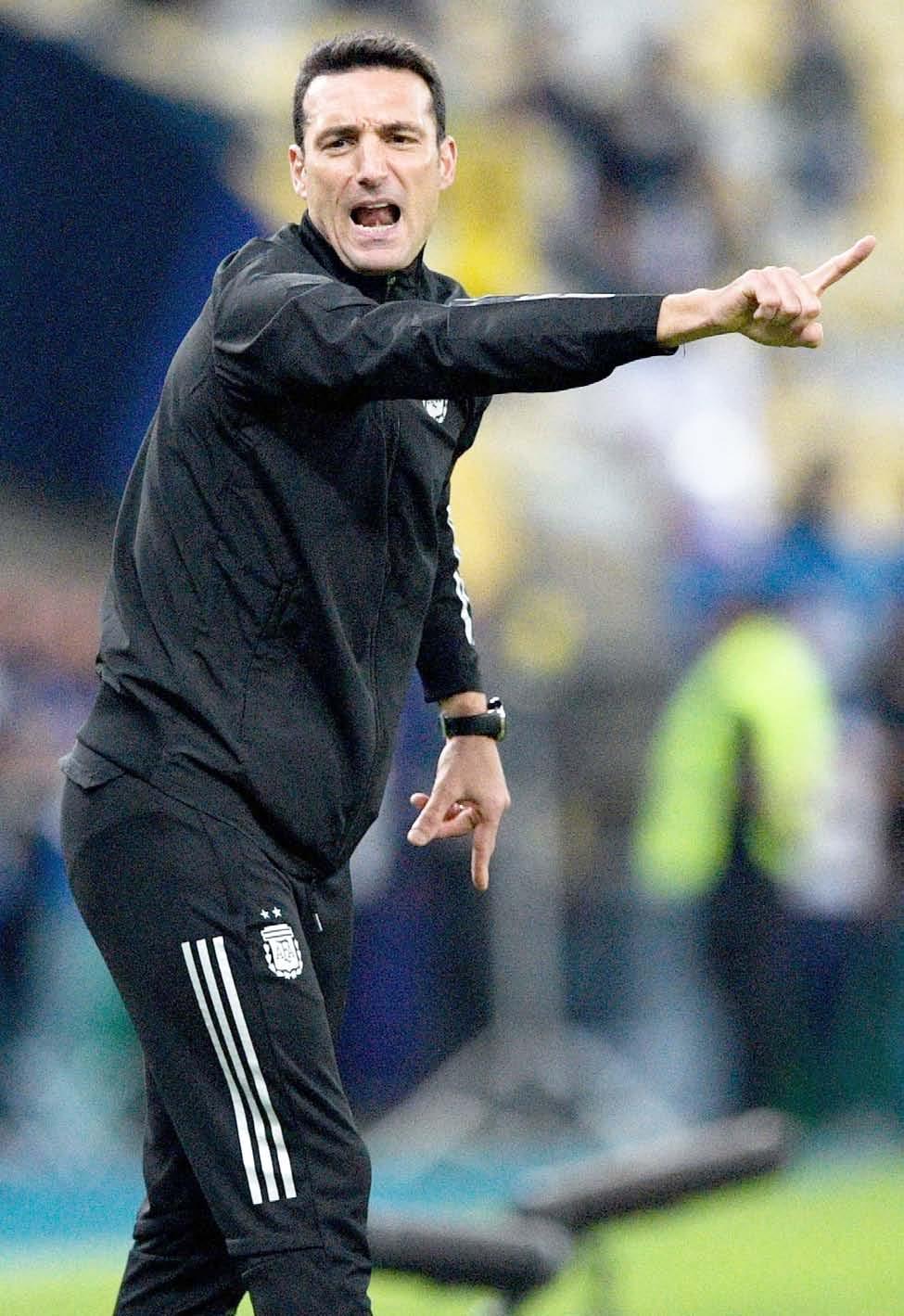
FIFA WORLD CUP I QATAR 2022 103
LEO MESSI
THE BRILLIANT „FLEA”
There’s a reason why he is regarded as one of the best players in the history of football. For a generation born in the late 1980s and early 1990s like him, he is a symbol of the age-old ri valry with Cristiano Ronaldo for supremacy in world football. Because you can live in the era before Leo Messi or in the Messi era. You either associate him with FC Barcelona or wait for his spectacular success with the Argentina national team which he will lead to victory. That’s how it is with Leo Messi – on the one hand, a sa ted footballer when it comes to club football, on the other hand – hungry for success in the context of national foot ball. It is the lack of this most important scalp with the na tional team, the so-called „Golden Grail” (world champion ship), that looms large over the 35-year-old from Rosario. The golden child of Argentina. The symbol of modern Bar celona. One of the two greatest players of our time. There is not one who can list in one breath the successes of the Ar gentinian in the Catalan capital. There would probably also be some who would find it difficult to enumerate all of his triumphs in the Golden Ball Awards. Suffice it to say that we are talking about a record holder in terms of goals scored in a calendar year and in a single season. Finally, he is the sco rer of the most goals for one club in the history of football.
Grandma’s touch
It’s just that all the successes mentioned, not counting the many triumphs in the Champions League, La Liga and all po ssible European cups and competitions in Spain, were achie ved with FC Barcelona. The club that gave Messi the most. The club to which Leo himself gave the most. Only the be hind-the-scenes of the Argentinian footballer’s parting with
Barcelona one year ago, when he decided to continue his career at PSG, leave a sour taste in your mouth.
The brilliant Argentinian’s adventure with „the Pride of Ca talonia” began in 2000 and has lasted more than two de cades „It was a difficult decision to make, but at the same time I did it quickly. I didn’t even hesitate or think about the consequences. I didn’t really understand what it meant to leave Argentina, my people, my friends and start a new life elsewhere. At first it was very difficult for me since I could n’t play because of paperwork issues and then I also suffe red an injury... I stayed off the pitch for almost a year. Then my luck turned around because from then on everything went very quickly”, he recounted in an interview with Ole. And to think that it all started with Leo’s grandma who one day convinced a coach friend to let her grandson play. The 1986 team was short of one boy for the game, so she felt it was the right time to give Leo a chance. „Look how small he is, that’s insane, they’ll hurt him”, she heard in response. However, she continued to stand her ground. The coach, se eing that there was no way out, that Leo’s grandma would not give it up, yielded. At the end of the training, he said: „Buy him football boots, I’ll take him to the next training session”.
The problems shaped him
The machine was set in motion. Messi began writing his own history and that of the entire Argentinian football in golden letters. However, a recurring theme throughout his career was health. Several years ago, Brasilian newspaper Diario do Centro do Mundo revealed that Messi had been diagnosed with Asperger syndrome – a milder form of autism. „People affected by autism always try to follow a certain pattern and reproduce it accurately. Messi always makes the same moves, falls to the right, his dribbling is always the same and he scores almost identical goals”, says Nilton Vitulli, father of a child with Asperger syndrome and an active member of the non-governmental „Autism and Reality” organisation. „Messi serves as an example of how to combat the disease”, admits Giselle Zambiazzi, the President of the association that brings together people who tackle autism and their fa milies. Messi managed to overcome one problem on his own. Another problem – low height (he suffered from growth hor mone deficiency) required help from other people. „Growth hormone? I used to inject it in my leg. I was 11 or 12 then. My parents had helped me inject it until I learned how to do it myself”, recalls Messi in the „La Cornisa” news show. Ap parently, these defects have not prevented him from beco ming one of the greatest players in the history of football.
Piotr Wiśniewski
Łączy nas piłka
#
104
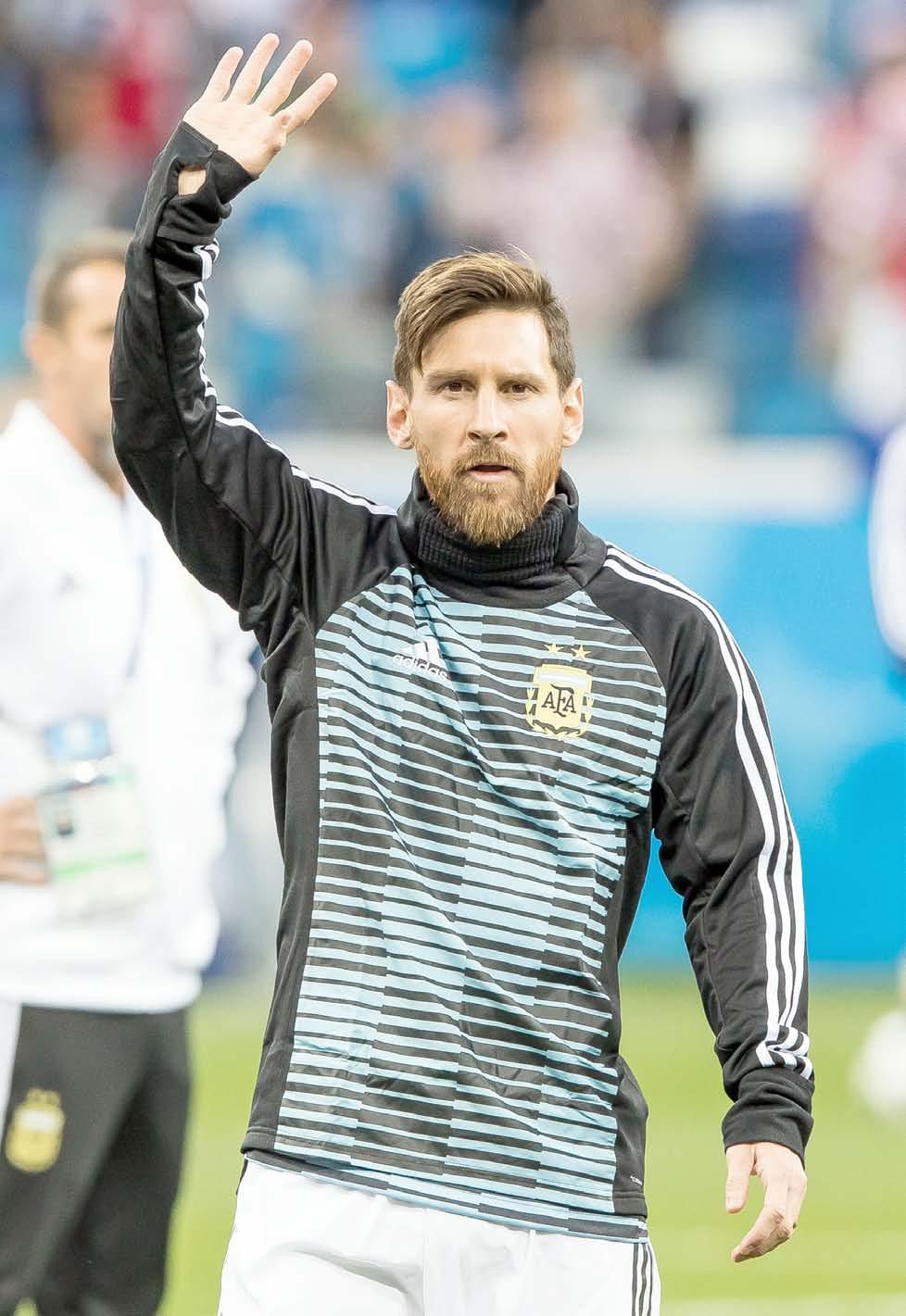
FIFA WORLD CUP I QATAR 2022 105
@Laczy nas pilka
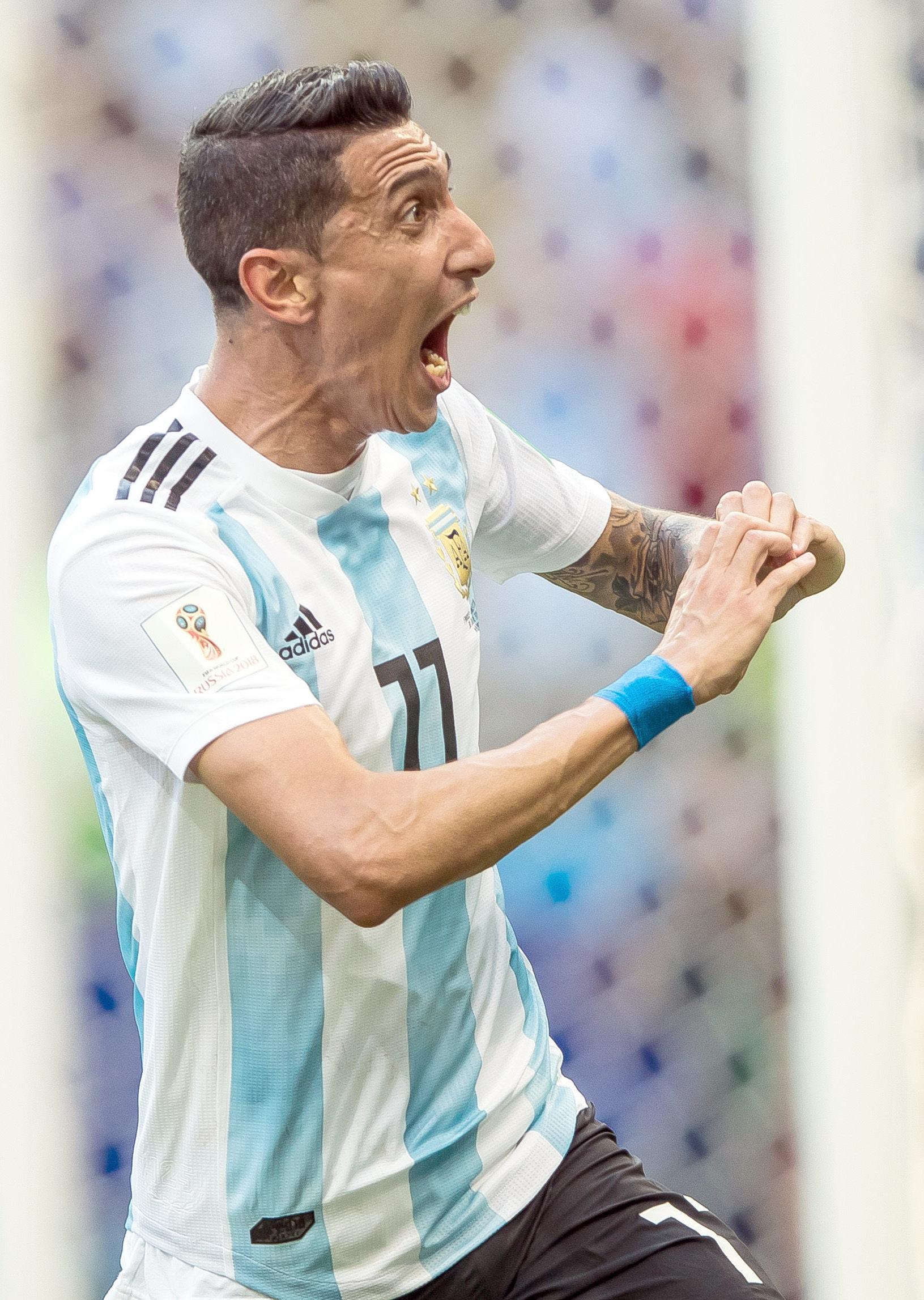
Łączy nas piłka 106 #
ARGENTINA FROM A TO Z
After a terrible performance at the World Cup finals in Russia, Argentina’s national team bid farewell to Jorge Sampaoli. The federation had trouble finding his successor, also due to organisational and financial problems, and, as if in the abscence of a better option, the role went to Lionel Scaloni. Diego Maradona criticised this choice, but time has shown that he was wrong – very wrong. The current head coach quickly found common understanding with his namesake, Messi, and changed the face of the team with which he won third place at the 2019 Copa America and first place at the 2021 Copa America and the 2022 Finalissima. Now the Albiceleste are aiming for gold in Qatar.
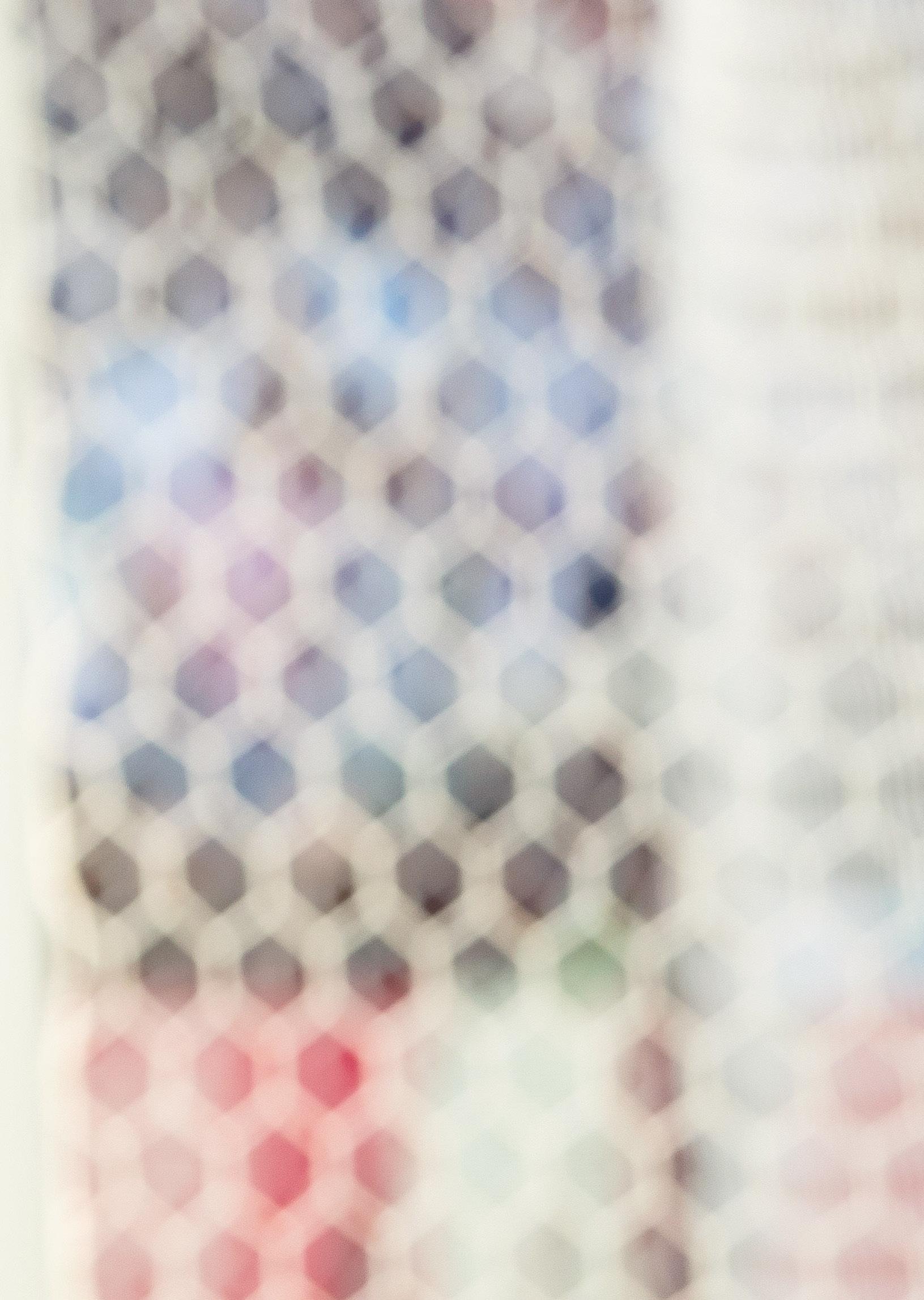
FIFA WORLD CUP I QATAR 2022 107
@Laczy nas pilka
Assistants
No other head coach at the World Cup has assistants as internatio nally experienced as Scaloni. Pa blo Aimar, Messi’s idol, played 53 matches for the Argentina national team (6 at the 1998 and 2002 World Cups), Roberto Ayala – 116 (10 in the 1998 and 2006 World Cup finals, also participated in the 2002 tour nament), and Walter Samuel – 56 (5 in the 2002 and 2010 World Cup fi nals). All three have a great rapport with Leo Messi, each played with him in the national team.
Batistuta Gabriel
In Qatar, Leo Messi who scored six shots (2006 – 1, 2014 – 4, 2018 – 1) will try to beat Argentina’s top sco rer at the World Cup finals (10 goals). “Batigol” was long the best sniper in the history of the Albicelestes with 56 goals, but he was left far behind by Messi who defeated goalkeepers 90 times.
bodyguard Rodrigo De Paul made his debut for the national team in October 2018 in a friendly against Iraq. Scaloni gre atly values his prowess, strength, character, as well as his football skills (especially the long, precise passes). The homegrown player of Racing Bu enos Aires made 6 appearances in the 2019 Copa America (out of 6 po ssible), in the 2019 Copa America – 6 (7), and in the 2022 World Cup quali fiers – 16 (18). When the midfielder, who moved from Udinese to Atletico Madrid in July 2021 (for EUR 35 mil lion), is healthy and not on pause for cards, he has a secure place in Sca loni’s starting eleven. He is said to be
Leo Messi’s bodyguard because he covers Argentina’s leader in defen ce, and when someone treats him too roughly De Paul is the fastest to intervene.
Europe
Opponents from this continent were problematic for Argentina at the previous World Cup. It tied with Ice land 1–1, lost to Croatia by as much as 0–3 and to France 3–4. During the tenure of Scaloni, who was for merly an assistant to Jorge Sam paoli, there weren’t many oppor tunities to compete with Europe an teams. Only three such games have taken place. In a friendly, Ar gentina tied with Germany 2–2 and won against Estonia 5–0 (5 goals by Messi), and in the Finalissima (clash of the Copa America and Euro champions), beat the Italians 3–0.
Gomez Papu
He turned 34 in February and made his debut in the national team in 2014, but he established a decent position during Scalo ni’s term. Sevilla’s creative foot baller scored two goals at the 2021 Copa America. He works very well with Leo Messi and is one of the moodmakers in the team. He’s a great dancer and an unprecedented jokester.
holiday
After the June national team mat ches, 10 representatives of Argen tina and their families went on holi day in Ibiza. The footballers took their physiotherapists with them and ren ted a centre where they played fo
Łączy nas piłka
#
108
A B G H E
otball together. The holiday was or ganised by Angel Di Maria and Nico las Otamendi, and Messi joined his friends for three days. All this to cre ate the best possible atmosphere in the team, although it was not bad in the first place.
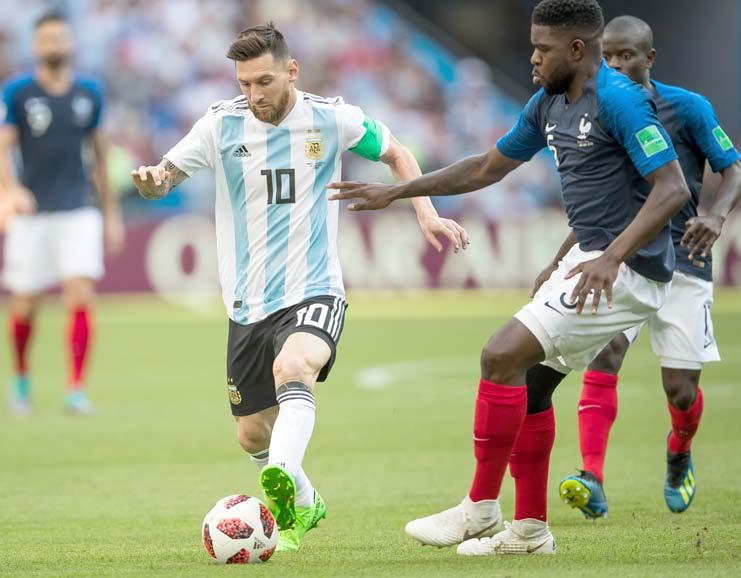
Inter Mediolan
This club has been using Argen tina’s representatives for deca des. One of the symbols of Sca loni’s tenure as head coach is Lautaro Martinez, who scored 21 goals in 40 games for the natio nal team. Inter paid Racing Bu enos Aires as much, or as little, as EUR 23 million for the reve lation of the 2017 South Ame rican U-20 Championship. Lau
taro has a great understanding with Messi in the national team and there was even talk of his move to Barcelona. It died down when Messi changed Catalonia for Paris. “I feel fantastic in Mi lan,” maintains Lautaro who is fulfilled by playing in the Cham pions League. And the first goal for Scolari’s Argentina was also scored by a Martinez, but Gon zalo, in a friendly against Guate mala in Los Angeles (3–0). This player left the national team himself, first with a transfer to Atlanta United, and definitely with his move to Saudi Arabia, where he earns petrodollars at Al Nassr FC. His clubmate is the famous Colombian goalkeeper, 34-year-old David Ospina.
FIFA WORLD CUP I QATAR 2022 109
@Laczy nas pilka
I
lob Lobs are the speciality of Angel Di Maria. That’s how he scores a lot of goals, and the most important of his career were the ones scored in the battle for the Copa America gold aga inst the Brazilians. After a wonder ful, long pass from Rodrigo De Pau la, he outsmarted Ederson, the goal keeper of Manchester City. After the final whistle, he did not hide his emo tion, as he made up for his absence from the 2014 World Cup final aga inst Germany and losing the 2015 and 2016 Copa America finals aga inst Chile on penalties. In both clashes with the Chileans, Angel got injured and came off the pitch in the 29th and 57th minute respectively. Di Ma ria is considered to be the talisman of the national team, but for some time Scaloni kept him on the sidelines. He even called a special press conferen ce and announced that he is prepa red to make the maximum sacrifi ce for the country. Fans of the Albi celeste have known this for years, and Scaloni also warmed up to the footballer, that without Di Maria it is difficult to imagine the current Ar gentina. For him, the national team was once more important than Real Madrid – according to many Juven tus fans, he came to their club only to make it to the World Cup in Qatar.
Maradona Diego
The epitome of all that is best abo ut Argentine football. 25th of No vember will mark two years since the death of the hero of the 1986 World Cup finals in Mexico and it is clear how his successors would like to honour it. “Divine Diego” would not mind if his World Cup records were broken by Leo Messi, but the
most important thing is the return of the Albiceleste to the throne of world football after 36 years of wa iting. In the Copa America, Argenti na waited for gold 28 years.
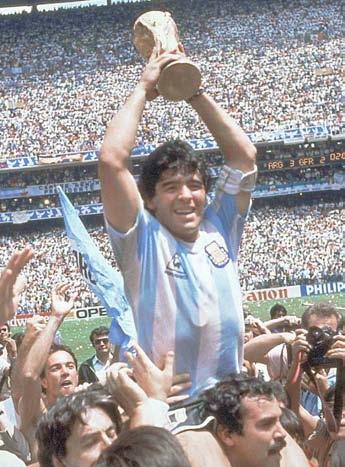
PParaguay
The only national team not beaten by the Argentinians in the two-legged tie of the 2022 World Cup qualifiers. At home, the latter were losing after Cristian Romero’s own goal, and Ni colas Gonzalez evened the score. In Asuncion, there were no goals, and Scaloni’s team failed to impress on the offensive. The clash with Brazil at the Maracana as part of the qu alifiers was interrupted by officers of the National Health Surveillance Agency and the police who wanted to arrest 4 players: Emiliano Martinez, Cristian Romero, Giovani Lo Celso and Emiliano Buendia, allegedly for viola ting the covid protocol. FIFA was sup posed to punish the Brazilians with
Łączy nas piłka
#
110
M L
a walkover but eventually waived it, and the match could not be played at another venue and time. Relations between the two federations have been strained since September 2021. According to the Argentinians, their biggest rival is avenging its defeat in the final of the last Copa America.
penalty kicks
In penalty shootouts, Argentina had an outstanding expert in the person of Sergio Goycochea who saved four shots at the 1990 World Cup. In the 2021 Copa America semifinal against Colombia, Emiliano Martinez showed his mettle by deflecting the ball after strikes from Davinson Sanchez, Yer ry Mina and Edwin Cardona. The club mate of Matty Cash and Jan Bedna rek from Aston Villa has nerves of ste el and reassures his colleagues in de fence. Argentina can’t complain about Martinez’s substitutes either – Fran
co Armani of River Plate, Geronimo Rulli of Villarreal, Agustin Marchesin of Celta Vigo or Juan Musso of Ata lanta are good professionals.
strike
Ahead of the start of the Copa Ame rica, there was a rumour of a footbal lers’ strike due to COVID-19. Brazil’s ace, Neymar, tried to persuade Argentina to support the idea of postponing the tour nament but the Albiceleste players did not continue the dialogue. “We are play ing for our compatriots,” announced Nicolas Otamendi. And they won gold.
Vanczak Vilmos
On 17 August 2005 in Budapest, 18-year-old Leo Messi made his de but for the first national team. After coming on in Lisandro Lopez’s place in the 64th minute, he carried out a great raid, was fouled by a Vilmos Vanczak, but received a red card for hitting him with an elbow moments later. Argen tina beat the Hungarians led by Lothar Matthäus 2–1. Leo scored his first goal for the national team on 1 March 2006 in a clash with Croatia in Basel, lost 2–3. Vanczak, who made 79 appearances for the national team, currently works in his home country at Puskas Academy.
Zanetti Javier
Nestor Pekerman did not take the le gend of Inter Milan to the 2006 World Cup in Germany, for which a wave of criticism fell on him. He preferred Lio nel Scaloni who only played the en tire 1/8 finals match against Mexico. Back then in Leipzig, in the 84th mi nute, young Leo Messi, who replaced Javier Saviola, entered the pitch. After extra time, the Albiceleste won 2–1.
Jaromir Kruk
FIFA WORLD CUP I QATAR 2022 111
@Laczy nas pilka
P S Z V ARGENTINA’S
Most appearances in World Cup finals 21 – Diego Maradona
20 –
19 –
Most matches as captain in World Cup finals 16 –
12 –
12 –
Most goals in World Cup finals 10 – Gabriel
8 – Diego Maradona 8 – Guilermo Stabile 6 – Mario
6 – Leo Messi
ELITE
(1982, 1986, 1990, 1994)
Javier Mascherano (2006, 2010, 2014, 2018)
Leo Messi (2006, 2010, 2014, 2018)
Diego Maradona
Leo Messi
Daniel Passarella
Batistuta
Kempes
THE WORLD CUP, THE MOST IMPORTANT TROPHY IN THE WORLD OF FOOTBALL
Handed over after the decisive match for the World Cup. Created from eighteen-carat gold, measuring just under thirty-seven centimetres and weighing over six kilograms - the FIFA World Cup. Solemnly presented continuously since 1974 and celebrated twelve times to date. The trophy has been most often won by Germany - in 1974, 1990 and 2014 - and will be defended at the World Cup by the French national team.
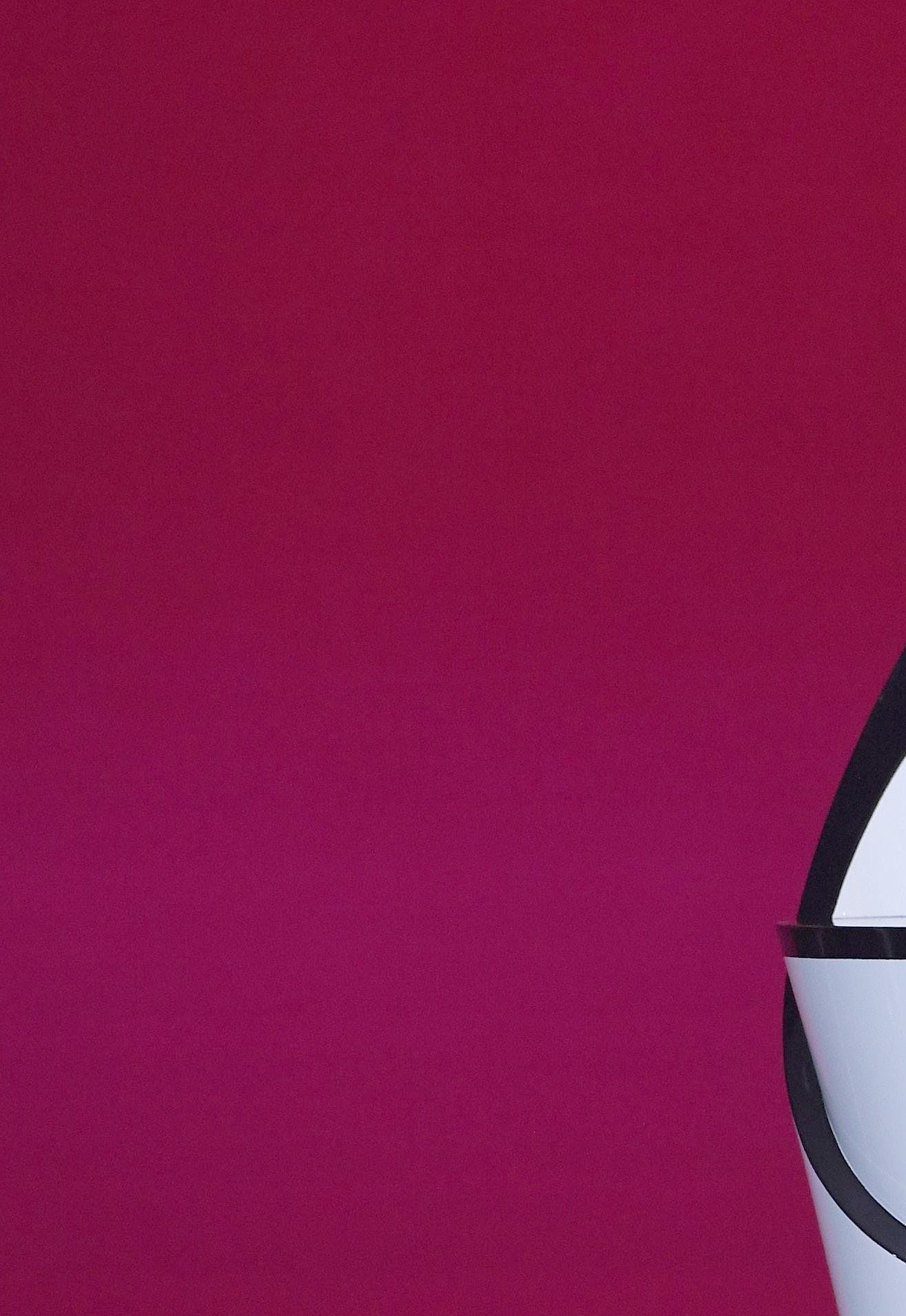
112 # Łączy nas piłka
The best team in the world had been awar ded the Golden Nike prize by the authori ties of the International Football Federation since 1930. After the Brazilian team won its third world championship at the 1970 World Cup in Mexico, the trophy remained perma nently in the hands of the „Canarinhos”, and FIFA deci ded that a new cup should be created to celebrate the winners of the world’s best team. FIFA received submis sions from fifty-seven countries, and the winner was the design by Italian sculptor Silvio Gazzaniga. The Italian ar tist presented his work as follows: „the lines extend from the base in spirals, as if carrying a globe. From the extra ordinary dynamic and contained body of the sculpture, the figures of the two athletes rise in a moment of vic tory”, said the talented sculptor.
The new World Cup trophy was first presented to the win ner at the 1974 World Cup in FRG, when the Federal Re public of Germany defeated the Netherlands. The FIFA World Cup was produced by the Italian company Stabili mento Artistico Bertoni. In 1994, a plaque was attached to the cup on which the names of the winning countries are engraved. However, they are not visible when the trophy stands upright. The plate includes the names of all the winners of the World Cup starting from 1974, that is from the date of presentation of the new trophy. After each World Cup competition, the year and the name of the winning coun try are engraved. For example, „1982 Italy” or „1998 France”.
So far, six countries have reached for the FIFA World Cup trophy in its current form. The German team lifted the trophy most frequently, namely three times - in 1974, 1990 and 2014. Argentina did it twice; they won in 1978 and 1986. Italy reached for the trophy twice - in 1982 and 2006. Brazil twice - in 1994 and 2002, Fran ce in 1998 and 2018 and Spain once in 2010. In contrast to the previous prize, a given country cannot come into ownership of the FIFA World Cup trophy. Ac cording to the FIFA regulations, the tournament winner receives a gold-plated replica, and not the real golden trophy.
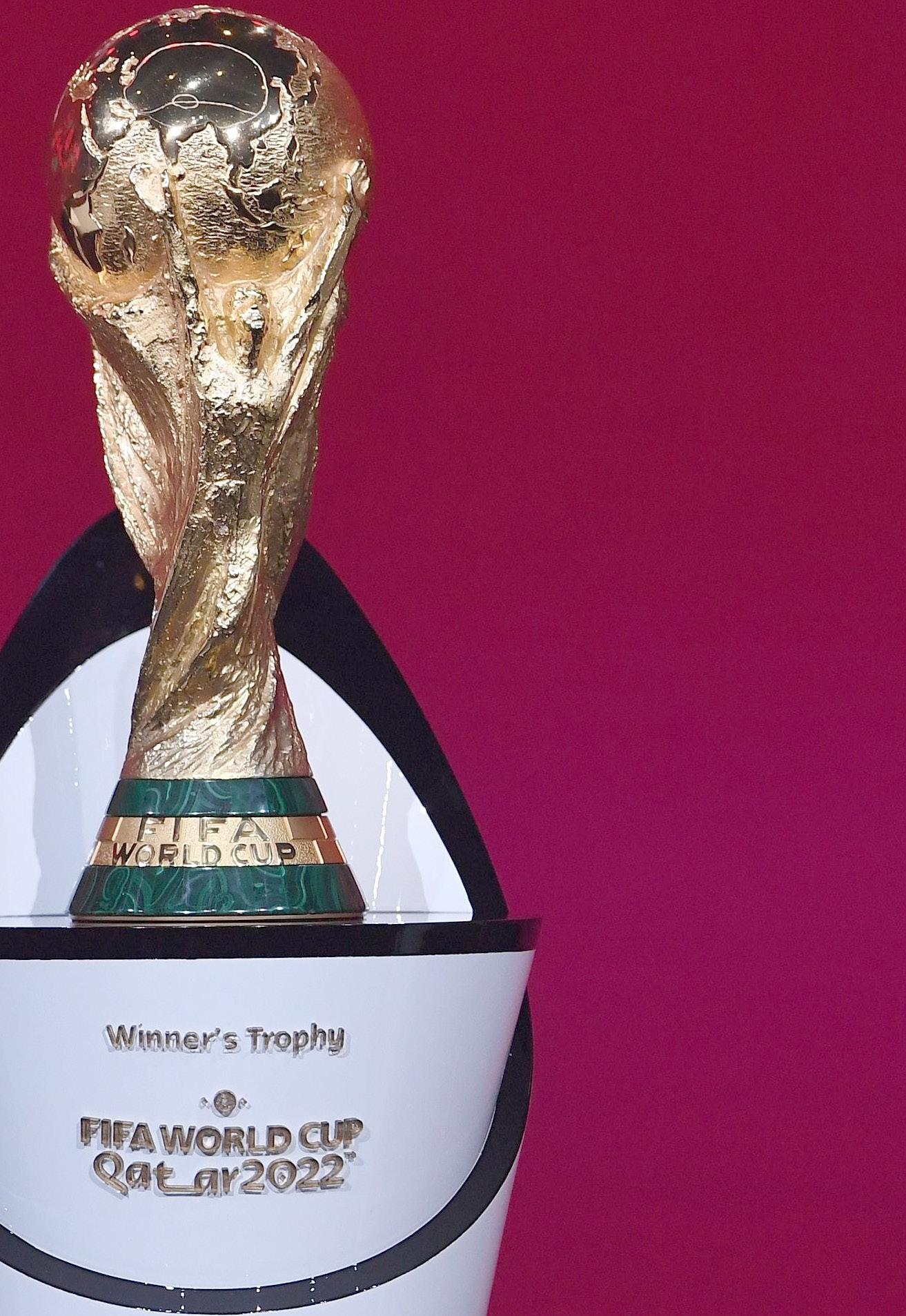
FIFA WORLD CUP I QATAR 2022 113
Jacek Janczewski
@Laczy nas pilka
LEAD POLAND TO VICTORY AT THE WORLD CUP!
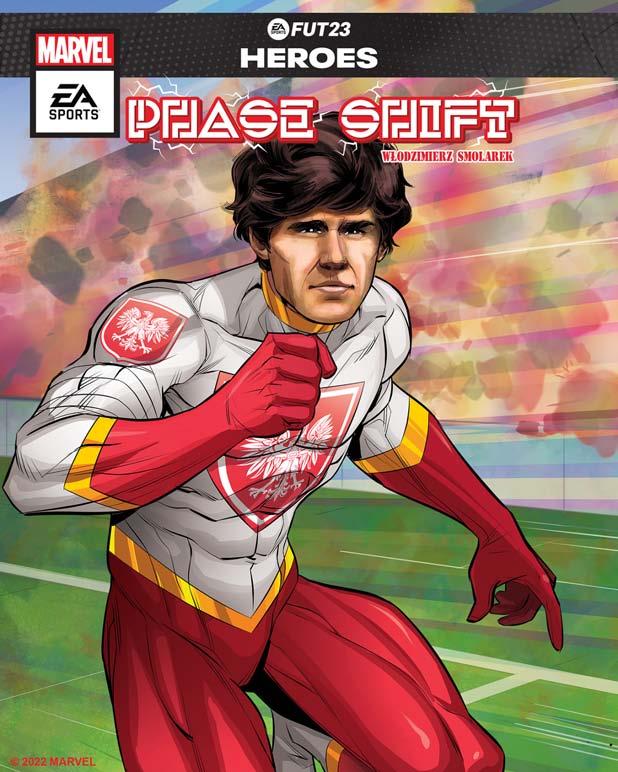
114
Łączy
#
nas piłka
The Polish national team is available in FIFA 23, and thanks to the latest update, which adds special content dedicated to the World Cup, every football fan can lead the White and Reds to victory on the virtual pitches in Qatar.
The special add-on introduced the „2022 FIFA World Cup” mode to the game, al lowing players to experience the World Cup atmosphere even before the real to urnament begins, and rewrite history on virtual turf once the World Cup in Qatar ends. Players can play matches against the AI as well as online matches against their friends or op ponents from all over the world. You can replay any played match with original squads and change its course, while the pre-match cut-scenes showing fans enjoying the game will let you experience the atmosphere of the World Cup. Most Polish fans will choose to control the Polish national team, captained by Robert Lewandowski, but if your favourite player is Erling Haaland, Zla tan Ibrahimović or Gianluigi Donnarumma, nothing is lost! In the tournament mode, you can change the finalists and introduce Norway, Sweden or Italy into the World Cup. You can find out whether these co untries would have been able to hold their own at the World Cup or personally lead them to the top!
Fans of the Ultimate Team mode can also rejoice, as the World Cup will enable them to strengthen their teams with special World Cup finalist cards with increased statistics, as well as special World Cup versions of „FUT Heroes” cards. These include such stars as Rudi Völler, Jean-Pierre Papin, Jay-Jay Okocha or Diego Forlán, and we are most pleased to announce that there is also a special card of Wło dzimierz Smolarek!
He was nicknamed „Brave Heart”, as he approached every match as if it were a battle to the death. Wło dzimierz Smolarek – the man without whom the
successes of the Polish national team and Widzew Łódź would not have been possible. As one of the greatest footballers on FUT Heroes cards, he appe ared on a card designed by Marvel artists.
The unique FUT Hero card commemorates the ca reer and talent of Włodzimierz Smolarek, a legend of the Polish national team. Smolarek made foot ball history as a 60-time player for the Polish natio nal team, the third place winner at the 1982 World Cup, participant at the World Cup four years later, a star and symbol of Widzew Łódź (with which he celebrated winning the Polish Cup and two Polish championship titles) and a player for Legia War szawa, as well as FC Utrecht, Feyenoord Rotter dam and Eintracht Frankfurt (with which he won the German Cup in 1988). He has long been seen as one of the best players in the history of Polish fo otball; on the pitch, he stood out through his speed, dynamic play as well as unyielding and courageous personality. His distinctive dance in the corner of the pitch during the match against the USSR is re membered by fans to this day. Włodzimierz Smola rek was awarded the FUT Hero title in FIFA 23 Ulti mate Team, and to celebrate the World Cup, he also received a FIFA World Cup version of his card, which is a special card with a higher grade, which will stand out even more this year, because it was designed as part of a collaboration between EA SPORTS and the famous Marvel Entertainment Studios. Under this collaboration, which unites football and comic book fans all over the world, Marvel Studios artists created unique illustrations for the cards which li ken the players – football icons to heroes known from films and comic books.
FIFA WORLD CUP I QATAR 2022
@Laczy nas pilka
115
NAJWAŻNIEJSZE 90 MINUT” [„THE MOST IMPORTANT 90 MINUTES OF MY LIFE”]
– A PERFECT READ FOR THE WORLD CUP
The FIFA World Cup always provides an excellent opportunity for reminiscing. The Polish National Team managed to beco me one of the top three World Cup teams twice, and played many memorable mat ches. One hundred football players with National Team appearances under their belt have unveiled their behind-the-scenes accounts of the most important matches of their careers. These stories were collected in a book by Jacek Jan czewski and Emil Kopański, titled „Moje najważniejsze 90 minut” [„The most important 90 minutes of my life”].
The book’s several hundred pages include the stories of Zbigniew Boniek, Włodzimierz Lubański, Roman Ko secki, Andrzej Iwan, Wojciech Kowalczyk, Marek Koź miński, Jerzy Dudek or Sebastian Mila, among others. Reading their stories, which are full of anecdotes and memories, provides an excellent opportunity to get into
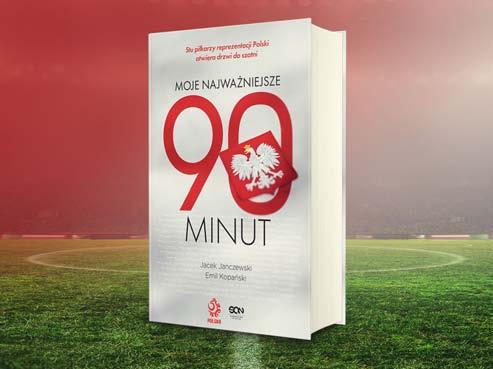
the national team spirit and feel the World Cup atmo sphere even more deeply. Matches of the Polish national team always arouse gre at emotions. Some of them have special meaning and are remembered for years. Also by those who played le ading roles in them. What did the 1974 World Cup look like from the perspective of Górski’s Eagles? Which match in the national team does Zbigniew Boniek have particular ly fond memories of? Why did Wojciech Kowalczyk get a goalkeeper’s jersey before the Olympic Games in Bar celona? What ideas did Jerzy Engel’s players have for ce lebrating their promotion to the World Cup?
The heroes of the greatest shows in the history of Polish football take the fans on a journey through the beautiful, glorious, but sometimes also painful moments. The locker room doors and tunnels leading to the pitch finally open and the country’s most prominent members of the na tional team say: „Come in”. Can anyone say no to that?
Łączy nas piłka
#
116
„MOJE
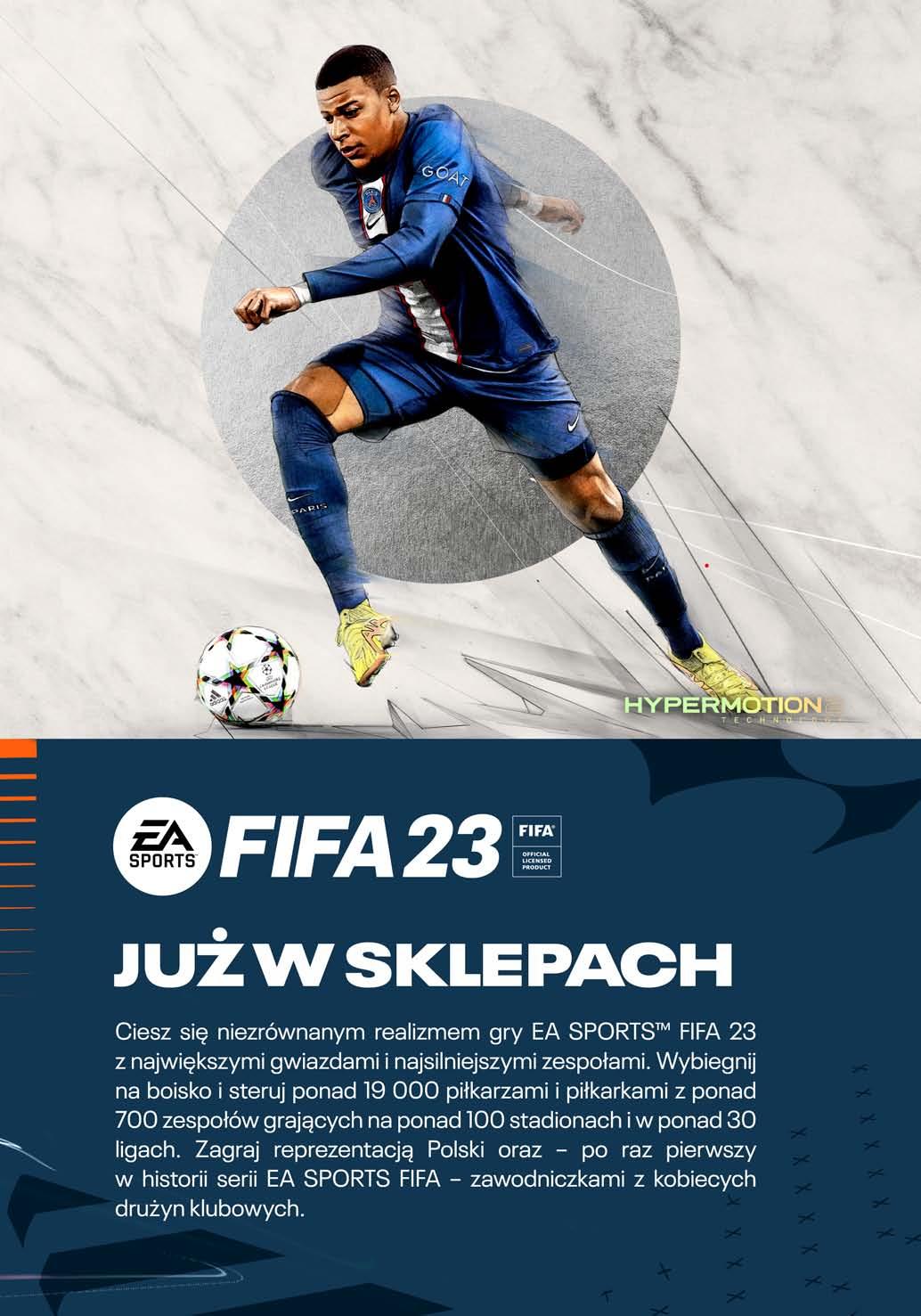
ALOJZY JARGUZ TO SZYMON MARCINIAK – A HISTORY OF POLISH REFEREES AT THE WORLD CUP
# Łączy nas piłka 118
FROM
The World Cup in Qatar will be the eighth World Cup to include Polish referees.
So far, we have had nine representatives who refereed World Cup matches. We have reasons to be proud, as they have represented us during key games on more than one occasion. We hope that in 2022, Szymon Marciniak’s team will also make history.
Controversies in Argentina
Monday, 3 July 1978. The 11th World Cup is on going in Argentina. The stadium clock at Mar del Plata is approaching 90 minutes. Brazil is tied 1-1 against Sweden. The „Canarinhos”, ho wever, are not eager to restart the play from a corner kick. This is met with a wave of bo oing from supporters, of whom there were more than 32 thousand in the stands. After a long celebration, the ball is finally played into the penalty area. Zico leaps into the air and... at that moment, the referee’s whistle is heard, at the same time as the ball enters the goal. The legendary „White Pelé” grabs his head in disbe lief, but referee Clive Thomas is unmoved – the match is over, the goal is invalid.
As the football world debated the controver sial decision of the Welsh referee, we in Poland were able to rejoice at the debut of our repre sentative as a referee at the most important football event in the world. Before that, our re ferees were invited at most to the Olympics. Alojzy Jarguz was a linesman (according to nomenclature used at the time) during that match and, at the age of 44, became the first Pole to appear in this role at the World Cup. Jarguz was one of the eighteen European re ferees selected by FIFA to oversee the tour nament. Before referee specialisation came along, they were all delegated to run both with a whistle and with a flag.
A little over a week after his debut, Jarguz –now as a head referee – oversaw the match between Peru and Iran, which decided advan
cement to the next stage of the tournament. During that match, the Pole awarded two pe nalty kicks, of which the first sparked contro versy as to whether the offence occurred in front of or within the penalty area.
As our national team, lead by Jacek Gmoch, continued to play in the tournament, the op portunities for Jarguz to referee more mat ches were considerably limited. The Pole en ded his participation in the World Cup as a li nesman during the match between Austria and West Germany.
Jarguz was one of the eighteen European referees selected by FIFA to oversee the tournament.
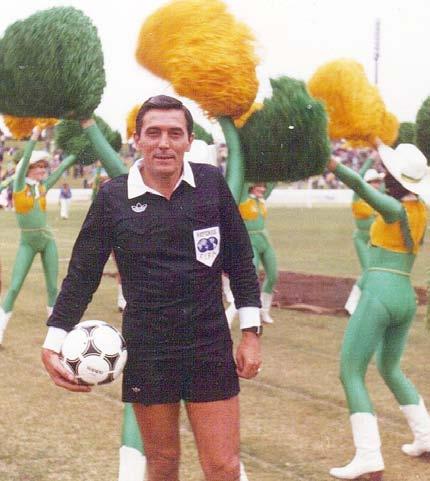
119
@Laczy nas pilka
FIFA WORLD CUP I QATAR 2022
A praise from Blatter
Having established his position international ly, Jarguz was also among the referees selec ted for the next World Cup. He began his Spa nish adventure in 1982 from a „high C”, as a li nesman during the opening match between Argentina and Belgium. 95 thousand suppor ters were present at the famous Camp Nou in Barcelona, and millions watched the match on their TVs. The match ended with a sensational 0-1 loss by the „Albicelestes”, with Diego Ma radona in the squad. Jarguz showed an excel lent attitude at the goal, not signalling for an offside during a dynamic situation. „After go ing down to the locker room, I went to the to ilet. At that moment, Sepp Blatter, who at the time was the general secretary of FIFA, ente red the locker room, together with his official, and immediately asked about me. Blatter con gratulated me and called my decision at the goal a masterpiece. This situation was later presented during training sessions as a model”, recalled Jarguz during an interview for Onet. This performance caused his ratings to sky rocket, so much so that he was appointed head referee for the match between Fran ce and Northern Ireland, which decided ad vancement to the semi-finals. During that match, he met yet another football legend on the turf – Michel Platini. Before that, however, he appeared on the pitch as a linesman during two more group stage matches: Belgium vs El Salvador and USSR vs Scotland.
A superlinesman during the final The next World Cup, which took place in 1986 in Mexico, saw the participation of the Polish National Team. There were, however, no Polish representatives among referees. Four years la ter, the situation was reversed and the only Po lish representative in Italy was a referee – Mi chał Listkiewicz.
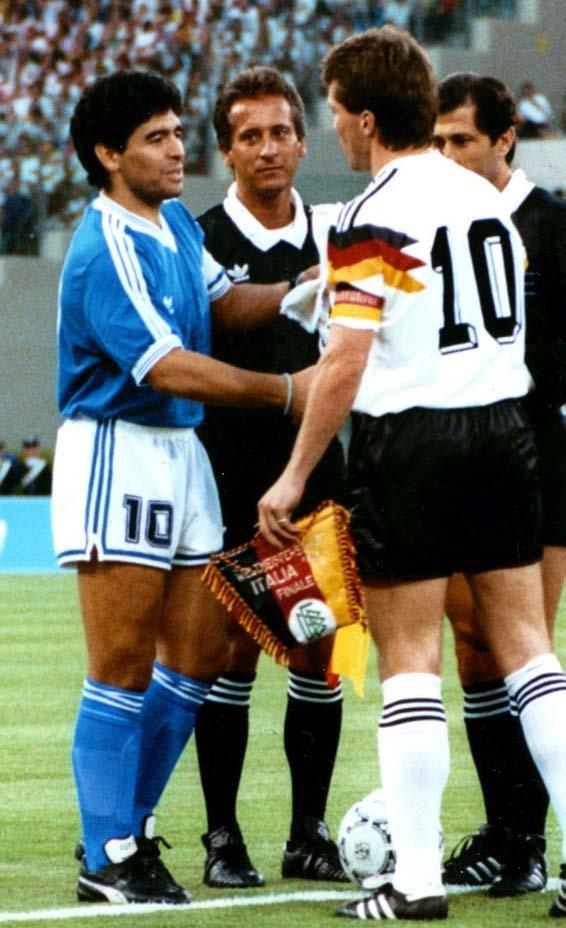
Mondiale ‘90 proved to be the tournament of a lifetime for the Polish referee. There was, ho wever, nothing to suggest that it would be so at the beginning. „I went to Italy hoping to over see two, three matches as a head referee. I ne ver expected anything more. I knew my place in the line. I opened the tournament as a line
sman. Second fixture? Listkiewicz as a line sman. Next fixture, I’m still a linesman. ‘Kind of weak,’ I thought”, recalls „Listek” in his book. It turned out, however, that FIFA knew exactly what role would Listkiewicz be the most use ful in on the pitch. The group stage just paved the way. Ultimately, our referee achieved so mething unprecedented: he was appointed for
# Łączy
nas piłka 120
With 11 World Cup matches under his belt, Michał Listkiewicz is so far the undisputed record-holder among Polish referees in this regard.
a quarter-final match, a semi-final match and the final match! In total, he was on the pitch 8 times during the championship.
Following in the footsteps of Alojzy Jarguz, Listkiewicz also showed great intuition as a li nesman, leading to a praise from Sepp Blat ter. During the semi-final between Argentina and Italy, he noticed a slight offside, stopping
the host team’s play which could have lead to a goal. TV cameras proved him right, which may have largely determined his inclusion as a linesman for the final match.
A short American Dream
The 1994 World Cup saw the introduction of referee specialisation. Listkiewicz went to the tournament knowing that he would be placed in the role of an assistant referee. This time, ho wever, luck was not on our referee’s side. FIFA not only divided referees by function, but also created permanent teams. Our countryman formed a team with two referees from Brazil and with Kurt Röthlisberger from Switzerland. During the group stage, they refereed toge ther the match between Mexico and Ireland, and on the very next day (!) – the match be tween Belgium and the Netherlands. A week later, this time in Chicago, they once more en countered the „Red Devils” during the round of 16. Unfortunately, Röthlisberger’s error, who failed to notice a penalty kick for the Belgians (who ultimately lost 2-3) meant that partici pation in the tournament was over for the en tire referee team.
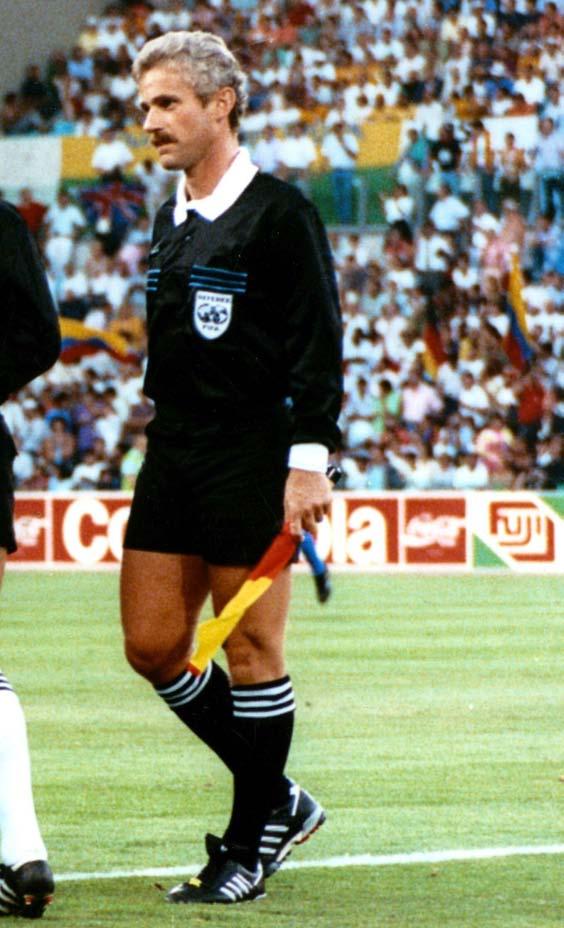
With 11 World Cup matches under his belt, Mi chał Listkiewicz is so far the undisputed re cord-holder among Polish referees in this regard.
A French duet
The 1998 World Cup in France was the first World Cup to include two Polish referees. The first nomination to the tournament was awar ded to Jacek Pocięgiel, who was included as an assistant referee. He was later joined by Ry szard Wójcik as a head referee. „I got in from the waiting list. I was the first referee nomina ted to the tournament to not make the parti cipants’ list. However, my friend Anders Frisk from Switzerland had a problem with his sho ulder and had to undergo surgery, so I jumped into his place”, explained Wójcik during an in terview for „Przegląd Sportowy”.
This time, the Poles played no major part. To gether, they refereed only the match betwe en the Netherlands and South Korea; Pocię giel also acted as an assistant referee during two other group stage matches.
FIFA WORLD CUP I QATAR 2022 121
@Laczy nas pilka
World Cup
Argentina, 1978
POLES AT THE WORLD CUP
Name of the referee Age during the World Cup
Number of matches Head referee Assistant referee VAR
Alojzy Jarguz 44 1 2
Spain, 1982 48 1 3 X Italy, 1990
Michał Listkiewicz 37 8 X USA, 1994 41 3 X France, 1998 Ryszard Wójcik 42 1 X Jacek Pocięgiel 41 3 X South Korea and Japan, 2002 Maciej Wierzbowski 31 4 X Russia, 2018
Szymon Marciniak 37 2 1 Tomasz Listkiewicz 40 2 Paweł Sokolnicki 38 2 Paweł Gil 42 16
Collina and a semi-final match
At the tournament in South Korea and Ja pan, Polish referees were represented by Ma ciej Wierzbowski. He was selected to the eli te group of thirty-six assistant referees as the youngest of all European referees! De spite being only 31, he performed admirably on the pitches in Asia.
His excellent attitude during the group stage matches led to him becoming the first Polish referee in the knockout stage in 12 years. In the round of 16, Wierzbowski assisted the le gendary Pierluigi Collina during the emotional match between Japan and Turkey, which en ded with a score of 0-1. As he admitted during an interview before the tournament, he wo uld have considered a nomination for a round of 16 match a success; however, reality pro ved even kinder.
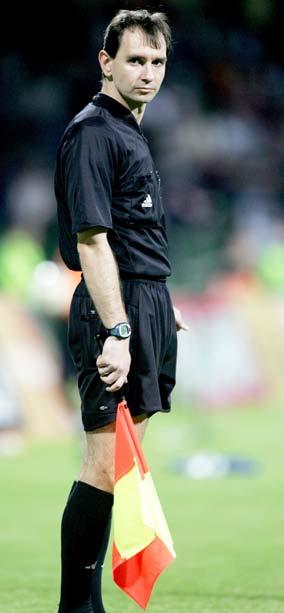
In the round of 16, Wierzbowski assisted the legendary Pierluigi Collina during the emotional match between Japan and Turkey, which ended with a score of 0-1.
This is because he encountered the Turkish team once more, this time during a semi-final against Brazil. In that match, he assisted the experienced Danish referee Kim Milton Nie lsen. More than 60 thousand supporters at the stadium in Saitama, Japan, watched the „Canarinhos” win thanks to the goal scored by Ronaldo Luís Nazário de Lima.
Łączy nas piłka
#
122
X
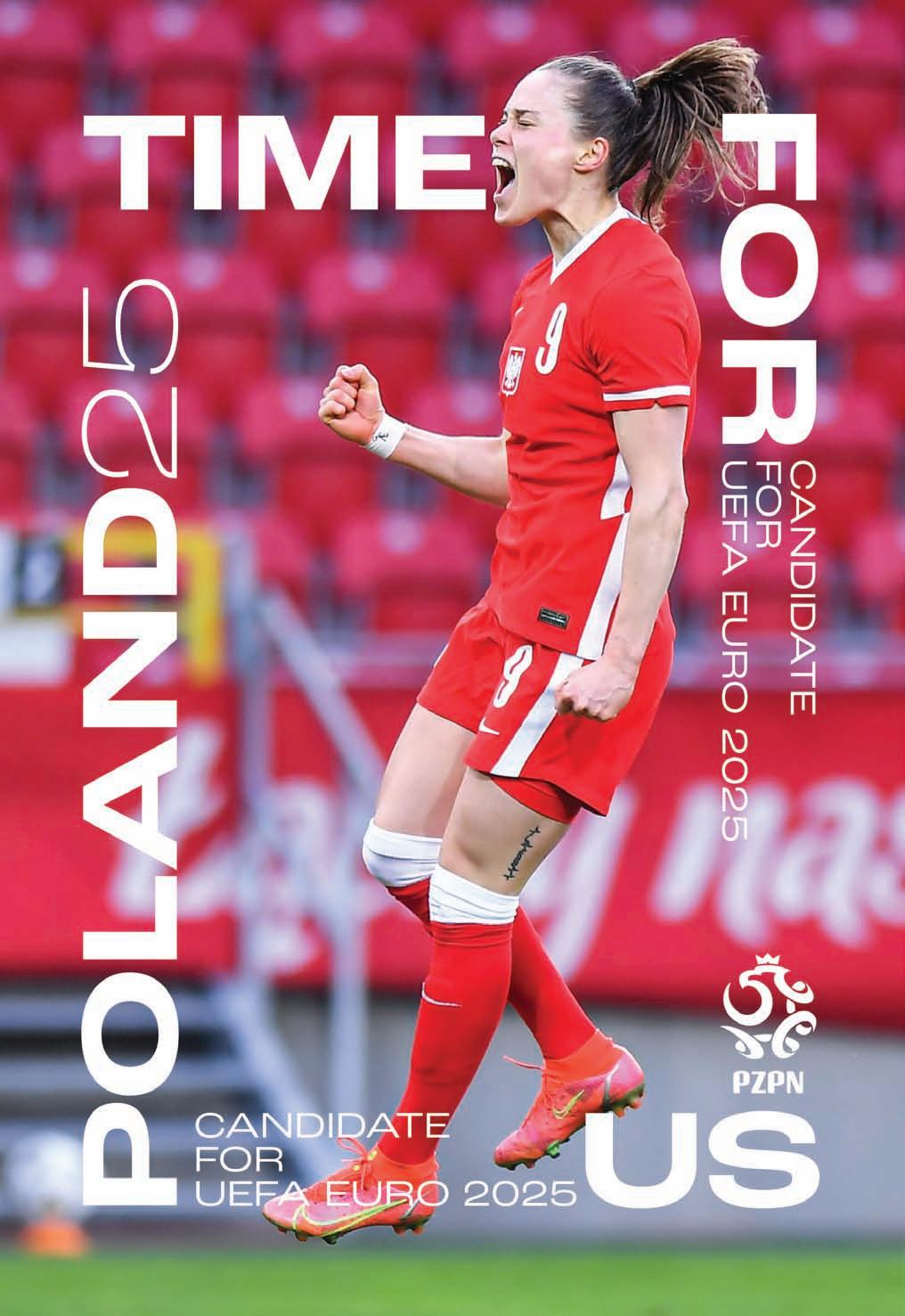
16 years of referee drought
We had to wait until 2018 for more Polish referees to appear at the World Cup. That year, Szymon Marciniak went to Russia, together with his assistants Paweł So kolnicki and Tomasz Listkiewicz. Our team had the opportunity to referee two group stage matches featuring later champions and runners-up: Argentina vs Iceland and Germany vs Sweden. A situation from the 12th minute of the latter match was widely commented on, when Marcus Berg fell over after an intervention by Jérôme Boateng, but the referee decided not to award a pe nalty kick to Sweden.
The last World Cup was the first to introduce video assistant referees; Paweł Gil was one of thirteen such experts. The Pole performed his
duties as an AVAR (Assistant Video Assistant Referee) admirably and was entrusted with this role for a record 16 matches! Szymon Marciniak also sat at the Moscow vi deo review centre, where he acted as a VAR during the match between Uruguay and Saudi Arabia. He was also appointed three times as an AVAR3, the fourth video assistant referee, so-called „support VAR”.
„Kwiatek” makes his debut
This year’s World Cup will be the second to in clude four Polish referees. In addition to our top pitch team with prior experience from Russia, led by Szymon Marciniak, the group of 129 invi ted referees also includes Tomasz Kwiatkow ski as a video assistant referee.
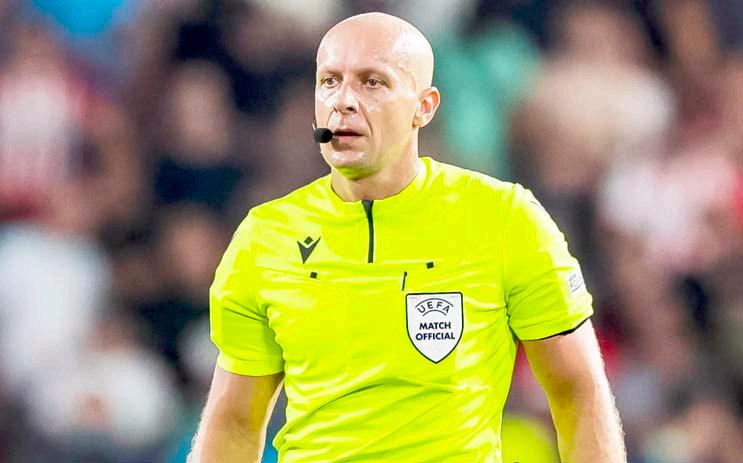 Marcin Polański
Marcin Polański
We had to wait until 2018 for more Polish referees to appear at the World Cup.
That year, Szymon Marciniak went to Russia, together with his assistants Paweł Sokolnicki and Tomasz Listkiewicz.
WOMEN’S WORLD CUP
In 2003, during the World Cup in the USA, Katarzyna Wierzbowska acted as an assistant referee during three matches, including the final match between Germany and Sweden.
In 2019, during the World Cup in France, Paweł Gil acted as a VAR.
124
#
Łączy nas piłka
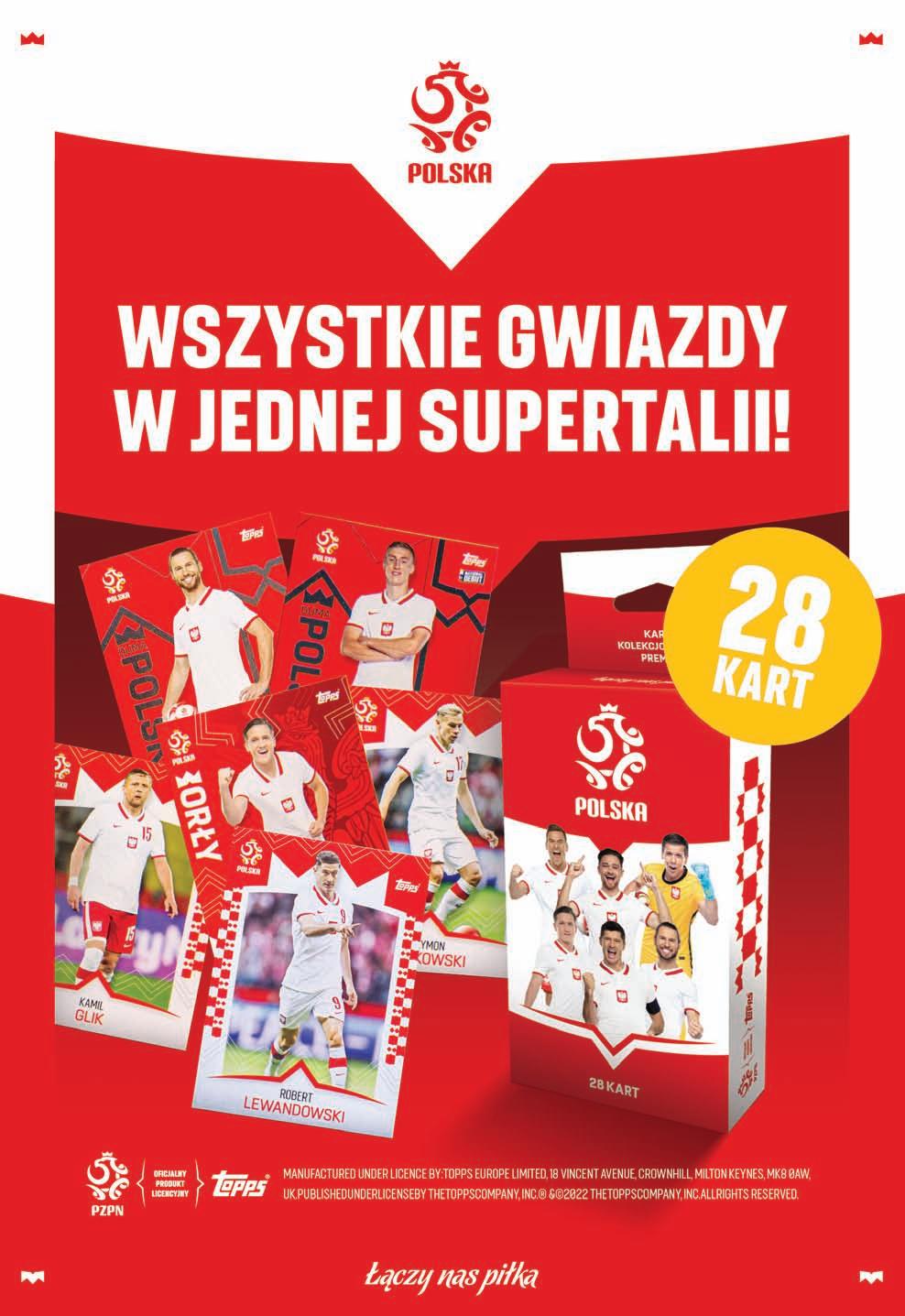
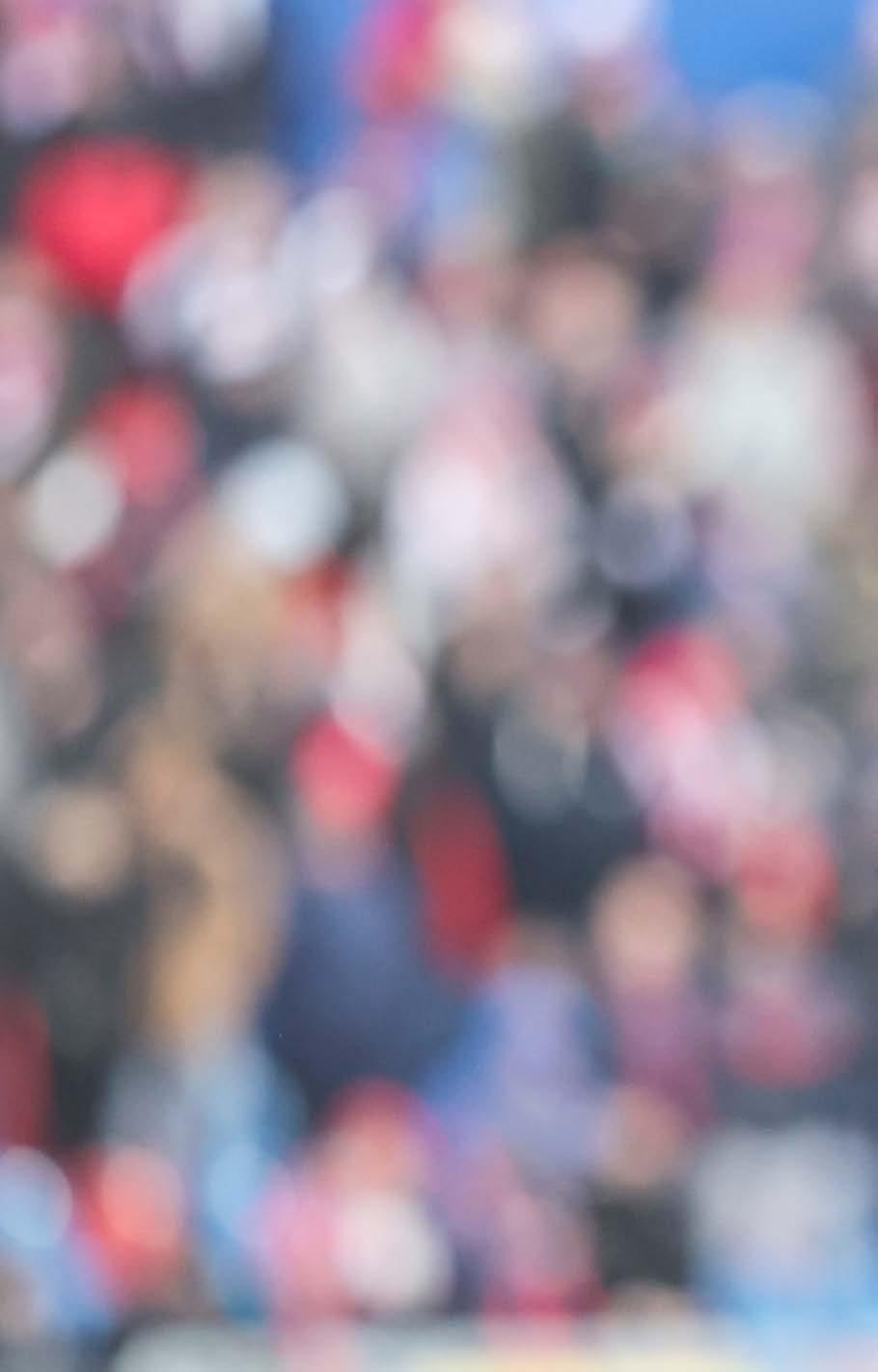
CHAMPIONSHIPS 126 Łączy nas piłka #
DIRECTION: QATAR – SZYMON MARCINIAK READY FOR THE
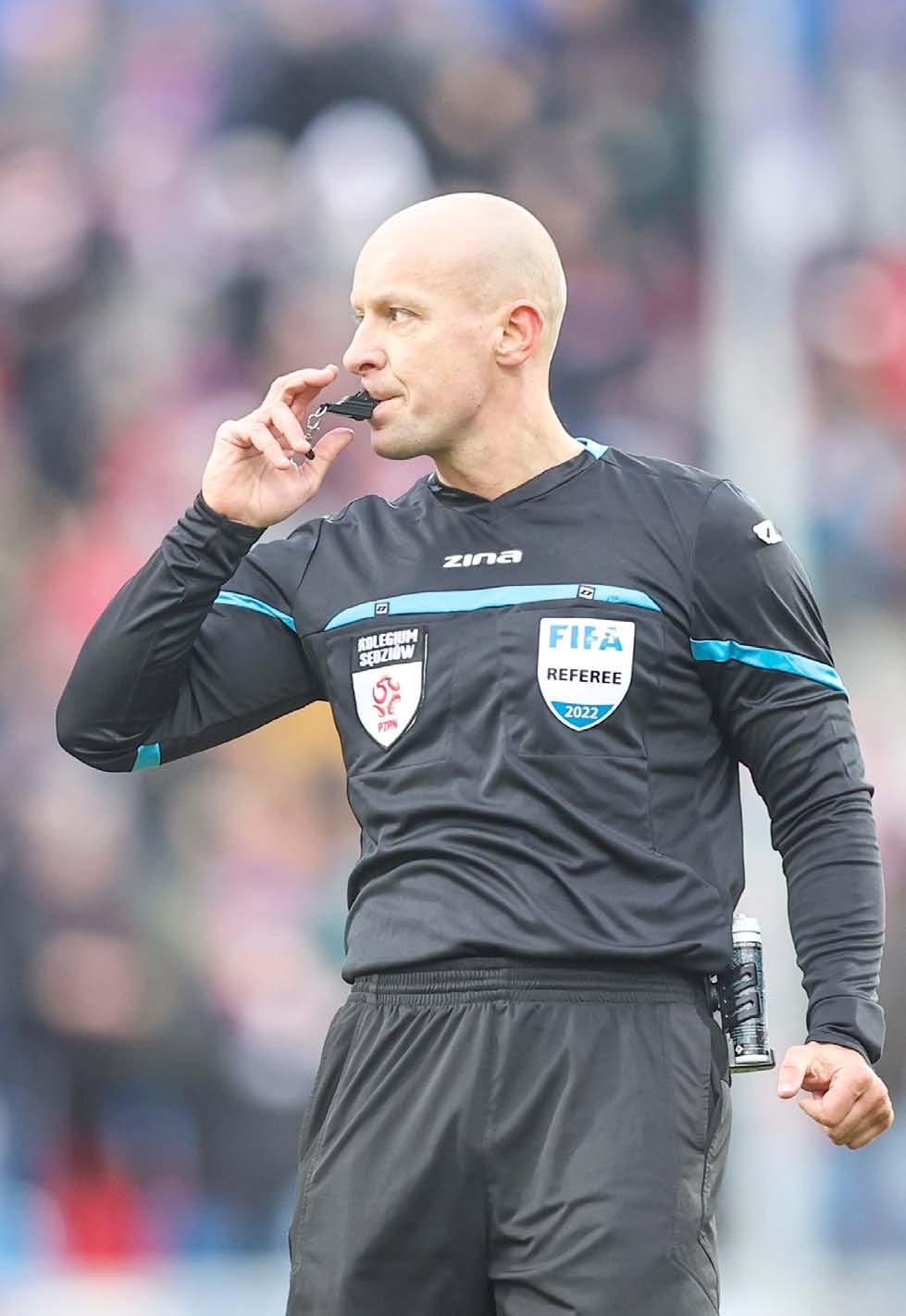
FIFA WORLD CUP I QATAR 2022 127
@Laczy nas pilka
After an excellent 2021/2022 season and the first half of the current one, Szymon Marciniak is going to the World Cup in Qatar as one of the best referees. He tells us about his preparations for the World Championships. He reveals how he works every day and what expectations he has of himself and the whole team.
Szymon Marciniak and his team took part in the FIFA training camp in Madrid in June. It was one of the ele ments preparing the refe rees for the World Cup in Qatar, which will take pla ce in November and December. Together with the Polish team, the top refereeing teams from around the world were there. The seven days in June were very intensive and planned in de tail for the participants. „In Spain, we had a lot of theoretical training and quite a few clips of familiar topics. At camps organised by FIFA or UEFA, theory is always analysed in five the matic blocks: handball assessment, offside, tactical offences, SPA/DOGSO fouls and inci dents in the penalty area”, says Marciniak. The work on the theoretical issues always invo lves a constructive discussion and exchange of experience among all the referees.
Joint training with... Real’s juniors
During the preparation camp, special remarks were made about practical activities. „Pierluigi Collina and Massimo Busacci’s wheelhouse is always workshops with footballers. At the Ma drid training camp, we worked together with Real Madrid academy players. The teams were given scenarios of how they should behave on the pitch. For example, a command was given that they were to play variant 1 and an incident occurred on the pitch. Then the referee, toge ther with the team, had to make a pitch deci sion. We had VAR and AVAR referees availa
ble. All this was done to replicate match con ditions. During this type of activity, each re fereeing team had sessions of several minu tes on the pitch. After this time, the referees changed and the game continued. The practi cal workshops lasted several hours each day”, reports the Polish referee.
The conclusion of such activities was clear. Since VAR is available, the final decision must be correct. „If you can re-watch a situation where there is a potential mistake, then just do it. You can of course stay with your inter pretation of the event, but the verdict has to be right. The referees’ judgements become se condary. The match has to be run well and the decision has to be correct”, explains Marciniak.
Important biological regeneration
The best of the best in the world have arrived in Madrid. Their task will be to officiate mat ches at this year’s World Cup. FIFA officials attach great importance to the physiogno my of the referees. In-depth body fat analy sis, strength measurements, fitness and agi lity checks. These elements determine good shape. Elite referees must be in sensational condition. „In this group, everyone is very well prepared for the championships. Due to the fact that the season is in full swing, we were not pushed during the camp. Between on-field activities and training sessions, we often had treatments from physiotherapists. The phy sical preparation specialists reminded us at every step how important the biological re generation is”, recalls the referee from Płock.

#
Łączy nas piłka
128
Preparations for the World Cup do not only involve training camps organised by FIFA. It is a long-term period interspersed with intensive training, matches and a very important aspect, that is, rest and active biological regeneration.
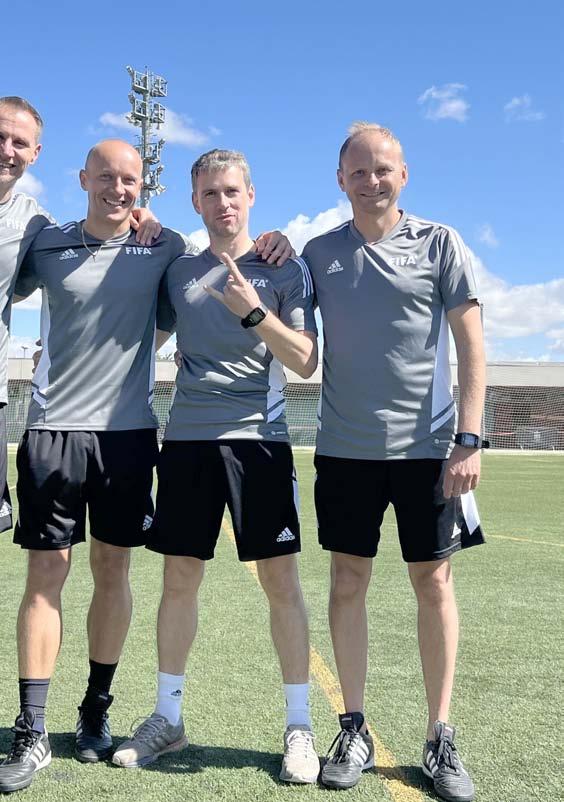
Tournament for referees
The World Cup is being played on a nonstandard date. FIFA referees will fly to Qa tar several days before the tournament starts. „We will already fly to Doha on 9 November. There will be a small prepara tion period before the World Cup itself. The idea is to acclimatise and be fully ready for the first matches. As part of the pre paration for the referees, FIFA will orga nise a special tournament for several te ams from Qatar’s premier league. It was similar before the World Cup in Russia. The
3rd/4th league teams played there. They were able to win a large sum of money. This was supposed to make them more competitive. Each of us refereed one half of a match at that time. There were a lot of refereeing teams. Now it will be similar”, says Marciniak. Each referee has a dele gated instructor from FIFA. They watch the league and international matches of their referees. Elements for improve ment are corrected on an ongoing basis.
Know your body’s needs
Preparations for the World Cup do not only involve training camps organised by FIFA. It is a long-term period intersper sed with intensive training, matches and a very important aspect, that is, rest and active biological regeneration. „The co aches who have been guiding us thro ughout the preparation period have chan ged their tactics. They put a very strong emphasis on proper regeneration. For example, I used to always do a jog after a match. Today, the specialists recom mend me to cycle or swim. I am now in my 40s and I realise that my body needs a bit more time to regenerate. In my we ekly cycle, high-intensity training and the match itself are the most important. The rest is filled with elements that are sup posed to make me comfortable in prepa ration for the match”, says the referee.
Marciniak’s training plan
Szymon Marciniak’s week of activity is planned in detail. Two days out of the weekend are out of training due to le ague matches. The day after the match, he usually starts by cycling and then - as a hobby - he goes to Muay Thai training. It’s a break from everyday life and a way to clear his head.
Usually on Tuesdays, Marciniak is assi sted by a physiotherapist. Specialised regenerative treatments and massages are frequent practices. At home, he regu larly takes cold baths. Wednesday is al ready high-intensity training: sprints and
FIFA WORLD CUP I QATAR 2022 129
@Laczy nas pilka
modified running training. After such an intense day, it’s time for gentle strength training. „Sometimes I do a crossfit wor kout, then a light one in the gym. I work a lot on TRX bands. I’ve moved away from strong weight training. Two days before a match I do RSA, which is classic sprint training. On the eve of the meeting I do just a little stimulating activity. Usually a simple run plus different variations of sprints”, describes Marciniak. The whole scheme only works repetitively when our referee does not have a match in the week. If an appointment comes up for a Champions League match or other games, the plan has to be modified.
Three-way deal
Two physical preparation coaches are hel ping Marciniak to stay in shape. The first is well known in the community - Grzegorz
Krzosek. The second is Professor Werner Helsen from Belgium, who is an expert on the physical preparation of UEFA re ferees. „The gentlemen always give me two plans, which I sometimes use alter nately. I am more comfortable with cer tain elements of training from Grzegorz and others from Werner. I put everything together. They both have access to my readings and sometimes call to add so mething or let something go. Details play a very big role. Adequate oxygenation of the muscles, „burning out” of the body is extremely important and this has to be kept in mind. Both gentlemen are specia lists of the highest order”, says Marciniak. The referee from Płock also pays atten tion to diet. He does not limit himself to rigid calorie counting. He eats everything, but in moderation. He does not have any specialised diet, but eats healthy.
Łączy nas piłka
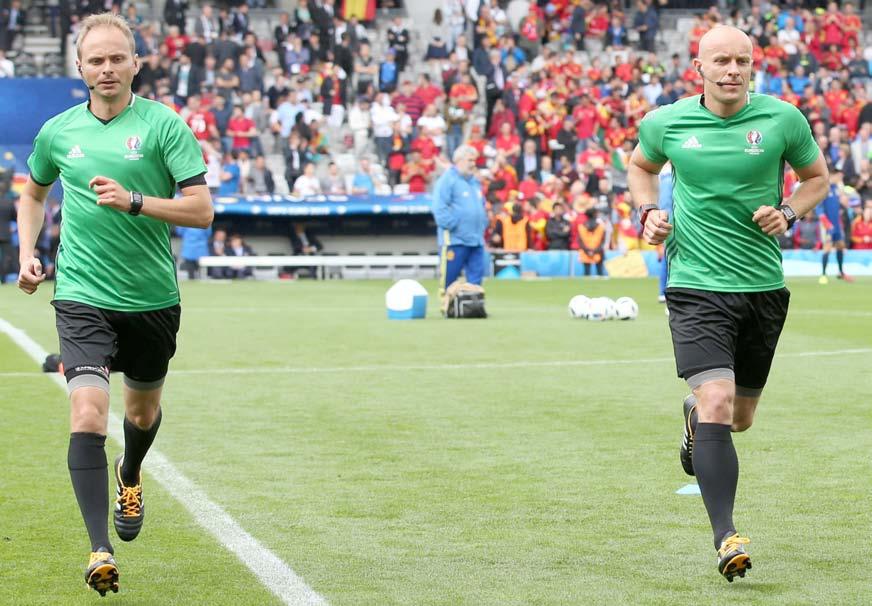
#
130
Marciniak is one of the few referees sent to Qatar with experience gained at the World Cup in Russia.
The power of calm in the team
When asked if he and his team - Paweł Sokol nicki and Tomasz Listkiewicz - are preparing specifically for the upcoming championship, Marciniak replied that they are not. „We are such an experienced team that we do not bu ild up false hopes. Before the last champion ship we went to Arłamów to do our prepara tion camp. It didn’t bring any stunning results, so this time we are betting on our experien ce. Firstly, there is not much time for that. Se condly, we know what we are fighting for. We
know our value, which we have proven more than once in important matches in Europe. Our approach to the next World Cup is also completely different from the first time. Now we know what we are up against and what to expect. We absolutely do not stress and we are going to enjoy every match”, he points out. The referees have their expectations. They look forward to officiating the im portant matches of the World Cup. They are also aware that an international tour nament has its own rules. A lot depends on which countries the teams from will be playing for the medals.
Among the experienced Marciniak is one of the few referees sent to Qatar with experience gained at the World Cup in Russia. Among referees from Europe, only the following can boast similar success: Mateu Lahoz from Spain and Clement Turpin from France. Among the particularly good referees, Marciniak mentions Alirez Faghani from Iran and Bakary Gassam from Gambia. The non-European referees mentioned have had successful performances at the World Cup in Russia. „Both have held a very high le vel for many years. They are constantly deve loping and are officiating important matches in prestigious competitions. On top of that, they are very nice colleagues. They are defi nitely worth watching”, Marciniak concludes. Both football fans and referees will be wat ching with bated breath every match ho sted by the team from Poland. The Qatar World Cup, like any great football event, will uncover many football talents. We can be sure that the championship will also reveal great talents among the referees.
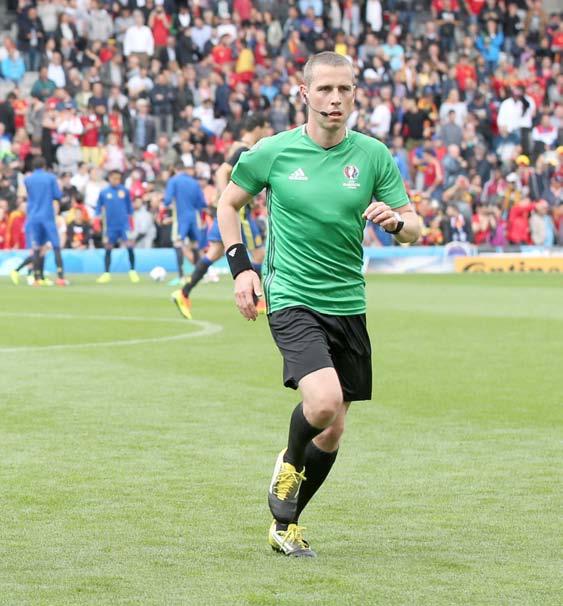 Tomasz Szpunar
Tomasz Szpunar
FIFA WORLD CUP I QATAR 2022 131
@Laczy nas pilka
We are such an experienced team that we do not build up false hopes.
“

SENSATION ON A GLOBAL SCALE! MUST SEE!
PZPN introduces us to the incredible history of Poland at the World Cup using the latest technologies. It is the most technologically advanced exhibition dealing with football history in the world. You can visit the “Poland the the World Cup” exhibition at the Norblin Factory in Warsaw until the end of the year.
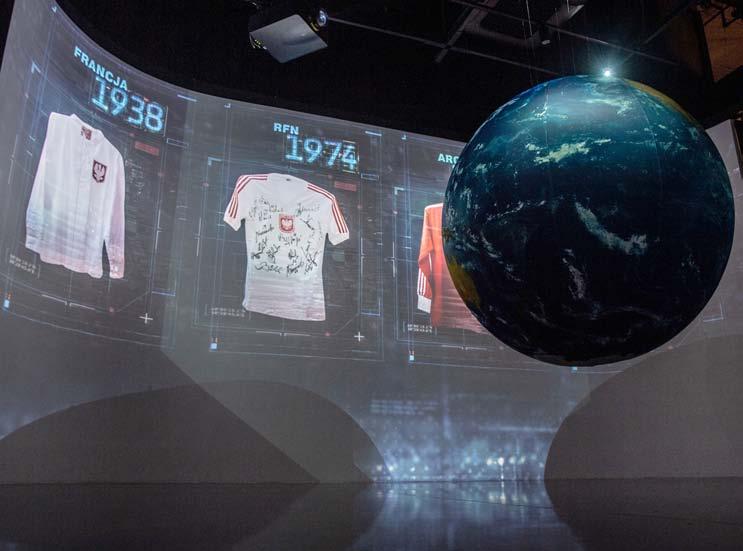
Memories related to Po land’s beloved sport will come to life thanks to incredible visual effects achieved through the use of latest technolo gies as well as coopera tion between Art of Football Sp. z o.o. and the PZPN Library of Polish Football, which provi ded all materials. The exhibition is organised by the Polish Football Association.
To play in the World Cup is the dream of any footballer. And to bring a trophy from the to urnament is a pass to immortality. The Whi te and Reds made the top three twice: silver medals (then awarded for third place) were won by the „Eagles” led by Kazimierz Górski in 1974 and by the team led by Antoni Piech niczek in 1982. It is not only the players who score spectacular goals, but the entire teams that go down in legend, as only team play ma kes success possible.
@Laczy nas pilka
FIFA WORLD CUP I QATAR 2022 133
Thanks to the latest technology, when you visit the „Poland at the World Cup” exhibi tion, you will have the opportunity to waddle in the rain with Ernest Wilimowski during the legendary match against Brazil, defend pe nalty kicks together with Jan Tomaszewski and shoot spectacular goals just like Grze gorz Lato at the tournament in West Germa ny. You will be able to dance the Argentinian tango together with the squad led by Jacek Gmoch or get tired under the Spanish and Me xican heat with the team led by Antoni Piech niczek. But being a fan also means being able to accept defeat, which is a part and parcel of any sport. For this reason, the exhibit also in cludes a section recalling Poland’s three ap pearances in the World Cup in the 21st cen tury. The opening match, the all-or-nothing match and the match for honour... We belie ve that things will be different in Qatar. We will at last break the series of disastrous per
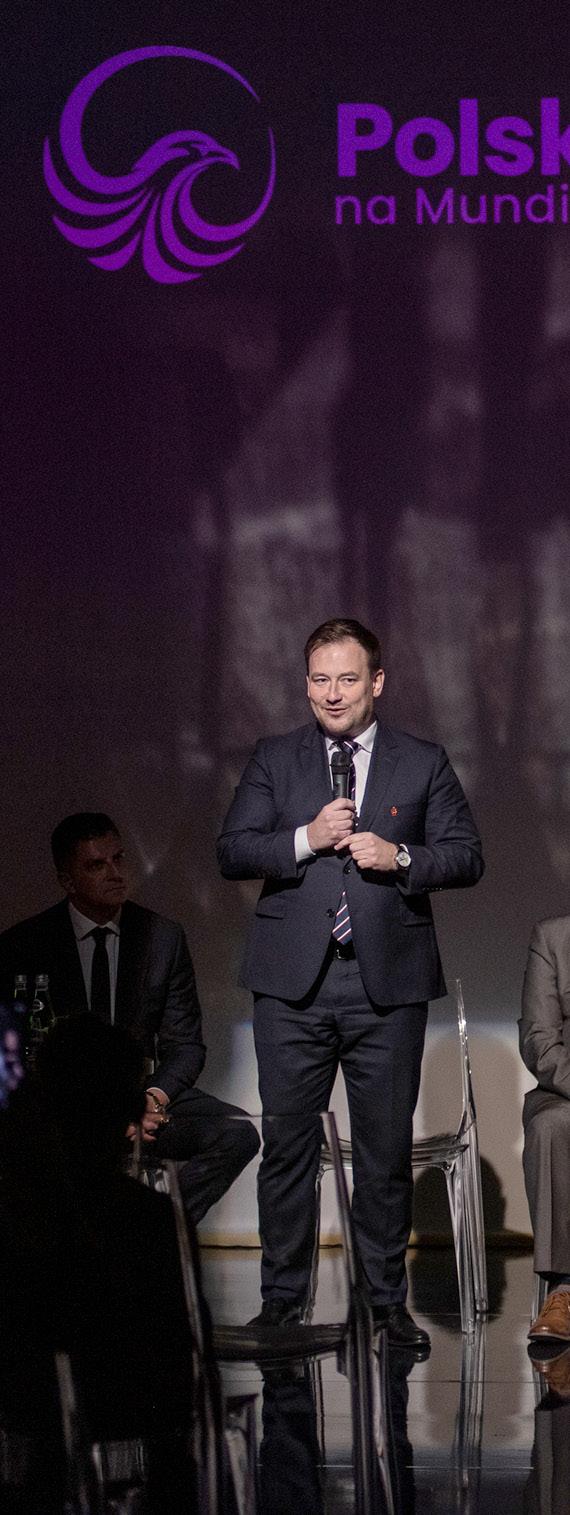
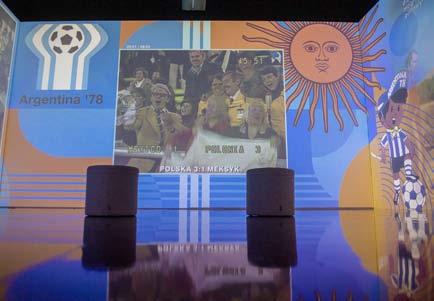
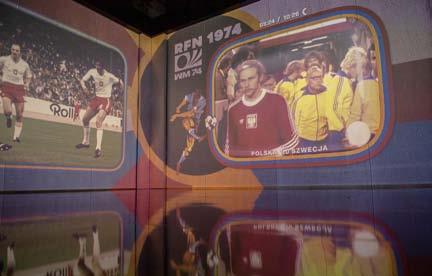
# Łączy
134
nas piłka
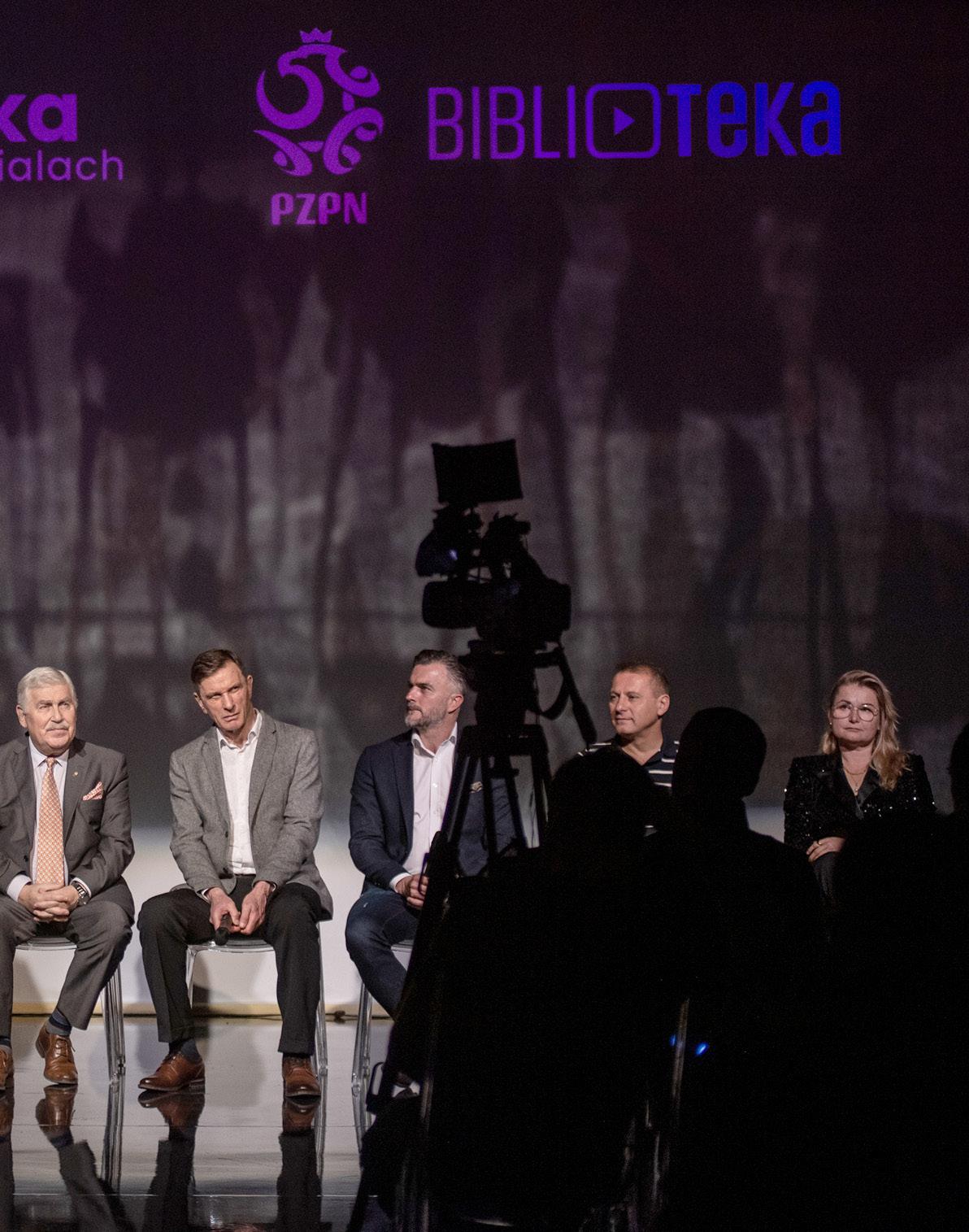
FIFA WORLD CUP I QATAR 2022 135
@Laczy nas pilka
THE „POLAND AT THE WORLD CUP” EXHIBITION
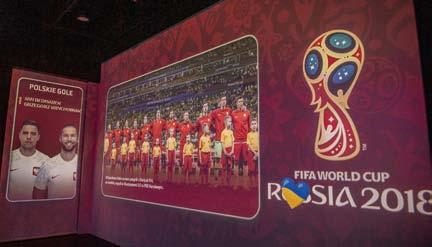
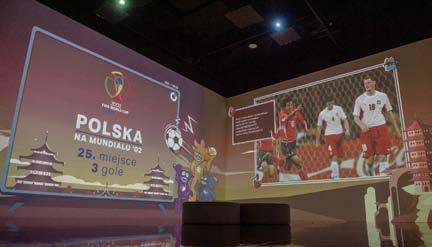
Producers: Piotr Sikora, Marcin Śmigielski.
Directed by: Magdalena Mikołajczyk.
Content provision and substantive support: Polish Football Association and the PZPN Library of Polish Football (Paweł Drażba, Rafał Byrski, Dominik Rybarczyk, Krzysztof Jaśniok, Piotr Kuczkowski, Adrian Woźniak).
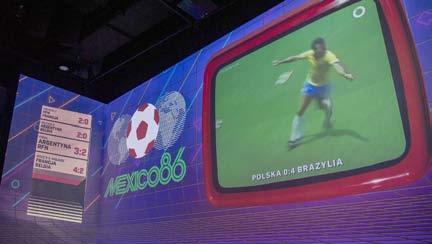
Produced by: Art Box Experience, Japko, Platige Image.
Exhibition concept: Art of Football.
More information: www.polskanamundialach.pl.
formances, and the team led by head coach Czesław Michniewicz has shown, for instan ce during the play-off against Sweden, that these hopes are not baseless. Both the glo rious and the less glorious moments of Po lish football are the subject of this exhibition. It is a one-of-a-kind event. „This exhibition is truly unique! Every fan sho uld visit it and go on a sentimental and emotio nal journey through appearances of the Po lish national team in the final tournaments of the World Cup. The Qatar World Cup provides an excellent opportunity to do so. Both for the older and the younger fans. Technology-wise, we are entering the 22nd century. This is the first such project in the world”, stresses Łu kasz Wachowski, Secretary General of PZPN. This exhibition would not have been possible without the PZPN Library of Polish Football, which is a veritable treasure trove of know ledge. It already contains over 1,500 mat ches, including the most important games played by the national team. It is the Library of Polish Football which provided all materials on display at the exhibition. The history of Po lish football recorded on film tape, in TV broad casts, in photos, in press articles, on tickets or in match programmes. But also in memoirs of players, coaches, officials, journalists and sup porters. The „Poland at the World Cup” exhi bition is meant to promote the PZPN Library of Polish Football. This colourful and emotional exhibition, directed by Magdalena Mikołajczyk (with Piotr Sikora and Marcin Śmigielski acting as the producers), is an opportunity to once more experience Po land’s eight World Cup appearances, discover their meaning (not only in terms of sport!) and feel proud of the players who wore the eagle on their chests. And to keep the excitement with you for longer, we encourage you to take a selfie with the Polish national football team. The exhibition is organised by the Polish Foot ball Association, and the main media patrons are the PZPN Library of Polish Football, Łączy NasPiłka.pl and TVP Sport. Media patronage is also provided by Radio Eska, Onet, „Przegląd Sportowy” and „Super Express”.
Łączy nas piłka
#
136
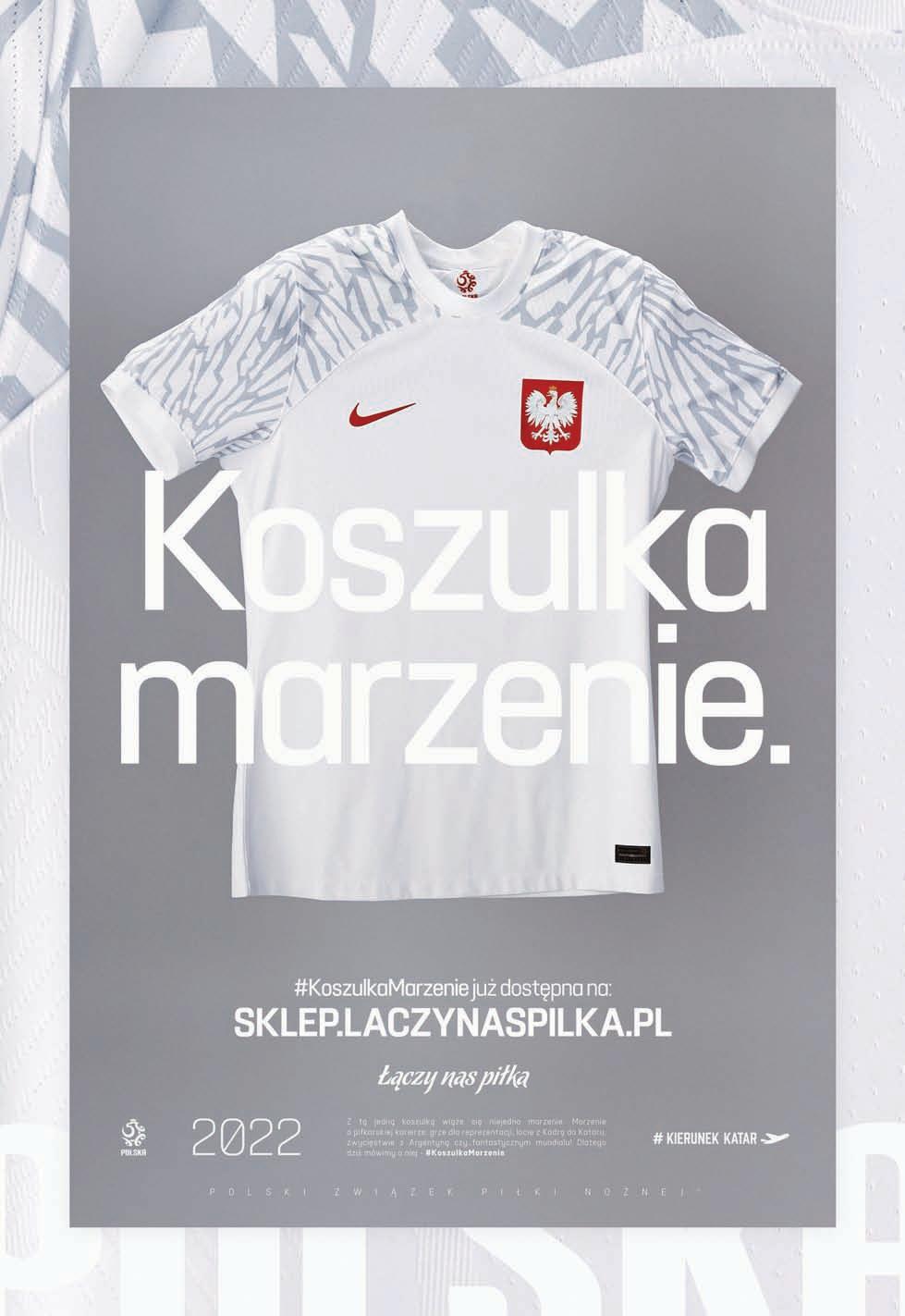
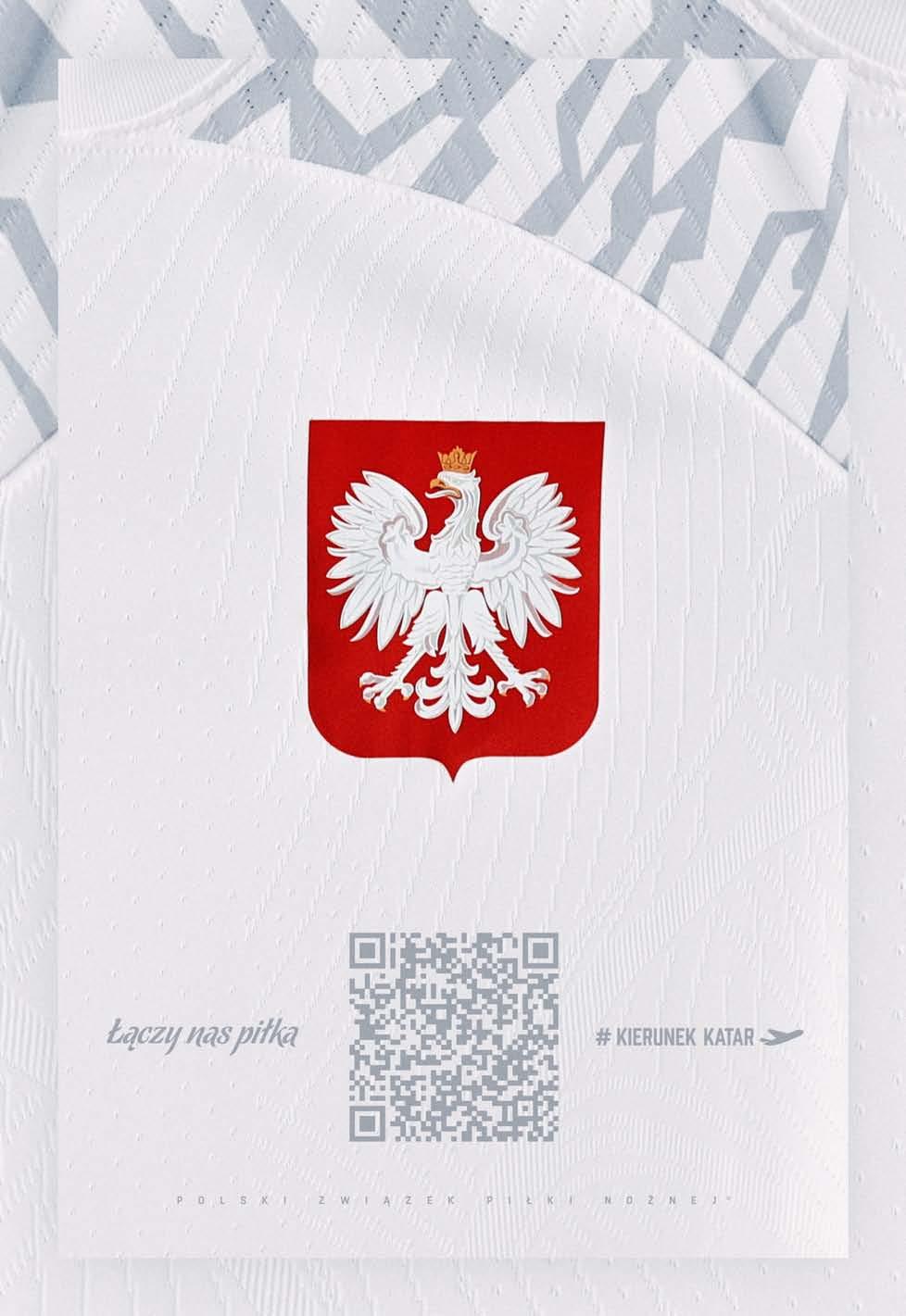













































































































 @Laczy nas pilka
@Laczy nas pilka













 @Laczy nas pilka
@Laczy nas pilka

 Michał Zachodny, Viaplay
Michał Zachodny, Viaplay
























 Szymon Tomasik
Szymon Tomasik














































 Marcin Polański
Marcin Polański






 Tomasz Szpunar
Tomasz Szpunar









